Nga My Sơn,峨眉山, Núi Nga Mi là một
trong bốn ngọn núi nổi tiếng ở phía tây huyện Nga Mi, thuộc tỉnh Tứ
Xuyên. Hai núi đối nhau như mày ngài (Tam Nga gồm Đại Nga, Trung Nga,
Tiểu Nga, chu vi khoảng 1000 dậm, gồm trên 40 thạch động lớn
nhỏ)—O-Mei-Shan, or Mount Omi, one of the four famous peaks in China,
in Omi district, Szech-Wan province. Two of its peaks are said to be
like a moth’s eyebrows.
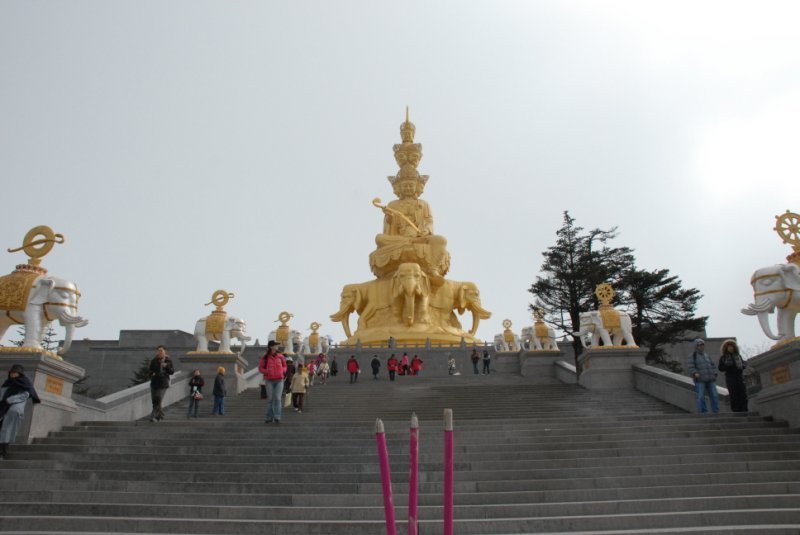
Nga Mi Tự: See Quang Tướng Tự.
Nga Thú Đăng Hỏa: Con người chạy theo dục vọng như những con thiêu
thân phóng mình vào ánh đèn vậy—Like a moth flying into the lamp, is
man after his pleasures.
Nga Vương,鵝王, Raja-hamsa (skt)
Nga vương được so sánh với Đức Phật, trong 32 tướng tốt của Phật là
tay chân mạn võng tướng hay có tướng lưới đan (giữa các ngón chân và
tay của Đức Phật có màng lưới đan liền giống như chân của loài ngỗng:
The king-goose, leader of the flight, i.e. Buddha, one of whose
thirty-two marks is webbed hands and feet.
Tướng đi uy nghi của Đức Phật giống như loài ngỗng: The walk of a
Buddha is dignified like that of the goose.
Nga Vương Biệt Nhũ,鵝王別乳, Trong một hợp
chất nước và sữa, thì vua của loài ngỗng có thể chỉ uống chất sữa, còn
bỏ nước lại, dùng hình ảnh nầy đề ví với vị Bồ Tát chỉ thấm nhuần chơn
lý Phật và bỏ đi những thứ tạp nhạp khác—A king-goose is reputed to be
able to absorb the milk from a mixture of milk and water, leaving the
water behind, so with a bodhisattva and truth
Nga Vương Nhãn,鵝王眼, Dùng hình ảnh vua
của loài ngỗng biết phân biệt sữa và nước, để ví với học giả có Pháp
Nhãn biết chọn lựa sáng suốt—The eye of the king-goose, distinguishing
milk from water, used for the eye of the truth-discerner
Ngã: Atta (p)—Atman (skt)—Ego—I—Me—Self—Myself.
Tôi—Của tôi—Cái của tôi—Cá nhân—Chủ tể của thân so với vị vua trị
vì trong một xứ—I, My, Mine—Personality—The master of the body,
compared to the ruler of the country.
Ngoại đạo cho rằng ngã là thân ta, còn đạo Phật thì cho rằng Giả
Ngã là sự hòa hợp của ngũ uẩn, chứ không có thực thể (vô thường, và vô
ngã)—The erroneous ideas of a permanent self continued in reincarnation
is the sources of all ilusion. Bụ the Nirvana sutra definitely asserts
a permanent ego in the transcendental world, above the range of
reincarnation; and the trend of Mahayana supports such permanence. Ego
composed of the five skandhas and hence not a permanent entity. It is
used for Atman, the self, personality. Buddhism take as a fundamental
dogma, i.e. impermanence, no permanent ego, only a temporal or
functional ego. The erroneous ida of a permanent self continued in
reincarnation is the souce of all illusion.
Ngã Ái,我愛, Yêu cái ta, yêu hay
chấp vào thực ngã, khởi lên với thức thứ tám—Self-love; the love of or
attachment to the ego, arising with the eighth vijnana
Ngã Ba La Mật,我波羅蜜, Ngã Ba La Mật là
một trong thứ được nói đến trong kinh Niết Bàn, là cái ngã siêu việt và
tự tại là thường, lạc, ngã, tịnh—The ego paramita in the four based on
the Nirvana sutra in which transcendental ego is sovereign, i.e. has a
real and permanent nature; the four are permanence, joy, personality,
and purity
Ngã (Nhân) Chấp: Atma-graha (skt)—Chấp vào khái niệm của một cái
ngã thật—Chấp vào Thường ngã—Chấp vào cái ngã thường hằng chứ không
phải là sự phối hợp của năm uẩn sanh bởi nhân duyên—Holding to the
concept of the reality of the ego—Permanent personality—The
atman—Soul—Self—This holding is an illusion—The clinging to the idea of
self—The false tenet of a soul, or ego, or permanent individual, that
the individual is real, the ego an independent unit and not a mere
combination of the five skandhas produced by cause and effect
disintegrating.
Ngã Đẳng Mạn,我等慢, Manatimana
(skt)—Ngã mạn cho rằng ta bằng những kẻ hơn ta, đây là một trong chín
loại ngã mạn—The pride of thinking oneself equal to those who surpass
us, one of the nine kinds of pride
Ngã Điên Đảo,我顚倒, Phiền não vì cho
rằng ngã là có thực—One of the four inverted or upside-down ideas, the
illusion that the ego is real—The illusion that the ego has real
existence
Ngã Đức,我德, Sức mạnh hay đức của
ngã được định nghĩa như là tự tại, khắc phục và giải thoát—Power or
virtue of the ego, the ego being defined as sovereign, master, free
Ngã Hữu,我有, Ảo tưởng cho rằng
cái ngã là có thật—The ilusion that the ego has real existence
Ngã Không,我空, The non-reality of
the atman, the soul, the person
Video Self and
Selflessness (Robert Thurman)
Chúng Sanh Không—The
emptiness of a self or egolessness—Nhân Không—Chúng sanh tuy hết thảy
đều có cái tâm thân do ngũ uẩn hòa hợp giả tạm mà thành, nhưng không có
cái thực thể thường nhất của mình, nên gọi là ngã không—Illusion of the
concept of the reality of the ego, man being composed of elements and
disintegrated when these are dissolved—See Vô Ngã
Ngã Không Chân Như,我空眞如, Giáo thuyết Tiểu
Thừa về “Ngã Không Chân Như.” Kỳ thật không có cái thực ngã—The
Hinayana doctrine of impersonality in the absolute, that in truth there
is no ego; this position abrogates moral responsibility
Ngã Kiến,我見, Thân Kiến—Tà kiến
cho rằng thân tứ đại do ngũ uẩn hợp thành mà cho là thực, là thường trụ
cố định—False view that every man has a permanent lord within—Wrong
view on the existence of a permanent ego—The erroneous doctrine that
the ego or self composed of the temporary five skandhas, is a reality
and permanent.
Ngã Liệt Mạn,我劣慢, Unamana (skt)—Sự
ngã mạn cho rằng ta không kém hơn kẻ hơn ta là bao, đây là một trong
cửu mạn—The pride of thinking myself not much inferior to those who far
surpass me, one of the nine kinds of pride
** For more information, please see Cửu Mạn.
Ngã Lòng: To lose courage—To lose heart—Discouraged—Disheartened.
Ngã Mạn,我慢, Asmimana
(p)—Abhimana or atma-mada (skt)
Sự kiêu hãnh của tự ngã: Self-superiority—Self-sufficiency—Pride of
self.
Cậy vào cái ta mà khinh mạn hay kiêu ngạo người khác: Exalting self
and depreciating others—Self-intoxication or pride of self.
Tính tự cao tự đại của cái ta: Ego-conceit—Egotism.
Ngã Mạn Cống Cao: Pride—The pride of thinking oneself is superior
to equals—Exalting self and depreciating others—Egotism or overweening
pride.
Ngã Mặn: See Khai Tố.
Ngã Ngã Sở,我我所, Tôi và cái của tôi
(thân ta và các sự vật ngoài thân ta nhưng thuộc về ta)—I and mine—The
self and its possession
Ngã Ngu,我愚, Sự ngu si của cái
ngã, hay sự chấp chặt vào ảo tưởng của một thực ngã—Ego ignorance,
holding to the illusion of the reality of the ego
Ngã Ngũ: Concluded—Settled.
Ngã Ngữ Thủ,我語取, Ngôn ngữ của kẻ mê
chấp đủ loại ngã kiến, gọi là ngã ngữ thủ, là một trong tứ thủ—The
attachment to doctrines or statements about the ego, one of the four
kinds of attchment
** For more information, please see Tứ Thủ.
Ngã Nhân Tứ Tướng: Bốn tướng ngã nhân—Four ejects of the ego in the
Diamond sutra (Kinh Kim Cang):
Ngã tướng: The appearance of ego—Nơi ngũ uẩn mà ảo chấp là có thực
ngã nên sanh lòng khinh khi người nghèo, kẻ ngu—The illusion that in
the five skandhas there is a real ego; thus creating the idea of
looking down on the poor, stupid and deluded.
Nhân tướng: Human appearance—Chấp cái ngã là người khác hay đạo
khác—The ego of a man or that this ego is a man and different from
beings of the other paths—Man is different from other organisms.
Chúng sanh tướng: Living beings appearance—Chấp ngã đưa vào ngũ uẩn
mà sanh—The ego of all beings, that all beings have an ego born of the
five skandhas—All the living are produced by the skandhas.
Thọ giả tướng: The appearance of longevity—Chấp thọ mệnh một thời
của cái ngã, từ đó sanh ra chấp trước vào tướng sự và ao ước phúc
lợi—Life is limited to the organism—The ego has age, i.e. a determined
or fated period of existence, thus creating the idea of attaching all
appearances and desiring for welfare and profit.
Ngã Pháp,我法, Ngã và pháp—The self
or ego and things
Ngã Pháp Câu
Hữu Tông,我法倶有宗,
Độc Tử Bộ—Ngã Pháp Câu Hữu Tông là một tông phái Tiểu Thừa cho rằng ngã
và pháp đều có thật—The school that regards the ego and things as real,
the Vatsiputriya school
Ngã Quỷ: See Ngạ Quỷ.
Ngã Si,我痴, Ego-infactuation,
confused by the belief in the reality of the ego
Ngã Sở,我所, Attaniya or Atmaniya
(p)—Atmiya (skt)—Cái thuộc về của tôi hay cái do ta sở
hữu—Mine—Belonging to oneself
Ngã Sở, Ngã Sở Hữu, Ngã Sở Sự:
Ngã Sở,我所, Cái ta có—Mine
Ngã Sỡ Hữu: Personal—Subjective.
Ngã Sở Sự: Personal conditions, possessions, or anything related to
the self.
Ngã Sở Kiến,我所見, Tà kiến cho rằng
sự vật thuộc về ta, vì sự vật chỉ là giả hợp chứ không có thật—The
incorrect view that anything is really mine, for all things are but
temporal combinations.
Ngã Sở Tâm,我所心, Tâm nghĩ rằng nó
là chủ của vạn hữu—The mind that thinks it is owner of things
Ngã Sự,我事,
Thân tôi: My body.
Chính tôi: Myself.
Công việc của tôi: My affairs.
Ngã Thắng Mạn,我勝慢, Adhimana (skt)—Ngã
mạn cho rằng ta hơn những kẻ ngang hàng với ta—The pride of thinking
onself superior to equals, one of the nine kinds of pride
** For more information, please see Cửu Mạn.
Ngã Thất,我室, “Ngã” chính là nhà
chứa đựng những khổ đau phiền não—The ego as the abode of all suffering
Ngã Thức: Atman-vijnana (skt)—I-consciousness.
Ngã Tướng: Egoism—Ý niệm cho rằng có thực ngã hay bất cứ ai tin
rằng có thực ngã—The concept of the ego as real or anyone who believes
in a real ego.
Ngã Tưởng,我想, Tưởng nghĩ đến tự
ngã vì cho rằng tự ngã là có thực—Thought of self—The thought that the
ego has reality
Ngã Xuống: To collapse
Ngạ: Đói—Hungry—Famished—Starving.
Ngạ Quỷ,餓鬼, Pretas (skt)—Tiếng
Phạn âm là Tiết Lệ Đa, dịch là quỷ đói. Ngạ quỷ là một trong ba đường
ác. Ngạ quỷ là loại quỷ miệng như cây kim nhỏ, đến độ không thể ăn
uống. Ngạ quỷ có nhiều loại và tùy theo quả báo mà thọ khổ khác nhau.
Người có chút phúc đức thì chịu khổ ít, người khác ít phúc đức hơn thì
không được ăn uống lại phải chịu cực hình liên tục; có kẻ được làm chúa
ngục cho Diêm Vương, lại có kẻ phải lang thang trong chốn nhân gian,
nhứt là lúc về đêm. Theo Tỳ Kheo Khantipalo trong Đạo Phật Được Giải
Thích, ngạ là luôn luôn cảm nhận những khát ái không bao giờ thỏa mãn,
và trong nấc thang tâm thức, ngạ quỷ là loài chúng sanh ở dưới con
người. Chúng sanh đi về cảnh giới ngạ quỷ do bởi lòng tham. Hãy nghĩ
đến những người cứ bám chặt vào tiền tài, vào những sở hữu vật chất.
Những người hà tiện, những người thích thú trong sự thủ đắc các thứ
nhiều hơn, tốt hơn, lớn hơn so với người khác; những người như thế đang
triển khai các yếu tố tâm thức mà nếu họ chấp chặt vào đó thì chúng sẽ
dẫn họ thác sanh vào loài ngạ quỷ—Hungry spirits, one of the three
lower destinies. They are also called needle-mouth ghosts, with mouths
so small that they cannot satisfy their hunger or thirst. They are of
varied classes, and are in differing degrees and kinds of suffering,
some wealthy and light torment, others possessing nothing and in
perpetual torment; some are jailers and executioners of Yama in the
hells, others wander to and fro amongst men, especially at night.
According to Bikkhu Khantipalo, “Hungry” means experiencing constantly
unsatisfied cravings, and preta is a kind of being which is below man
in the spiritual scale. With greed, sentient beings some to the state
of pretas. Think of peopl whose attachments to money and material
possessions are very strong. The misers of this world are those who
rejoice in having more, better and bigger things than other people.Such
people are developing factors of mind which if they persist in them,
will lead them to uprise among these hungry ghosts.
Ngạ Quỷ Ái,餓鬼愛, Một trong hai loại
ái, hạng phàm phu ái trước ngũ dục như sự ham muốn của loài quỷ
đói—Desire as eager as that of a hungry ghost, one of the two kinds of
love
** For more information, please see Nhị Ái.
Ngạ Quỷ Đạo,餓鬼道, Con đường của ngạ
quỷ hay của những kẻ có nghiệp nhân ngạ quỷ, một trong lục đạo (địa
ngục, ngạ quỷ, súc sanh, a tu la, nhân và thiên)—The destiny of the
hungry ghosts, one of the six paths.
Ngạ Quỷ Giới: Thế giới của loài ngạ quỷ, một trong thập giới—The
realm of hungry ghosts, one of the ten realms or states of existence.
Ngạ Quỷ Thành: Thành trì của loài ngạ quỷ—The city or region of the
hungry ghosts—See Ngạ Quỷ Giới.
Ngạ Quỷ Thú,餓鬼趣, See Ngạ Quỷ Đạo
Ngạc Ngư,鰐魚, Cá sấu—An alligator.
Ngạch Thượng Châu,額上珠, Hạt châu kim cương
trên trán, ý nói mọi người đều có Phật tánh—The pearl on the forehead,
e.g. the Buddha-nature in every one
Ngại:
Chướng ngại: Hindrance—A stumbling-block.
Lo ngại: Hesitant—Worried.
Ngại Ngùng: To hesitate.
Ngán: To be sick of (disgusted).
Ngạn Đạt Phược,彥達縛, Còn gọi là Càn
Thát Bà—See Gandharva in Sanskrit/Pali-Vietnamese Section
Ngạn Đầu,岸頭, Bờ biển khổ—The
shore of the ocean of suffering
Ngạn Thọ: Cây mọc bên bờ sông, nói về sự sống không chắc chắn—A
tree on a river’s brink, life’s uncertainty.
Ngạn Tông,彥琮, Sư Ngạn Tông, người
gốc miền bắc Trung Quốc. Ông là một dịch giả và cũng là một nhà trước
tác nổi tiếng vào khoảng 557-610 sau Tây Lịch—Yen-T’sung, a famous
monk, native of Northern China, a translator and writer, about 557-610
A.D.
Chất Trực,質直,
Sincere—Honest—Candid.
Ngày Phật Thích Ca Xuất Gia: Ngày Đức Phật Thích Ca xuất gia là
ngày mồng tám tháng hai âm lịch—Sakyamuni Buddha’s Leaving Home Day,
the 8th day of the second month Lunar calendar.
Chế Chỉ,制止, See Ngăn ngừa
Ngâm Phúng,吟諷, Ngâm Vịnh—To
intone—To repeat
Ngâm Vịnh,吟詠, See Ngâm Phúng
Ngân Sắc,銀色, Màu
bạc—Silver-colour
Ngật Khí La: Khakkhara (skt)—Cây gậy của vị sư trụ trì—A beggar’s
staff—An abbot’s staff.
Ngật Tố: Ăn chay—To eat vegetarian food.
Ngẫu Tượng,偶像, An idol—An image
Ngoại Điển: Giáo điển thế gian—Ordinary scriptures—Non-Buddhist
scriptures. .
Ngoại Giáo: Non-Buddhist cults, in contrast with Buddhism.
Ngoại Phàm,外凡, See Phàm Phu (2) (b)
Sở Văn,所聞, To hear
Văn Pháp,聞法, Listen to the
Dharma—If we listen to the Dharma teaching but don’t practice it, we
are like a spoon in a pot of soup. Every day, the spoon is in the pot
but it never knows the taste of the soup—Nếu chúng ta chỉ nghe Pháp mà
không thực hành Pháp, chúng ta cũng như cái muỗng trong nồi canh. Hằng
ngày, cái muỗng ở trong nồi canh, nhưng nó không bao giờ biết được vị
của canh. Vì thế cho nên chúng ta phải quán sát và hành thiền mỗi ngày
Bần Cùng,貧窮, Needy
Nghênh Tiếp,迎接, Được Đức Phật A Di
Đà nghênh tiếp về Tây Phương Cực Lạc—To receive—To be received by
Amitabha into his Paradise.
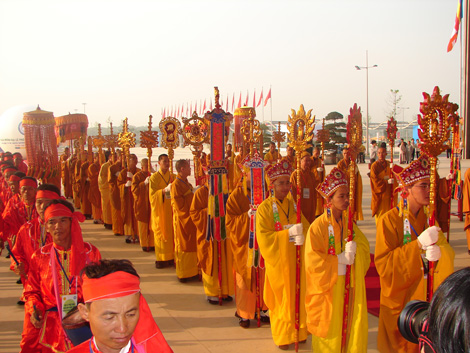
Nghi Cái,疑蓋, Tánh hay nghi hoặc
che lấp mất tâm thức, khiến không thấy được chân lý, không thực hành
được thiện nghiệp, đây là một trong năm triền cái—The overhanging cover
of doubt, which prevents sentient beings from seeing and practicing
good deeds, one of the five covers or mental and moral hindrances
Nghi Chấp,疑執, The holding to doubt
Nghi Hoặc,疑惑,
Doubtful—Suspicious—Uncertain—Doubt and delusion.
Nghi Hoặc Thô Thiển: Gross doubt.
Nghi Hoặc Vi Tế: Subtle doubt.
Nghi Hối,疑悔, To repent of doubt
Nghi Kết,疑結, Do nghi ngờ lý chân
đế, gây vô số vọng nghiệp, nên bị trói buộc vào tam giới không thoát ra
được—The bondage of doubt
Nghi Kiến,疑見, Sự nghi ngờ chân lý
Phật pháp gọi là nghi kiến, một trong thập tà kiến—Doubtful
views—Doubtfully to view, one of the ten wrong views
Hồ Nghi,狐疑, To doubt—To suspect
Nghi Ngút: To emit thick smoke.
Nghi Sử: Bị nghi hoặc sai khiến mà lưu chuyển trong tam giới—The
messenger, tempter, or lictor, of doubt.
Nghi Tâm,疑心, Cái tâm luôn nghi
hoặc—Suspicious or dublious mind—A doubting heart
Nghi Thành Thai Cung: Vùng biên địa quốc độ của Đức Phật A Di Đà có
một tòa cung điện gọi là “Nghi Thành Thai Cung,” nơi trú ngụ của những
người đã vãng sanh mà trong lòng còn nghi ngờ Đức A Di Đà. Họ sẽ ở đây
500 năm mà không nghe thấy Tam Bảo—The palace womb for doubters outside
Amitabha’s heaven, or those who call on him but are in doubt of him
(where all doubters of Amitabha) are confined for 500 years until fit
to enjoy his paradise (born into the Pure Land).
Nghi Thích: Cái gai hay chướng ngại của nghi hoặc—The thorn of
doubt.
Nghi Thức,儀式, Mode—Style—Manner
Nghi Tình Và Đại Ngộ: Inquiring spirit and great enlightenment.
Nghĩa Đà La Ni,義陀羅尼, Năng lực tổng
trì không để mất chân thực nghĩa của Như Lai, đây là hạnh tu của Bồ Tát
là giữ được tất cả những gì mà các ngài nghe—Truth dharani, the power
of bodhisattvas to retain all truth they hears
Nghĩa Kinh: The meaning of the sutras.
Nghĩa Lệ,義例,
Ý nghĩa và luật lệ: Meaning and rules, or method.
Tên tắt của chỉ quán: An abbreviation for “Samatha and
Vipasyana”—See Chỉ Quán.
Nghĩa Lý,義理, Sense—Meaning
Nghĩa Môn,義門, Cổng vào Chánh
Nghĩa, hay những trường phái giảng giải chân thực nghĩa của Như Lai—The
gate of righteousness; the schools, or sects of the meaning or truth of
Buddhism
Nghĩa Sâu Rộng: A deep and wide meaning—Liberal sense.
Nghĩa Sĩ,義士, Righteous man
Nghĩa Sớ,義疏, Meaning and comments
on or explanations
Nghĩa Thú,義趣, Con đường chánh
đạo—The path of truth, the right direction, or objective
Nghĩa Thuật: See Nghĩa Vệ.
Nghĩa Tướng: Nghĩa lý và tướng trạng—Meaning and form, truth and
its aspect.
Nghĩa Vệ: Thuật để cứu đàn kiến (tại một nơi ngập nước, đàn kiến bị
nước cuốn trôi, có người lấy cành cây bắc ngang qua cho chúng bò
lên)—The duty and mode of saving lives of ants.
Nghĩa Vô Ngại,義無礙, Hiểu biết thông
đạt và giảng giải nghĩa lý chư pháp một cách trôi chảy không trở ngại,
một trong tứ vô ngại của chư Bồ Tát—Unonstructed knowledge of the
meaning, or the truth; complete knowledge, one of the four unobstructed
eloquences of Bodhisattvas
Nghĩa Ý,義意, Meaning and aim
Nghịch: Vama (skt)—Chống lại hay đối nghịch lại—To go
against—Opposite—Contrary—Resist—In the opposite direction.
Nghịch Báng,逆謗, Chống báng lại—To
resist and abuse
Nghịch Cảnh: Adverse circumstances—Adversity.
Nghịch Dụ,逆喩, Phép dẫn dụ đi ngược
lại từ quả trở về nhân, từ ngọn về gốc, thí dụ như biển có nguồn là
sông to, sông to có nguồn là sông nhỏ, sông nhỏ có nguồn là suối, vân
vân—Argument by illustration from effect to cause, e.g. the source of
the ocean is the river, of the river the streams, of the small rivers
the streams, etc
Nghịch Duyên,逆緣, Bất thuận duyên, đối
lại với thuận duyên; thiện với Phật quả là thuận duyên, ác là nghịch
duyên (thuận với đường lối đạo Phật là thuận duyên, ngược với đường lối
đạo Phật là nghịch duyên)—Resisting accessory cause, in contrast with
the accordant cause (thuận duyên); as goodness is the accordant cause
so evil is the resisting cause of the Buddha way
Nghịch Đức: Contrary to virtue.
Nghịch Hóa,逆化, Khả năng của chư
Phật và chư Bồ Tát, giáo hóa những kẻ theo tà giáo hay những người đối
địch với mình—The ability of the Buddhas and bodhisattvas to convert
the heterodox or opponents
Nghịch Lộ Già Da
Đà,逆路伽耶陀,
Vama-lokayata (skt)—Lộ Già Da Đà là tên của một phái ngoại đạo thuận
theo tình đời. Nghịch Lộ Già Da Đà hay Tả Thuận Thế Ngoại Đạo, là phái
chống lại thuận thế ngoại đạo. Lộ Già Da Đà hay Thuận Thế là hạng vứt
bỏ Thánh thư của Lão Trang—The Lokayata were materialistic and
“worldly” followers of Carvaka school; the Vama-lokayata were opposed
to the conventions of the world. An earlier interpretation of Lokayata
is, Ill response to questions, the sophistical method of Chuang-Tsu
being mentioned as Evil questioning, which is above method reversed.
Nghịch Luân: Contrary to morality—Immoral.
Nghịch Lưu,逆流,
Tìm đường giải thoát khỏi những phiền trược bằng cách đi ngược lại
dòng đời—To resist it and seek a way of escape by getting rid of life’s
delusions.
Đi ngược lại dòng sanh tử luân hồi và nhập vào đạo quả Niết Bàn,
giai đoạn Thanh Văn hay thứ nhất của A La Hán: To go against the
current (the stream of transmigration and enter the path of nirvana),
the first stage of the arhat, that of a sravaka.
Nghịch Quán: Làm ngược lại với thứ tự hay phương thức quán là
nghich quán (thí dụ như quán thập nhị nhân duyên thì không nương theo
thứ tự vô minh, hành, thức, vân vân; mà lại đi ngược từ tử, lão, bệnh,
sanh, hữu, vân vân; hay là theo quả mà dò nhân)—The inverse method in
meditation.
Nghịch Thuận,逆順, Còn gọi là “Vi
Thuận.” Trái ngược với chân lý gọi là nghịch, thuận với chân lý là
thuận—The adversaties, resisting and complying, opposing and according
with, reverse or direct, backward or forward.
Nghịch Tu,逆修, Dự Tu—Những Phật sự
sau khi một người đã quá vãng—To observe in contrary order; to observe
before death the Buddhist rites in preparation for it
Nghiêm Đường Huấn Nữ Thập Giáo: Trong Đức Phật và Phật Pháp, Đức
Phật đã từng dạy rằng ngoài của hồi môn rất quan trọng, và những món
trang sức quý giá, người cha khôn ngoan còn dạy con gái mười điều sau
đây—In The Buddha and His Teaching, the Buddha taught: “The marriage
festival was conducted on an elaborate scale. On the wedding day, in
addition to a large dowry and an exquisitely rich ornament, a wise
father should also gave his daughter the following ten admonitions:
Nghiêm Sức,嚴飾, Alamkaraka
(skt)—Trang nghiêm—Gloriously adorned
Nghiêm Tịnh,嚴淨, Trang nghiêm thanh
tịnh—Glorious and pure, gloriously pure
Nghiêm Trang: Solemn—Serious—Severe—Grave.
Nghiêm Từ: Parents.
Nghiêm Vương,嚴王, See Diệu Trang
Nghiêm Vương in Vietnamese-English Section
Nghiệm Sanh
Nhân Trung,
驗生人中,
Xem xét coi một người sau khi chết sẽ tái sanh vào cảnh giới nhân,
Thiên, hay địa ngục, ngạ quỷ, súc sanh—An inquiry into a the mode of a
person’s death, to judge whether he will be eborn as a man, deva, and
so on with the other possible destinies such as hells, hungry ghosts,
animals.
Nghiệp: Karma (skt)—Kamma (p)
Ý nghĩa của Nghiệp—The meanings of Karma: Nghiệp là một trong các
giáo lý căn bản của Phật giáo. Mọi việc khổ vui, ngọt bùi trong hiện
tại của chúng ta đều do nghiệp của quá khứ và hiện tại chi phối. Hễ
nghiệp lành thì được vui, nghiệp ác thì chịu khổ. Vậy nghiệp là gì?
Nghiệp theo chữ Phạn là ‘karma’ có nghĩa là hành động và phản ứng, quá
trình liên tục của nhân và quả. Luân lý hay hành động tốt xấu (tuy
nhiên, từ ‘nghiệp’ luôn được hiểu theo nghĩa tật xấu của tâm hay là kết
quả của hành động sai lầm trong quá khứ) xảy ra trong lúc sống, gây nên
những quả báo tương ứng trong tương lai. Cuộc sống hiện tại của chúng
ta là kết quả tạo nên bởi hành động và tư tưởng của chúng ta trong tiền
kiếp. Đời sống và hoàn cảnh hiện tại của chúng ta là sản phẩm của ý
nghĩ và hành động của chúng ta trong quá khứ, và cũng thế các hành vi
của chúng ta đời nay, sẽ hình thành cách hiện hữu của chúng ta trong
tương lai. Nghiệp có thể được gây tạo bởi thân, khẩu, hay ý; nghiệp có
thể thiện, bất thiện, hay trung tính (không thiện không ác). Tất cả mọi
loại nghiệp đều được chất chứa bởi A Lại Da và Mạt Na thức. Chúng sanh
đã lên xuống tử sanh trong vô lượng kiếp nên nghiệp cũng vô biên vô
lượng. Dù là loại nghiệp gì, không sớm thì muộn, đều sẽ có quả báo đi
theo. Không một ai trên đời nầy có thể trốn chạy được quả báo—Karma is
one of the fundamental doctrines of Buddhism. Everything that we
encounter in this life, good or bad, sweet or bitter, is a result of
what we did in the past or from what we have done recently in this
life. Good karma produces happiness; bad karma produces pain and
suffering. So, what is karma? Karma is a Sanskrit word, literally means
a deed or an action and a reaction, the continuing process of cause and
effect. Moral or any good or bad action (however, the word ‘karma’ is
usually used in the sense of evil bent or mind resulting from past
wrongful actions) taken while living which causes corresponding future
retribution, either good or evil transmigration (action and reaction,
the continuing process of cause and effect)—Our present life is formed
and created through our actions and thoughts in our previous lives. Our
present life and circumstances are the product of our past thoughts and
actions, and in the same way our deeds in this life will fashion our
future mode of existence. A karma can by created by body, speech, or
mind. There are good karma, evil karma, and indifferent karma. All
kinds of karma are accumulated by the Alayavijnana and Manas. Karma can
be cultivated through religious practice (good), and uncultivated. For
Sentient being has lived through inumerable reincarnations, each has
boundless karma. Whatever kind of karma is, a result would be followed
accordingly, sooner or later. No one can escape the result of his own
karma.
Nghiệp và Quả Báo—Karmas and Recompenses:
Phân Loại Nghiệp—Categories of karma:
Nhị Nghiệp,二業, Two kinds of
karma—Có hai loại nghiệp hoặc tốt hoặc xấu, hoặc cố ý hoặc không cố
ý—There are two kinds of karma: One is good and the other is bad karma
or intentional and unintentional karma—See Nhị Chủng Nghiệp
Tam Nghiệp,三業, Three kinds of
karma—Có nhiều loại nghiệp, nhưng đại để có ba loại: thân nghiệp, khẩu
nghiệp và ý nghiệp—Three types of karmas: body karma, speech karma, and
mental karma—See Tam Nghiệp, and Tam Báo
Tứ Nghiệp,四業, Four kinds of
karma—See Bốn Loại Nghiệp
Lục Nghiệp: Six kinds of karma—See Lục Đạo.
Thập Nghiệp: Thập ác và thập thiện—Ten evil actions and/or ten
paths of good action—See Thập Ác, and Thập Thiện Nghiệp in
Vietnamese-English Section.
Nghiệp Ách,業厄, Những tai ách đời
nầy là hậu quả của nghiệp gây tạo trong đời trước—The constraints of
karma; i.e. restricted conditions now as resulting from previous life
Nghiệp Ảnh: Nghiệp như bóng theo sát hình—Karma-shadow, karma
dogging one’s steps like a shadow.
Nghiệp Báo,業報, Quả báo sướng khổ
tương ứng với thiện ác nghiệp—Karma-reward; the retribution of karma
(good or evil)
Video
Phuong Phap Chuyen Nghiep (Thich Nhat Tu)
Nghiệp Báo Thân,業報身, Theo tông Hoa
Nghiêm, chư Bồ Tát vì thương sót chúng sanh mà hiện ra thân cảm thụ hay
nghiệp báo thân, giống như thân của chúng sanh để cứu độ họ—According
to the Hua-Yen sect, the body of karmaic retribution, especially that
assumed by a bodhisattva to accord with the conditions of those he
seeks to save
Nghiệp Bất Thiện: Unwholesome kamma—See Bất Thiện Nghiệp.
Nghiệp Bịnh: Bệnh nghiệp hay bệnh gây ra do nghiệp của nhiều đời
trước—Illness as the result of previous karma.
Nghiệp Bộ,業簿, Bộ sổ ghi nghiệp của
chúng sanh được giữ bởi những vị “Cai Quản Nhân Quả” hay Minh Quan
trong địa ngục—The record or account book, believed to be kept by the
rulers of “Cause and Effect” or the rulers of Hades who record the
deeds of all sentient beings
Nghiệp Cảm,業感, Sự cảm ứng hay ảnh
hưởng của nghiệp (tùy thuộc vào nghiệp nhân thiện hay ác mà cảm thọ lạc
hay khổ)—The influence of karma; caused by karma
Nghiệp Cảm Duyên Khởi: See Duyên Khởi (I) (1).
Nghiệp Cảnh: Karma-mirror.
Nghiệp Cận Tử: Asanna (p)—Death-proximate karma—Theo A Tỳ Đạt Ma
Luận (Vi Diệu Pháp), cận tử nghiệp là điều gì mà ta làm hay nghĩ đến
liền trước lúc lâm chung. Nếu một người xấu mà nhớ lại hoặc được làm
một việc thiện trước lúc lâm chung, có thể nhờ đó mà người ấy được tái
sanh vào cảnh giới tốt (may mắn) hơn; ngược lại, nếu một người tốt mà
trước khi lâm chung lại nhớ đến một hành động bất thiện của mình, người
ấy có thể tái sanh vào một trạng thái bất hạnh. Chính vì lý do quyết
định tái sanh đó mà các xứ Phật Giáo có phong tục nhắc nhở người sắp
chết những hành động lành người ấy đã làm trong đời, và tạo cơ hội cho
người ấy tạo thiện nghiệp trước phút lâm chung. Khi không có trọng
nghiệp, và nghiệp cận tử được thành lập, thì nghiệp cận tử sẽ giữ vai
trò chính trong việc tái sanh. Điều nầy không có nghĩa là người ấy sẽ
trốn thoát được những nghiệp thiện ác đã tạo ra trong đời. Khi gặp điều
kiện thì những nghiệp thiện ác sẽ trổ quả tương xứng—According to the
Abhidharma, death-proximate karma is an action, or a potent karma
remembered or done shortly before death (dying moment), that is,
immediately prior to the last javana process. If a person of bad
character remembers a good deed he has done, or performs a good deed
just before dying, he may receive a fortunate rebirth; and conversely,
if a good person dwells on an evil deed done earlier, or performs an
evil deed just before dying, he may undergo an unhappy rebirth. For
this reason, or its significant in determining the future birth, in
Buddhist countries it is customary to remind a dying person of his good
deeds or to urge him to arouse good thoughts during the last moment of
his life. When there is no weighty karma, and a potent death-proximate
karma is performed, this karma will generally takes on the role of
generating rebirth. This does not mean that a person will espcape the
fruits of the other good and bad deeds he has committed during the
course of life. When they meet with conditions, these karmas too will
produce their due results.
Nghiệp Cấu: Sự uế nhiễm của nghiệp—Karma defilement.
Nghiệp Chủ: Property owner.
Nghiệp Chủng,業種, Karmabija
(skt)—Nghiệp sanh ra quả khổ lạc trong luân hồi sanh tử, giống như hạt
giống thế gian—Karma-seed which springs up in happy or in suffering
rebirth.
Nghiệp Chủng Tử: Karma-bija (skt)—Karma-seed—See Nghiệp Chủng.
Nghiệp Chướng,業障, Karmavarana
(skt)—Những chướng ngại và ngăn trở do ác nghiệp gây ra làm ngăn cản bồ
đề (ác nghiệp ngăn cản chánh đạo)—The screen or hindrance of past karma
which hinders the attainment of bodhi (hindrance to the attainment of
Bodhi, which rises from the past karma).
Nghiệp Chướng Trừ,業障除, Dấu hiệu đoạn trừ
nghiệp chướng bằng lưỡi kiếm trí tuệ—A symbol indicating the cutting
away of all karmaic hindrances by the sword of wisdom
Nghiệp Cố Ý: Karma-vipaka (skt)—Nghiệp gây tạo bởi sự cố ý, đối lại
với nghiệp vô tình—Intentional karma, in contrast with unintentional
karma (karma-phala).
Nghiệp Duyên,業緣, Nhân duyên đem lại
hậu quả từ nơi nghiệp (thiện nghiệp là nhân duyên mang lại lạc quả, ác
nghiệp là nhân duyên mang lại khổ quả)—Karma-cause, karma circumstance,
condition resulting from karma
Nghiệp Dư,業餘, Một trong tam dư,
chúng sanh tu hành (hạng nhị thừa) sau khi đã lìa khỏi sinh tử hay hữu
lậu nghiệp, vẫn còn lại vô lậu nghiệp có thể làm biến dịch sinh tử bên
ngoài ba cõi—A remnant of karma after the six paths of existence, one
of the three after death remainders
** For more information, please see Tam Dư.
Nghiệp Đạo,業道, Một trong tam đạo mà
tất cả chúng sanh phải dẫm lên, việc xảy ra dù thiện hay dù ác đều dẫn
chúng sanh đi trong ba nẻo sáu đường—The way of karma; the path of
works, action or doing, either good or bad, productive of karma, one of
the three paths all have to tread on
Nghiệp Đạo Thần,業道神, Vị Thần quan sát
những nghiệp gây tạo của chúng sanh—The gods who watch over men’s deeds
Nghiệp Điền,業田, Khu ruộng nghiệp,
hay cuộc sống mà trong đó những chủng tử được gieo tạo cho những kiếp
lai sanh—The field of karma; the life in which the seeds of future
harvests are sown.
Nghiệp Hải,業海, Ác nghiệp thì nhiều
vô số như đại dương sâu rộng—The vast, deep ocean of evil karma
Nghiệp Hành: Những hành động ảnh hưởng đến sự tái sanh trong tương
lai—Deeds, actions; karma deeds, moral action which influences future
rebirth.
Nghiệp Hệ,業繫, Hệ phược hay sự trói
buộc của nghiệp—Karma-bonds; karma-fetter
Video Chuyen Hoa
Troi Buoc (Thich Nhat Tu)
Nghiệp Hệ Khổ Tướng: Trạng thái khổ gây nên bởi sự trói buộc của
nghiệp—The suffering state of karma bondage.
Nghiệp Hỏa,業火, Lửa dữ của ác nghiệp
hay lửa của địa ngục—The fires of evil karma; the fire of the hells
Nghiệp Hoặc: Nghiệp gây ra bởi lòng nghi hoặc—The karma caused by
doubt.
Nghiệp Hữu,業有, Reality of karma—See
Thất Chủng Hữu
Nghiệp Kết,業結,
Sự kết trói của nghiệp: The bond of karma.
Nghiệp và sự kết trói của dục vọng: Karma and the bond (of the
passion).
Nghiệp Khổ,業苦, Thọ quả khổ do tác
ác nghiệp (tạo tác ác nghiệp, nương vào ác nghiệp mà đắc quả
khổ)—Karmaic suffering
Nghiệp Kim Cang: Karmavajra.
Nghiệp Kính,業鏡, Tấm gương nghiệp,
cõi u minh dùng để soi thiện ác nghiệp của chúng sanh—Karma-mirror,
that kept in Hades reveals all karma
Nghiệp Luân,業輪, Bánh xe nghiệp có
luân chuyển chúng sanh luân hồi trong sáu nẻo—The wheel of karma which
turns men into the six paths of transmigration
Nghiệp Lực,業力
Video
Nhan Qua Khong Sai (Thich Nhat Tu)
Nghiệp lực là sức
mạnh của nghiệp tạo ra quả lạc khổ (sức mạnh của thiện nghiệp sinh ra
lạc quả, sức mạnh của ác nghiệp gây ra khổ quả). Nghiệp lực ví như
người chủ nợ. Có nhiều thứ chủ nợ mạnh yếu khác nhau lôi kéo, nên khi
lâm chung thì thần thức của chúng ta bị chủ nợ nào mạnh nhứt lôi kéo
trước tiên—The power of karma is the strength of karma which produces
good or evil fruit. Karmic power is the strength of karma. It is
similar to a debt collector. There are many different strong and weak
debt collectors. When we die, our consciousness will be taken by the
strongest and greatest debt collector
Nghiệp Lực Không Kiêng Nể Một Ai, Dù Tài Trí Hay Đần Độn: The power
of karma respect nobody, the talented or the dull.
Nghiệp Ma,業魔, Karma-maras (skt)—Ma
hay ác nghiệp luôn theo chúng sanh quấy rối và ngăn cản việc tu hành và
làm hại thiện đạo—The demons who or the karma which hinders and harms
goodness.
Nghiệp Não,業惱,
Sự phiền não gây ra bởi nghiệp: Karmaic distress.
Nghiệp và sự phiền não (cái nầy là nhân của cái kia, cái kia là quả
của cái nầy): Karma and distress (one is the cause of another, and vice
versa).
Nghiệp Nặng Tu Vụng: Heavy karma, perfunctory practice.
Nghiệp Ngăn Trở: Upapilaka (p)—Obstructive karma—Theo A Tỳ Đạt Ma
Luận (Vi Diệu Pháp), nghiệp ngăn trở không có quả thiện ác của chính
nó, nhưng có thể ngăn cản hay làm chậm trễ sự trổ quả của các nghiệp
khác—According to the Abhidharma, an obstructive karma is a karma which
cannot produce its own result (wholesome or unwholesome), but
nevertheless obstructs, frustrates, or delays some other karma from
producing results, countering its efficacy or shortening the duration
of its pleasant or painful results.
Cho dù nghiệp tái tạo có cường thịnh vào lúc thành lập, mà bị
nghiệp ngăn trở trực tiếp đối lại, sẽ làm cho nghiệp tái tạo trở nên vô
hiệu quả—Even though a productive karma may be strong at a time it is
accumulated, an obstructive karma directly opposed to it may conteract
it so that it becomes impaired when producing its results.
Tỷ như một nghiệp tái tạo thiện có khuynh hướng đưa chúng sanh tái
sanh vào cõi cao hơn, có thể bị nghiệp ngăn trở đưa vào tái sanh nơi
cõi thấp hơn—For example a wholesome karma tending to produce rebirth
in a superior plane of existence may be impeded by an obstructive karma
so that it generates rebirth in a lower plane.
Nghiệp tái tạo tốt có khuynh hướng đưa chúng sanh tái sanh vào
những gia đình cao sang, có thể bị nghiệp ngăn trở làm cho tái sanh vào
những gia đình hạ tiện—A wholesome productive karma tends to produce
rebirth among high families may be impeded by an obstructive karma,
therefore, it may produce rebirth among low families
Nghiệp tái tạo tốt có khuynh hướng mang lại trường thọ cho chúng
sanh, lại bị nghiệp ngăn trở làm cho đoản thọ—A wholesome productive
karma tends to produce longevity may be impeded by an obstructive
karma, therefore life may become shortened.
Nghiệp tái tạo tốt có khuynh hướng mang lại sắc diện đẹp đẽ, có thể
bị nghiệp ngăn trở làm cho dung mạo trở nên tầm thường—A wholesome
productive karma tends to produce beauty may be impeded by an
obstructive karma, therefore it may produce a plain appearance.
Nghiệp tái tạo bất thiện có khuynh hướng đưa chúng sanh tái sanh
vào những đại địa ngục, có thể bị nghiệp ngăn trở đối kháng lại và
chúng sanh ấy có thể tái sanh vào những địa ngục nhẹ hơn hay vào cõi
ngạ quỷ—An unwholesome productive karma tends to produce rebirth in the
great hells may be couteracted by an obstructive wholesome karma and
produce rebirth in the minor hells or among the hunghry ghosts.
Nghiệp Nhân,業因, Các hành động thiện
ác đã làm xong đều trở thành nghiệp nhân dẫn đến luân hồi (thiện nghiệp
là nhân của lạc quả, ác nghiệp là nhân của khổ quả)—Karma-cause—The
deed as cause; the cause of good or bad karma leads to the next form of
existence
Nghiệp Phạm: The constraints of karma.
Nghiệp Phong,業風, Karma wind
Gió mạnh cảm thụ do ác nghiệp: The fierce wind of evil karma.
Gió thổi từ địa ngục trong thời mạt kiếp (những kẻ ở dưới địa ngục
tùy theo tội nặng nhẹ mà phải chống đỡ nhiều hay ít với cơn gió mạnh
nầy): The wind from the hells, at the end of the age.
Nghiệp giống như cơn gió thổi, đưa chúng
sanh những chỗ tái sanh thiện ác: Gió thiện thổi vào chỗ chúng sanh
tốt nên được sung sướng, gió ác thổi vào chỗ chúng sanh xấu nên chịu
khổ sở—Karma as wind blowing a person into good or evil rebirth.
Nghiệp Phược,業縛, Phiền trược hay sự
trói buộc của nghiệp—Karma-bonds; the binding power of karma
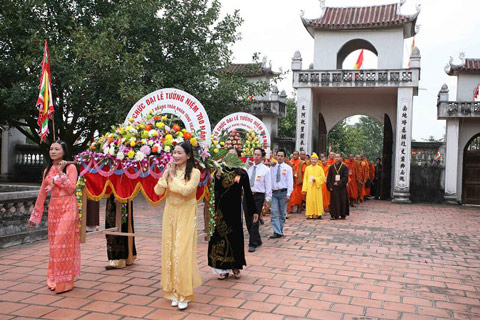
Video
Bai Hoc Nhan Qua (Thich Nhat Tu)
Nghiệp Quả,業果, Nghiệp quả là hậu
quả tất nhiên của hành động theo luật nhân quả của nhà Phật. Hậu quả
của nghiệp tái sanh tùy thuộc vào nghiệp gây tạo của những đời
trước—The natural reward or retribution for a deed, brought about by
the law of karma mentioned by the Buddha. The fruit of karma,
conditions of rebirth depending on previous karmaic conduct
Video
Nhan Qua Khong Sai (Thich Nhat Tu)
Nghiệp Tặc,業賊, Nghiệp có khả năng
làm hại chúng sanh như một tên cướp nên gọi là nghiệp tặc—Robber-karma;
evil karma harms as does a robber
Nghiệp Thằng,業繩, Sợi dây trói buộc
của nghiệp hay nghiệp như sợi dây trói buộc—Karma cords; the bonds of
karma
Nghiệp Thể,業體, See Nghiệp Tính
Nghiệp Thiên,業天, Nghiệp Thiên hay
luật tự nhiên không thể tránh khỏi của “nhân quả”—The karma of heaven,
i.e. the natural inevitable law of cause and effect
Nghiệp Thọ,業受, Kết quả của nghiệp
đời trước, như cuộc sống dài ngắn ở hiện tại được quyết định bởi nghiệp
đời trước—That which is received as the result of former karmaic
conduct, i.e. long or short life determined by previous karma
Nghiệp Thông,業通, Báo Thông—Sức thần
thông của nghiệp báo, một trong ngũ thông. Có được nghiệp thông là nhờ
công đức tu hành trong nhiều đời trước (chư Thiên Long Hộ Pháp, chư Bồ
Tát, chư Thiên đều dựa vào túc nghiệp tu hành của những đời trước mà có
được sức thần thông)—Supernatural powers that have been acquired as
karma by demons, spirits, nagas, etc.—Supernatural powers obtained from
former karma, one of the five supernatural powers
Nghiệp Thức,業識, Karma-vijnana
(skt)—Theo Khởi Tín Luận, nghiệp thức là cái thức căn bản lưu chuyển
trong các loài hữu tình, là ý niệm dựa vào căn bản vô minh khiến chân
tâm nhất như bắt đầu chuyển động hay vô minh lực làm cho tâm bất giác
chuyển động, là kết quả cụ thể hiện tại của những hành động trong quá
khứ—According to The Awakening of Faith, karmic consciousness;
activity-consciousness in the sense that through the agency of
ignorance an enlightened mind begins to be disturbed; consciousness as
the result of past behavior, that is concrete consciousness in the
present.
Nghiệp Thực,業食, Nghiệp là loại dinh
dưỡng căn bản của sự hiện hữu của chúng sanh—Karma as nutritive basis
for succeeding existence
** For more information, please see Tứ Thực.
Nghiệp Thường: Acinna (p)—Habitual karma—
Nghiệp Tích Tụ: Katatta (p)—Reserve karma—
Hành động bất thiện, tạo quả dữ trổ sanh trong dục giới: Akusala
(p)—Có mười hành động bất thiện—Evil actions which may ripen in the
sense-sphere. There are ten evil actions:
Ba hành động bất thiện biểu hiện nơi thân—Three evil actions
committed by deed:
Sát sanh: Panatipata (p)—Killing.
Trộm cắp: Adinnadana (p)—Stealing.
Tà dâm: Kamesu-micchacara (p)—Sexual misconduct.
Bốn hành động bất thiện biểu hiện nơi khẩu—Four evil actions
committed by word:
Nói dối: Musavada (p)—Lying.
Nói lời đâm thọc: Pisunavaca (p)—Slandering.
Nói lời thô lỗ cộc cằn: Pharusavaca (p)—Harsh speech.
Nói lời nhảm nhí vô ích: Samphappalapa (p)—Frivolous talk.
Ba hành động bất thiện biểu hiện nơi ý—Three evil actions committed
by mind:
Tham lam: Abhijjha (p)—Covetousness.
Sân hận: Vyapada (p)—Ill-will.
Tà kiến: Micchaditthi (p)—False views.
Hành động thiện, tạo quả lành trổ sanh trong dục giới: Kusala
(p)—Good actions which may ripen in the sense-sphere.
Hành động thiện, tạo quả lành trổ sanh trong sắc giới: Good actions
which may ripen in the realms of form (rupaloka).
Hành động thiện, tạo quả lành trong vô sắc giới: Good actions which
may ripen in the formless realms (arupaloka).
Nghiệp Tiêu Diệt: Upaghataka (p)—Destructive karma—Theo A Tỳ Đạt Ma
Luận (Vi Diệu Pháp), nghiệp tiêu diệt là thứ nghiệp, thiện hay ác, có
khả năng triệt tiêu nghiệp tái tạo, không cho nó trổ quả—According to
the Abhidharma, a destructive karma is a wholesome or unwholesome karma
which supplants other weaker karma, prevents it from rippening, and
produces instead its own result.
Một người nguyên lai do nghiệp tái tạo có thể sanh trường thọ,
nhưng nghiệp tiêu diệt khởi lên gây nên hoạnh tử—A man may, through his
productive karma, have been originally destined for a long life-span,
ut a destructive karma may arise and bring about a premature death.
Vào lúc cận tử, thoạt tiên một cảnh giới tái sanh xấu hiện ra vì
nghiệp lực xấu, nhưng một nghiệp tiêu diệt tốt khởi lên, triệt tiêu ác
nghiệp, do đó được tái sanh vào cảnh giới tốt hơn—At the time of
near-death, at first a sign of bad destination may appear by the power
an evil karma, heralding bad rebirth, but then a good karma may emerge,
expel the bad karma, and having caused the sign of good destination to
appear.
Một nghiệp xấu có thể thình lình khởi lên, tiêu diệt khả năng của
nghiệp tái tạo tốt, để đưa đến việc tái sanh vào cảnh giới ác—A bad
karma may suddenly arise, cut off the productive potential of a good
karma, an generate rebirth in a woeful realm.
Nghiệp Tánh,業性, Nghiệp thể hay tự
thể của nghiệp—The nature of karma, its essential being
Nghiệp Trần,業塵, Sự uế nhiễm của ác
nghiệp—Karma-dirt, the defilement or remains of evil karma
Nghiệp Trợ Duyên: Upatthambaka (p)—Supportive karma—Theo A Tỳ Đạt
Ma Luận (Vi Diệu Pháp), nghiệp trợ duyên không đạt được cơ hội sanh quả
của chính nó (nghĩa là nó không có tánh cách thiện hay bất thiện),
nhưng nó đến gần và nâng đỡ nghiệp tái tạo và các nghiệp khác bằng cách
làm cho những nghiệp nầy có thể tạo nên những quả sung sướng hay khổ
đau—According to the Abhidharma, supportive karma does not gain an
opportunity to produce its own result (it is to say it does have the
wholesome or unwholesome nature), but which, when some other karma or
productive karma is exercising a productive function, supports it
either by enabling it to produce its pleasant or painful results over
an extended time without obstruction or by reinforcing the continum of
aggregates produced by another karma.
Nghiệp Tướng: Một trong tam tướng vi tế trong Khởi Tín Luận, dựa
vào vô minh căn bản mà chân tâm bắt đầu hoạt động—Action, or activity,
the karmaic, condition of karmaic action. The first of the three subtle
marks of the Awakening of Faith, when mental activity is stirred to
action by unenlightenment.
Nghiệp Võng: Lưới nghiệp làm chúng sanh vướng mắc trong khổ đau của
luân hồi sanh tử—The net of karma which entangles beings in the
sufferings of rebirth.
Nghiệp Vô Hạn Định:
Aparapariyavedaniya (p)—Indefinitely effective karma—
Nghiệp Vô Hiệu Lực: Ahosi (p)—Defunct karma—
Nghiệp Vô Tình: Karma phala (skt)—Unitentional karma—See Nghiệp Cố
Ý.
Nghiệp Xứ,業處, Karmasthana
(skt)—Nơi nhập định làm cho tâm dừng lại, như cõi Tịnh Độ—A place for
working, of business, or a condition in which the mind is maintained in
meditation, by influence, the Pure Land.
Nghiệp Xứng,業秤, Cái cân để cân
nghiệp nặng nhẹ của Minh Quan nơi địa ngục—The scales of karma, in
which good and evil are weighed by the rules of causes and effects or
the rulers of Hades
Nghiệt:
Ác nghiệt: Cruel—Wicked.
Chồi non: A shrub—A tree-stump.
Con vợ lẽ: An illicit son (son of a concubine).
Quả báo: Retribution.
Nghiệt Đà Cự Tra: Gandhakuti (skt)—Hương Đài Điện hay căn buồng mà
Đức Thế Tôn đã làm lễ dâng hương trong tịnh xá Kỳ Viên hay bất cứ nơi
nào mà Ngài đã đi qua—A temple for offering incense in the Jetavana
monastery and elsewhere.
Nghiệt La Ha: Grha or Graha (skt)—Nghiệt Lý Ha—Tên của một loài quỷ
chuyên đi bắt người—Name of a demon, the seizer.
Nghiệt Lạt Bà,蘖喇婆, Garbha (skt)—Thai
Tạng (bên trong thai)—The womb, interior part
Nghiệt Lý Ha,蘖哩訶, Grha (skt)—See
Nghiệt La Ha
Ngọ Cúng,午供, Cúng ngọ—The noon
offering of incense
Ngõa Bát: Bình bát bằng đồ sứ—An earthernware begging bowl.
Ngõa Khí Kim Khí,瓦器金器,
Ngõa Khí,瓦器, Một cái bình bằng
sành, ám chỉ Phương Pháp Thanh Văn—An Earthern Vessel, implies the
Sravaka Method
Kim Khí: Một cái bình bằng kim khí, ám chỉ Phương Pháp Bồ Tát—A
golden vessel, implies the Bodhisattva-Method.
Ngõa Sư,瓦師, Đức Phật trong một
tiền kiếp là một người thợ đồ gốm—The Buddha in a previous incarnation
as a potter
Ngọa: Sayana (skt).
Nằm—Lying down.
Ngủ: Sleeping.
Ngọa Bịnh: To fall ill—To confine to bed by sickness—Forced to stay
in bed due to illness.
Ngọa Cụ,臥具, Vật dụng để nằm như
giường, chiếu, đồ ngủ—A couch, bed, mat, bedding, sleeping garments
Ngọa Pháp: Tư thế ngủ của chư Tăng Ni—The sleeping manner of monks
and nuns.
Ngọa Phật: Phật nằm (tư
thế lúc Ngài nhập Niết Bàn)—The Sleeping
Buddha (the posture when he entered Nirvana).

Ngọa Phật Tự,卧佛寺, Chùa Phật Nằm (tư
thế lúc Ngài nhập Niết Bàn)—A shrine of the Sleeping Buddha, i.e. of
the dying Buddha
Ngoại Cảnh,外境, External
things—External world
Ngoại Chúng: Ngoại Tục—Chúng tại gia để phân biệt với chúng xuất
gia hay nội chúng Tăng Ni—The laity, in contrast with the inner company
or the monks and nuns.
Ngoại Diện: Appearance—External—Outward show.
Ngoại Dụng: External manifestation (function or use).
Ngoại Duyên,外緣, Ngoại duyên là hiện
trạng năm thức duyên vào ngoại cảnh—The condition in which the five
internal senses attach to the five external objects
Ngoại Điển (Ngoại Giáo): External doctrine—Non-Buddhist scriptures.
Ngoại Đạo,外道, Chỉ các đạo không
phải là Phật giáo—Externalists—Outsiders—Outside
doctrines—Non-Buddhist—Heresy—Heretics
Ngoại Đạo Lục Sư,外道六師, See Lục Sư Ngoại
Đạo and Lục Khổ Hạnh
Ngoại Đạo Lục Sư Ca Vương: Name of the king who, thirteen years
after the destruction of the jetavana vihara, which had been rebuilt
“five centuries” after the nirvana, again restored it.
Ngoại Giáo: Non-Buddhist cults.
Ngoại Giới:
Thân thể: The realm of the body, as contrast with that of the mind
(Nội giới).
Năm giới căn bản của Phật giáo: The Five Basic Precepts of Buddhism
(no killing, no stealing, no lying, no sexual misconduct, no use of
drugs or alcohol).
Vùng phụ cận: Environment.
Ngoại Hải,外海, Biển bao quanh tứ
châu—The sea that surrounds the four world-continents
Ngoại Hình: Exteriority.
Ngoại Học,外學, Học những giáo
thuyết không phải của đạo Phật—Study of outside, or non-Buddhist
doctrines
Ngoại Hộ,外護, Những che chở bên
ngoài như quần áo và thực phẩm cho Tăng Ni, đối lại với Nội Hộ hay giới
pháp do Phật chế định nhằm giúp cho thân khẩu ý tránh điều sai
trái—External protection or aid, such as food, clothing for monks and
nuns, contrasted with the internal aid of the Buddha’s teaching
Ngoại Khất,外乞, Vị Tăng khất sĩ tìm
cầu tự kiểm bằng những phương thức bên ngoài như ăn chay, đối lại với
Nội Khất là vị Tăng khất sĩ tìm cầu tự kiểm bằng những phương thức từ
trong nội tâm—The Mendicant monk who seeks self-control by external
means, such as abstinence from food, as contrasted with the mendicant
monk who seeks self-control by internal means or spiritual methods.
Ngoại Không,外空, External space
Ngoại Lai: Exotic.
Ngoại Ngã,外我, Bahiratman—External
Ego—An external soul, or personal or divine ruler—A Creator or ruler of
the world, such as Siva
Ngoại Ngoại Đạo,外外道, Ngoại đạo ngoài
Phật pháp—Outside outsiders, those of other cults
Ngoại Pháp,外法,
Ngoại Chấp: Non-Buddhist or heretical rules or tenets.
Ngoại Điển: Kinh điển và sách vở của thế gian và ngoại
đạo—Non-Buddhist doctrines.
Ngoại Giáo: Non-Buddhist religions.
Ngoại Pháp,外法, External doctrines
See Nội Ngoại Pháp (2).
Ngoại Tham Dục,外貪欲, Ý nghĩ ham muốn
tình dục với người khác, không phải là vợ hay chồng của mình—Sexual
thoughts towards others than one’s own wife, or husband
Ngoại Thân: Maternal family—Mother’s family.
Ngoại Tình: Adultery.
Ngoại Trần,外塵, Sáu cảnh trần bên
ngoài—The external objects of the six senses
Ngoại Triền: Outer tangle.
Ngoại Tục: Chúng tại gia để phân biệt với chúng xuất gia hay nội
chúng Tăng Ni—The laity, in contrast with the monks or inner company
(nội chúng).
Ngoại Tướng: Hình tướng hay hành vi bên ngoài—External appearance
or conduct.
Ngoại Vô Vi: Đối với ngoại cảnh chẳng động tâm hay giác quan chẳng
bị khuấy động (mắt chẳng thấy sắc, tai chẳng nghe thanh, mũi chẳng ngửi
hương, lưỡi chẳng nếm vị, thân chẳng tiếp xúc các thứ mịn màng, ý chẳng
vọng niệm)—Unmoved by externals, none of the senses stirred.
Ngoan Không,頑空, Cái “Không” sai lầm
mà những kẻ cuồng thiền thường hay chấp vào—False emptiness, improper
and crooked understanding of emptiness which “Mad Zen” practitioners
always attach to—See Bác Tướng
Ngoan Ngoãn: To be obedient—Docile—Well-behaved
Ngoan Phụ: Stubborn woman.
Ngoạn Thạch Điểm Đầu: Kinh Niết Bàn một khi được thuyết giảng thì
ngay cả đá cũng phải gật đầu (theo Liên Xã Cao Hiền Truyện, thì ngài
Trúc Đạo Sinh vào núi Hổ Khâu xếp đá làm học trò cho ngài giảng kinh
Niết Bàn, các hòn đá đều cảm động gật đầu. Ngày nay muốn diễn đạt ý đã
cảm hóa được người ta một cách sâu sắc thì gọi là Ngoan Thạch Điểm
Đầu)—Moved by the reciting of the Mahaparinirvana Sutra, even the
stupid stones nodded their heads.
Ngọc Da,玉耶, Yu-Hua—Tên của một
thiếu nữ mà Đức Phật đã nhân đó nói Ngọc Hoa Nữ Kinh—Name of the woman
to whom the sutra Yu-Hua is addressed.
Ngọc Da Nữ Kinh,玉耶女經, Yu-Hua Sutra—See
Ngọc Da
Ngọc Hào,玉豪, Chùm lông trắng
(bạch mao) giữa hai chân mày của Phật nơi Ngài phóng quang đi khắp các
cõi—The urna or white curl between the Buddha’s eyebrows, from which he
sent forth his ray of light illuminating all worlds
Ngọc Hoa,玉花, Yu-Hua Palace—See
Ngọc Tuyền Ngọc Hoa Lưỡng Tông (2)
Ngọc Hoàn,玉環, Vòng ngọc thạch đeo
ở một trong những cánh tay phải của “Thiên-Thủ” Quán Âm (Ngàn Tay Quán
Âm)—The jade ring in one of the right hands of the “thousand-hand”
Kuan-Yin
Ngọc Hoàng: Emperor of Jade.
Ngọc Nhu,玉柔, Pliable jade, i.e.
beef
Ma Ni,摩尼, Cintamani
(skt)—Fabulous gem—The philosopher’s stone—Wish-fulfilling
jewel—Wish-gem
Ngọc Nữ: A pretty girl, a precious maidens.
** For more information, please see Bảo Nữ.
Ngọc Phật,玉佛, Một tượng Phật bằng
ngọc thạch nổi tiếng được tìm thấy khi đào một cái giếng ở Khotan, cao
khoảng từ 3 đến 4 bộ Anh—A famous jade Buddha recovered while digging a
well in Khotan, 3 to 4 feet high
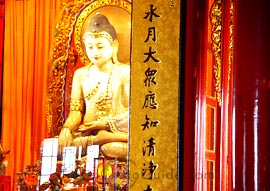
Ngọc Thạch: Gem and stone.
Ngọc Trai: Pearl.
Ngọc
Tuyền Ngọc Hoa Lượng Tông,玉泉玉花兩宗, Hai tông phái Ngọc Tuyền và Ngọc
Hoa—The two schools of the Jade-fountain and Jade-flower
Ngọc Tuyền Tông: Pháp Tướng Tông (Dharmalaksana Sect)—Ngọc Hoa là
tên của một tự viện, nơi Huyền Trang, tổ của tông phái nầy đã sống và
làm việc. Nơi đây ông đã dịch 600 cuốn của bộ kinh Đại Bát Nhã Ba La
Mật Đa—Yu-Hua, was the name of a palace which was transformed into a
temple where Hsuan-Tsang, the founder in China, lived and worked. There
he translated the Mahaprajna-Paramita-Sutra, 600 books (chuan).
Ngón Tay Chỉ Trăng: Finger pointing to the moon.
Ngộ:
Nghiêm Sức,嚴飾, Pretty
Gặp gỡ: Tri ngộ—To meet.
Giác Ngộ,覺悟, Budh (skt)
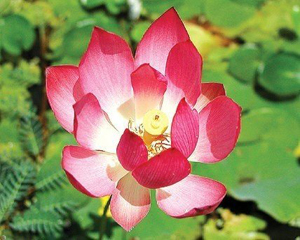
Bừng tỉnh: Tỉnh thức: Jagarati (p)—Jagara (skt)—To apprehend—To
awake—To awaken—To wake up.
Giác ngộ: Sambodhi (skt)—Knowledge—Enlightenment.
Làm tỉnh ngộ: Sambodhana (skt)—Arousing—Awaking—Recognizing.
Nhận ra điều gì mình đã quên: Pratyabhijanati or Pratyabhijna
(skt)—To recognize—To recover consciousness—Regaining knowledge or
recognition.
Nhận ra rõ ràng: Vabodha or Sakshatkarana (skt)—Realization.
Tự chứng ngộ: Self-realization—To becom aware.
Tự mở mắt tâm, để biết rõ bản tánh và do đó biết rõ bản tánh của
cuộc sinh tồn: Opening the Mind’s eye—Awakening to one’s True-nature
and hence of the nature of all existence.
See Enlightenment in English-Vietnamese Section.
Ngộ Đạo,悟道, To realize
(enlighten) the path
Theo Kinh Pháp Cú, câu 280, Đức Phật dạy—According to the
Dharmapada Sutra, verse 280, the Buddha taught: “Khi đáng nỗ lực, không
nỗ lực, thiếu niên cường tráng đã lười biếng, ý chí tiêu trầm và nhu
nhược: kẻ biếng nhác làm gì có trí để ngộ Đạo—One who does not strive
when it is time to strive, who though young and strong but slothful
with thoughts depressed; such a person never realizes the path.”
Ngộ Nhập,悟入,
Giác ngộ lý thực tướng, hay nhập vài lý thực tướng (tỉnh ngộ và đắc
nhập là hai trình độ liên tiếp của người tu Phật. Trong Kinh Pháp Hoa,
phẩm Phương Tiện, Đức Phật đã dạy: “Muốn làm cho chúng sanh ngộ nhập
tri kiến Phật, nên ngài đã thị hiện ở đời.”)—To aprehend or perceive
and enter into the idea of reality.
Sugandhara, tên của một nhà sư người Kashmir: Sugandhara, name of a
Kashmir monk.
Ngộ Nhất Thừa: Ekayanavabodha (skt)—Realization of the One
Vehicle—See Nhất Thừa.
Ngộ Phán: Mistrial.
Ngộ Phật, Mê Phàm: Those who greatly realize delusion are Buddhas;
those who are greatly deluded are ordinary people.
Ngộ Sát,悟刹,
Cõi nước nơi những người giác ngộ an trụ để tự ngộ và giác ngộ cho
chúng sanh, như Ta Bà thế giới là ngộ sát của Đức Phật Thích Ca: The
ksetra or land of enlightenment or perception, i.e. Saha world is the
Buddha’s ksetra.
Giết hại chúng sanh, nhưng không cố ý sát sinh: To kill through
negligence—Manslaughter.
Ngồi Thiền: To sit in meditative position—To meditate.
Ngồi Tréo Ngoảy: To sit with one leg across (over) the other.
Ngồi Xếp Chéo Lỏng: Thế ngồi Thiền theo kiểu Nhật Bản, ngồi xếp
chéo lỏng, không phải bán già mà cũng không phải kiết già—The loose
cross-legged sitting position originated from Japan. It is neither the
half-lotus nor the full-lotus.
Ngồi Yên: To sit still.
Ngôn: Vaca (p & skt)—Lời nói—Words—Speech—To speak.
Ngôn Cú,言句, Câu—Sentence
Ngôn Giáo,言教, Spoken teaching
Giáo thuyết nguyên thủy của Phật Tổ Thích Ca, chưa được ghi lại
bằng chữ viết cho đến đầu thế kỷ thứ nhứt Tây lịch, khi mà Tạng Kinh
Pali được ghi lại trên những lá kè, trong các tự viện ở Tích Lan—The
original teaching of the Buddha, which was not recorded in writing
until the 1st century B.C., when Pali canon was written on palm leaves
in the monasteries in Sri Lanka.
Giáo Thuyết của Đức Phật biểu hiện bằng ngôn ngữ: The teaching of
Buddha as embodied in words.
Ngôn Hành: Vaci-sankhara (p)—Vacika-samskara (skt)—Lời nói và hành
động—Saying and doing—Words and deeds—Verbal functions of the mind.
Ngôn Thuyên,言詮, Ngôn ngữ là công cụ
để giải thích, làm rõ nghĩa lý, giống như cái nơm là dụng cụ để bắt
cá—Words as explaining meaning; explanation
Ngôn Thuyết,言說, See Ngôn Ngữ
Ngôn Thuyết Pháp Tướng: See Desana in Sanskrit/Pali-Vietnamese
Section.
Ngôn Trần,言陳, Những điều được
trình bày ra bằng lời nói, như pháp suy luận trong Nhân Minh Học—Things
set out in words, i.e. a syllogism
Ngôn Từ,言詞, Words—Language—Trong
Kinh Lăng Già, Đức Phật dạy: “Chính do con người không biết rõ cái bản
tánh của các ngôn từ, nên người ta xem ngôn từ là đồng nhất với ý
nghĩa.”—In the Lankavatara Sutra, the Buddha taught: “It is owing to
his not perfectly understanding the nature of words that he regards
them as identical with the sense.”
Ngôn Y,言依, Tùy vào ngôn ngữ mà
giải thích. Tất cả các pháp hữu vi đều quy vào loại có thể định nghĩa
hay giải thích bằng ngôn ngữ (khác với pháp vô vi không thể gọi ra bằng
tên, không thể diễn tả bằng lời)—Word-dependence, i.e. that which can
be expressed in words, the phenomenal or describable
Ngu Hoặc,愚惑, Mê hoặc bởi vô
minh—Deluded by ignorant, the delusion of ignorance
Ngu Kiến,愚見, My humble (modest)
opinion
Si Ám,癡闇, Ignorance
Ngu Pháp,愚法, Còn gọi là Tiểu Thừa
Ngu Pháp, một trong hai loại Tiểu Thừa, Thanh Văn và Duyên Giác, chỉ mê
chấp ở ngu pháp mà không hiểu được diệu lý pháp không của Đại
Thừa—Ignorant, or immature law, or method, i.e. that of sravakas and
pratyeka-buddhas, Hinayana
Ngu Phu,愚夫, Bala (skt)
Người không giác ngộ: A man not yet illuminated, i.e., ignorant.
Kẻ bị vô minh chế ngự—Ignorant, immature, a simpleton, dominated by
avidya (ignorance).
Ngu Phu Sở Hành Thiền: Balopacarikam (skt)—Theo Kinh Lăng Già, đây
là một trong bốn thứ Thiền định. Dù người thực hành loại Thiền định nầy
bị xem là kẻ ngu si kém trí, đây vẫn là một loại Thiền thông dụng mà
phần đông người ta thực tập, trong đó có cả những người thông minh và
nhạy trí. Tuy nhiên, Đại Thừa còn đi xa hơn các loại Thiền định nầy là
những thứ vốn ít nhiều vẫn có tính cách tương đối, thiếu tự nhiên và
không phải là loại tối thượng; vì loại Thiền nầy chú trọng về quán bất
tịnh, về sự vô thường của các sự vật và về những khổ đau của cuộc đời,
vân vân, là bài học đầu tiên cho những người mới nhập môn Phật
giáo—According to the Lankavatara Sutra, this is one of the four kinds
of Dhyanas. Though he is regarded as ignorant or dull-witted (bala) who
practices this kind of Dhyana, this is the ordinary form of meditation
carried on by most people, some of whom are quiteintelligent and
sharp-witted. However, the Mahayana goes beyond these meditations which
are more or less relative and artificial and not of the highest sort;
for meditating on impurities, the impermanence of things, sufferings of
life, etc., is the first lesson for the beginners of Buddhism.
Ngu Si,愚癡, Mudha (skt)—Tiếng
Phạn là Mộ Hà, có nghĩa tâm tính ám muội, hay vô minh và không giác
ngộ, không có trí sáng suốt để thông đạt sự lý (còn gọi là vô trí, vô
kiến, vô hiện quan, hôn muội, ngu si, vô minh, và hắc ám)—Thick-skulled
(headed)—Stupid—Ignorant and unenlightened
Ngu Tăng,愚僧, Vị tăng bị vô minh
khống chế—Ignorant monk
Ngũ A Hàm,五阿含, The five Agamas
Trường A Hàm,長阿含, Dirghagama
Trung A Hàm,中阿含, Mahdyamagama
Tạp A Hàm,雜阿含, Tăng Dục Đa A
Hàm—Samyuktagama
Tăng Nhất A Hàm,增壹阿含, Ương Quật Đa La
A Hàm—Ekottarikagama
Khuất Đà Ca A Hàm,屈陀迦阿含, Ksudrakagama
Ngũ A Hàm Thiên: See Ngũ Tịnh Cư thiên.
Ngũ Ác,五惡, Nivarana (skt)—The
five sins
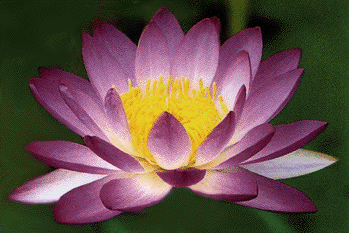
Sát sanh: Killing.
Trộm cắp: Stealing.
Tà dâm: Sexual misconduct.
Vọng ngữ: Lying.
Uống chất cay độc: Drinking intoxicants.
Ngũ Ác Thú,五惡趣, See Ngũ Thú
Ngũ Âm,五音, The five notes of
the musical scale (instrument)
Ngũ Ấm Ma: The five maras associated with the five skandhas—See Ngũ
Uẩn.
Ngũ Ấn: See Ngũ Độ (B).
Ngũ Ba La Mật,五波羅密, Năm Ba La
Mật—The five paramitas
Bố thí: Dana—Almsgiving.
Trì giới: Sila—Commandment-keeping.
Nhẫn nhục: Ksanti—Patience under provocation.
Tinh tấn: Virya—Zeal.
Thiền định: Dhyana—Meditation.
Ngũ Bách Dị Bộ,五百異部, Năm trăm bộ phái
khác nhau được thành lập 500 năm sau ngày Phật nhập diệt—The five
hundred sects according to the five hundred years after the Buddha’s
death
Ngũ Bách Do Tuần,五百由旬, Theo Kinh Pháp
Hoa thì con đường đi đến đất châu bảo là con đường dài năm trăm do tuần
đầy khó khăn nguy hiểm—According to the Lotus Sutra, the journey to the
Land of Treasure is the five hundred Yojanas of difficult and perilous
journey
Ngũ Bách Đại La
Hán,五百大羅漢,

Năm trăm vị Đại La Hán là những vị đã soạn ra bộ Vi Diệu Pháp Tỳ Ba
Sa
Luận, bốn trăm năm sau ngày Phật nhập diệt—Five hundred great arhats
who formed the synod under Kaniska and are supposed compilers of the
Abhidharma-Mahavibhasa-Sastra, four hundred years after Buddha entered
nirvana
Ngũ Bách Giới,五百戒, 500 giới Tỳ Kheo
Ni, thật sự là 348—The five hundred rules for nuns, actually 348—See
Giới Cụ Túc
Ngũ Bách Sanh,五百生, Five hundred
generations
Ngũ Bách Thế,五百世, Five hundred
generations
Ngũ Bách Vấn Sự,五百問事, Năm trăm câu hỏi
của ngài Mục Kiền Liên hỏi Phật về vấn đề giới luật—The five hundred
questions of Mahamaudgalyayana to the Buddha on discipline
Ngũ Bảo,五寶, Năm thứ quí là vàng,
bạc, trân châu, san hô, mã não—The five precious things such as gold,
silver, pearls, coral and amber
Ngũ Bảo Thiên Quan,五寶天冠, See Ngũ Phật Bảo
Quan
Ngũ Bất Chánh Thực,五不正食, Năm thứ không
hợp cho một vị Tăng ăn—Five improper things for a monk to eat
Cành non: Twigs.
Lá cây: Leaves.
Bông: Flowers.
Trái: Fruit.
Bột: Powder.
Ngũ Bất Hoàn Quả,五不還果, See Ngũ Tịnh Cư
Thiên
Ngũ Bất Hoàn Thiên,五不還天, Năm tầng trời mà
chúng sanh không còn bị tái sanh vào các đường dữ nữa—Five
Heavens-from-which-there-is-no-return because the residents do not ever
fall back to the lower realms
Ngũ Bất Khả Tư Nghì: Theo Trí Độ Luận, có năm thứ bất khả tư
nghì—According to the Sastra on the Prajna-Paramita Sutra, there are
five inconceivable or thought-surpassing or beyond mentation things.
Chúng sanh vô biên bất khả tư nghì: The number of living
beings—Innumerable number of sentient beings is inconceivable.
Nghiệp quả báo bất khả tư nghì: All the consequences of
karma—Karmic consequence is inconceivable.
Định lực của Thiền giả là bất khả tư nghì: The powers of a state of
dhyana—The concentration power of a zen practitioner is inconceivable.
Lực của các rồng là bất khả tư nghì: The powers of nagas—The power
of dragons is inconceivable.
Phật pháp là bất khả tư nghì: The powers of the Budhas—The Buddha
Law is inconceivable.
Ngũ Bất Năng Xứ: Theo Kinh Phúng Tụng trong Trường Bộ Kinh, có năm
bất năng xứ (năm điều mà một vị Tỳ Kheo không thể làm được)—According
to the Sangiti Sutta, there are five impossible things:
Một vị lậu tận Tỳ Kheo không thể cố ý sát hại đời sống loài hữu
tình: An Arahant is incapable of deliberately taking the life of a
living being.
Một vị lậu tận Tỳ Kheo không thể cố ý lấy của không cho để tạo tội
trôm cắp: An Arahant is incapable of taking what is not given so as to
constitute theft.
Một vị lậu tận Tỳ Kheo không thể cố ý hành dâm: An Arahant is
incapable of committing sexual intercourse.
Một vị lậu tận Tỳ Kheo không thể tự mình biết mà nói láo: An
Arahant is incapable of telling a deliberate lie.
Một vị lậu tận Tỳ Kheo không thể tiêu dùng các vật chứa cất vào các
thú vui dục lạc như khi còn là cư sĩ: An Arahant is incapable of
storing up goods for sensual indulgence as he did formerly in the
household life.
Ngũ Bất Thoái: Năm điều Bất thoái theo Pháp Tướng Tông—The five
non-backslidings according to the Dharmalaksana:
Tín Bất Thoái: Never receding from the faith obtained.
Vị Bất Thoái: Never receding from the position attained.
Chứng Bất Thoái: Never receding from the realization attained.
Hạnh Bất Thoái: Never receding from a right course of action.
Luật Nghi Bất Thoái: Never receding from being in accordance with
procedures.
Ngũ Bí Mật,五祕密, Năm vị Kim cang Bồ
Tát—The five Bodhisattvas of the Diamond realm
Kim Cang Tát Đỏa: Tất cả các loài chúng sanh đều có lục đại tự
tánh, ở đây nói về các loài hữu tình chúng sanh, được đặt ở trung
tâm—Vajrasattva represents the six fundamental elements of sentient
existence and here indicates the birth of bodhisattva sentience, in the
middle.
Dục Kim Cang: Bodhisattvas of Desire—Bồ tát Dục hay phàm phu mới
gặp được giáo thọ A Xà Lê, được đặt ở phía Đông. Dục ở đây là muốn phát
tâm Bồ Đề và cứu độ chúng sanh—Ordinary people who have just met the
Acarya, in the East—Desire is that of bodhi and the salvation of all.
Xúc Kim Cang: Bồ Tát Xúc hay vị đã phát tâm Bồ Đề, tu hạnh đại bi,
và muốn tiếp xúc với thế giới bên ngoài để cứu độ, được đặt ở phía
Nam—Bodhisattvas of Contact—One who has resolved the Bodhicitta, vowed
to practice great loving kindness, and wanted to contact with the needy
world for its salvation, in the South.
Ái Kim Cang: Bodhisattvas of Love—Vị đã thành tựu Phật quả và phát
nguyện thương yêu chúng sanh, được đặt ở phía Tây—One who has attained
the Buddhahood and vowed to love all sentient beings.
Mạn Kim Cang: Bodhisattvas of Pride—Vị đã tự tại nơi Niết Bàn, được
đặt ở phía Bắc—One who entered Nirvana (pride here means the power of
nirvana), in the North.
Ngũ Bí Mật Mạn
Đà La,五祕密曼荼羅,
Mạn Đà La gồm mười bảy hình ảnh, gồm năm vị Kim Cang Bồ Tát (see Ngũ Bí
Mật) và mười hai vị thị giả theo hầu—The Mandala of this group contains
seventeen figures representing the five esoteric Bodhisattvas with
their twelve subordinates
Ngũ Biên,五邉, Năm loại biên
kiến—The five alternatives
Thị Hữu: Things exist.
Thị Vô: Things do not exist.
Diệc Hữu Diệc Vô: Both exist and non-exist.
Phi Hữu Phi Vô: Neither exist nor non-exist.
Phi Phi Hữu, Phi Phi Vô: Neither non-exist nor are without
non-existence.
Ngũ Biến Hành: Năm loại tâm sở tương ứng với mọi tâm vương—The five
universal mental activities associated with every thought:
Tác Ý,作意, The idea
Xúc: Contact.
Thọ: Reception.
Tưởng: Conception.
Tư: Perception.
Ngũ Bình,五甁, Năm cái bình mà Phật
giáo Mật Tông dùng để dâng hoa cúng Phật, hoa trong bình được cắm chung
với năm quý vật, năm loại hạt và năm loại thuốc trộn với nước hoa—The
five vases used by the esoteric school for offering flowers to their
Buddha, the flowers are stuck in a mixture of the five precious things,
the five grains and the five medicines mingled with scented water
Ngũ Bình Quán Đảnh,五甁灌頂, Lễ Quán Đảnh với
năm bình tượng trưng cho trí huệ của năm vị Phật—Baptism with water of
the five vases representing the wisdom of the five Buddhas—See Ngũ
Phật.
Ngũ Bình Trí Thủy,五甁智水, Năm bình là biểu
tượng của năm phần trong Kim Cang Giới và nước hoa trí huệ của năm vị
Phật—The five vases are emblems of the five departments of the
Vajradhatu, and the fragrant water of the wisdom of the five
Wisdom-Buddhas—See Ngũ Phật Trí
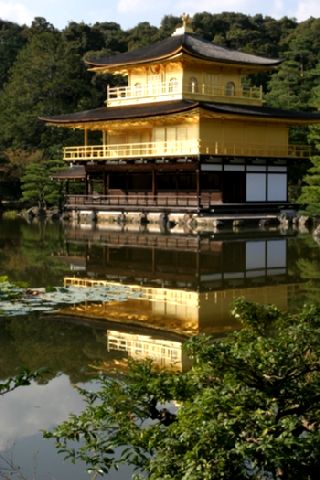
Ngũ Bố Thí: Five kinds of dana or charity—See Ngũ Chủng Bố Thí.
Ngũ Bố Úy: Five Fears—See Ngũ Úy.
Ngũ Bồ Đề,五菩提, The five bodhi or
stages of enlightenment
Phát tâm bồ đề: Vì vô thượng Bồ Đề mà phát tâm—Resolve on supreme
bodhi.
Phục tâm bồ đề: Chế phục phiền não mà tu hành các hạnh Ba La
Mật—Mind control (the passions and observance of the paramitas).
Minh tâm bồ đề: Quán sát các pháp để tu hành Bát Nhã Ba La
Mật—Mental enlightenment, study and increase in knowledge and in the
prajnaparamitas.
Xuất đáo bồ đề: Xuất ly tam giới và đạt đến nhất thiết trí—Mental
expansion, freedom from the limitations of reincarnation and attainment
of Complete knowledge.
Vô thượng bồ đề: Đạt tới tình trạng vô dục và vô thượng Bồ
Đề—Attainment of a passionless condition and of supreme perfect
enlightenment.
Ngũ Bộ: The five classes or groups.
Tứ Diệu Đế và Tu Đạo: The Four Noble truths and Practice—See Tứ
Diệu Đế and Tu Đạo.
Tiểu Thừa Ngũ Bộ: The five early Hinayana Sects—See Nhất Thiết Hữu
Bộ.
Năm bộ của Kim Cang Giới: The five groups of Vajradhatu Mandala—See
Kim Cang Giới Ngũ Bộ.
Ngũ Bộ Đại Luận,五部大論, The five great
sastras
Du Già Sư Địa Luận,瑜伽師地論, Ceremonials of
the esoteric cult for ridding from calamity
Phân Biệt Du Già Luận: Ceremonials of the esoteric cult for
prosperity.
Đại
Thừa Trang Nghiêm Kinh Luận,大乘莊嚴經論, Ceremonials of the esoteric cult
for subduing evils (spirits)
Biện Trung
Biên Luận Tụng,辯中邊論頌,
Ceremonials of the esoteric cult for seeking the love of Buddhas
Kim Cang Bát Nhã Luận: Ceremonials of the esoteric cult for calling
the good to aid.
Ngũ Bộ Đại Luật: The first five volumes of Vinayana of Hinayana
Sects.
Đàm Ma Cúc Đa: Tứ Phần Luật (Pháp chính, pháp hộ, pháp kinh, pháp
mật)—Dharmagupta.
Tát Bà Đế Bà,薩婆帝婆, Thập Tụng
Luật—Sarvastivada
Di Sa Tắc Bộ,彌沙塞部, Ngũ Phần
Luật—Mahisasaka
Ca Diếp Di Bộ: Giải Thoát Giới Kinh—Kasyapiya.
Bà Thu Phú La Bộ: Vatsiputriya.
Ngũ Bộ Đại thừa Kinh: Năm bộ kinh lớn trong trường phái Thiên
Thai—The five chief Mahayana Sutras in the T’ien-T’ai Sect:
Hoa Nghiêm,華嚴, Avatamsaka Sutra
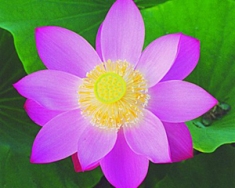
Đại Tập,大集, Mahasanghata Sutra
Đại Bát Nhã,大般若, Mahaprajna Sutra
Pháp Hoa,法華, Lotus Sutra
Niết Bàn,涅盤, Nirvana Sutra

Ngũ Bộ Giáo Chủ,五部教主, The five
Dhyani-Buddhas—See Ngũ Trí Như Lai
Ngũ Bộ Hợp Đoạn,五部合斷, Năm bộ hợp
đoạn—To cut off the five classes of misleading things—See Ngũ Bộ (A)
Ngũ Bộ Tôn Pháp,五部尊法, See Ngũ Chủng Tu
Pháp
Ngũ Cái,五蓋, Năm nắp che hay năm
chướng ngại về tinh thần và luân lý khiến chúng sanh chẳng thấy chẳng
trì được thiện pháp—Five covers, mental and moral hindrances, which
prevent sentient beings from seeing and practicing good deeds
Tham dục: Desire.
Sân nhuế: Anger.
Thụy miên: Drowsiness.
Trạo hối: Sự xao động ăn năn trong tâm—Excitability.
Nghi pháp: Doubt.
Ngũ Canh:
Năm canh hay năm thời trong đêm: The five night watches.
Canh thứ năm trong đêm: The fifth period or watch of the night.
Ngũ Cảnh,五境, Năm cảnh hay năm
pháp, là cảnh giới sở duyên của ngũ căn—The five objects of the five
senses, corresponding to the senses
Sắc: Form.
Thanh Minh,聲明, Sound
Hương: Smell.
Vị: Taste.
Xúc: Touch.
Ngũ Căn,五根, Pancendriyani (skt)
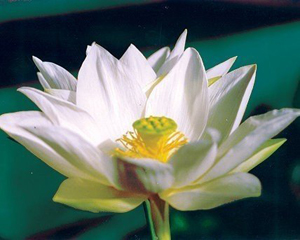
Theo Kinh Phúng Tụng trong Trường Bộ Kinh, có năm căn—According to
the Sangiti Sutta in the Long Discourses of the Buddha, there are five
roots or faculties (indriyani)—The five organs of the senses—Five
spiritual faculties:
Mắt: Eyes.
Tai: Ears.
Mũi: Nose.
Lưỡi: Tongue.
Thân: Body.
** Ngũ căn có thể là những cửa ngõ đi vào địa ngục, đồng thời chúng
cũng là những cửa ngõ quan trọng đi vào đại giác, vì từ đó mà chúng ta
gây tội tạo nghiệp, nhưng cũng nhờ đó mà chúng ta có thể hành trì chánh
đạo—The five sense-organs can be entrances to the hells; at the same
time, they can be some of the most important entrances to the great
enlightenment; for with them, we create karmas and sins, but also with
them, we can practise the right way.
Năm Căn Khác—Five more faculties:
Lạc Căn: Sukha (p)—Pleasant bodily feeling.
Khổ Căn,苦根, Dukkha (p)—Pain
Hỉ Căn,喜根, Somanassa
(p)—Gladness
Ưu Căn,憂根, Domanassa
(p)—sadness
Xả Căn,捨根, Upekha
(p)—Indifferent feeling
Năm Căn Khác—Five more faculties—The five positive agents—The five
roots that give rise to other wholesome dharmas:
Tín Căn,信根, Sraddhendriya
(skt)—Saddha (p)—Tin tưởng vững chắc nơi Tam Bảo và Tứ Diệu Đế—Faith or
virtue of belief—Sense of belief in the Triple Gem and the Four Noble
Truths
Tấn Căn: Viryendriya (skt)—Tinh tấn tu tập thiện pháp—Energy
(vigor) or virtue of active vigor—Sense of endeavor or vigor to
cultivate good deeds.
Niệm Căn,念根, Smrtindriya
(skt)—Nhớ tới chánh niệm—Memory, mindfulness, or virtue of
midfulness—Sense of memory or right memory
Định Căn,定根, Samadhindriya
(skt)—Định tâm lại một chỗ hay chuyên chú tâm vào một chỗ—Visionary
meditation, samadhi, or virtue of concentration—Concentration—Sense of
meditation
Huệ Căn: Prajnendriya (skt)—Trí huệ sáng suốt không vọng tưởng hay
sự hiểu biết hay suy nghĩ chân lý—Virtue of wisdom vor awareness—Sense
of wisdom or thinking of the truth.
Ngũ Căn Bản,五根本, See Ngũ Căn Bản
Phiền Não
Ngũ Căn Bản Phiền Não: Năm phiền não căn bản—The five great
passions or disturbers or Klesas:
Tham: Desire.
Sân: Anger or hatred.
Si: Stupidity or ignorance.
Mạn Mạn,漫漫, Pride
Nghi: Doubt.
Ngũ Căn Sắc,五根色, The five senses
correspond to colors
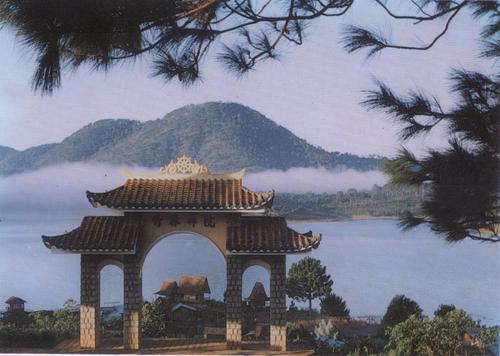
Tín Căn tương ứng với sắc Trắng có nghĩa là vì tin nơi Tam Bảo và
Tứ Diệu Đế nên chúng sanh có thể vượt qua mọi cấu nhiễm: The sense of
belief corresponds to White colour, signifies that owing to the belief
in the Triple Gem and the Four Noble Truths, sentient beings are able
to overcome all defilements.
Tấn Căn tương ứng với sắc Đỏ, có nghĩa là đại cần dũng: Energy or
Vigor corresponds to Red colour, signifies great endeavor.
Niệm Căn tương ứng với sắc Vàng, có nghĩa là đạt đến chánh niệm để
có Định Tuệ: Mindfulness corresponds to Yellow colour, signifies that
cultivators try to reach right memory so that they can obtain both
Concentration and Wisdom.
Định Căn tương ứng với sắc Xanh, có nghĩa là Đại Không Tam Muội:
Concentration corresponds to Blue colour, signifies Great Empty
samadhi.
Huệ Căn tương ứng với sắc Đen, có nghĩa là sắc cứu cánh của Như
Lai: Wisdom corresponds to Black colour, signifies the supreme colour
of the Tathagata.
Ngũ Cấm,五禁, See Ngũ Giới
Ngũ Câu Luân,五倶倫, Năm vị đồng tu với
Phật Thích Ca và cũng là năm đệ tử quy-y đầu tiên với Ngài—Sakyamuni’s
five comrades—Sakyamuni five old companions in asceticism and first
converts.
Ngũ Chánh Hành: See Ngũ Chánh Hạnh.
Ngũ Chánh Hạnh: The five proper courses to ensure the bliss of the
Pure Land:
Tụng đọc chánh hạnh: Tụng đọc Kinh A Di Đà, Kinh Vô Lượng Thọ và
Kinh Quán Vô Lượng Thọ—Intone the three sutras (Amitabha, Infinite
Life, Meditation on the Infinite Life).
Quán sát chánh hạnh: Quán sát về Tây Phương Tịnh Độ—Meditate on the
Pure Land.
Lễ bái chánh hạnh: Lễ bái Đức Phật A Di Đà—Worship solely Amitabha.
Xưng danh chánh hạnh: Xưng tụng hồng danh Đức Phật A Di Đà—Invoke
the name of Amitabha Buddha.
Tán thán cúng dường chánh hạnh: Tán thán cúng dường Đức Phật A Di
Đà—Extol and make offerings to Amitabha Buddha.
Ngũ Chánh Sắc,五正色, See Ngũ Sắc
Ngũ Châu: The five continents.
Ngũ Chi Tác Pháp,五支作法, Avayava
(skt)—Năm chi tạo pháp—The five parts of a syllogism
Lập Tông,立宗, Nói về sở tính của
chư pháp—Pratijna (skt)—The proposition
Biện Nhân: Dựa theo các pháp mà kiến lập ra ngôn luận thuận ích với
đạo lý—Hetu (skt)—The reason.
Dẫn Dụ,引喩, So sánh với các pháp
dễ hiểu—Udaharana (skt)—The example
Hợp: Upanaya (skt)—The application.
Kết: Nigamana (skt)—The summing up or conclusion.
Ngũ Chúng Ma,五衆魔, The five maras
associated with the five skandhas—See Ngũ Uẩn
Ngũ Chúng Xuất Gia: Five groups of the order:
Tỳ Kheo,比丘, Monks
Tỳ Kheo Ni,比丘尼, Nuns
Thức Xoa Ma Na,式叉摩那, Nun-Candidates
Sa Di,沙彌, Male novices
Sa Di Ni,沙彌尼, Female novices
Ngũ Chủng A Na Hàm: See Ngũ Tịnh Cư Thiên.
Ngũ Chủng A Xà Lê: Năm loại giáo thọ—Five categories of acarya.
Xuất Gia A Xà Lê: Người sở y đắc xuất gia hay người phụ trách dạy
dỗ những người mới xuất gia—One who has charged of novices.
Giáo Thọ A xà Lê: Giáo Thọ Tăng—A teacher of the discipline.
Yết Ma A Xà Lê,羯磨阿闍梨, Thọ Giới Tăng
hay vị Tăng làm phép thọ giới yết ma—A teacher of duties
Thọ Kinh A Xà Lê: Vị Tăng dạy kinh cho người khác—A teacher of the
scriptures.
Y Chỉ A Xà Lê,依止阿闍梨, Thầy y chỉ (dù
chỉ trong một thời gian rất ngắn)—The master of the community (though
in a very short period of time)
Ngũ Chủng Ác Bệnh,五種惡病, Năm loại bệnh
ngặt nghèo trong thành Vaisali vào thời của Đức Phật—Five epidemics in
Vaisali during the Buddha’s lifetime
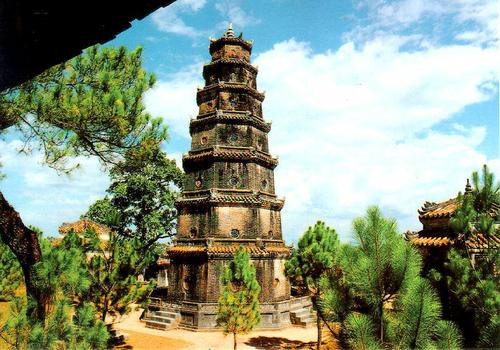
Xuất Huyết Mắt: Bleeding from the eyes.
Xuất Mủ Tai: Pus discharged from the ears.
Xuất Huyết Mũi: Nose-bleeding.
Chứng Cứng Hàm: Chứng khít hàm—Lockjaw.
Chứng Táo Bón: Astringent taste of all food.
Ngũ Chủng Ấn: The signs of the five kinds of vision—See Ngũ Nhãn.
Ngũ Chủng Bát: See Ngũ Chủng Bất Hoàn.
Ngũ Chủng Bất Hoàn,五種不還, Theo Kinh Phúng
Tụng trong Trường Bộ Kinh, có năm loại bất hoàn hay ngũ chủng Na
Hàm—According to the Sangiti Sutta in the Long Discourses of the
Buddha, there are five kinds of anagamins (Na Hàm) who never return to
the desire-real

Trung Gian Bát Niết Bàn: Thánh giả bất hoàn chết ở Dục giới rồi
vãng sanh về Sắc giới—The “less-than-half-timer”—The anagamin who
enters on the intermediate stage between the realm of desire and the
higher realm of form.
Sinh Bát Niết Bàn: Đã sanh ra trong cõi Sắc giới thì không bao lâu
sau sẽ đoạn lìa tất cả mọi phiền não còn sót lại—The
“more-than-half-timer”—The anagamin who is born into the form world and
soon overcome the remains of illusions.
Hữu Hạnh Bát Niết Bàn: Đã sanh vào cõi bất hoàn một thời gian sau
khi tinh tấn tu tập sẽ đi đến quả vị cuối cùng là Niết Bàn—The “gainer
with exertion”—The anagamin who diligently works his way through the
final stage.
Vô Hạnh Bát Niết Bàn: Đã sanh vào cõi bất hoàn mà không chịu tinh
tấn tu hành thì quả vị cuối cùng sẽ bị trì hoản—The “gainer without
exertion”—The anagamin whose final departure is delayed through lack of
aid and slackness.
Thượng Lưu Bát Thú A-Ca-Ni-Sa: Người đã sanh vào cõi bất hoàn đi từ
Hạ Thiên tiến lên Thượng Thiên để cuối cùng đạt đến cứu cánh Niết
Bàn—He who goes upstreamto the highest—The anagamin who proceeds from
lower to higher heavens into nirvana.
Ngũ Chủng Bất Nam,五種不男, Pandakas
(skt)—Năm loại bất nam—Five kinds of impotent males or eunuchs
Sinh Bất Nam: Impotent male by birth.
Kiền Bất Nam,犍不男, Bị thiến mất nam
căn—Impotent male by emasculation
Đồ Bất Nam: Loại thấy người khác dâm là xuất tinh khí—Impotent male
by uncontrollable emission.
Biến Bất Nam: Loại gặp nam thì nữ căn khởi, mà gặp nữ thì nam căn
khởi—Hermaphrodite.
Bán Bất Nam: Loại chỉ dùng được nam căn trong nửa tháng—Impotent
for half a month.
Ngũ Chủng Bất
Phiên,五種不翻,
Năm loại từ ngữ chẳng phiên dịch được do Ngài Huyền Trang đời Đường quy
định—Five kinds of terms which Hsuan-Tsang did not translate but
transliterated
Bí Mật Chi: Vì huyền bí thâm mật nên không phiên dịch được mà chỉ
phiên âm như Chú Đà La Ni—The Esoteric—Cannot be translated such as
Dharani mantras.
Hàm Đa Nghĩa: Vì nhiều nghĩa nên không dịch được mà chỉ phiên
âm—Those with several meanings.
Thử Phương Sở Vô: Những thứ không có nơi nầy (Trung Hoa) nên không
dịch được mà chỉ phiên âm—Those without equivalent in China.
Thuận Theo Cổ Lệ: Có thể phiên dịch được, nhưng vì muốn theo cổ lệ
nên giữ nguyên chữ mà chỉ phiên âm—Old-established terms.
Vi Sinh Thiện: Muốn làm cảm động người nghe để họ phát thiện tâm
nên không phiên dịch—Those which would be less impressive when
translated.
Ngũ Chủng Bố Thí,五種布施, Năm loại bố
thí—The five kinds of almsgiving or danas
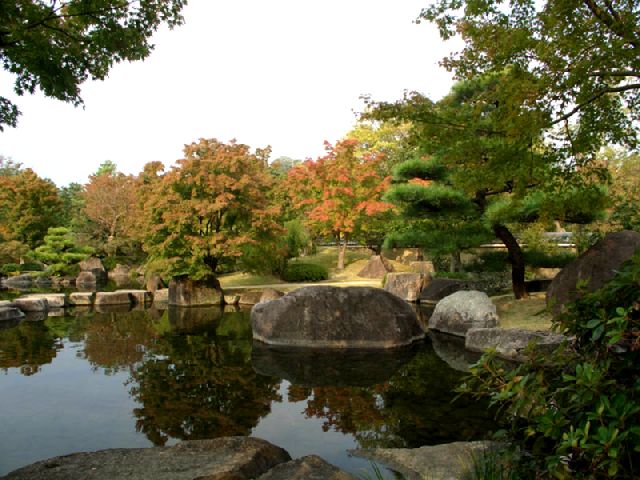
Thí cho kẻ ở phương xa lại: Alsmgiving to those from afar (a
distance).
Thí cho kẻ sắp đi xa: Almsgiving to those going afar (going to a
distance).
Thí cho kẻ bịnh tật ốm đau: Almsgiving to the sick.
Thí cho người đói khát: Almsgiving to the hungry.
Thí trí huệ và đạo đức cho người: Almsgiving to those wise in
Buddhist doctrine.
Ngũ Chủng Chánh Hành: See Ngũ Chánh Hạnh.
Ngũ Chủng Chánh Sắc: See Ngũ Chánh Hạnh.
Ngũ Chủng Cúng Dường: Five kinds of offerings—See Ngũ Cúng Dường.
Video
Quyet Nghi ve Cung Duong (Thich Nhat Tu)
Ngũ Chủng Dục Vọng: Five types of desire—See Ngũ Dục.
Ngũ Chủng Duy thức: Năm loại Duy Thức—Five kinds of wisdom or
insight or idealistic representation in the sutras and sastras (the
first four are objective and the fifth is subjective):
Cảnh Duy thức: Căn cứ vào cảnh mà thuyết về Duy Thức—Wisdom or
insight in objective conditions.
Giáo Duy thức: Giải thích về Duy Thức—Wisdom or insight in
interpretation.
Lý Duy thức: Luận về thành tựu đạo lý Duy Thức—Wisdom or insight in
principles.
Hành Duy thức: Nói rõ quán pháp của Duy Thức—Wisdom or insight in
meditation and practice.
Quả Duy thức: Nói về diệu cảnh giới của Phật quả—Wisdom or insight
in the fruits or results of Buddhahood.
Ngũ Chủng Đàn Pháp,五種壇法, Năm loại tất
địa—The five kinds of Mandala ceremonials—See Ngũ Chủng Tu Pháp
Ngũ Chủng Hạnh: See Ngũ Chủng Pháp Sư.
Ngũ Chủng Hộ Ma: Five kinds of braziers.
1-4) From one to four—See Hộ Ma (2).
5) Kính Ái Hộ Ma: Được sự thương yêu hộ trì
của chư Phật và chư Bồ Tát—To obtain the
loving protection of the Buddhas and
Bodhisattvas.
Ngũ Chủng Kim Cang Sứ: See Ngũ Đại Sứ Giả.
Ngũ Chủng Linh,五種鈴, The five kinds of
bells—See Ngũ Linh
Ngũ Chủng Ma,五種魔, The five kinds of
Maras associated with the five skandhas—See Ngũ Uẩn
Ngũ Chủng Na Hàm,五種那含, See Ngũ Chủng
Bất Hoà
Ngũ Chủng Quán
Đảnh,五種灌頂,
See Ngũ Chủng Tu Pháp
Ngũ Chủng Pháp
Giới,五種法界,
See Ngũ Pháp Giới
Ngũ Chủng Pháp Sư,五種法師, Năm loại Pháp
Sư—The five kinds of masters of the Law
Thụ Trì Pháp Sư: Ghi nhớ và trì giữ không quên: Receives and keeps.
Đọc Kinh Pháp Sư: Pháp sư chuyên nhìn vào kinh mà đọc—Reads.
Tụng Kinh Pháp Sư: Pháp sư đã thuộc kinh không cần đọc mà vẫn tụng
được—Recites.
Giảng Thuyết Pháp Sư: Pháp sư có khả năng đem các lời kinh Phật mà
giảng giải cho người khác—Expounds.
Thư Tả Pháp Sư: Pháp sư chuyên ghi chép lại kinh điển để truyền
bá—Copies the sutra.
Ngũ Chủng Pháp
Thân,五種法身,
Năm loại pháp thân của Phật—The five kinds of a Buddha’s dharmakaya
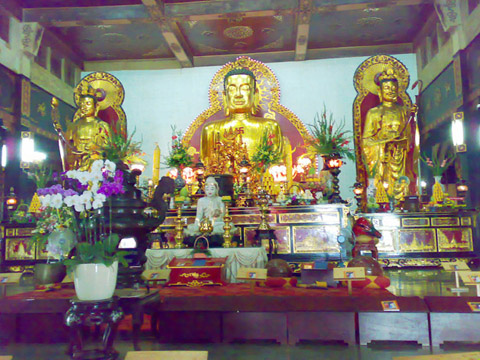
Theo trường phái Thiên Thai—According to the T’ien-T’ai Sect:
Như như trí pháp thân: Cái thực trí đã chứng ngộ lý như như—The
spiritual body of bhutatathata-wisdom (Sambhogakaya).
Công đức pháp thân: Hết thảy công đức thành tựu—The spiritual body
of all virtuous achievement (Sambhogakaya).
Tự pháp thân: Ứng thân—The spiritual body of incarnation in the
world (Nirmakaya).
Biến hóa pháp thân: The spiritual body of unlimited powers of
transformation (Nirmakaya).
Hư không pháp thân: Lý như như lìa tất cả tướng cũng như hư
không—The spiritual body of unlimited space (Dharmakaya).
(B) Theo Kinh Hoa nghiêm—According to
the Flower Adornment Sutra:
Pháp tánh sanh thân: Thân Như Lai do pháp tánh sanh ra—The body or
person of Buddha born from the dharma-nature.
Công đức pháp thân: Thân do muôn đức của Như Lai mà hợp thành—The
dharmakaya evolved by Buddha-virtue, or achievement.
Biến hóa pháp thân: Thân biến hóa vô hạn của Như Lai, hễ có cảm là
có hiện, có cơ là có ứng—The dharmakaya with unlimited powers of
transformation.
Thực tướng pháp thân: Thực thân hay thân vô tướng của Như Lai—The
real dharmakaya.
Hư không pháp thân: Pháp thân Như Lai rộng lớn tràn đầy khắp cả hư
không. Pháp thân của Như Lai dung thông cả ba cõi, bao trùm tất cả các
pháp, siêu việt và thanh thịnh—The universal dharmakaya. The dharmakaya
as being like space which enfolds all things, omniscient and pure.
Ngũ Chủng Quán
Đảnh,五種灌頂,
Năm loại quán đảnh—The five abhisecani baptisms of the esoteric school
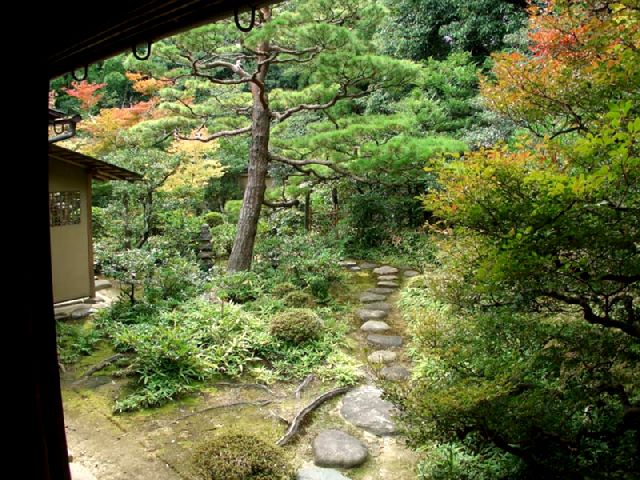
Quán đảnh dành cho A Xà Lê (Giáo thọ sư): Abhisecani baptism for
ordaining acaryas, teachers or preachers of the Law.
Quán đảnh dành cho thu nhận đệ tử: Abhisecani baptism for admitting
disciples.
Quán đảnh dành cho chấm dứt tai ương, khổ đau và tội lỗi:
Abhisecani baptism for putting an end to calamities or suffering for
sins.
Quán đảnh dành cho sự tiến bộ và thành công: Abhisecani baptism for
advancement or success.
Quán đảnh dành cho việc kiểm soát những thói hư tật xấu: Abhisecani
baptism for controlling evil spirits or getting rid of difficulties.
Ngũ Chủng Tam Muội: Năm loại Tam muội—Five kinds of samadhi:
Tứ Thiền Bát Định trong luân hồi sanh tử: On mortality, four
meditations and eight concentrations.
Thanh Văn Tứ Đế: Sravaka on the four truths (axioms).
Duyên Giác Thập Nhị nhân Duyên: Pratyeka-buddha on the twelve
nidanas.
Bồ Tát Lục Độ Vạn Hạnh: Bodhisattva on the six paramitas and ten
thousand good practices.
Phật Thừa bao trùm tất cả: The Buddha-vehicle which includes all
others.
Ngũ Chủng Tam Quy,五種三歸, Năm giai đoạn
quy y—There are five stages of taking refuges
Quy Y,歸依, Take refuge in
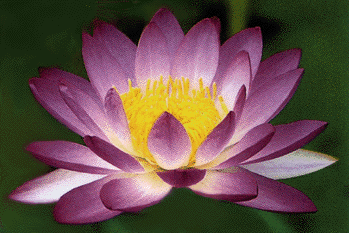
Video Quy Y (Thay
Hang Truong)
Quy Y Phật,歸依佛, Take refuge in the
Buddha
Video
Lễ Phật (Thich Nhat Tu)
Quy Y Pháp,歸依法, Take refuge in the
Dharma
Quy Y Tăng,歸依僧, Take refuge in the
Sangha
Quy Y Bát giới: Take refuge in the eight commandments.
Quy Y Thập giới: Take refuge in the Ten commandments.
The five modes of trisarana, or formulas of trust in the Triratna,
taken by those who:
Phiên tà: Turn from heresy.
Trì ngũ giới: Take the five commandments.
Trì bát giới: Take the eight commandments.
Trì Thập giới: Take the ten commandments.
Trì cụ túc giới: Take the complete commandments.
Ngũ Chủng Tán Loạn,五種散亂, See Ngũ Tán Loạn
Ngũ Chủng Tạng,五種藏, Tám vạn bốn ngàn
pháp môn của Đức Phật có thể được chia ra làm năm tạng (tùy theo căn cơ
trình độ của chúng sanh, họ phải dùng một trong năm chủng tạng nầy mà
tu tập. Khi Đức Phật còn tại thế, Ngài quan sát trong hàng đệ tử của
Ngài, thấy ai có sở trường chuyên môn nào thì phó chúc giáo pháp cho họ
thọ trì và truyền bá, tức là thọ lãnh giáo pháp từ kim khẩu của Đức
Phật. Sau khi Đức Phật diệt độ, các vị nầy y theo chánh pháp mà truyền
trì diệu lý, như tôn giả A Nan (Ananda) đa văn, thọ trì Tạng Kinh, Tôn
giả Ưu Ba Ly (Upali) thọ trì Tạng Luật, tôn giả Ca Chiên Diên
(Katyayana) thọ trì Tạng Luận, Bồ tát Văn Thù Sư Lợi (Manjusri) có đại
trí nên thọ trì Bát Nhã Đại Thừa, ngài Kim Cang Thủ Bồ Tát (Vajrapani)
được truyền thọ Mật chú Đà La Ni (Dharani), vân vân—The five “stores”
or the five differentiations of the one Buddha-nature
Như Lai Tạng,如來藏, The
Tathagata-nature, which is the fundamental universal nature possessed
by all the living
Chánh Pháp Tạng,正法藏, Pháp giới tạng—The
source or treasury of all right laws and virtues
Pháp Thân Tạng,法身藏, The storehouse of
the dharmakaya obtained by all saints
Xuất Thế Tạng,出世藏, Xuất thế gian
thượng thượng tạng—The eternal spiritual nature, free from earthly
errors
Tự Tánh
Thanh Tịnh Tạng,自性淸淨
藏, The storehouse of the pure Buddha-nature
Ngũ Chủng Tánh,五種性, The five
germ-natures or roots of bodhisatva development
Tập Chủng Tánh,習種性, Ngôi vị thập trụ,
tu tập không quán, phá bỏ các hoặc kiến—The germ-nature of study of the
void or immaterial, which corrects all illusions of time and space
(Thập trụ)
Tánh Chủng Tánh,性種性, Ngôi vị thập hạnh,
có khả năng phân biệt bản tánh của vạn pháp—The germ-nature of ability
to discriminate all the natures of phenomena and transform the living
(Thập hạnh)
Đạo Chủng Tánh,道種性, The middle-way
germ-nature, which attains insight into Buddha-laws (Thập hồi hướng)
Thánh Chủng Tánh,聖種性, Ngôi vị thập địa,
bồ tát phá bỏ vô minh để đi từ Hiền giả đến Thánh—The saint germ-nature
which produces holiness by destroying ignorance (Thập địa in which the
bodhisattva leaves the ranks of the sages and becomes the saints)
Đẳng Giác Chủng Tánh: Ngôi Bồ Đề có khả năng tiến đến Phật quả—The
bodhi-rank germ-nature which produces Buddhahood.
Ngũ Chủng Tạp Hạnh: See Nhũ Chánh Hạnh.
Ngũ
Chủng Tăng Thượng Duyên,五
種增上緣, Five excellent causes—See Ngũ Duyên
Ngũ Chủng Tham: Theo Thanh Tịnh Đạo, có năm loại tham—According to
The Path of Purification, there are five kinds of avarice:
Tham đối với chỗ ở: Avarice about dwellings.
Tham đối với quyến thuộc: Avarice about families.
Tham đối với lợi lộc: Avarice about gain.
Tham đối với pháp: Avarice about Dharma.
Tham đối với tiếng khen: Avarice about praise.
Ngũ Chủng Thiên,五種天, Năm loại chư
Thiên—Five classes of deva
Từ 1 đến 3 cũng giống như trong Tam Chủng Thiên: From 1 to 3 are
similar to that of the three classes of devas—See Tam Chủng Thiên.
Nghĩa Thiên,義天, Các bậc Bồ Tát từ
Thập Trụ trở lên có khả năng ngộ giải thâm nghĩa Đại Thừa—All
Bodhisattvas above the ten stages
Đệ Nhất Nghĩa Thiên: Chư Phật và Bồ Tát chẳng biến dịch, vì thường
trụ nên chẳng sinh, chẳng già, chẳng bịnh, chẳng chết—A supreme heaven
with Bodhisattvas and Buddhas in eternal immutability.
Ngũ Chủng Thiền: The five varieties of meditation.
Phàm Phu Thiền,凡夫禪, Thiền phàm phu
dành cho tất cả mọi người, giúp ta tập trung và kiểm soát tâm, là loại
thiền không chứa đựng nội dung triết lý hay tôn giáo. Thiền phàm phu là
thứ thiền thực hành thuần túy vì tin rằng nó có thể cải thiện sức khỏe
tinh thần lẫn thể xác. Tuy nhiên, dù thiền phàm phu có ích lợi rất
nhiều trong việc tu tập hơn là đọc vô số sách đạo đức triết học, vẫn
không thể giải quyết được vấn đề nền tảng của con người và mối tương
quan của con người và vũ trụ, vì nó không thể phá vỡ được cái mê hoặc
cơ bản về chính mình của hạng người thường, là mình rõ ràng khác với vũ
trụ—Ordinary Zen for anybody and everybody, which help people learn to
concentrate and control their mind, being free from any philosophic or
religious content. Ordinary is a pure Zen practice, in the belief that
it can improve both physical and mental health. However, the fact
remains that ordinary Zen, although far more beneficial for the
cultivation of the mind than the reading of countless books on ethics
and philosophy, is unable to resolve the fundamental problem of man and
his relation to the universe, because it cannot pierce the ordinary
man’s basic delusion of himself as distinctly other than the universe
Ngoại Đạo Thiền: Thiền ngoại đạo hay thiền theo con đường bên ngoài
Phật giáo, thí dụ như phép Yoga của Ấn Độ, phép tĩnh tọa của Khổng
giáo, hay phép tĩnh tâm thực hành của Ki Tô giáo, vân vân. Một khía
cạnh của thiền ngoại đạo là nó thường được thực hành để luyện các năng
lực hoặc kỹ năng siêu nhiên khác nào đó ngoài tầm với của người thường,
chẳng hạn như đi chân trần trên những lưỡi kiếm bén, hoặc nhìn những
con chim sẽ khiến chúng trở nên tê liệt. Một khía cạnh khác của thiền
ngoại đạo là thực hành để được tái sanh vào các cõi trời. Tất cả những
khía cạnh nầy đều không phải là mục tiêu của thiền Phật giáo; mục tiêu
tối thượng của người tu thiền Phật giáo là thành Phật—An outside way of
meditation or Outsider Zen, i.e. Indian (Hindu) Yoga, the quiet sitting
of Confucianism, contemplation practices in Christianity, etc. One
aspect of the outsider Zen is that it is often practiced in order to
cultivate various supranormal powers or skills, or to master certain
arts beyond the reach of ordinary man, i.e walking barefooted on sharp
sword blades or staring at sparrows so that they become paralized.
Another aspect of the outsider Zen is that it is practiced to obtain
rebirth in various heavens. These aspects of the outsider Zen are not
the objects of Zen Buddhism; the ultimate goal of Buddhist meditators
is to become a Buddha.
Tiểu Thừa Thiền: Thiền Tiểu Thừa nhằm chỉ dạy chúng ta cách đưa từ
trạng thái tâm nầy đến trạng thái tâm khác, thí dụ như từ mê mờ đến
giác ngộ. Tuy nhiên, Thiền Tiểu Thừa chỉ chú trọng đến sự an tâm của
một mình mình mà thôi. Mục đích của Thiền Tiểu Thừa là đạt được một
trong tứ Thánh quả của Tiểu Thừa—Hinayana Zen or Zen of Small Vehicle.
This is the vehicle or teaching that is to take you from one state of
mind to another state of mind, i.e. from delusion to enlightenment.
However, Zen of the Smal Vehicle looks only into one’s own peace of
mind. The purpose of Zen of Small Vehicle is to attain one of the four
degrees of saintliness of Hinayana.
Đại Thừa Thiền: Thiền Đại Thừa hay là thiền được chuyên chở
bằng cổ
xe lớn. Đây chính là một loại thiền Phật giáo vì mục đích của nó là
kiến tánh ngộ đạo trong cuộc sống hằng ngày của mình. Trong thực hành
thiền Đại thừa, khởi đầu là ý thức về chân tánh, nhưng khi đã ngộ thì
chúng ta mới nhận ra rằng tọa thiền còn hơn là một phương tiện để ngộ,
vì tọa thiền là sự thực hiện thật sự của chân tánh. Trong Thiền Đại
Thừa thì đối tượng là giác ngộ, nên người ta dễ nhận lầm tọa thiền chỉ
là một phương tiện mà thôi. Kỳ thật tất cả những vị Thầy đã ngộ đạo đều
cho rằng tọa thiền chính là sự thực hiện của Phật tánh vốn có chứ không
phải chỉ là một kỹ thuật để đạt được sự ngộ đạo. Nếu tọa thiền không
khác hơn một kỹ thuật như thế, người ta sẽ thấy rằng sau khi ngộ đạo
thì tọa thiền sẽ không còn cần thiết nữa. Nhưng chính Đạo Nguyên đã chỉ
rõ rằng ngược lại mới đúng, CÀNG CHỨNG NGỘ SÂU CÀNG THẤY CẦN THỰC
HÀNH—Mahayana Zen or Great Vehicle Zen, this is a truly Buddhist Zen,
for it has its central purpose, seeing into your essential nature and
realizing the way in your daily life. In the practice of Mahayana Zen
your aim in the beginning is to awaken to your true-nature, but upon
enlightenment you realize that meditation is more than a means to
enlightenment. It is the actualization of your true-nature. The object
of the Mahayana Zen is Awakening, it is easy to mistakenly regard
meditation as but a means. However, any enlightened masters point out
from the beginning that meditation is in fact the actualization of the
innate Buddha-nature and not merely a technique for achieving
enlightenment. If meditation were no more than such a technique, it
would follow that after awakening meditation would be unnecessary. But
T’ao-Yuan himself pointed out, precisely the reverse is true; THE MORE
DEEPLY YOU EXPERIENCE AWAKENING, THE MORE YOU PERCEIVE THE NEED FOR
PRACTICE.
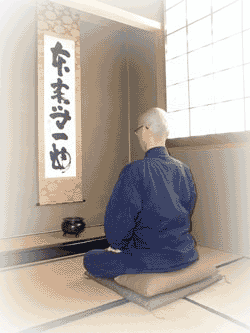
Tối Thượng
Thừa Thiền,最上乘禪,
Tối thượng thừa thiền là đỉnh cao cùng tột của thiền trong Phật giáo.
Thiền nầy được thực hành bởi chư Phật trong quá khứ như Phật Thích Ca
Mâu Ni và Phật A Di Đà. Đây là sự biểu lộ của sự sống tuyệt đối, sự
sống trong hình thức tinh khiết nhất. Đây là cách tọa thiền mà thiền sư
Đạo Nguyên bênh vực, nó không dính dáng gì đến việc phấn đấu để ngộ hay
đạt được bất cứ một đối tượng nào khác. Trong phương pháp thực hành cao
nhất nầy, phương tiện và cứu cánh là một. Thiền Đại Thừa và Thiền Tối
Thượng Thừa kỳ thật bổ sung cho nhau. Khi được thực hành đúng bạn ngồi
trong niềm tin kiên định rằng tọa thiền chính là thể hiện Chân tánh
không ô nhiễm của mình, và đồng thời bạn ngồi trong niềm tin trọn vẹn
rằng cái ngày ấy sẽ đến, khi bạn kêu lên: “Ô, nó đây rồi!” Bạn sẽ nhận
ra chân tánh nầy không lầm lẫn. Vì thế, về mặt tự thức, bạn không cần
cố gắng để ngộ—Zen of the highest vehicle. This is the culmination and
crown of Buddhist Zen. This Zen was practiced by all Buddhas of the
past, namely Sakyamuni and Amitabha. It is the expression of the
Absolute Life, life in its purest form. It is the meditation that
T’ao-Yuan chiefly advocated and it involves no struggle for awakening
or any other objects. In this highest practice, means and end are just
one, Mahayana Zen and Zen of the highest vehicle are in fact
complementary for one another. When rightly practiced, you sit in the
firm conviction that meditation is the actualization of your undefiled
True-nature, and at the same time you sit in complete faith that the
day will come when, exclaiming “Oh, this is it!” You will unmistakably
realize this True-nature. Therefore you need not self-consciously
strive for enlightenment.
Ngũ Chủng Thông,五種通, See Ngũ Thông
Ngũ Chủng
Thuyết Nhân,五種說人,
The five kinds of those who have testified to Buddhism
(A)
Phật tự khẩu thuyết: The Buddha.
Phật đệ tử thuyết: Đệ tử Phật thuyết pháp—Buddhist disciples.
Bậc Hiền triết thuyết hay tiên nhân thuyết: The sages.
Bậc Thánh nhân hay chư Thiên thuyết: The saints—Devas.
Hóa nhân hay Phàm phu thuyết: The incarnated beings.
Theo Kinh Hoa Nghiêm—According to the Flower Adornment Sutra:
Phật thuyết: The Buddha.
Bồ Tát thuyết: Bodhisattvas.
Thanh văn thuyết: Sravakas (hearers).
Nhân thuyết: Men.
Khí hay Chư pháp (vạn vật) thuyết: All things.
Ngũ Chủng Tín Tâm: The five right objects of faith:
From one to four: See Tứ Tín Tâm.
5) Ngũ Ba La Mật—The five
paramitas:
Bố Thí,布施, Almsgiving
Trì Giới,持戒, Morality
Nhẫn Nhục,忍辱, Patience
Tinh Tấn,精進, Zeal (Progress)
Thiền Định,禪定, Meditation
Ngũ Chủng Tu Pháp,五種修法, Năm loại tu
pháp—Five kinds of esoteric ceremonial
Phiến Để Ca,扇底迦, Tức Tai hay Tịch
Tai có nghĩa là dập tắt tai họa—Santika (skt)—For stopping calamities
Bố Sắc Trừng Ca: Paustika (skt)—Tăng ích hay Tăng vinh có nghĩa là
tăng trưởng—For success or prosperity.
A Tỳ Già Lỗ Ca,阿毗遮嚕迦, Điều phục hay
hàng phục—Abhicaraka (skt)—For supressing or exorcising
A Yết Sa Ni,阿羯沙尼, Câu triệu hay
Nhiếp triệu có nghĩa là vời đến—Akarsani (skt)—For calling or
attracting of good beings or aid
Phạt Thi Ca La Nã: Kính ái hay Khánh ái—Vasikarana (skt)—For
seeking the aid of Budhas and Bodhisattvas.
Ngũ Chủng Bỉ Lượng,五種比量, Năm phương pháp
suy lý trong Phật giáo—The five inferences in Buddhism logic
Tướng Tỷ Lượng: Căn cứ vào thứ đã thấy mà suy lý ra những thứ
khác—Inference from appearance (fire from smoke).
Thể Bỉ Lượng,體比量, Từ bộ phận mà suy
ra cái lý của toàn thể—Inference from the corporeal (two or more things
from one)
Nghiệp Bỉ Lượng,業比量, Từ nghiệp tác mà
suy lý nghiệp tác—Inference from action (animal from its footmark)
Pháp Bỉ Lượng,法比量, Từ một bộ phận sự
vật mà suy lý ra các bộ phận khác—Inference from recognized law (old
age from birth)
Nhân quả tỷ lượng: Thấy cái nhân mà suy ra cái lý của quả—Inference
from cause and effect (a traveller has a destination).
Ngũ Chuyên,五專, Năm thứ chuyên
cần—Theo Chân Tông của Nhật Bản, muốn vãng sanh Tịnh Độ, Phật ử phải tu
một trong năm thứ chuyên sau đây—According to the Japanese Shin Sect,
to ensure rebirth in the Pure Land, Buddhists must devote practicing
one of the following devotions

Chuyên Lễ,專禮, Devotion in worship
Chuyên Độc Tụng kinh điển: Devotion in reciting or reading sutras.
Chuyên Quán,專觀, Devotion in
meditation
Chuyên niệm hồng danh Phật: Devotion in invocation of the name of
Amitabha Buddha.
Chuyên Tán thán chư Phật: Devotion in praising Buddhas.
Ngũ Chuyển,五轉, Năm chuyển hay năm
giai đoạn phát triển từ nhân đến quả theo Mật Giáo—The five evolutions
or developments according to the Esoteric Sects
Phát Tâm Bồ Đề hay nguyện đắc thành quả vị Phật: To resolve on
Buddhahood.
Tu Hành hay trì giữ giới luật: Observance of the rules.
Giác ngộ Bồ Đề: Do nhân hành mà chứng được đạo quả—Attainment of
enlightenment.
Năng lực cứu độ tha nhân: Đạt tới khả năng cứu độ tha
nhân—Attainment of power to aid others according to need.
Đạt thành quả vị Niết bàn: Attainment of Nirvana.
Ngũ Chuyển
Thành Thân,五轉成身,
See Ngũ Chuyển and Ngũ Tướng Thành Thân
Ngũ Chướng,五障, Năm chướng ngại—The
five hindrances
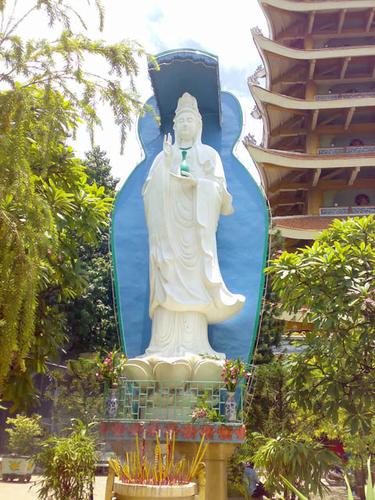
Năm chướng ngại mà Phật nói tới trong Kinh Pháp Hoa—The five
hindrances which the Buddha mentioned in the Lotus Sutra:
Tín Chướng: Khi dễ hay lừa dối là một chướng ngại cho niềm
tin—Deception is a bar to faith.
Tiến Chướng: Lười biếng là một chướng ngại cho tinh cần tu
tập—Sloth or laziness is a bar to zeal of cultivation.
Niệm Chướng: Sân hận hay giận dữ là một chướng ngại cho chánh
niệm—Anger is a bar to remembrance.
Định Chướng: Thù hận là một chướng ngại cho thiền định: Hatred is a
bar to meditation.
Tuệ Chướng: Oán ghét là một chướng ngại cho việc phát sanh trí
tuệ—The discontent is a bar to wisdom.
Theo Kinh Đại Nhật, có năm chướng ngại—According to the Vairocana
Sutra, there are five hindrances:
Phiền Não Chướng,煩惱障, The hindrances of
passion-nature (original sin)
Nghiệp Chướng,業障, The hindrances of
karma caused in previous lives
Sinh Chướng: The hindrances of the affairs of life.
Phát Chướng: The hindrances of no friendly or competent preceptor.
Sở tri Chướng: The hindrances of partial knowledge.
Ngũ Chướng Ngại:
Video
Gia Tu Thuong va Ghet (Thich Nhat Tu)
Năm chướng
ngại cho sự tiến bộ tinh thần, làm rối
loạn sự nhìn sâu vào vạn hữu, ngăn cản con người đạt tới sự tập trung
hoàn toàn, cũng như khám phá ra chân lý—Five hindrances to spiritual
progress that hinder the mind, obstruct insight, and prevent
cultivators from attaining complete concentration and from knowing the
truth (Five factors (hindrances) which blind
our vision from the truth):
Theo quan điểm Phật Giáo Đại Thừa—According to the point of view of
Mahayana Buddhism:
Tham dục: Kamachanda (p)—Tham ái duyên theo dục giới—Sensuous
lust—Greed.
Sân hận: Vyapada (p)—Ill-will—Hatred.
Si mê: Ignorance—Physical and mental torpor.
Lo âu: Uddhaccakukkucca (p)—Restlessness and worry.
Nghi hoặc: Vicikiccha (p)—Doubt.
Theo quan điểm Phật Giáo Nguyên Thủy—According to the point of view
of Theravada Buddhism:
Tham dục hay tham ái duyên theo dục giới: Kamachanda (p)—Sensual
desires.
Sân hận: Vyapada (p)—Hatred.
Hôn trầm dã dượi: Thinamiddha (p)—Sloth and torpor.
Phóng dật lo âu: Uddhaccakukkucca (p)—Restlessness and worry.
Hoài nghi: Vicikiccha (p)—Doubt, or indecision.
Ngũ Chướng Của Nữ Nhân: Theo
phẩm Đề Bà trong Kinh Pháp Hoa, người
nữ có năm chướng ngại—According to the Lotus Sutra, Devadatta Chapter,
there are five hindrances or obstacles of women:
Chẳng được làm Phạm Thiên Vương: Inability to become Brahma-kings.
Chẳng được làm Đế Thích: Inability to become Indras.
Chẳng được làm Ma Vương: Inability to become Mara-kings.
Chẳng được làm Chuyển Luân Vương: Inability to become
Cakravarti-kings.
Chẳng được làm Phật: Inability to become Buddhas. Kỳ thật, một
người mang thân nữ muốn thành Phật thì phải tu trong kiếp nầy sao cho
chuyển thành người nam trong kiếp lai sanh trước khi thành Phật—In
fact, if a woman wants to become a Buddha, that person has to cultivate
in this life so that in her next rebirth she can become a man.
Ngũ Chướng Tam Tòng Của Nữ Nhân: Năm chướng ngại và ba phục tòng
của người nữ—The five hindrances and the three subbordinations of
women:
Năm Chướng Ngại—The five hindrances—See Ngũ Chướng Của Nữ Nhân.
(II) Tam Tòng—The three subordinations:
Tại gia tòng phụ: Ở nhà thì phục tòng cha—At home she must
subordinate to her father.
Xuất giá tòng phu: Khi lấy chồng thì phải phục tòng chồng—When she
gets married, she must subordinate to her husband.
Phu tử tòng tử: Khi chồng qua đời thì phải phục tòng người con trai
cả—When her husband dies, she must subordinate to her eldest son.
Ngũ Công Đức Môn,五功德門, Năm loại công
đức phải thành tựu để được vãng sanh về cõi Tịnh Độ của Đức Phật A Di
Đà—The five effective or meritorious gates to Amitabha’s Pure Land
Lễ Bái Môn,禮拜門, Đem thân nghiệp
thờ kính Phật A Di Đà—Worship Amitabha Budha
Tán thán Môn: Đem khẩu nghiệp xưng danh hiệu Đức Phật A Di
Đà—Praise Amitabha Buddha.
Tác Nguyện Môn,作願門, Hướng về A Di Đà
Phật mà phát nguyện sanh về cõi Cực Lạc—Vow to Amitabha Buddha

Video
Phat Nguyen (Thich Nhat Tu)
Quán sát Môn: Đem trí huệ thiền định xem xét các công đức của cõi
Phật A Di Đà—Meditate on Amitabha Buddha.
Hồi hướng Môn: Sẳn sàng chịu khổ để cứu dộ chúng sanh, đem tất cả
công đức của mình bố thí lại cho hết thảy chúng sanh—Willingness to
suffer for universal salvation.
Ngũ Cụ Túc,五具足, Năm thứ đồ thờ đầy
đủ—The five complete utensils for worship
(2) Hai bình bông: Two flower vases.
(2) Hai chân đèn: Two candlesticks.
(1) Lư hương: a censer.
Ngũ Cúng Dường,五供養, Năm thứ lễ vật để
cúng dường—The five kinds of offerings—The five Buddhist offerings
Video
Quyet Nghi ve Cung Duong (Thich Nhat Tu)
(A)
Đồ Hương,塗香, Hương xức—Thuốc
cao—Unguents
Hoa Man,華鬘, Tràng hạt—Chaplets
Thiêu Hương (nhang hay hương thắp): Incense.
Phạn Thực,飯食, Thực phẩm—Food
Đăng Minh,燈明, Đèn hay nến
thắp—Lamps or candles
Ngũ Cư,五居, See Ngũ Tịnh Cư
Thiên
Ngũ Diệu,五妙, Năm thứ tinh diệu
chỉ năm cảnh của Sắc, Thanh, Hương, Vị, và Xúc trong cõi Tịnh Độ—The
five wonders of purified or transcendental sight, sound, smell, taste,
and touch in the Pure Land
Ngũ Diệu Cảnh Giới Lạc: Cảnh giới hỷ lạc của Sắc, Thanh, Hương, Vị
và Xúc nơi cõi Tịnh Độ—The joys of purified or transcendental sight,
sound, taste, smell and touch in the Pure Land.
Ngũ Dục,五欲, Five Desires—Phàm
phu định nghĩa hạnh phúc là được thỏa mãn những ham muốn của mình,
nhưng theo đạo Phật thì càng ham muốn nhiều thì càng khổ nhiều, vì ham
muốn của con người thường là vô cùng vô tận mà sức lực của con người
lại hữu hạn. Một khi ham muốn không được thỏa mãn là đau khổ. Khi chỉ
thỏa mãn được một phần ham muốn, thì chúng ta vẫn tiếp tục theo đuổi
chúng, và vì đó mà chúng ta gây thêm nhiều đau khổ. Chỉ khi nào chúng
ta tự biết đủ hay không còn chạy theo ham muốn thì chúng ta mới thật sự
có được sự yên ổn nơi thân tâm—Ordinary people define happiness as the
satisfaction of all desires, but Buddhism believes that more desire
brings more suffering because these desires are boundless but our
ability to realize them is limited. Once desires are unfulfilled, we
suffer. When desires are partially fulfilled, we continue to pursue
their complete fulfillment, and we create more suffering. It is only
after we feel self-sufficient with few desires, and no longer pursue
fulfillment of desires, we then can have a peaceful state of mind.
Nghĩa của Ngũ Dục—The meanings of Five Desires:
Năm thứ dấy lên lòng dục của con người từ bên trong là sắc, thanh,
hương, vị, và xúc—The five creature desires stimulated by the objects
of the five earthly senses—The five desires, arising from the objects
of the five senses or internal organs, such as things seen, heard,
smelt, tasted, or touched.
Ngũ dục là năm thứ dục dấy lên dục vọng của con người từ bên
ngoài—Five desires are five kinds of desire stimulated by external
materials.
Nội dung của Ngũ Dục—The contents of Five kinds of Desires:
Tài Dục,財欲,
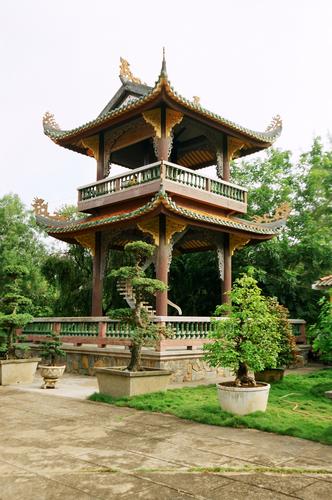
Ham muốn của cải, thế lực và tiền tài—Desires of wealth, power, and
money.
Ham muốn về tài năng: Desires for talent.
Sắc Dục,色欲, Ham muốn sắc
dục—Desire of sex or beauty
Danh Dục: Ham muốn danh tiếng, ảnh hưởng và tiếng khen—Desire of
fame, influence and praises.
Thực Dục,食欲, Ham muốn ăn
uống—Desire of food and drink or eating
Thùy Dục: Ham muốn ngủ nghỉ—Desire of sleep and rest.
Ngũ Duy,五唯, Pancatanmatrani
(skt)—Năm yếu tố sanh ra từ ngã mạn, vi tế và thô thiển—The five subtle
and rudimentary elements out of which rise the five sensations
Thanh Duy: Sensation of sound.
Xúc Duy: Sensation of touch.
Sắc Duy: Sensation of form.
Vị Duy: Sensation of taste.
Hương Duy: Sensation of smell.
Ngũ Duy Lượng,五唯量, See Ngũ Duy
Ngũ Duyên,五緣, Five excellent
causes of blessedness
(A)
Trì giới: Keeping the commandments.
Đủ đầy thực phẩm và quần áo: Sufficient food and clothing.
Sống ẩn dật: Living and practicing in a secluded abode.
Chấm dứt mọi lo âu: Cessation of worry.
Chọn đúng thiện hữu tri thức: Selecting or choosing good
friendship.
(B)
Loại trừ tội lỗi: Riddance of sins.
Hộ trì trường thọ: Protection through long life.
Quán tưởng Phật hay Đức A Di Đà: Vision of Buddha or Amitabha.
Phổ Cứu A Di Đà: Universal salvation by Amitabha.
Chắc chắn vãng sanh Tây Phương Cực Lạc: Assurance of Amitabha’s
heaven.
Ngũ Dược: See Ngũ Dược Thảo.
Ngũ Dược Thảo: Five kinds of roots used as food in sickness.
Ngũ (Trọng) Đái: The five heavy blockacges or serious
hindrances—See Ngũ Độn Sử.
Ngũ Đài: See Ngũ Đài Sơn.
Ngũ Đài Sơn,五臺山,
Pancasirsha—Pancasikha—Một trong bốn ngọn núi thiêng liêng của Phật
giáo Trung quốc (gần hướng đông bắc của tỉnh Sơn Tây). Ngũ Đài Sơn là
pháp hội của Văn Thù Sư Lợi Bồ Tát—One of the four mountains sacred to
Buddhism in China (near the north-eastern border of Shansi). The
mountain that contains the Buddhist Congregation of the Manjusri Maha
Bodhisattva.
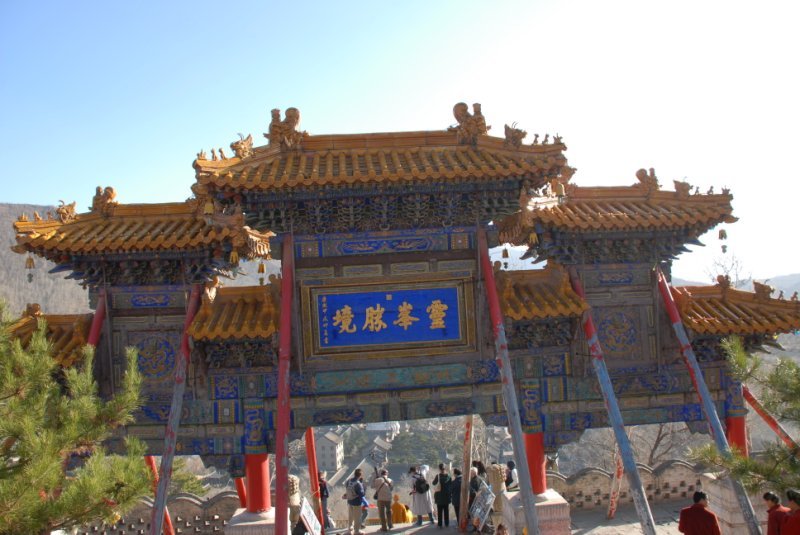
Ngũ (Trọng) Vân: The five banks of clouds or obstructions for a
woman—See Ngũ chướng.
Ngũ Đại,五大,
Năm thế hệ: Five generations.
Năm triều đại thời cổ Trung Quốc: The five dynasties of Ancient
China.
Năm đại hay năm yếu tố lớn—The five elements:
Đất: Earth.
Nước: Water.
Lửa: Fire.
Gió: Wind.
Hư không: Space.
** Những tông phái Mật giáo dùng năm ngón tay, khởi đầu bằng ngón
tay út, làm biểu hiệu cho ngũ đại—The esoteric sects use the five
fingers, beginning with the little finger, to symbolize the five
elements.
Ngũ Đại Châu: The five
continents:
Á châu: Asia.
Âu châu: Europe.
Mỹ châu: America.
Phi châu: Afirca.
Úc châu: Australia.
Ngũ Đại Dương: The five oceans:
Ấn Độ dương: Indian Ocean.
Bắc Băng dương: Arctic Ocean.
Đại Tây dương: Atlantic Ocean.
Nam Băng dương: Antarctic Ocean.
Thái Bình dương: Pacific Ocean.
Ngũ Đại Hình,五大形, Năm biểu trưng của
năm yếu tố lớn—The symbols of the five elements
Đất hình vuông: Earth as square.
Nước hình tròn: Water round.
Lửa hình chữ nhật: Fire triangular.
Gió hình bán nguyệt: Wind half moon.
Hư không bao gồm tất cả các hình trên: Space is the combination of
the other four.
Ngũ Đại Lực Bồ Tát,五大力菩薩, The five
powerful Bodhisattvas guardians of the four quarters and the center.
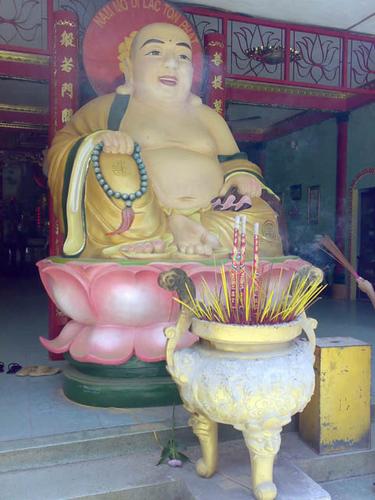
Ngũ Đại Phi Tình: Chúng vô tình quan hệ trực tiếp với ngũ đại,
trong khi chúng hữu tình quan hệ với ngũ đại cộng thêm tâm thức—The
inanimate connected directly with the five great elements, while the
animate connected with the same five, plus the mind or perception.
Ngũ Đại Quán: Meditation on the five elements—See Ngũ Đại.
Ngũ Đại Sắc,五大色, Năm màu chính—The
five chief colours
Màu vàng biểu trưng cho đất: Yellow for earth.
Màu trắng biểu trưng cho nước: White for water.
Màu đỏ biểu trưng cho lửa: Red for fire.
Màu đen biểu trưng cho gió: Black for wind.
Màu xanh da trời biểu trưng cho hư không: Azure for space or sky.
Ngũ Đại Sứ Giả: Ngũ Thiên
Sứ Giả—Năm sứ giả lớn—The five duta—Five
great lictors or deva-messengers:
Sanh: Birth.
Già: Old-age.
Bịnh: Disease.
Khổ: Sufferings—Earthly laws and punishments.
Chết: Death.
Ngũ Đại Thiên Sứ Giả: See Ngũ Đại Sứ Giả.
Ngũ Đại Tông Phái: The
five great Buddhist schools:
Trường phái giáo thuyết: The Teaching school.
Trường phái Luật: The Vinaya school.
Thiền tông: The Zen school.
Mật tông: The Secret school.
Tịnh Độ tông: The Pure Land school.
Ngũ Đính,五頂, Pancasikha (skt)—The
five locks on a boy’s head—See Ngũ Phật Đảnh Tôn
Ngũ Đính Luân
Vương,五頂輪王,
See Ngũ Phật Đảnh Tôn
Ngũ Đính Sơn,五頂山, See Ngũ Đài Sơn
Ngũ Đao,五刀, The five swords—The
five skandhas—See Ngũ Uẩn
Ngũ Đạo,五道, The five gati—See
Ngũ Thú
Ngũ Đạo Chuyển Luân Vương: Một trong Thập Ngục Vương, người xử lại
tội nhân sau ba năm thọ ngục—One of the ten kings of Hades who retries
the sufferers on their third year of imprisonment.
Ngũ Đạo Lục Đạo,五道六道, Năm nẻo sáu
đường—The five gati, the six gati—See Ngũ Đạo and Lục Đạo
Ngũ Đạo Minh Quan,五道冥官, Một vị quan
trong Thập Ngục Vương—An officer in the retinue of the ten kings of
Hades
Ngũ Đạo Tâm: Theo A Tỳ Đạt Ma Luận, có năm loại đạo tâm—According
to the Abhidharma, there are five kinds of path consciousness.
Đạo Tâm Nhập Lưu—Path consciousness of stream-entry:
Tâm Nhập Lưu Đạo Sơ Thiền, đồng phát sanh cùng Tầm, Sát, Phỉ, Lạc
và Nhất Điểm: The first jhana path consciousness of stream-entry
together with initial application, sustained application, zest,
happiness, and one-pointedness.
Tâm Nhập Lưu Đạo Nhị Thiền, đồng phát sanh cùng Sát, Phỉ, Lạc, và
Nhất Điểm: The second jhana path consciousness of stream-entry together
with sustained application, zest, happiness, and one-pointedness.
Tâm Nhập Lưu Đạo Tam Thiền, đồng phát sanh cùng Phỉ, Lạc, và Nhất
Điểm: The third jhana path consciousness of stream-entry together with
zest, happiness, and one-pointedness.
Tâm Nhập Lưu Đạo Tứ Thiền, đồng phát sanh cùng Lạc và Nhất Điểm:
The fourth jhana path consciousness of stream-entry together with
happiness and one-pointedness.
Tâm Nhập Lưu Đạo Ngũ Thiền, đồng phát sanh cùng Nhất Điểm: The
fifth jhana path consciousness of stream-entry together with
one-pointedness.
Ngũ Nhứt Lai Đạo Tâm—Five kinds of path conscious of
once-returning—The same as in (A), just replace “Stream-entry” with
“Once-returning.”
Ngũ Bất Lai Đạo Tâm—Five kinds of path consciousness of
non-returning—The same as in (A), just replace “Stream-entry” with
“Non-returning.”
Ngũ Vô Sanh Đạo Tâm—Five kinds of path consciousness of
Arahantship—The same as in (A), just replace “Stream-entry” with
“Arahantship.”
Ngũ Đạo Tướng Quân,五道將軍, Một vị tướng
quân trong Thập Ngục Vương chuyên giữ sổ bộ đời—A general in the
retinue of the ten kings of Hades, who keeps the book of life
Ngũ Đế,五諦, Năm chân lý—The five
parijnanas, ordinarily those arising from the five senses
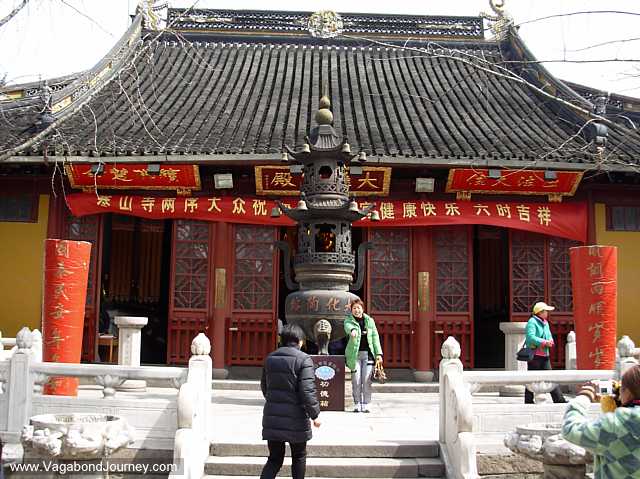
Nhân đế: Tập đế—The cause.
Quả đế: Khổ đế—The effect (suffering).
Trí đế: Năng tri đế hay Đạo đế—Diagnosis.
Cảnh đế: Sở tri đế hay Diệt đế—The end or cure (the extinction of
suffering).
Thắng đế: Chân Như—The supreme axiom.
Ngũ Điều Cà Sa: See Ngũ Điều Y.
Ngũ Điều Y,五條衣,
Ngũ điều cà sa—Áo của người xuất gia tu Phật thường được may bằng
năm mảnh chấp lại—The monk’s robe of five patches, ordinarily worn in
the monastery, when abroad and for general purposes.
Hạ Y,下衣, Termed as the lowest of the grades
of patch-robes
Viện Nội Đạo Hành Tạp Tác Y: Áo mặc để làm việc trong khuôn tự
viện—It is styled the garment ordinary worn in the monastery.
Ngũ Đình Tâm Quán: Năm phép quán để lắng tâm và diệt trừ ngũ
dục—The five meditations for settling the mind and ridding it of the
five errors of desires, hate, ignorance, the self, and a wayward or
confused mind—The five-fold procedures for quieting the mind.
Năm phép quán theo Phật Giáo Đại Thừa—The five meditations for
setting the mind in Mahayana Buddhism:
Video Hanh Gia Tam
Linh(Thich Nhat Tu)
Quán Bất Tịnh: Quán thân bất tịnh—Contemplation of the impurity of
the body—Quán thế gia bất tịnh để diệt trừ tham dục và keo kiệt. Ngoài
ra, Phật dạy nên quán Thân và chư pháp bất tịnh. Kỳ thật dưới lớp da,
thân thể chúng ta chứa đựng toàn là những thứ nhơ nhớp và hôi thúi như
thịt, xương, máu, mủ, đàm, dãi, phân, nước tiểu, vân vân. Thế nên sau
khi quán sát tường tận, chúng ta thấy rõ không có gì để ôm ấp thân
nầy—Meditation on impurity of the worldly life to adjust the mind with
regard to passion and avarice. Besides, the Buddha also advised us to
contemplate that the body and all things as impure or filthy (vileness
of all things). In fact, beneath the layers of skin, our body contains
filthy and smelly substances such as meat, bones, blood, pus, phlegm,
saliva, excrement, urine, etc. After reflecting carefully of it, we can
conclude that our body is hardly worth cherishing.
Quán Từ bi: Quán từ bi để thương xót các loài hữu tình, đồng thời
vun bồi ý niệm thiện cảm với mọi người cũng như diệt trừ sân nhuế, lấy
từ bi diệt trừ sân hận. Chúng ta nên quán rằng tất cả chúng sanh, nhất
là con người, đều đồng một chân thể bình đẳng. Vì thế, nếu muốn, họ
cũng có thể đoạn trừ lòng thù hận và mở rộng lòng yêu thương cứu độ
chúng sanh—Contemplation on Compassion and Loving-kindness—Meditation
on pity (mercy) for all and to rid of hate and to cultivate the idea of
sympathy to others and to stop the tendency of anger and destroy
resentment. We must visualize that all sentient beings, especially
people equally have a Buddha-nature. So, they are able, if they want,
to eradicate hatred and develop kindness and compassion to save others.
Quán Nhân Duyên: Quán sát lý mười hai nhân duyên để trừ khử vô minh
để thấy rằng vạn pháp vạn hữu, hữu hình cũng như vô hình đều vô thường.
Chúng do duyên sanh mà có. Thân ta, sau khi trưởng thành, già, bệnh,
chết; trong khi tâm ta luôn thay đổi, khi giận khi thương, khi vui khi
buồn—Contemplation on the twelve links of Dependent Origination or
Causality to rid of ignorance. Contemplation on Cause and Condition to
see that all things in the world either visible or invisible are
impermanent. They come into being through the process of conditions.
Our body, after adulthood, grows older, delibitates and dies; whle our
mind is always changing, at times filled with anger or love, at times
happy or sad.
Quán giới phân biệt: Quán giới phân biệt để nhận thức sự sai khác
giữa các quan điểm, để diệt trừ ngã kiến—Meditation on diversity of
realms to see the difference of standpoints and to get rid of selfish
views.
Quán giới phân biệt là phân biệt và quán tưởng sự giả hợp của 18
giới gồm 6 căn, 6 trần và sáu thức để thấy chúng không thật có “ngã
pháp.” Mục đích là để diệt trừ ngã chấp và pháp chấp: Contemplation on
the Relativity of the eighteen realms aims at discerning the falsity of
the union of the 18 realms of six sense organs, six objects, and six
related Alaya consciousnesses, so as to get rid of the ego-attachment
and the dharma-attachment.
Quán chư pháp để có sự phân biệt chân chánh cũng như diệt trừ bản
ngã: Contemplation on all dharmas to obtain right discrimination and to
rid of the self.
Quán Sổ tức (trì tức niệm): Đếm số hơi thở nhằm đưa đến sự tập
trung tư tưởng và diệt trừ loạn tâm. Đây là phương thức hay nhất cho
người sơ cơ kiểm soát và thanh tịnh tâm mình bằng cách đếm hơi thở vào
thở ra: Contemplation on counting breath (Breathing) leading to
concentration so as to rid of scattered
(inattentive—distracted—unsettled—confused) mind (to correct the
tendency of mental dispersion). This is the best way for beginners to
control and pacify their mind by counting their breathing in and out.
Năm phép quán theo Phật Giáo
Nguyên Thủy.
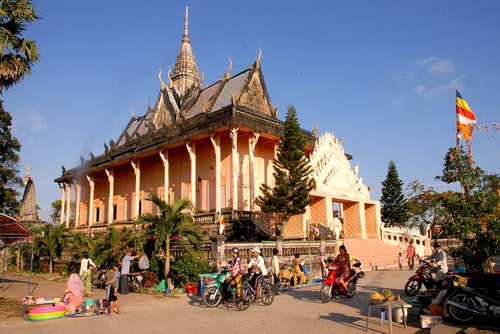
Trong kinh Trung A Hàm,
Đức Phật đã chỉ vạch 5 điều mà hành giả cần quán chiếu, để loại trừ
những tư tưởng bất thiện, tâm trở lại an trụ vững vàng và vắng lặng,
hợp nhất và định vào đề mục mà mình đang quán chiếu, để tự mình làm chủ
lấy con đường mà tiến trình tư tưởng mình đã trải qua. Tự mình cắt lìa
tham ái và trọn vẹn tháo gỡ thằng thúc phát sanh bởi tham ái. Làm được
như vậy là tự mình đã khắc phục ngã mạn và chấm dứt khổ đau—The five
meditations for setting the minh in the Theravada Buddhism. In Majjhima
Nikaya, the Buddha pointed out five things a cultivator should always
reflect on in order to remove evil thoughts, and to help the mind stand
firm and calm, become unified and concentrated within its subject of
meditation. To accomplish these, that meditator is called the master of
the paths along which thoughts travel. He thinks the thought that he
wants to think. He has cut off craving and removed the fetter fully;
mastering pride he has made an end of suffering:
Nếu khi suy niệm về một đề mục mà những tư tưởng xấu xa tội lỗi,
bất thiện, kết hợp với tham sân si phát sanh đến hành giả, để loại trừ
những tư tưởng bất thiện ấy, vị nầy nên hướng tâm suy niệm về một đề
mục khác có tính cách thiện lành. Chừng ấy tâm bất thiện bị loại trừ.
Do sự loại trừ nầy, tâm trở lại vững vàng an trụ, và trở nên vắng lặng,
hợp nhất và định vào đề mục mình đang quán chiếu: If through reflection
on an object, evil, unwholesome thoughts associated with desire, hate
and delusion arise in a meditator, in order to get rid of them he
should reflect of another object which is wholesome. Then the evil,
unwholesome thoughts are removed; they disappear. By their removal the
mind stands firm and becoming calm, unified and concentrated within his
subject of meditation.
Nếu khi đã hướng tâm về đề mục khác có tính cách thiện lành mà
những tư tưởng bất thiện vẫn còn phát sanh, hành giả nên suy xét về mối
hiểm họa của nó như sau: “Quả thật vậy, những tư tưởng nầy của ta rõ
ràng là bất thiện, đáng bị chê trách, và chúng sẽ đem lại quả khổ.”
Chừng ấy, những tư tưởng bất thiện sẽ bị loại trừ tan biến. Do sự loại
trừ nầy mà tâm của hành giả trở lại vững vàng an trụ, và trở nên vắng
lặng, hợp nhất và định vào đề mục mình đang quán chiếu: If the evil
thoughts still arise in a meditator who reflects on another object
which is wholesome, he should consider the disadvantages of evil
thoughts thus: “Indeed, these thoughts of mine are unwholesome,
blameworthy, and bring painful consequences.” Then his evil thoughts
are removed, they disappear. By their removal the mind stands firm and
becoming calm, unified and concentrated within his subject of
meditation.
Nếu đã suy xét về hiểm họa của những tư tưởng bất thiện mà nó vẫn
còn phát sanh, hành giả nên phát lờ đi, không để ý đến, không lưu tâm
suy niệm về các pháp bất thiện ấy nữa. Chừng ấy những tư tưởng bất
thiện sẽ bị loại trừ tan biến. Do sự loại trừ nầy mà tâm hành giả trở
lại vững vàng an trụ, và trở nên vắng lặng, hợp nhất và định vào đề mục
mình đang quán chiếu: If the evil thoughts still arise in a meditator
who thinks over their disadvantages, he should pay no attention to, and
not reflect on those evil thoughts. The the evil thoughts are removed,
they disappear. By their removal the mind stands firm and becoming
calm, unified and concentrated within his subject of meditation.
Nếu đã không để ý đến, không lưu tâm suy niệm về các tư tưởng bất
thiện ấy nữa, mà chúng vẫn còn phát sanh, hành giả nên suy niệm về việc
loại trừ nguồn gốc của những tư tưởng bất thiện ấy. Chừng ấy, những tư
tưởng bất thiện bị loại trừ tan biến. Do sự loại trừ nầy mà tâm hành
giả trở lại vững vàng an trụ, và trở nên vắng lặng, hợp nhất và định
vào đề mục mình đang quán chiếu: If the evil thoughts still arise in a
meditator who pays no attention to and does not reflect on evil
thoughts, he should reflect on removing the roof of those thoughts.
Then the evil unwholesome thoughts are removed, they disappear. By
their removal, the mind stands firm and becoming calm, unified and
concentrated within his subject of meditation.
Nếu đã suy niệm về việc loại trừ nguồn gốc của những tư tưởng bất
thiện ấy mà chúng vẫn còn phát sanh, hành giả nên cắn răng lại và ép
lưỡi vào đóc giọng, thu thúc, khắc phục và lấy tâm thiện kiểm soát tâm
bất thiện. Chừng ấy, những tư tưởng bất thiện bị loại trừ tan biến. Do
sự loại trừ nầy mà tâm hành giả trở lại vững vàng an trụ, trở nên vắng
lặng, hợp nhất và định vào đề mục mà mình đang quán chiếu: If the evil
thoughts still arise in a meditator who reflects on the removal of
their root, he should with clenched teeth, and tongue pressed against
his palate restraint, overcome and control the evil mind with the good
mind. Then the evil thoughts are removed, they disappear. By their
removal the mind stands firm and becoming calm, unified and
concentrated within his subject of meditation.
Ngũ Đình Tứ Niệm,五停四念, Ngũ Đình Tâm
quán và Tứ Niệm Xứ nhằm giúp cho tâm định tĩnh cũng như thoát khỏi ngũ
dục và loạn tâm—Five meditations and four foundations of mindfulness
for settling the mind and ridding it of the five errors of desire,
hate, ignorance, self, and wayward or confused mind
Ngũ Đình Tâm Quán: Five meditations—See Ngũ Đình Tâm Quán.
Tứ Niệm Xứ,四念處, Four foundations
of mindfulness—See Tứ Niệm Xứ
Ngũ Độ,五度, Năm phương tiện đưa
chúng sanh qua biển sanh tử—The five means of transportation over the
sea of mortality to salvation (five paramitas)
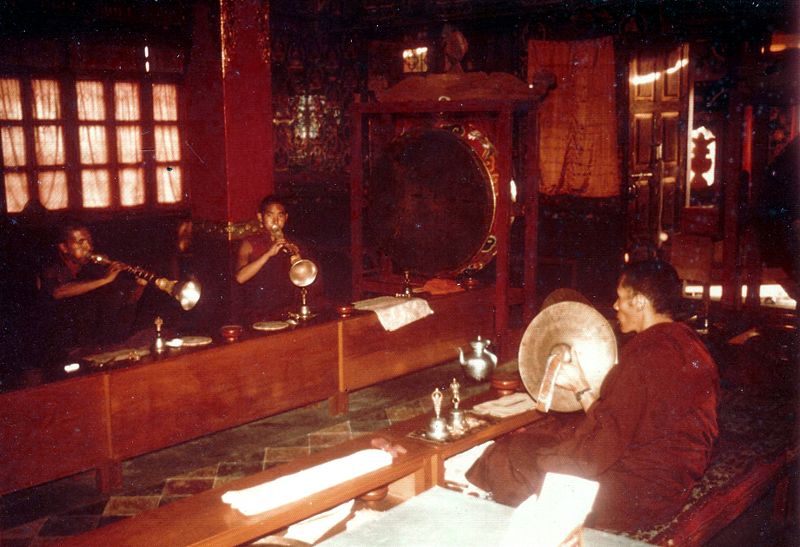
(A)
Bố thí: Almsgiving.
Trì giới: Commandment-keeping.
Nhẫn nhục: Patience under provocation.
Tinh tấn: Zeal.
Thiền định: Meditation.
** See Lục Độ Ba La Mật.
(B) Năm vương quốc Ấn Độ hay năm tôn giáo lớn ở Ấn Độ—The five
kingdoms of ancient India or five great religions of India.
Ngũ Độc: The five kysaya
periods of turbidity, impurity or chaos:
Kiếp độc: The kalpa in decay, when it suffers deterioration and
gives rise to the ensuing form—The defilement of the world-age, when
war and natural disasters are rife.
Kiến độc: Deterioration of view, egoism—The defilement of views,
when incorrect, perverse thoughts and ideas are predominant.
Phiền não độc: The passions and delusions of desire, anger,
stupidity, pride, and doubt prevail—The defilement of passions, when
all kinds of transgressions are exalted.
Chúng sanh độc: In consequence human miseries increase and
happiness decreaces—The defilement of the human being condition, when
people are usually dissatisfied and unhappy.
Mệnh độc: Human lifetime gradually diminishes to ten years—The
defilement of the life-span, when the human life-span as a whole
decreases.
Ngũ Độn Sử,五鈍使, Panca-klesa—Năm
thứ mê mờ ám độn bắt nguồn từ thân kiến mà sanh ra—Five dull,
unintelligent, or stupid vices or temptations—Five envoys of stupitity
caused by the illusion of the body or self
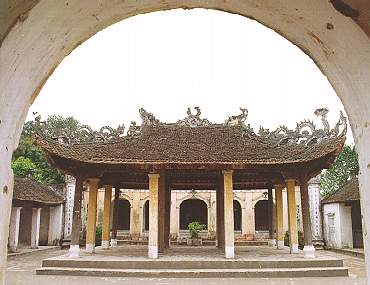
Tham: Desire—Hankering after—Greed, which causes clinging to
earthly life and things, therefore reincarnation.
Sân: Anger or resentment.
Si: Stupidity or foolishness.
Mạn Mạn,漫漫, Arrogance
Nghi: Doubt.
Ngũ Đồng Duyên
Ý Thức,五同緣意識,
Ý thức cùng với năm thức khác duyên với năm cảnh—The mental conception
combines with the perceptions of the five senses
Ngũ Đức Tự Tứ: Năm đức tự tứ—Cử hành nghi thức tự tứ cử tội trong
ngày kết thúc an cư kiết hạ—The five virtues require in a confessor at
the annual confessional ending the rainy retreat:
Bất Ái,不愛, Không luyến
ái—Freedom from predilections
Bất Nhuế: Không sân hận—Freedom from anger.
Bất Bố,不怖, Không sợ hãi—Freedom
from fear
Bất Si: Không si mê—Freedom from ignorance or not easily deceived.
Trị tự tứ bất dữ tự tứ: Biết tự tứ và không biết tự tứ—Discernment
of shirkers of confession.
Ngũ Gia Sở Cộng,五家所共, Năm nhà của
chung hay tiền của thế gian đều có một thứ cám dỗ chung—The five
classes of wealth in the world which have their common prey, the wealth
struggled for by others
Vua: Rulers.
Giặc: Thieves.
Lửa: Fire.
Nước: Water.
Con ác: Prodigal sons
Ngũ Gia Thất Tông,五家七宗, Năm nhà bảy
phái, chỉ sự phân chia tông phái trong Thiền tông Trung Hoa. Thiền Tông
Trung Hoa chia làm hai phái Bắc Thần Tú, Nam Huệ Năng. Bắc Thần Tú vẫn
duy trì một tông không bị phân chia, Nam Huệ Năng chia ra làm bảy phái
(Qui Ngưỡng, Lâm tế, Tào Động, Vân Môn, Pháp Nhãn, Hoàng Long và Dương
Kỳ)—Divisions of the Chinese Zen or Meditative School. It divided into
Northern and Southern schools under Shen-Hsiu and Hui-Neng
respectively. The northern school continued as a unit, the southern
divided into seven sects
Ngũ Giả Danh Hảo Tâm Bố Thí Nhân: Năm loại người giả danh hảo tâm
mà bố thí—Five kinds of people who pretend to give out of goodness of
their hearts.
Miệng nói tốt, hoặc nói bố thí mà không bao giờ chịu thực hành, chỉ
là những lời hứa trống rỗng: Talk of goodness or giving, but they never
carry out what they say, only hollow speech or empty promises.
Lời nói và hành động đều trái ngược nhau, tức là ngôn hành bất
tương ưng: Speech and actions contradict one another.
Bố thí mà trong tâm luôn mong cầu được bồi hoàn bằng các sự đền ơn
đáp nghĩa: Give but their minds always hope that their actions will be
compensated and be returned in some way.
Bỏ ra có một tấc mà muốn thâu vào một thước: Give little but want a
great deal in return.
Gieo trồng ít mà muốn đặng trái nhiều: Plant few seeds but wish to
harvest abundance of fruits.
Ngũ Giác,五覺,

Lầu năm góc: Pentagon.
Năm loại giác—The five states of bodhi or states of enlightenment:
Bổn giác: Trí huệ hay sự hiểu biết tuyệt đối bên trong hay Bồ Đề
vốn sẳn có trong mỗi người—Absolute eternal wisdom, or bodhi which
possessed by everyone.
Thủy giác: Thể giác hay trí huệ Bồ Đề trong giai đoạn cuối cùng,
dựa vào công phu tu hành mà có—Bodhi in its initial stages or in
action, arising from right observances.
Tương tự giác: Bồ Tát ở ngôi Thập Tín được giác thể tương tự như
Thủy Giác—Bodhisattva-attainment of bodhi in action of the ten faiths.
Tùy phần giác: Bồ Tát ở ngôi Thập Trụ, Thập Hành và Thập Hồi Hướng,
từng phần được thủy giác—Further Bodhisattva-enlightenment in action of
the ten grounds, ten necessary activities and ten kinds of dedications,
according to their capacity, attain Bodhi in its final stages.
Cứu cánh giác: Diệu Giác—Thành tựu viên mãn bổn giác—To reach the
final or complete enlightenment—To reach the perfect quiescent stage of
orginal bodhi.
Ngũ Giải Thoát
Luân,五解脫輪,
The five wheels of liberation or salvation (the five mandala in which
are the Five Dhyani-Buddhas)—See Ngũ Phật
Ngũ Giải Thoát Thành Thục Tưởng: Theo Kinh Phúng Tụng trong Trường
Bộ Kinh, có năm giải thoát thành thục tưởng—According to the Sangiti
Sutta in the Long Discourses of the Buddha, there are five perceptions
of making for maturity of liberation:
Vô Thường Tưởng,無常想, Anicca-sanna
(p)—The perception of impermanence
Khổ Tưởng Trong Vô Thường: Anicce-dukkha-sanna (p)—The perception
of suffering in impermanence.
Vô Ngã Tưởng trong Khổ: Dukkhe-anatta-sanna (p)—The perception of
impersonality in suffering.
Đoạn Trừ Tưởng: Pahana-sanna (p)—The perception of abandoning.
Vô Tham Tưởng: Viraga-sanna (p)—The perception of dispassion.
Ngũ Giải Thoát Xứ: Vimuttayatanani (p)—Five bases of
deliverance—
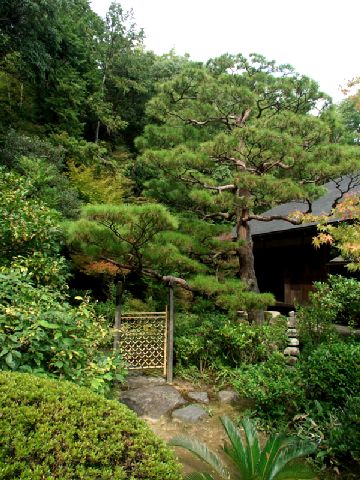
Theo Kinh Phúng Tụng trong Trường Bộ Kinh, có năm giải
thoát xứ—According to the Sangiti Sutta in the Long Discourses of the
Buddha, there are five bases of deliverance:
Giải Thoát Xứ Thứ Nhất—The first base of deliverance: Ở đây vị Tỳ
Kheo, khi nghe bậc Đạo Sư, hay một vị đồng phạm hạnh đáng kính nào
thuyết pháp, đối với pháp ấy, hiểu được nghĩa lý và văn cú. Nhờ vậy mà
sanh khoan khoái, nhờ khoan khoái hỷ sanh. Nhờ hỷ tâm, thân khinh an
sanh. Nhờ thân khinh an, lạc thọ sanh. Nhờ lạc thọ, tâm được định
tỉnh—Here, the teacher or a respected fellow-disciple teaches a monk
Dhamma. Anh he receives the teaching, he gains a grasp of both the
spirit and the letter of the teaching. At this, joy arises in him, and
from this joy, delight; and by this delight his sense are calmed, he
feels happiness as a result, and with this happiness his mind is
established.
Ở đây vị Tỳ Kheo không nghe giáo pháp, nhưng vị ấy, theo điều đã
nghe đã học từ trước, thuyết pháp một cách rộng rãi cho các người khác,
vị ấy đối với pháp ấy, hiểu được nghĩa lý và văn cú. Nhờ vậy mà sanh
khoan khoái, nhờ khoan khoái sanh hỷ. Nhờ hỷ tâm mà thân khinh an. Nhờ
thân khinh an, lạc thọ sanh. Nhờ lạc thọ tâm được định tỉnh—Here a monk
who has not heard the teaching, but in the course of teaching Dhamma to
others he has learnt it by heart as he has heard it. At this, joy
arises in him, and from this joy, delight; and by this delight his
senses are calmed, he feels happiness as a result, and with this
happiness his mind is established.
Giải Thoát Xứ Thứ Ba—The third base of deliverance: Ở đây vị Tỳ
Kheo không được nghe bậc Đạo Sư hay một vị đồng phạm đáng kính nào
thuyết pháp, cũng không theo điều đã nghe, điều đã học thuyết pháp một
cách rộng rãi cho các người khác. Vị ấy theo điều đã nghe đã học, tụng
đọc pháp một cách rõ ràng, do vậy đối với pháp ấy hiểu được nghĩa lý và
văn cú. Nhờ hiểu được nghĩa lý và văn cú mà thân được khinh an. Nhờ
thân khinh an, lạc thọ sanh. Nhờ lạc thọ, tâm được định tỉnh—Here a
monk who has not heard the teaching, but as he is chanting the Dhamma,
joy arises in him, and from this joy, delight; and by this delight his
senses are calmed, he feels happiness as a result, and with this
happiness his mind is established.
Giải Thoát Xứ Thứ Tư—The fourth base of deliverance: Ở đây vị Tỳ
Kheo, không nghe một bậc Đạo Sư hay một vị đồng phạm hạnh thuyết pháp;
cũng không theo điều đã nghe đã học mà thuyết pháp rộng rãi cho các
người khác; cũng không theo điều đã nghe đã học, tụng đọc một cách rõ
ràng. Vị ấy theo những điều đã nghe đã học, dùng tâm tầm cầu, suy tư,
quán sát pháp ấy. Nhờ vậy mà đối với pháp ấy hiểu được nghĩa lý và văn
cú. Nhờ hiểu nghĩa lý và văn cú, khoan khoái sanh. Nhờ khoan khoái
sanh, hỷ tâm sanh. Nhờ hỷ tâm, thân khinh an. Nhờ khinh an, lạc thọ
sanh. Nhờ lạc thọ, tâm được định tỉnh: Here a monk who has not heard
the teaching from a teacher or a respected fellow-disciple; nor has he
taught the Dhamma; nor has he chanted the Dhamma; but when he applies
his mind to the Dhamma, thinks and ponders over it and concentrates his
attention on it, joy arises in him, and from this joy, delight; and by
this delight his senses are calmed, he feels happiness as a result, and
with this happiness his mind is established.
Giải Thoát Xứ Thứ Năm—The fifth base of deliverance: Ở đây vị Tỳ
Kheo không nghe bậc Đạo Sư hay một vị đồng phạm hạnh đáng kính nào
thuyết pháp, cũng không theo điều đã nghe đã học thuyết giảng một cách
rộng rãi cho các người khác, cũng không theo điều đã nghe đã học dùng
tâm tầm cầu, suy tư, quán sát, nhưng vị Tỳ Kheo ấy khéo nắm giữ một
định tướng, khéo tác ý, khéo thọ trì, khéo thể nhập nhờ trí tuệ, nên
đối với pháp ấy hiểu được nghĩa lý và văn cú. Nhờ hiểu được nghĩa lý và
văn cú, nên khoan khoái sanh. Nhờ khoan khoái sanh, hỷ tâm sanh. Nhờ hỷ
tâm, thân khinh an. Nhờ thân khinh an, lạc thọ sanh. Nhờ lạc thọ, tâm
định tỉnh—Here a monk who has not heard the teaching from a teacher or
a respected fellow-disciple; nor has he taught the Dhamma; nor has he
chanted the Dhamma; nor has he thought or pondered over the Dhamma; but
when he has properly grasped some concentration-sign
(samadhi-nimittam), has well considered it, applied his mind to it
(supadharitam), and has well penetrated it with wisdom
(suppatividdham-pannaya). At this, joy arises in him, and from this
joy, delight; and by this delight his senses are calmed, he feels
happiness as a result, and with this happiness his mind is established.
Ngũ Gián Sắc: See Ngũ Sắc.
Ngũ Giáo,五教, Năm giáo phái của
tông Hoa Nghiêm. Có hai nhóm—The five divisions of Buddhism according
to the Hua-yen School. There are two groups
Từ sư Đỗ Thuận xuống đến sư Hiền Thủ—From Tu-Shun down to
Hsien-Shou:
Tiểu Thừa Giáo,小乘教, Theravada
(skt)—Phái Tiểu Thừa Theravada giải thích về “ngã không,” chư pháp là
có thật, và niết bàn là đoạn diệt (dành cho hạng chúng sanh có căn cơ
thấp kém nhỏ nhoi). Giáo lý nầy thuộc kinh điển A Hàm. Mặc dù chúng phủ
nhận sự hiện hữu của một bản ngã cá biệt, lại chủ trương thực hữu và
thừa nhận sự hiện hữu của tất cả pháp sai biệt hay pháp hữu. Theo kinh
điển nầy thì Niết Bàn là cứu cánh diệt tận, nhưng lại không thấu triệt
về tính cách bất thực (pháp không) của chư pháp. Về duyên khởi, luận,
giáo lý nầy thuộc về nghiệp cảm duyên khởi—The Doctrine of the Small
Vehicle or Hinayana. The Hinayana corresponds to the Agama sutras which
interpret that the self is without substance, the separate elements or
dharmas are real, and nirvana is their total annihilation. This
doctrine refers to the teaching of the four Agamas. Although they deny
the existence of the personal self (pudgala-sunyata), they are
realistic and admit the existence of all separate elements (dharma).
They hold that Nirvana is total extinction, and yet they do not
understand much of the unreality of all elements (dharma-sunyata). As
to the causation theory, they attribute it to action-influence.
Đại Thừa Thủy Giáo: Khởi thủy Đại Thừa, được chia làm hai chi (giáo
lý dạy cho những người vừa bước lên Đại Thừa). Cả hai đều không thừa
nhận sự hiện hữu của Phật tánh trong mọi loài, nên cả hai được xem như
là nhập môn sơ thủy—The Elementary Doctrine of the Great Vehicle
(Mahayana). The primary or elementary stage of Mahayana is divided into
two sections. Since neither admits the existence of the Buddha-nature
(Buddha-svabhava) in all beings, both are considered to be elementary:
Tướng Thủy Giáo: Giáo lý nhập môn y cứ trên sai biệt tướng của chư
pháp, như Pháp Tướng Tông. Tướng Thủy Giáo phân tách về tánh đặc thù
của chư pháp, được tìm thấy trong các kinh Du Già—The elementary
doctrine based on the specific character of all elements
(dharma-laksana), e.g., the Idealistic School or Dharmalaksana.
Realistic Mahayana which analyzes the specific and distinct character
of the dharmas, found in the Yogachara Sutras.
Pháp Tướng tông nêu lên thuyết A-Lại-Da duyên khởi trên nền tảng
pháp tướng và không biết đến nhất thể của sự và lý. Vì tông nầy chủ
trương sự sai biệt căn để của năm hạng người, nên không thừa nhận rằng
mọi người đều có thể đạt đến Phật quả—The Dharmalaksana School sets
forth the theory of causation by ideation-store (Alaya-vijnana) on the
basis of phenomenal charateristics (laksana) and does not recognize the
unity of fact and principle. Also, since it maintains the basic
distinction of five species of men, it does not admit that all men can
attain Buddhahood.
Không Thủy Giáo,空始教, Giáo lý nhập môn y
cứ trên sự phủ định về tất cả các pháp hay pháp không, như Tam Luận
Tông. Không Thủy Giáo dạy về lẽ không của chư pháp, được tìm thấy trong
các kinh Bát Nhã—The elementary doctrine based on negation of all
elements or dharma-sunyata, e.g., San-Lun School. This is the
Idealistic Mahayana that holds all dharmas are non-substantial, found
in Prajna or Wisdom Sutras
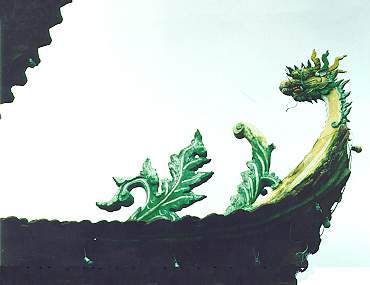
Tam Luận tông chủ trương thiên chấp về “Không” trên căn cứ của “tự
tánh” (Svabhava-alaksana) hay tánh vô tướng không có bản chất tồn tại,
nhưng lại thừa nhận nhất thể của hữu, nên tông nầy xác nhận rằng mọi
người trong tam thừa và năm chủng tánh đều có thể đạt đến Phật quả—The
San-Lun holds the one-sided view of “Void” on the basis of “own nature”
or no abiding nature, but admitting the unity of being and non-being,
it affirms that men of the three vehicles and the five species are all
able to attain Buddhahood.
Đại Thừa Chung Giáo: Đại Thừa trong giai đoạn cuối dạy về Chân Như
(dharmatathata) và Phật tánh phổ quát, dạy về lẽ chân như bình đẳng, và
khả năng thành Phật của chúng sanh, tìm thấy trong Kinh Lăng Già, Đại
Bát Niết Bàn hay Đại Thừa Khởi Tín Luận, vân vân. Giáo lý nầy thừa nhận
rằng tất cả chúng sanh đều có Phật tánh và đều có thể đạt đến Phật quả.
Thiên Thai tông theo giáo lý nầy. Chân lý cứu cánh Đại Thừa được trình
bày bằng giáo lý nầy. Do đó, nó được gọi là giáo lý thuần thục hay Thục
Giáo. Trong thủy giáo, sự và lý luôn tách rời nhau, trong khi ở chung
giáo, sự lúc nào cũng là một với lý, hay đúng hơn cả hai là một. Như
Lai Tạng Duyên Khởi là đặc điểm của giáo lý nầy. Nó cũng còn được gọi
là Chân Như Duyên Khởi—The Final Mahayana teaching, or the Mahayana in
its final stage which teaches the Bhutatathata and universal
Buddhahood, or the essentially true nature of all things and the
ability of all beings to attain Buddhahood. This is the final
metaphysical concepts of Mahayana, as presented in the Lankavatara
Sutra, the Mahaparinirvana text, and the Awakening of Faith, etc. This
doctrine asserts that all living beings have Buddha-nature and can
attain Buddhahood. The T’ien-T’ai School adheres to this doctrine. By
this teaching the Ultimate Truth of Mahayana is expounded. Therefore,
it is called the Doctrine of Maturity. As it agrees with reality, it
also called the True Doctrine. In the elementary doctrine, fact and
principle were always separate, while in this final doctrine, fact is
always identified with principle, or in short, the two are one. The
causation theory by Matrix of the Thuscome is special to this doctrine.
It is also called the theory of causation by Thusness or Tathata.
Đại Thừa Đốn Giáo: The
Abrupt Doctrine of the Great Vehicle.
Giáo lý nầy chỉ cho ta sự tu tập không cần ngôn ngữ hay luật nghi,
mà gọi thẳng vào trực kiến của mỗi người—This means the training
without word or order, directly appealing to one’s own insight.
Giáo lý nầy nhấn mạnh đến “trực kiến,” nhờ đó mà hành giả có thể
đạt đến giác ngộ viên mãn tức khắc. Tất cả văn tự và ngôn ngữ đều đình
chỉ ngay. Lý tánh sẽ tự biểu lộ trong thuần túy của nó, và hành động sẽ
luôn luôn tùy thuận với trí huệ và tri kiến—This teaching emphasized on
one’s own insight by which one can attain enlightenment all at once.
All words and speech will stop at once. Reason will present itself in
its purity and action will always comply with wisdom and knowledge.
Đốn giáo bằng chánh định nơi tư tưởng hay niềm tin chứ không bằng
tu trì thiện nghiệp. Giáo lý nầy dạy cho người ta chứng ngộ tức thì dựa
trên những giảng giải bằng lời hay qua tiến trình thực hành tu tập cấp
tốc, tìm thấy trong Kinh Duy Ma Cật—The Mahayana immediate, abrupt,
direct, sudden, or intuitive school, by right concentration of thought,
or faith , apart from good works (deeds). This teaching expounds the
abrupt realization of the ultimate truth without relying upon verbal
explanations or progression through various stages of practice, found
in Vimalakirti Sutra.
Giáo lý nầy chủ trương nếu tư tưởng không còn mống khởi trong tâm
của hành giả thì người ấy là một vị Phật. Sự thành đạt nầy có thể gặt
hái được qua sự im lặng, như được Ngài Duy Ma Cật chứng tỏ, hay qua
thiền định như trường hợp của Tổ Bồ Đề Đạt Ma, sơ tổ Thiền Tông Trung
Hoa—This doctrine holds that if thought ceases to arise in one’s mind,
the man is a Buddha. Such an attainment may be gained through silence
as shown by Vimalakirti, a saintly layman in Vaisali, or through
meditation as in the case of Bodhidharma, the founder of Chinese Ch’an
School.
Viên Giáo,圓教, Viên giáo dạy về
Nhất Thừa hay Phật Thừa. Viên giáo Hoa Nghiêm, phối hợp tất cả làm
thành một tông, được tìm thấy trong các Kinh Hoa Nghiêm và Pháp Hoa. Có
hai trình độ của Đại Thừa Viên Giáo—The Round Doctrine of the Great
Vehicle or the Perfect teaching expounds the One Vehicle, or the Buddha
Vehicle. The complete or perfect teaching of the Hua-Yen, combining the
rest into one all-embracing vehicle, found in the Avatamsaka and Lotus
Sutras. There are two grades of the round or perfect doctrine
Nhất Thừa Đồng Giáo: One Vehicl of the Identical Doctrine—Trong đó
nhất thừa được giảng thuyết bằng phương pháp đồng nhất hay tương tự với
cả ba thừa. Nhất Thừa của tông Hoa Nghiêm bao gồm tất cả các thừa. Tuy
nhiên, tùy theo căn cơ mà giảng ba thừa để chuẩn bị cho những kẻ khát
ngưỡng. Cả ba đều tuôn chảy từ Nhất Thừa và được giảng dạy bằng phương
pháp đồng nhất như là một. Theo tông Hoa Nghiêm thì ba thừa nầy là—In
which the One Vehicle is taught an identical or similar method with the
other three Vehicles. The One Vehicle of the Avatamsaka School is
inclusive of all Vehicles. However, for the convenience the three
vehicles are taught to prepare the aspirants. The three flow out of the
One Vehicle and are taught in the identical method as the one. The
three Vehicles recognized by the Avatamsaka School.
Tiểu Thừa,小乘, Hinayana (skt)—The
Small Vehicle
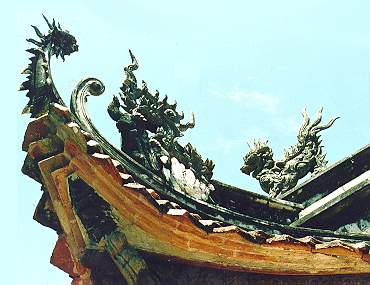
Đại Thừa Tiệm Giáo: The Gradual Mahayana.
Đại Thừa Thủy Giáo: The Elementary Mahayana.
Đại Thừa Chung Giáo: The Final Mahayana.
Đại Thừa Đốn Giáo: The Abrupt Doctrine of the Great Vehicle.
Nhất Thừa Biệt Giáo: Trong đó nhất thừa được nêu lên hoàn toàn khác
biệt hay độc lập với những thừa khác như trường hợp giáo lý Hoa Nghiêm
trong đó nói lên học thuyết về thế giới hỗ tương dung nhiếp. Nhất Thừa
cao hơn ba thừa kia. Nhất thừa là chân thật còn ba thừa được coi như là
quyền biến (tam quyền nhất thật): One Vehicle of the Distinct Doctrine
in which the One Vehicle is set forth entirely distinct or independent
from the other Vehicles, as in the case of the teaching of the
Avatamsaka School, in which the doctrine of the world of totalistic
harmony mutually relating and penetrating is set forth. The One Vehicle
is higher than the other three. The One Vehicle is real while the three
are considered as temporary.
Theo Khuê Phong—According to Kuei-feng:
Nhân Thiên Giáo,人天教, Những ai giữ ngũ
giới sẽ tái sanh trở lại vào cõi người và những ai hành thập thiện sẽ
được tái sanh vào cõi trời—Rebirth as human beings for those who keep
the five commandments and as devas for those who keep the ten
commandments
Tiểu Thừa Giáo,小乘教, See Tiểu Thứa Giáo
in (A)
Đại Thừa Pháp Tướng: See Đại Thừa Thủy Giáo (a).
Đại Thừa Pháp Tướng Giáo: See Đại Thừa Thủy Giáo (b).
Nhất Thừa
Hiển Tánh Giáo,一乘顯性教,
Trình bày Phật tánh phổ quát. Nhất Thừa Hiển Giáo bao gồm cả Đại thừa
chung giáo, Đốn giáo và Viên giáo—The one vehicle which reveals the
universal Buddha-nature. It includes the Mahayana in its final stage,
the immediate and the complete or perfect teaching of the Hua-Yen
Ngũ Giáo Chương,五教章, Công trình của Đại
sư Pháp Tạng thời nhà Đường giải thích giáo nghĩa của Ngũ Giáo—The work
prepared by Fa-Tsang of the T’ang dynasty, explaining the doctrine of
the five schools
Ngũ Giáo Hoa Nghiêm: See Ngũ Giáo.
Ngũ Giới,五戒, Panca Veramani
(skt)—Five Precepts—
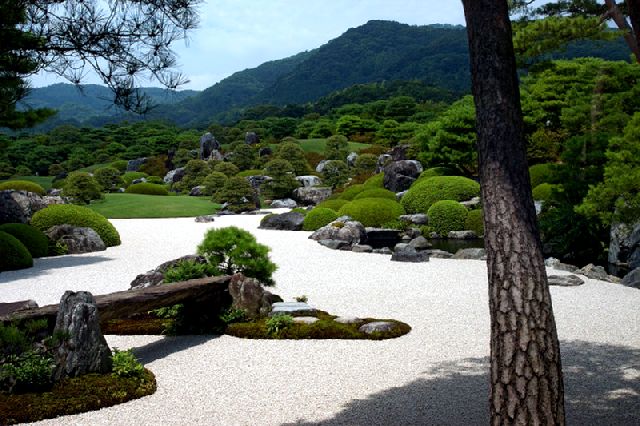
Trong cả hai trường phái Nguyên Thủy và Đại Thừa,
Đức Phật dạy các đệ tử của Ngài, nhất là Phật tử tại gia giữ gìn ngũ
giới. Dù Kinh Phật không đi vào chi tiết, nhưng các đạo sư cả hai
trường phái đã giải thích rất rõ ràng về năm giới nầy—In both forms of
Buddhism, Theravada and Mahayana, the Buddha taught his disciples,
especially lay-disciples to keep the Five Precepts. Although details
are not given in the canonical texts, Buddhist teachers have offered
many good interpretations about these five precepts:
Nghĩa của ngũ giới—The meanings of
Panca-veramani:
The five commandments of Buddhism (against murder, theft, lust,
lying and drunkenness)—Năm giới cấm của Phật tử tại gia và xuất gia,
tuy nhiên Phật chế ngũ giới đặc biệt cho những Phật tử tại gia. Người
trì giữ năm giới sẽ được tái sanh trở lại vào kiếp người (giới có nghĩa
là ngăn ngừa, nó có thể chận đứng các hành động, ý nghĩ, lời nói ác,
hay đình chỉ các nghiệp báo ác trong khi phát khởi. Năm giới là điều
kiện căn bản làm người, ai giữ tròn các điều kiện cơ bản nầy mới xứng
đáng làm người. Trái lại thì đời nầy chỉ sống bằng thân người, mà phi
nhân cách, thì sau chết do nghiệp cảm thuần thục, khó giữ được thân
người, mà phải tái sanh lưu chuyển trong các đường ác thú. Do đó người
học Phật, thọ tam quy/Saranagamana, phải cố gắng trì ngũ
giới/Panca-veramana)—The five basic commandments of Buddhism—The five
basic prohibitions binding on all Buddhists, monks and laymen alike;
however, these are especially for lay disciples. The observance of
these five ensures rebirth in the human realm:
Không sát sanh: Pranatipataviratih (skt)—Panatipata (p).
Không sát sanh hay tàn hại sinh mạng của loài hữu tình. Trong giới
luật thì giới nầy đứng đầu. Không sát sanh còn có nghĩa là không cố tâm
giết hại sinh mạng, dù cho sanh mạng ấy là sinh mạng của loài vật, vì
loài vật cũng biết đau khổ như chúng ta. Trái lại, phải luôn tôn trọng
và cứu sống sinh mạng của muôn loài. Đức Phật đã dạy “tội ác lớn không
gì bằng giết hại sinh mạng; công đức lớn không gì bằng cứu sống sinh
mạng.”—Not to take life—Against murder—Not to kill or injure any living
being—Refraining from taking life. This is the first of the five
commandments. Pranatipata-viratih also means not to have any intention
to kill any living being; this includes animals, for they feel pain
just as human do. On the contrary, one must lay respect and save lives
of all sentient beings. The Buddha always taught in his sutras: “The
greatest sin is killing; the highest merit is to save sentient lives.”
Không trộm cắp: Adattadanaviratih (skt)—Adinnadana (p)—Lấy bất cứ
thứ gì mà không được cho bởi chủ nhân hay trộm cắp cũng sai ngay cả về
mặt pháp lý. Không trộm cắp có nghĩa là không trực tiếp hay gián tiếp
phỉnh gạt để lấy của người. Trái lại còn phải cố gắng bố thí cho muôn
loài. Đức Phật đã từng dạy “họa lớn không gì bằng tham lam; phước lớn
không gì bằng bố thí”—Taking possession of anything that has not been
given by its owner or stealing, is also wrong, even legally speaking.
Not to steal—Against theft—Not to take anything which does not belong
to you or what is not given to you—Refraining from taking what is not
given. Adattadana-viratih means not directly or indirectly taking
other’s belongings. On the contrary, one should give things, not only
to human beings, but also to animals. The Buddha always taught in his
sutras “desire brings great misfortune; giving brings great fortune.”
Không tà dâm: Kamamithyacaradviratih (skt)—Kamesu-micchacara
(p)—Không tà dâm có nghĩa là không lang chạ với vợ hay chồng người,
hoặc với người không phải là vợ hay chồng của mình. Gian dâm là sai.
Người phạm tội gian dâm không còn được kính nể và không được ai tin
cậy. Tà dâm dính líu tới những người mà mối liên hệ vợ chồng phải tránh
theo tập tục, hay với những người cấm bởi pháp luật, hay bởi Pháp, là
sai. Cho nên ép buộc bằng phương tiện vũ lực hay tiền bạc một người đã
có gia đình hay người chưa có gia đình ưng thuận là tà dâm. Mục đích
của giới thứ ba là gìn giữ sự kính trọng gia đình và mỗi người liên hệ
để bảo vệ tính cách thiêng liêng bất khả xâm phạm—Not to engage in
improper sexual conduct. Against lust, not to commit adultery, to
abstain from all sexual excess, or refraining from sexual misconduct.
This includes not having sexual intercourse with another’s husband or
wife, or being irresponsible in sexual relationship. Adultery is wrong.
One who commits it does not command respect nor does one inspire
confidence. Sexual misconduct involving person with whom conjugal
relations should be avoided to custom, or those who are prohibited by
law, or by the Dharma, is also wrong. So is coercing by physical or
even financial means a married or even unmarried person into consenting
to such conduct. The purpose of this third sila is to preserve the
respectability of the family of each person concerned and to safeguard
its sanctity and inviolability.
Không vọng ngữ: Mrsavadaviratih (skt)—
Không nói dối bao gồm không nói lời độc ác, không nói lời thêu dệt,
không nói lưỡi hai chiều, không nói lời gian trá, như có nói không,
không nói có. Trái lại, phải nói lời chân thật ngay thẳng hiền hòa, lợi
mình lợi người. Tuy nhiên, trong những trường hợp đặc biệt, đôi khi
người ta không thể nói được sự thật, chẳng hạn họ phải nói dối để khỏi
bị hại, và bác sĩ nói dối để giúp đỡ tinh thần bệnh nhân. Nói dối vào
những trường hợp như vậy có thể trái ngược với giới luật, nhưng không
hẳn là trái ngược với lòng từ bi hay mục đích. Cấm nói dối mục đích là
đem lại lợi ích hỗ tương bằng cách gắn vào sự thật và tránh sự xúc phạm
bằng lời nói. Giống như vậy, lời phát biểu làm hại hạnh phúc người
khác, chẳng hạn như lời nói hiểm độc, sỉ nhục, phỉ báng nhằm nhạo báng
người khác và khoe khoang mình là người đáng tin, có thể là sự thật,
nhưng những lời như vậy bị coi là sai vì chúng trái với giới luật—Not
to lie, deceive or slander—Against lying, deceiving and
slandering—Refraining from lying speech. Not to lie includes not saying
bad things, not gossiping, not twisting stories, and not lying. On the
contrary, one must use the right gentle speech, which gives benefit to
oneself and others. However, sometimes they are unable to speak the
truth; for instance, they may have to lie to save themselves from harm,
and doctors lie to bolster their patients’ morale. Lying under these
circumstances may be contrary to the sila, but it is not entirely
contrary to the loving-kindness and to its purpose. This sila aims at
bringing about mutual benefits by adhering to truth and avoiding verbal
offences. Similarly, utterances harmful to another’s well-being, for
example, malicious, abusive or slanderous speech intended either to
deride others or to vaunt oneself may be truthful, yet they must be
regarded as wrong, because they are contrary to the sila.
Có bốn biểu hiện vọng ngữ—There are four committed by word:
Nói dối: Musavada (p)—Lying.
Nói đâm thọc hay nói lời hủy báng: Pisunavaca (p)—Slandering.
Nói lời thô lỗ cộc cằn: Pharusavaca (p)—Harsh speech.
Nói lời nhãm nhí vô ích: Samphappalapa (p)—Frivolous talk.
Không uống rượu: Madyapanaviratih
(skt)—Sura-meraya-majja-pamadatthana (p)—Không uống rượu, không uống
những chất say, cũng như không dùng cần sa ma túy—Not to drink alcohol,
refrain from intoxicants, not to abuse drug.
Công Dụng Của Ngũ Giới: Ngũ giới giúp chúng ta những điều sau
đây—The benefits of the five precepts. Observing of the five precepts
will help us with the followings:
Khiến cho đời sống chúng ta có phẩm chất hơn: Help make our life
have more quality.
Khiến cho chúng ta được mọi người kính trọng: Help us obtain
dignity and respect from others.
Khiến cho chúng ta trở thành một thành viên tốt trong gia đình, một
người cha hiền, mẹ tốt, con ngoan: Help make us a good member of the
family, a good father or mother, a filial child.
Khiến chúng ta trở thành công dân tốt của xã hội: Help make us good
citizens of the society.
Ngũ Hạ Phần Kết: Theo Kinh
Phúng Tụng trong Trường Bộ Kinh, có năm
thứ Kết hoặc của Dục giới trong tam giới—According to the Sangiti Sutta
in the Long Discourses of the Buddha, there are five bonds in the lower
desire-realms or the lower fetters which hold the individual in the
realms of desire:
(A)
Tham Kết (Phiền não của tham dục): Desire—Sensual
desire—Sensuality.
Sân Kết (Sân Nhuế Kết—Phiền não của sự giận dữ):
Dislike—Ill-will—Resentment.
Thân Kiến Kết (Phiền não của ngã kiến): Sakkaya-ditthi (p)—Thân
kiến và tà kiến về tự ngã—Wrong view on Personality-belief, self,
identity view, or egoism.
Giới Thủ Kết (Phiền não của chấp thủ giới cấm hay tà kiến một cách
phi lý): Silabbata-paramasa (p)—Heretical ideals—Attachment to rite and
ritual—Distorted grasp of rules and vows—False tenets.
Nghi Kết (Phiền não của sự nghi hoặc): Doubt—Hoài nghi, không tin
chắc về Phật, Pháp, Tăng và sự tu tập tam học, giới, định, huệ—Doubt
about the Buddha, the Dharma, the Sangha and the cultivation on the
three studies of discipline, concentration and wisdom.
Tham Kết,貪結, Phiền não của tham
dục—Desire
Sân Nhuế Kết: Phiền não gây ra do sân giận—Dislike.
Mạn Kết,慢結, Phiền não gây ra do
ngã mạn cống cao—Pride
Tật Kết,嫉結, Phiền não gây ra do
tật đố—Envy
Xan Kết,慳結, Phiền não gây ra do
tham lam bỏn xẻn—Stinginess.
Ngũ Hải,五海, Năm biển hay năm
loại nghĩa phần trong vô tận viên minh tính hải mà Bồ Tát Phổ Hiền thấy
được trong Kinh Hoa Nghiêm—The five “seas” or infinities seen in a
vision by P’u-Hsien in the Flower Adornment Sutra
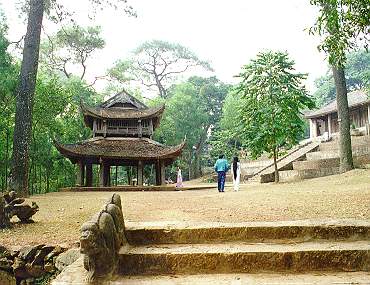
Nhất thiết chúng thế giới hải: All the worlds.
Nhất thiết chúng sanh hải: All the living beings.
Pháp giới nghiệp hải: Universal karma.
Nhất thiết chúng sanh dục lạc chư căn hải: The roots of desire and
pleasure of all the living.
Nhất thiết tam thế chư Phật hải: All the Buddhas, past, present,
and future.
Ngũ Hành,五行, Năm hành—The five
elements
Theo Tứ Thư—According to the four Saint Books:
Kim: Metal.
Mộc: Wood.
Thủy: Water.
Hỏa: Fire.
Thổ: Earth.
Theo Khởi Tín Luận—According to the Awakening of Faith:
Bố Thí Hành: Almsgiving.
Trì Giới Hành: Keeping the commandments.
Nhẫn Nhục Hành: Patience under insult.
Tinh Tấn Hành: Zeal or Progress.
Thiền Định Hành: Meditation.
Theo Kinh Niết Bàn—According to the Nirvana Sutra:
Thánh Hành: Chỉ hành tu tập Giới Định Tuệ của chư Bồ Tát—Saintly or
bodhisattva deeds.
Phạm Hành: Tu hành phạm hạnh của chư A-La-hán—Arhat or noble deeds.
Thiên Hành: Bồ Tát nhờ vào chân lý mà thành diệu hạnh—Deva deeds.
Anh Nhi Hành: Bồ tát dùng tâm từ bi thị hiện nhân thiên Tiểu
thừa—Children’s deeds or normal good deeds of men, devas and
Hinayanists.
Bệnh Hành: Bồ Tát vì lòng từ bi cứu độ mà hòa với chúng sanh, cũng
có phiền não và bệnh khổ như chúng sanh—Sickness conditions, illness or
delusions—Bodhisattvas enter into these lines of conduct and conditions
to save sentient beings.
Ngũ Hiền: Five sages.
Ngũ Hiển: See Ngũ Thông Thần.
Ngũ Hình: The five punishments:
Tử hình: Death penalty.
Chung thân: Life sentence.
Cấm cố hữu hạn: Sentence for a limited term.
Câu lưu: Detention.
Phạt vạ: Fine.
Ngũ Hoặc,五惑, Năm thứ mê mờ ám
độn—The five fundamental of passions and delusions
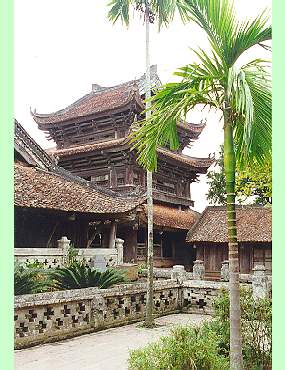
Tà kiến: Wrong views.
Chấp vào dục giới: Clinging or attachment to the desire-realm.
Chấp vào sắc giới: Clinging or attachment to the form-realm.
Chấp vào vô sắc giới: Clinging or attachment to the formless-realm.
Si mê: The state of unenlightenment or ignorance.
Ngũ Học Xứ,五學處, Five rules of
training—See Ngũ Giới
Ngũ Hối,五悔, The five stages in a
penitential service
Ngũ Hối Thiên Thai—The five stages in a penitential service in
T’ien-T’ai Sect:
Sám Hối,懺悔, Phát lồ sám hối tội
lỗi đã qua để ngăn ngừa tái phạm—Confess of past sins and forbidding
them for the future
Khuyến Thỉnh,勸請, Khuyến thỉnh thập
phương chư Phật chuyển pháp luân: Appeal to the universal Buddhas to
keep the law-wheel rolling
Tùy Hỷ,隨喜, Tùy hỷ thiện tác hay
đối với mọi thiện căn đều hoan hỷ tán thán—Rejoicing over the good in
self and others
Hồi Hướng,廻向, Hồi hướng công đức
hay đem tất cả thiện căn sở tu hướng vào chúng sanh và Phật
đạo—Offering all one’s goodness to all the living and to the Buddha-way
Phát Nguyện,發願

Video
Phat Nguyen (Thich Nhat Tu)
Thệ nguyện thành
Phật bằng cách làm tất cả các hạnh lành, tránh tất cả các việc ác,
thanh tịnh tâm ý và hồi hướng công đức hay phát nguyện tu trì tứ hoằng
thệ nguyện—To vow to become a Buddha by doing all good deeds, avoiding
all bad deeds, purifying the mind and bestowal of acquired merits or
resolve to observe and practice the four universal vows (magnanimous
vows)
Chân Ngôn Ngũ Hối: Năm pháp sám hối của tông Chân ngôn—The five
stages in a penitential service in Shingon Sect—Shingon Sect divides
the ten great vows of the Universal Good Bodhisattva (Samantabhadra)
into five stages of penitential service:
Qui Mệnh—Submission:
Lễ Kỉnh chư Phật: Worship and respect all Buddhas.
Xưng Tán Như Lai: Praise the Thus Come Ones.
Quảng Tu Cúng Dường: Make abundanct offerings.
Sám Hối,懺悔, Sám hối nghiệp
chướng—Repentance—repent misdeeds and mental hindrances or karmic
obstacles
Tùy Hỷ,隨喜, Tùy hỷ công
đức—Rejoicing—Rejoice at others’ merits and virtues
Khuyến Thỉnh—Appeal to the Buddhas:
Thỉnh Chuyển
Pháp Luân,請轉法輪,
Request the Buddha to turn the dharma wheel

Thỉnh Phật Trụ Thế: Request the Buddha to remain in the world.
Thường Tùy Phật Học: Follow the teachings of the Buddha at all
times.
Hồi Hướng—Bestowal of all acquired merits:
Hằng Thuận Chúng Sanh: Accommosate and benefit all sentient beings.
Phổ Giai Hồi Hướng: Transfer merits and virtues universally.
Ngũ Hội Niệm Phật,五會念佛, Năm cách niệm
Phật A Di Đà do Sư Pháp Chiếu đời nhà Đường sáng lập ra—Five ways of
intoning Amitabha established by Fa-Chao of the T’ang dynasty
Ngũ Hội Pháp Sư: See Ngũ Hội Niệm Phật.
Ngũ Hội Pháp Sự Tụng: See Ngũ Hội Niệm Phật.
Ngũ Huyền Nghĩa Tam Luận Tông: Theo Ngài Long Thọ Bồ Tát trong
Trung Quán Luận, thì Nhị Đế Trung Đạo được bằng “Năm Huyền
Nghĩa”—According to Nagarjuna Bodhisattva in the Madhyamika Sastra, the
Middle Path of the Twofold Truth is expounded by the “five terms.”
Tục Đế Phiến Diện: The one-sided worldly truth—Chủ trương thuyết
thực sinh thực diệt của thế giới hiện tượng—Maintains the theory of the
real production and the real extinction of the phenomenal world.
Chân Đế Phiến Diện: The one-sided higher truth—Chấp vào thuyết bất
diệt của thế giới hiện tượng—Adheres to the theory of the
non-production and non-extinction of the phenomenal world.
Trung Đạo Tục Đế: The middle path of worldly truth—Thấy rằng không
có giả sinh hay giả diệt—One sees that there is a temporary production
and temporary extinction of phenomenon.
Trung Đạo Chân Đế: The middle path of the higher truth—Giả bất sinh
giả bất diệt hay thấy rằng không có giả sinh hay giả diệt—One sees
there is neither contemporary production nor contemporary extinction.
Nhị Đế Hiệp Minh Trung Đạo: Nếu ta nhận định rằng không có sinh
diệt hay bất sinh bất diệt thì đó là trung đạo, được biểu thị bằng sự
kết hợp của tục đế và chân đế—One considers that there is neither
production-and-extinction nor non-production-and non-extinction, it is
the middle path elucidated by the union of both popular and higher
truths.
Ngũ Hương,五香, Ngũ phần hương—Lấy
năm thứ hương ví với ngũ phần pháp thân—Five kinds of incense—The five
attributes of dharmakaya or spiritual body of the Tathagata—Five kinds
of incense or fragrance, corresponding with the five kinds of
dharmakaya
Giới hương: The dharmakaya is above all moral conditions.
Định hương: The dharmakaya is tranquil and apart from all false
ideas.
Huệ hương: The dharmakaya is wise and omniscient.
Giải thoát hương: The dharmakaya is free, unlimited, unconditioned,
which is the state of nirvana.
Giải thoát tri kiến hương: The dharmakaya has perfect knowledge.
Ngũ Kết,五結, Theo A Tỳ Đạt Ma
Luận, có năm kết hay năm loại vọng hoặc giống như dây trói buộc chúng
sanh vào luân hồi sanh tử—According to the Abhidharma, there are five
bonds which bind men to mortality

Video Chuyen Hoa
Troi Buoc (Thich Nhat Tu)
Tham Kết,貪結, Tham lam—Desire
Sân Kết: nóng giận hay phẫn nộ—Hate.
Mạn Kết,慢結, Kiêu mạn hay cậy
mình khinh người—Pride
Tật Kết: Ghen ghét (với sự giàu sang hay hay ho của người)—Envy.
Xan Kết,慳結, Bỏn xẻn hay tham
tiếc của cải—Grudging.
Ngũ Kết Nhạc Tử: Một trong những thần nhạc của trời Đế Thích, người
dùng sáo thủy tinh để tán thán Phật—One of Indra’s musicians who
praised Buddha on a crystal lute.
Ngũ Khan: Năm loại bủn xỉn—Five kinds of selfishness or meanness:
Trụ Xứ Khan: Một mình ta ở đây, chẳng cho ai khác vào đây—This
abode (house or place) is mine and no one else’s.
Gia Chủ Thí Khan: Một mình ta ở nhà nầy làm việc bố thí, chứ chẳng
ai khác—This almsgiving household is mine and no one else’s.
Thí Khan: Một mình ta nhận của bố thí nầy—I am the only one who
receive this alms.
Dư Tán Khan: Một mình ta nhận sự tán thán nầy chứ chẳng ai khác—I
am the only one who deserve this praise; no one else who deserves this.
Pháp Khan: Một mình ta biết thâm nghĩa của kinh nầy chứ chẳng cho
người khác biết—I am the only one who has the knowledge of truth, but I
don’t want to share with any one else.
Ngũ Khổ,五苦, Năm nỗi khổ đau của
con người—The five afflictions that are the lot of every man
See Tứ Khổ.
Ái Biệt Ly Khổ,愛別離苦, Sufferings due
to separation (parting) from the loved ones—See Bát Khổ (5)
Oán Tắng Hội Khổ,怨憎會苦, Sufferings due
to meeting with the uncongennial (the hated)—See Bát Khổ (6)
Cầu Bất Đắc Khổ,求不得苦, Sufferings due
to unfulfilled wishes, or failure in one’s aims—See Bát Khổ (7)
Ngũ Ấm Thạnh Suy Khổ: Sufferings due to the raging aggregates, or
sufferings caused by the five skandhas—See Bát Khổ (8).
Ngũ Kiến,五見, Five wrong views
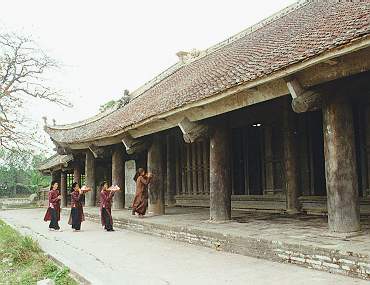
Ngũ Kiến Thô Thiển: Five sharp servants:
Tham: Greed.
Sân: Anger.
Si: Stupidity.
Mạn: Arrogance
Nghi: Doubt.
Ngũ Kiến Vi Tế: Panca drstayah (skt)—Năm loại kiến giải sai lầm,
trái với đạo pháp—The five sharp wrong views—Five sharp servants—Five
sharp views:
1A) Thân kiến: Chẳng biết rằng thân nầy chẳng thường hằng, chỉ do
năm uẩn giả hợp—View of the body—The view that there is a real and
permanent body or
1B) Ngã kiến: Cho rằng có một bản ngã trường tồn—View of egoism—The
view that there is a real self or ego, or
1C) Ngã kiến sở: Cho rằng có cái sở hữu thật của mình và của
người—View of mine and thine—The view that there is a real mine and
thine.
2) Biên kiến: Chấp rằng chết rồi là đoạn tuyệt hoặc có thân thường
trụ sau khi chết—Extreme view (of extinction and/or permanence)—Being
prejudiced to one extreme or another.
3) Tà kiến: Phủ nhận lý nhân quả—Perverse view which denying cause
and effect—Deviant views.
Kiến thủ: Chấp lấy đủ mọi tri kiến thấp kém mà cho rằng hay rằng
tuyệt—The view of grasping at views—Stubborn perverted views, viewing
inferior thing as superior, or counting the worse as the better
Giới cấm thủ: Chấp trì những giới cấm phi lý mà cho là con đường để
đi đến cõi Niết Bàn—View of grasping at precepts and prohibitions—Rigid
view in favor of rigorous ascetic prohibitions.
Ngũ Kiếp Tư Duy,五劫思惟, Năm kiếp tư
duy—Đức Phật A Di Đà đã trải qua năm kiếp tư duy trước khi lập ra bốn
mươi tám lời bổn nguyện—The five kalpas spent by Amitabha thinking out
and preparing for his forty-eight vows
Ngũ Kiết: The five bonds to mortality:
Tham dục: Desire.
Sân hận: Hate.
Ngã mạn cống cao: Pride.
Đố kỵ: Envy.
Ghen ghét: Grudging.
Ngũ Kim: The five metals:
Vàng: Gold.
Bạc: Silver.
Đồng: Copper.
Sắt: Iron.
Chì: Lead.
** Number (5) is sometimes also
mentioned as Thiết (tin).
Ngũ Kinh: The five classics (from Confucius).
Ngũ Linh: Năm loại chuông được dùng trong trường phái Chân
Ngôn tại
Nhật—The five kinds of bells used by the Shingon in Japan:
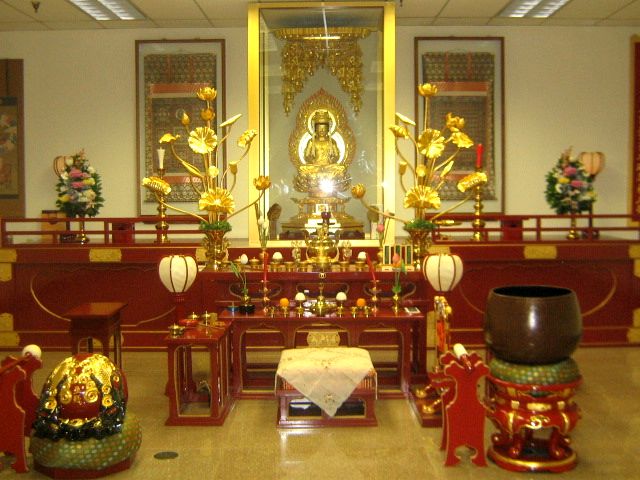
Ngũ Điểm Linh: Chuông năm điểm—The five-pronged bell.
Báu Linh: The Precious bell.
Nhứt Điểm Linh: The one-pronged bell.
Tam Điểm Linh: The three-pronged bell.
Tháp Linh: Tháp linh được đặt chính giữa, còn tất cả những chuông
khác được đặt ở các góc của bàn thờ—The bell of the stupa which is
placed in the centre while other bells are placed at four corners of
the altar.
Ngũ Loại Thiên,五類天, See Ngũ Thiên
Ngũ Loại Thuyết
Pháp,五類說法,
See Ngũ Chủng Thuyết Nhân
Ngũ Lợi Sử,五利使, Năm thiện
nghiệp—The five higher wholesome deeds
(A)
Không tham: No greed.
Không sân: No hatred (hate).
Không si: No stupidity.
Không ngã mạn cống cao: Nor pride nor arrogance.
Không nghi hoặc: No doubt.
(B)
Thân kiến: The wrong views or illusion of the body or self.
Biên kiến: The extreme views.
Tà kiến: Wrong views.
Thủ kiến: Wrong views in self-grasping.
Giới kiến: Wrong views in understanding the precepts.
Ngũ Luân,五輪, The five wheels or
things that turn
Năm qui tắc luân lý trong thời phong kiến—The five moral
obligations in the feudal regime:
Quân thần: Between king and subject.
Phụ tử: Between father and son.
Phu phụ: Between husband and wife.
Huynh đệ: Between brothers.
Bằng hữu: Between friends.
Theo Mật Giáo, có năm yếu tố luân chuyển—Thế giới nằm trên năm bánh
xe đang luân chuyển—Five elements according to the Esoteric Sects—The
earth rests on the five revolving spheres or wheels:
Địa Luân,地輪, Đất—The wheel of
Earth
Thủy Luân,水輪, Nước—The wheel of
Water
Hỏa Luân,火輪, Lửa—The wheel of
Fire
Phong Luân,風輪, Gió—The wheel of
Wind or air
Hư Không Luân: The wheel of Space.
Năm thứ tạo nên thế giới theo Câu Xá—Five foundations of the world
according to Kosa:
Hư Không Luân: The wheel or circle of Space.
Phong Luân,風輪, The wheel or circle
of Wind or Air—See Phong Luân
Thủy Luân,水輪, The wheel or circle
of Water
Hỏa Luân,火輪, The wheel or circle
of Fire
Địa Luân,地輪, Kim Cang Luân: The
wheel or circle of Vajra or Earth.
Ngũ thể—Five members of the body:
1-2) (2) Hai đầu gối: Two knees.
(2) Hai cùi chỏ: Two elbows.
5) (1) Đầu: Head.
Ngũ Luân Quán: Quán về năm yếu tố đất, nước, lửa, gió, và hư không,
với hình thức và màu sắc của từng thứ—Contemplation on the five
elements—A meditation of the esoteric school on the five elements,
earth, water, fire, air and space with their germ-words, their forms,
and their colors.
Địa (đất) tương ứng với hình Vuông và màu Vàng: The Earth
corresponds to Square and Yellow.
Thủy (nước) tương ứng với hình Tròn và màu Trắng: Water corresponds
to Round and White color.
Hỏa (lửa) tương ứng với hình Tam Giác và màu Đỏ: Fire corresponds
to Triangular and Red color.
Phong (gió) tương ứng với Bán Nguyệt và màu Đen: Wind or air
corresponds to Half-moon and Black color.
Hư Không tương ứng với hình Tròn và màu Xanh da trời: Space
corresponds to Spherical shape and Blue color.
Ngũ Luân Tam Muội: See Ngũ Luân Quán.
Ngũ Luân Tế,五輪際, Hư Không Luân—Tầng
thấp nhất của thế giới—The fifth wheel limit or world foundation
Ngũ Luân Tháp Bà: Theo Mật Giáo (Chân ngôn), đây là hình Tam Muội
trên đỉnh tháp của Đức Đại Nhật Như Lai, thường được xây trên phần mộ—A
stupa with five wheels at the top; chiefly used by the Shingon Sect on
graves as indicating the indwelling Vairocana.
Ngũ Lực,五力, Panca-balani (skt),
Five powers or faculties —
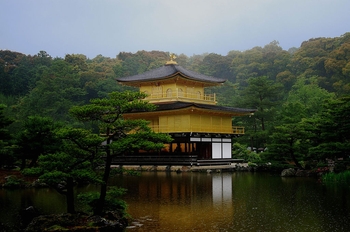
Năm sức
mạnh hay khả năng tâm linh được phát triển bằng cách củng cố ngũ
căn—The five powers or faculties for any cultivator—The powers of five
spiritual facultties which are developed through strengthening the five
roots. These powers are
(A)
Tín lực: Sức mạnh của lòng tin có khả năng loại bỏ mọi tà tín—Power
of Faith or force of belief which precludes all false belief—The faith
to believe.
Tấn lực: Sức mạnh của nghị lực giúp chúng ta vượt thắng mọi trở
lực—Power of Zeal or force of active vigor which leads to overcoming
all obstacles—The will to make the endeavor.
Niệm lực: Sức mạnh của sự cảnh giác hay là sự chú tâm đạt được nhờ
thiền định—Power of Memory, or mindfulness, or force of mindfulness
which is achieved through meditation—The faculty of alertness.
Định lực: Sức mạnh của Tam Ma địa nhằm loại bỏ đam mê dục
vọng—Power of Meditation (Dhyana) or force of concentration which leads
to eliminate all passions and desires—The ability to concentrate one’s
mind.
Huệ lực: Sức mạnh của trí năng, dựa vào chân lý Tứ Diệu Đế dẫn đến
nhận thức đúng và giải thoát—Power of Wisdom (awareness) or force of
wisdom which rests on insight into the four noble truths and leads to
the knowledge that liberates—The ability to maintain clear wisdom.
(B)
Định lực: The power of meditation.
Thông lực: The resulting supernatural powers.
Tá Thức lực: Adaptability or power of borrowing or revolving any
required organ of sense or knowledge, by being above the second dhyana.
Đại Nguyện lực: The power of accomplishing a vow by a Buddha or
bodhisattva.
Pháp Uy Đức lực: The august power of Dharma.
Ngũ Ma: Five maras—See Ngũ Uẩn.
Ngũ Ma Lực: Năm thứ ma lực (sắc, thinh, hương, vị, và xúc)—Five
kinds of Mara powers (Sắc: sight, Thinh: hearing, Hương: smell, Vị:
taste, Xúc: touch).
Ngũ Minh,五明, Pancavidya (skt)—Năm
minh hay năm môn học xưa của Ấn Độ giúp con người phát triển trí
huệ—The five sciences or studies of India which help people improve
their knowledge or wisdom
Thanh Minh,聲明, Sabdavidya
(skt)—Thuyết minh về ngữ pháp và luận văn trong ngôn ngữ. Đây là môn
học về truyền đạt hay truyền tin, gồm những phương tiện thông tin, ngôn
ngữ, chữ viết, và những kỹ thuật hiện đại về sự loan truyền tư tưởng và
hình ảnh, như vô tuyến truyền thanh, truyền hình, điện thoại, viễn ấn,
điện thư, vân vân—Grammar and composition. The learning of
communication which includes all means of communication, all languages,
writings, and the modern techniques of transmitting ideas and images,
i.e., radio, television, telephone, telegraph, fax, etc—See Thanh Minh
(4)
Công Xảo Minh,工巧明, Silpakarmasthana
(skt)—Thuyết minh về nghệ thuật và toán pháp, hay môn học về kỹ thuật
mà trong thời Đức Phật còn tại thế bao gồm những kỹ thuật vế nông
nghiệp, thương nghiệp, thiên văn, địa lý, kiến trúc, và các loại công
nghệ. Trong thời đại hôm nay, công xảo minh bao gồm những ngành phát
triển gia cư và thành thị, vận tải, năng lượng, thủy lợi, kiến thiết,
quản lý kỹ nghệ và kinh doanh—The arts and mathematics. The learning of
technology, which in the Buddha’s time included the arts of
agriculture, commerce, astronomy, geography, architecture, and various
kinds of crafts. Nowadays, Silpakarmasthana includes housing and urban
development, transportation, technologies, transportation, energy,
irrigation, construction, industrial and business management
Y Phương Minh,醫方明, Cikitsa
(skt)—Thuyết minh về y thuật hay y học. Môn học về y khoa, hoặc về bệnh
lý trị liệu. Trong thời Đức Phật còn tại thế, môn nầy bao gồm những
phương pháp và các thứ thuốc chữa những bệnh nội ngoại khoa, thủ thuật,
và những cách vệ sinh phòng ngừa ở trình độ sơ khai. Hiện nay, Y phương
minh bao gồm tất cả các môn sinh vật học, sinh lý học, thể chất học,
giải phẩu học, y dược học, và tâm lý trị liệu với cách chữa trị phối
hợp cả thể chất lẫn tinh thần—Medicine, or the learning of medicine, or
the knowledge of curable diseases. At the Buddha’s time, it consisted
of methods and medicines for treating internal and external diseases,
surgical operations to a certain extent, and hygenic precautions. In
modern time, biological, physiological, physical, medical and the art
of healing the body and mind can be included under this science
Nhân Minh,因明, Hetuvidya
(skt)—Thuyết minh về lý luận hay lẽ chánh tà chân ngụy. Môn học về luận
lý và khoa học, liên quan tới kiến thức về nguồn gốc của vũ trụ, trái
đất, nước, năng lượng và không khí. Thời xưa, lãnh vực kiến thực nầy bị
chế ngự bởi các ngành luận lý và triết học, nhưng hiện nay nó chú trọng
vào tất cả những môn toán học, vật lý, hóa học vật lý nguyên tử, thiết
kế lý luận trong các loại máy điện toán, và tất cả những môn khoa học
cơ bản dùng vào cơ khí và công nghệ—Logic—Reason—The learning of Logic
and Science is concerned with the knoeledge of the origin of the
universe, the earth, water, energy, and air. Originally, this realm of
knowledge was dominated by realm of knowledge was dominated by logic
and phylosophy, but in modern time, they are concerned mathematics,
physics, chemistry, the science, logistic physical
Nội Minh,內明, Adhyatmatidya
(skt)—Triết học về tông phái Phật giáo hay trí tối thượng. Môn học về
“Thể Hiện Chân Lý Nội Tâm,” về đại trí huệ và Bát nhã. Đức Phật đã đề
xướng những hướng đi cho các vị Bồ Tát. Các vị Bồ Tát phải có tài năng
để có thể phục vụ cho chúng sanh và xã hội, với tư cách là những người
tại gia, Phật tử phải thấy rằng Đức Phật đã đề xường những hướng đi cho
các vị Bồ Tát. Các vị Bồ Tát phải có tài năng để có thể phục vụ xã hội
và chúng sanh, mà còn phải trau dồi Phật huệ bằng cách không ngừng tu
học, tham thiền, suy tư và quán tưởng—Philosophy or the knowledge of
the supreme spirit or atman—Authoritative of the scriptures. The
realization of the inner Truth, perfect wisdom and all the high
knowledge of the enlightened. We can see that the Buddha laid down
directions for Bodhisattvas to follow. They must be able to offer their
services to the community, or generral public, as a professional or
practitioner of one of the branches of knowledge. At the same time,
they must cultivate the Buddha’s wisdom by constantly learning,
lisitening, meditating and contemplating
Ngũ Môn Thiền,五門禪, Năm môn thiền—A
fivefold meditations on
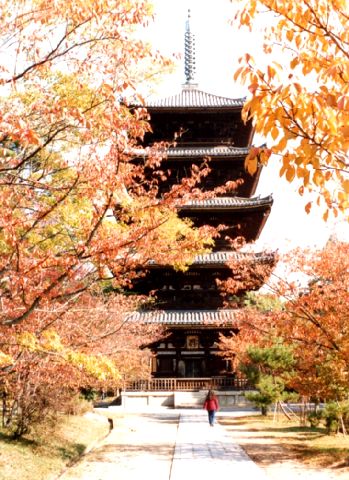
(A)
Vô thường: Impermanence.
Khổ: Suffering.
Vô Sở,無所, Void
Vô ngã: Non-ego.
Niết bàn: Nirvana.
(B) See Ngũ Đình Tâm Quán.
Ngũ Mộng,五夢, Năm cảnh mộng của
vua A Xà Thế trong đêm Dức Như Lai nhập Niết Bàn—The five bad dreams of
King Ajatasatru on the night that Buddha entered nirvana
Khi mặt trăng lặn thì mặt trời mọc lên từ đất: As the moon sank the
sun rose from the earth.
Sao sa như mưa: The stars fell like rain.
Khói từ đất bốc lên: Smoke rose from the earth.
Bảy sao chổi hiện lên trên trời: Seven comets appeared.
Trên trời có đám lửa lớn che kín cõi hư không rồi rớt xuống đất: A
great conflagration filling the sky then fell on the earth.
Ngũ Na Hàm Thiên,五那含天, See Ngũ Tịnh Cư
Thiên
Ngũ Nạp Y,五納衣, A monk’s garment
of five patches
Ngũ Ngại,五礙, See Ngũ Chướng Ngại
Ngũ Nghi: See Five Doubts in English-Vietnamese Section.
Ngũ Nghịch,五逆,Five grave offenses

Phạm một trong năm
trọng tội trên, chúng sanh phải sa vào A tỳ vô gián địa ngục và chịu
khổ hình không ngừng trong tận cùng địa ngục—Gọi là “nghịch” hay “tội”
vì thay vì phải hiếu kính, đáp lại bằng từ ái và cúng dường hay nuôi
dưỡng, thì người ta làm ngược lại (trong Tứ Thập Bát Nguyện của Đức
Phật A Di Đà, điều nguyện thứ 18 có nói rằng: “Nếu tôi được làm Phật,
thì chúng sanh mười phương chí tâm tín lạc, muốn sanh về nước tôi, cho
đến mười niệm mà chẳng sanh đó, xin chẳng giữ lấy ngôi Chánh Giác. Chỉ
trừ ra kẻ phạm tội ngũ nghịch, dèm pha Chánh Pháp.” Như thế chúng ta
thấy tội ngũ nghịch là cực kỳ nghiêm trọng—See Tứ Thập Bát Nguyện)—Five
hellish deeds—Five Cardinal Sins—Five ultimate betrayals—Five grave
sins (offenses) which cause rebirth in the Avici or hell of interrupted
(endless) suffering in the deepest and most suffering level of
hell—They are considered “betrayals” or “sin” because instead of being
filial, repaying kindness, offering, and providing nourishment, one
commits the ultimate betrayals—The five grave sins are
Tiểu Thừa Ngũ Nghịch—The
five deadly sins in Hinayana.
Giết cha (sát phụ): Killing (murdering) one’s father.
Giết mẹ (sát mẫu): Killing (murdering) one’s mother.
Giết A La Hán: Giết hay làm tổn hại A-La-Hán, một vị đã giác ngộ,
hoặc hãm hiếp một nữ tu cũng là phạm một trong ngũ nghịch—Killing
(murdering) or hurting an Arhat (a saint—an enlightened
one)—Intentionally murder an Arhat, who has already achieved
enlightenment or raping a Buddhist nun also considered as an Ultimate
Betrayal.
Gây bất hòa trong Tăng chúng: Gây bất hòa hay rối loạn trong Tăng
chúng bằng cách loan truyền những tin đồn hay nói chuyện nhãm nhí làm
cho họ phế bỏ đời sống tu hành—To disrupt the Buddhist Order—Causing
dissension within the Sangha—Causing disturbance and disruption of
harmony (disunity—destroying the harmony) among Bhiksus and nuns in
monasteries by spreading lies and gossip, forcing them into abandoning
their religious lives.
Làm thân Phật chảy máu bằng cách đâm, hay hủy hoại hình tượng Phật,
hay gây thương tích cho thân Phật, hoặc hủy báng Phật pháp: Causing the
Buddhas to bleed—To spill the Buddha’s blood—Stabbing and causing blood
to fall from Buddha or destroying Buddha statues—Injuring the body of a
Buddha or insult the Dharma.
(B)
Đề Bà Ngũ Nghịch—The
five unpardonable sins of Devadatta:
Phá hòa hợp Tăng: Destroyed the harmony of the community.
Ném đá lớn làm thân Phật chảy máu: Injured Sakyamuni with a big
stone, shedding his blood.
Xúi vua A Xà Thế thả voi say để giày xéo Phật: Induced King
Ajatasatruto let loose a rutting elephant to trample down Sakyamuni.
Đấm chết Tỳ Kheo Ni Hoa Sắc: Killed a nun.
Tẩm thuốc độc vào những móng tay, định khi vào lễ Phật sẽ hại ngài:
Put poison on his finger-nails and saluted Sakyamuni intending to
destroy him thereby.
Đồng tội Ngũ Nghịch—Five
Sins that equal to the first five:
Xúc phạm tới mẹ và Tỳ Kheo Ni thuộc hàng vô học là đồng với tội
giết mẹ: Violation of a mother, or a fully ordained nun is equal to the
sin of killing one’s mother.
Giết Bồ Tát đang nhập định đồng với tội giết cha: Killing a
bodhisattva in dhyana is equal to the sin of killing one’s father.
Giết bậc Thánh giả hữu học đồng tội giết bậc Thánh vô học A La Hán:
Killing anyone in training to be an arhat is equal to the sin of
killing an arhat.
Không để cho thành tựu hòa hợp Tăng là đồng tội với phá hòa hợp
Tăng: Preventing the restoration of harmony in a sangha is equal to the
sin of destroying the harmony of the sangha.
Phá tháp Phật là đồng tội với làm thân Phật chảy máu: Destroying
the Buddha’s stupa is equal to the sin of shedding the blood of a
Buddha.
Đại Thừa Ngũ Nghịch—The
five great sins in the Mahayana:
Phá hại chùa tháp, thiêu hủy kinh tượng, lấy vật của Phật hay chư
Tăng, hoặc khuyến khích người làm, hoặc thấy người làm mà sanh tâm hoan
hỷ: Sacrilege, such as destroying temples, burning sutras or images of
Buddhas, stealing a Buddha’s or monk’s things, inducing others to do
so, or taking pleasure therein.
Hủy báng pháp của Thanh Văn, Duyên Giác hay Bồ Tát: Slander or
abuse the teaching of Sravakas, Pratyeka-buddhas, or Bodhisattvas.
Ngược đãi giết chóc chư Tăng Ni hoặc buộc họ phải hoàn tục:
Ill-treatment, or killing of monks or nuns, or force them to leave the
monasteries to return to worldly life.
Phạm một trong năm trọng tội trên: Commit any one of the five
deadly sins given above.
Chối bỏ luật nhân quả nghiệp báo, thường xuyên gây nghiệp bất thiện
mà còn dạy người gây ác nghiệp, luôn sống đời xấu xa: Denial of the
karma consequences of ill deeds, acting or teaching others accordingly,
and unceasing evil life.
Ngũ Ngũ Bách Niên,五五百年, Năm lần năm trăm
năm sau khi Phật nhập diệt, trong mỗi thời kỳ nầy đều thuyết một kiên
cố để chỉ sự hưng phế của Phật pháp—The five periods each of 500 years
after the Buddha’s death (five successive periods)

Thời kỳ Giải Thoát Kiên Cố trong năm trăm năm đầu: The period of
strong salvation in the first five hundred years.
Thời kỳ Thiền Định Kiên Cố trong năm trăm năm thứ nhì: The period
of strong meditation in the second five hundred years.
Thời kỳ Đa Văn Kiên Cố trong năm trăm năm thứ ba: The period of
strong learning in the third five hundred years.
Thời kỳ Tháp Tự Kiên Cố trong năm trăm năm thứ tư: The period of
stupa and temple building in the fourth five hundred years.
Thời kỳ Đấu Tranh Kiên Cố trong năm trăm năm thứ năm: The period of
dissension in the fifth five hundred years.
Ngũ Nhãn,五眼, Năm loại mắt hay thị
giác—The five kinds of eye or vision
Phàm Nhãn: Mắt thịt của nhục thân, có tầm nhìn giới hạn—Human
eye—Physical eye—The flesh eye, or eye of the body—Limited vision.
Thiên nhãn: Deva-Cakkhu (p)—Mắt của chư Thiên ở cõi trời sắc giới,
nhưng người phàm tu thiền định vẫn đạt được loại mắt nầy (với thiên
nhãn thì chẳng luận xa gần, trong ngoài, sáng tối, đều thấy được
hết)—Celestial (god or deva) eye—Heavenly eye—Unlimited eye—Attainable
by men in dhyana.
Huệ Nhãn,慧眼, Panna-Cakkhu (p)—Mắt
của các bậc Thanh Văn, Duyên Giác và A La Hán, hay là trí huệ soi rõ lý
chân không vô tướng—Eye of wisdom—Hinayana wisdom—Eye that sees all
things as unreal
Như Thị Nhãn hay Pháp Nhãn: Bodhisattva-Cakkhu (p)—Mắt trí huệ của
chư Bồ Tát hay pháp nhãn nhìn thấu suốt sự vật để cứu độ chúng
sanh—Objective eye—Bodhisattva truth—Pháp nhãn—The Dharma Eye that
penetrates all things, to see the truth that releases men from
reincarnation.
Phật Nhãn,佛眼, Buddha-Cakhu
(p)—Thực Nhãn—Mắt của bậc giác ngộ thấu suốt mọi vật (Đức Phật có đủ
mắt Phật và bốn mắt trên)—Buddha eye—Buddha vision—Eye of the
Enlightened One who see all and are omniscient
Ngũ Nhân,五因, Năm nguyên nhân—The
five causes (four elements of earth, water, fire and wind which are the
causers or producers and maintainers of infinite forms of nature
(results)
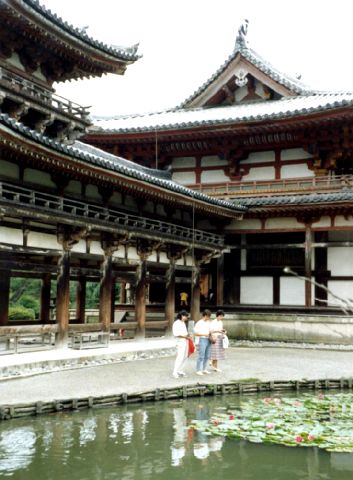
(A)
Sinh nhân: Producing cause.
Y nhân: Supporting cause.
Lập nhân: Holding or establishing cause.
Trì nhân: Maintaining cause.
Dưỡng nhân: Nourishing or Strengthening cause.
(B)
Sinh nhân: Chúng sanh theo nghiệp quả mà tái sanh—Cause of rebirth.
Hòa hợp nhân: Thiện tâm hòa hợp với thiện pháp; bất thiện tâm hòa
hợp với bất thiện pháp; vô ký tâm hòa hợp với vô ký pháp—Intermingling
cause (good with good, bad with bad, neutral with neutral).
Trú nhân: Tất cả chúng sanh trụ vào những điều kiện hiện tại mà
trụ—Cause of abiding in the present condition (the self in its
attachment).
Tăng trưởng nhân: Nhân của sự phát triển hay trưởng dưỡng bản thân
như thực phẩm áo quần—Cause of development (food, clothing, etc).
Viễn nhân: Nhân xa như tinh huyết của cha mẹ để sinh ra thân
nầy—Remoter cause, the parental seed.
Ngũ Nhân Thuyết
Kinh,五人說經,
See Ngũ Chủng Thuyết Nhân
Ngũ Nhẫn,五忍, Năm loại nhẫn nhục
Ba La Mật—Five kinds of Paramita Tolerance—The five stages of
Bodhisattva-ksanti, patience or endurance
Phục nhẫn: Điều phục nhẫn—Với loại nhẫn nầy hành giả có thể nhận
chìm tham, sân, si, nhưng hạt giống dục vọng và phiền não vẫn chưa dứt
hẳn. Đây là điều kiện tu hành của các bậc Bồ Tát Biệt Giáo, tam hiền
thập trụ, thập hành, và thập hồi hướng—Self-control or conquering
tolerance—With this tolerance, the cultivator is able to drown all
greed, hatred and ignorance—The causes of passion and illusion
controlled but not finally cut off, the condition of the Differentiated
Bodhisattvas, ten stages, ten practices, and ten dedications.
Tín nhẫn: Kiên trì đức tin từ Hoan Hỷ địa, Ly Cấu địa, đến Phát
Quang địa, hành giả thuần khiết tin tưởng hễ nhân lành thì quả
lành—Faith Tolerance from the stage of Joy, to the Land of Purity and
the Land of Radiance. The cultivator purely believes that good deeds
will result good consequences.
Thuận nhẫn: Tùy thuận nhẫn từ Diễm Huệ địa, đến Cực Nan Thắng địa
và Hiện Tiền địa, giai đoạn tu trì khiến cho hành giả có được đức nhẫn
nhục của Phật và Bồ Tát (từ tứ địa đến lục địa)—Natural Tolerance from
the Blazing Land to the Land of Extremely Difficult to conquer—This
tolerance using the pure Buddha-like intrinsic and natural that only
Bodhisattvas have or the patience progress towards the end of
mortality.
Vô sanh nhẫn: Vô sanh nhẫn từ Viễn Hành địa đến Bất Động địa và
Thiện Huệ địa, giai đoạn tu đức nhẫn khiến hành giả nhập cái lý các
pháp đều vô sinh (từ thất địa đến cửu địa)—No-thought Tolerance from
the Far-Reaching Land to the Immovable Land and the Land of Good
Thoughts—This is tolerance as vast and wide as the open sky or patience
for full apprehension of the truth of no rebirth.
Tịch diệt nhẫn: Tịch diệt nhẫn của hạng Pháp Vân địa hay Diệu Giác,
giai đoạn hành giả dứt tuyệt mọi mê hoặc để đạt tới niết bàn tịch
diệt—Maha-Nirvana Tolerance, or Nirvana Tolerance, or the patience
nirvana, the tolerance in the last stage of Dharmamegha or the Land of
Dharma Clouds—This is the tolerance of Buddha, everything is peaceful
and tranquil or the patience that leads to complete nirvana.
Ngũ Nhiếp Luận,五攝論, Một bộ luận của
Ngài Vô Trước, thâu tóm tất cả yếu nghĩa của Đại Thừa; về sau Ngài
Thiên Thân và Vô Tính tóm tắt và giải thích. Ngài Huyền Trang Tam Tạng
dịch ra Hán văn—A sastra of Asanga, giving a description of Mahayana
doctrine; which later on Vasubandhu and Wu-Hsing prepared a summary and
interpretation. Hsuan-Tsang translated this sastra into Chinese
Ngũ Như Lai: The five Dhyani-Buddhas or Tathagatas—See Ngũ Phật.
Ngũ Niệm Môn,五念門, Năm cửa hành đạo
của tông phái Tịnh Độ—The five devotional gates of the Pure Land sect
Lễ Bái Môn,禮拜門, Thân niệm—Worship
of Amitabha with the body
Khen Ngợi Môn: Khẩu niệm—Invocation with the mouth.
Tác Nguyện Môn,作願門, Quyết định Vãng
Sanh niệm—Resolve the mind to be reborn in the Pure Land
Quán Sát Môn: Thiền định Vãng Sanh niệm—Meditation on the glories
of the Pure Land.
Hồi Hướng Môn,迴向門, Hồi hướng
niệm—Resolve to bestow one’s merits (works on superogation on all
creatures)
Ngũ Niết Bàn: Five kinds of immediate Nirvana—Theo Kinh Thủ Lăng
Nghiêm, quyển Chín, phần Thập Hành Ấm Ma, Đức Phật đã nhắc nhở Ngài A
Nan về năm Niết Bàn như sau: “Lại có người thiện nam, trong tam ma địa,
chính tâm yên lặng kiên cố. Ma chẳng tìm được chỗ tiện. Cùng tột căn
bản của các loài sinh. Xem cái trạng thái u thanh, thường nhiễm động
bản nguyên. Chấp sau khi chết phải có, khởi so đo chấp trước. Người đó
bị đọa vào luận năm Niết Bàn.” Vì so đo chấp trước năm Niết Bàn mà phải
đọa lạc ngoại đạo, và mê lầm tính Bồ Đề—According to the Surangama
Sutra, book Nine, in the section of the ten states of formation
skandha, the Buddha reminded Ananda about the five kinds of immediate
Nirvana: “Further, in his practice of samadhi, the good person’s mind
is firm, unmoving, and proper and can no longer be distrubed by demons.
He can thoroughly investigate the origin of all categories of beings
and contemplate the source of the subtle, fleeting, and constant
fluctuation. But if he begins to speculate on existence after death, he
could fall into error with five theories of Nirvana. Because of these
speculations about five kinds of immediate Nirvana, he will fall into
externalism and become confused about the Bodhi nature.
Hoặc lấy Dục Giới làm Niết Bàn, xem thấy viên minh, sinh ra ưa mến:
He may consider the Heavens of the Desire Realm a true refuge, because
he contemplates their extensive brightness and longs for it.
Hoặc lấy Sơ Thiền vì tính không lo: He may take refuge in the First
Dhyana, because there his nature is free from worry.
Hoặc lấy Nhị Thiền tâm không khổ: He may take refuge in the Second
Dhyana, because there his mind is free from suffering.
Hoặc lấy Tam Thiền rất vui đẹp: He may take refuge in the Third
Dhyana, because he delights in its extreme joy.
Hoặc lấy Tứ Thiền khổ vui đều mất, chẳng bị luân hồi sanh diệt. Mê
trời hữu lậu cho là vô vi. Năm chỗ an ổn cho là thắng tịnh. Cứ như thế
mà bị xoay vần: He may take refuge in the Fourth Dhyana, reasoning that
suffering and bliss are both ended there and that he will no longer
undergo transmigration. These heavens are subject to outflows, but in
his confusion he thinks that they are unconditioned; and he takes these
five states of tranquility to be refuge of supreme purity. Considering
back and forth in this way, he decides that these five states are
ultimate.
Ngũ Phái Thiền: Năm phái Thiền của Thiền Tông Nam Trung Quốc. Năm
phái thiền nầy đều là truyền thừa từ Lục Tổ Huệ Năng (638-713)—The five
branches of the Southern school of Ch’an Buddhism in China. All the
Southern Zen schools traced their lineage to Hui-Neng (638-713), the
sixth patriarch of Chinese Ch’an.
Lâm Tế,臨濟, Lin-Chi—Rinzai
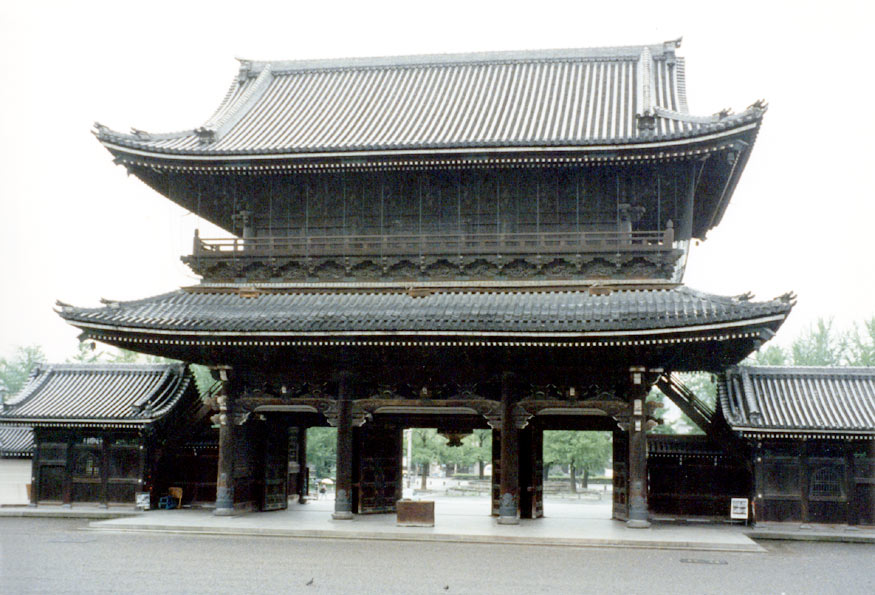
Khuê Ngưỡng: Vĩ Ngưỡng—Kuei-Yang.
Tào Đỗng,曹洞, Ts’ao-Tung
Vân Môn,雲門, Yun-Men
Pháp Nhãn,法眼, Fa-Yen
Ngũ Pháp,五法, Pancadharma or
Dharmapancakam (skt)—Five laws or categories
Tướng Danh Ngũ Pháp: Theo Thiền Sư Suzuki trong Nghiên Cứu Kinh
Lăng Già, có năm pháp là Tướng, Danh, Phân Biệt, Chánh Trí, và Như Như.
Những ai muốn đạt tới tinh thần của Đức Như Lai thì cần phải biết năm
pháp nầy, những người tầm thường thì không biết chúng, vì không biết
chúng nên thường phán đoán sai lầm và trở nên chấp trước vào những hình
tướng bên ngoài—According to Zen Master D. T. Suzuki in The Studies In
The Lankavatara Sutra, there are five categories of forms. They are
Name (nama), Appearance (nimitta), Discrimination (Right Knowledge
(samyagijnana), and Suchness (tathata). Those who are desirous of
attaining to the spirituality of the Tathagata are urged to know what
these five categories are; they are unknown to ordinary minds and, as
they are unknown, the latter judge wrongly and become attached to
appearances.
Tâm sở pháp: Các pháp tương ứng với tám thức mà khởi lên—Mental
conditions or activities.
Sắc pháp: Các pháp do tâm pháp và tâm sở pháp biến ra—The actual
states or categories as conceived.
Bất tương ưng pháp: Pháp giả lập—Hypothetic categories.
Vô vi pháp: Thực tính tĩnh lặng của chư pháp—The state of rest, or
the inactive principle pervading all things.
Lý Trí Ngũ Pháp,理智五法, The five
categories of essential wisdom
Chân như: The absolute.
Đại viên cảnh trí: Wisdom as the great perfect mirror reflecting
all things.
Bính đẳng trí: Wisdom of the equal Buddha-nature of all beings.
Diệu quán sát trí: Wisdom of mystic insight into all things and
removal of ignorance and doubt.
Thành sở tác trí: Wisdom perfect in action and bringing blessing to
self and others.
Đề Bà Ngũ Pháp,提婆五法, See Đề Bà Ngũ
Pháp
Ngũ Pháp Giới: Năm loại pháp giới—Five forms of dharmadhatu.
Hữu vi pháp giới: Sự pháp giới—The phenomenal realm.
Vô vi pháp giới: Lý pháp giới—The inactive/noumenal realm.
Diệc Hữu Vi Diệc Vô Vi Pháp Giới: Sự lý vô ngại pháp giới (cả hữu
vi lẫn vô vi): Interactive/Interdependent.
Phi hữu vi phi vô vi: Sự Lý vô ngại pháp giới—Neither active nor
inactive.
Sự sự vô ngại: Vô chướng ngại pháp giới—The unimpeded realm, the
unity of phenomenal and noumenal (collective and individual).
Ngũ Pháp Thành
Thân,五法成身,
See Ngũ Tướng Thành Thân
Ngũ Phẩm,五品, Năm phẩm đệ tử được
Phật nói đến trong Kinh Pháp Hoa—Five grades of disciples mentioned in
the Lotus Sutra
Tùy Hỷ Phẩm: Nghe pháp thực tướng mà tín thọ và tùy hỷ—Those who
hear the Buddha dharma and rejoice.
Độc Tụng Phẩm: Độc tụng Phật pháp—Read and repeat Buddha-sutras.
Thuyết Pháp Phẩm: Thuyết giảng Phật pháp—Preach the Buddha-dharma.
Kiêm Hành Lục Độ Phẩm: Trì niệm và thực hành Lục Độ Ba La
Mật—Observe and meditate on the six paramitas.
Chính Hành Lục Độ: Tự độ và độ tha—Transform self and others.
Ngũ Phần Giáo Pháp: Theo Hòa Thượng Thích Huyền Vi trong bộ Phật Lý
Căn Bản, Phật giáo được chia làm hai bộ phận lớn là Hiển giáo và Mật
giáo. Hiển giáo được Đức Phật Thích Ca Mâu Ni thuyết bằng ngôn ngữ văn
tự, trong khi Mật giáo không dùng ngôn ngữ, mà dùng tổng trì Đà La Ni
do Đức Đại Nhật Như Lai chủ xướng. Không có sử liệu xác thật về việc
kết tập kinh điển Mật giáo; tuy nhiên, theo các tông phái Mật tông tại
Tây Tạng thì Giáo pháp Mật tông được chia làm năm phần—According to
Most Venerable Thích Huyen Vi in His “Phật Lý Căn Bản,” Buddhism is
composed of two main divisions: The open, or general teaching; and the
esoteric schools. The open or general teaching preached by Sakyamuni
Buddha with clear words, while the esoteric teaching, not by clear
words, but by dharani from Mahavairocana Tathagata. There is no
documentation on the gathering of the esoteric canon; however,
according to the esoteric sects in Tibet, the correct doctrine of the
Buddha is divided into five parts.
Tạng Kinh,藏經, Do ngài A Nan/Ananda
trùng tụng—Sutra-pitaka
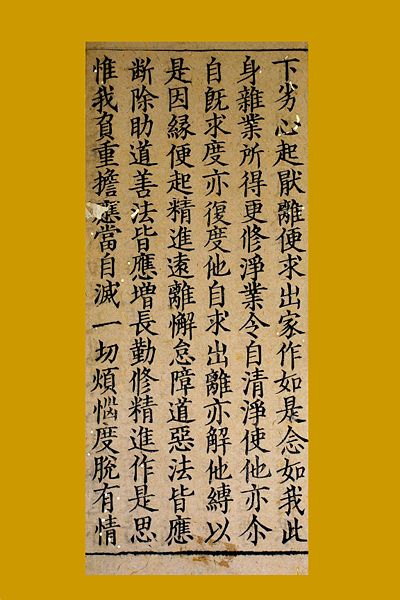
Video
Tham Nhap Kinh Tang (Thich Nhat Tu)
Tạng Luật: Do ngài Ưu Ba Ly/Upali trùng tụng—Vinaya-pitaka.
Tạng Luận: Do ngài Ca Chiên Diên/Katyayana trùng
tụng—Abhidharma-pitaka.
Trí Huệ Ba La Mật: Vận dụng trí huệ để vượt qua biển khổ sanh tử,
để đến bờ giải thoát Niết Bàn (lý nầy được nói rõ trong các bộ kinh Bát
Nhã)—Do ngài Văn Thù Sư Lợi/Manjusri thọ trì—Prajnaparamita.
Tổng Trì,總持, Đà La Ni hay chú ngữ
bí giáo thọ trì—Do ngài Kim Cang Thủ Bồ Tát/Vajrapani Bodhisattva thọ
trì và truyền bá—Dharani.
Ngũ Phần Giới Bổn: Giới Kinh Ngũ Phần Luật của Sa Di—The five
divisions of the Law in the Mahisasaka Vinaya.
Ngũ Phần Hương: See Ngũ Hương.
Ngũ Phần Pháp Thân: Panca-dharmakaya—Năm loại pháp thân công đức
của Như Lai—The five attributes of the dharmakaya or spiritual body of
Tathagata. These five attributes surpass all conditions of form or the
five skandhas, all materiality (rupa), all sensations (vedana), all
consciousness (samjna), all moral activity (karman), all knowledge
(vijnana):
Thi La,尸羅, Ba nghiệp thân khẩu
ý của Như Lai vượt trên mọi lỗi lầm sai trái—Budhha is above all moral
conditions
Định: Chân tâm của Như Lai tịch tĩnh và xa lìa mọi vọng
niệm—Tranquil and apart from all false ideas.
Huệ: Chân trí Như Lai viên minh siêu phàm—Wise and omniscient.
Giải thoát: Thân tâm Như Lai giải thoát mọi hệ phược, đó là trạng
thái Niết bàn—Free, unlimited, unconditioned, which is the state of
nirvana.
Giải thoát tri kiến: Như Lai biết được trạng thái thực sự giải
thoát—Buddha has perfect knowledge of this state.
Ngũ Phần Pháp Thân Hương: See Ngũ Hương.
Ngũ Phật,五佛, Năm vị Phật—The five
Dhyani-Buddhas

(A) Năm vị Phật của Kim Cang và Thai tạng giới—The five
Dhyani-Buddhas of the Vajradhatu and Garbhadhatu—The five Buddhas in
their five manifestations:
1) Phật Tỳ Lô Giá Na: Vairocana (skt)—Phật Đại Nhựt, tượng trưng
cho pháp thân vĩnh cửu và thanh tịnh. Còn được gọi là Đại Tỳ Lô Giá Na
Phật (là tinh túy của chư Phật). Ngài ngự tại trung tâm Thai Tạng và
Kim Cang giới—Vairocana as eternal and pure dharmakaya. Also called
Mahavairocana. He situated in the centre of both Garbhadhatu and
Vajradhatu.
A Súc Tỳ Phật,阿閦鞞佛, Aksobhya
(skt)—Còn gọi là Đông Phật, hay vị Phật tượng trưng cho Bất Lai
Chuyển—Aksobhya, also called the Buddha of the Eastern Pure Land, as
immutable and sovereign
Nam Phật: Ratnasambhava (skt)—Bảo Sanh Phật, tượng trưng cho phước
đức huy hoàng (bảo hộ cho các kho báu)—Ratnasambhava as bliss and
glory.
A Di Đà Phật,阿彌陀佛, Amitabha
(skt)—Còn gọi là Tây Phật, là vị Phật tượng trưng cho trí tuệ trong
hành động: Also called Buddha of the Western Pure Land. Amitabha as
wisdom in action
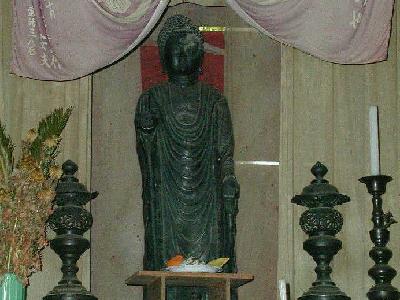
Phật Thích Ca cho hóa thân độ chúng: Sakyamuni as incarnation
nirmanakaya .
(B) Giống như phần (A) chỉ thay thế Phật A Di Đà bằng Ly Bố Úy Như
Lai, hay Bắc Phật—Same as in (A) with Amoghasiddhi, or the Northern
Buddha replaces Amitabha—See Amoghasiddhi in Sanskrit/Pali-Vietnamese
Section.
Theo Chân Ngôn tông—According to the Shingon Sect (Real or
substantive word):
Dược Vương Phật: Bhaisajya.
Đa Bảo Phật: Prabhutaratna.
Tỳ Lô Giá Na Phật,毘盧遮那佛, Vairocana
A Súc Tỳ Phật,阿閦鞞佛, Aksobhya
Ly Bố Úy Phật: Amoghasiddhi.
(D)
Dược Vương Phật: Bhaisajya.
Đa Bảo Phật: Prabhutaratna.
Tỳ Lô Giá Na Phật,毘盧遮那佛, Vairocana
A Súc Tỳ Phật,阿閦鞞佛, Aksobhya
Thích Ca Mâu Ni
Phật,釋迦牟尼佛,
Sakyamuni.
Ngũ Phật Bảo Quan,五佛寶冠, Phật Đảnh gồm
năm vị. Đức Tỳ Lô Giá Na trong Kim Cang Giới đội vương miện có năm điểm
ám chỉ năm đặc tánh toàn trí được đại diện bởi Ngũ Phật Bảo Quan—A
Buddha-crown containing the Five Dhyani-Buddhas. The five Buddhas are
always crowned when holding the sakti, and hence are called by the
Tibetans the “Crowned Buddhas.” Vairocana in the Vajradhatu wears a
crown with five points indicative of the five qualities of perfect
wisdom, as represented by the five dhyani-buddhas
Ngũ Phật Đảnh Pháp,五佛頂法, Mật Giáo lấy
hạnh tu của năm vị Bồ Tát trong Ngũ Phật Đảnh Tôn mà tu hành—Buddhists
of the esoteric sect practice in accordance with the practices of the
Five Bodhisattvas who sometimes stand on the left of Sakyamuni—See Ngũ
Phật Đảnh Tôn
Ngũ Phật Đảnh Tôn,五佛頂尊, Ngũ Đảnh Luân
Vương—Năm vị Bồ Tát thường đứng bên trái của Phật Thích Ca, tượng trưng
cho năm trí tuệ—Five Bodhisattvas sometimes placed on the left of
Sakyamuni, indicative of five forms of wisdom
Bạch Tản Phật Đỉnh: Lấy lọng trắng làm hình Tam Muội Da, tượng
trưng cho đức đại từ bi trong trắng truyền khắp pháp giới, một trong
những danh hiệu của Quán Thế Âm Bồ Tát—Sitatapatra (skt)—with white
parasol, symbol of pure mercy, one of the title of Avalokitesvara.
Thắng Phật Đảnh: Jaya (skt)—Lấy thanh bảo kiếm làm hình Tam Muội
Da, tượng trưng cho trí tuệ—With sword, symbol of wisdom or discretion.
Tối Thắng Phật Đảnh: Vijaya (skt)—Tối Thắng Kim Luân Phật
Đảnh—Chuyển Luân Vương Phật Đảnh—Lấy bánh xe vàng làm hình Tam Muội Da,
tượng trưng cho công đức chuyển pháp luân không gì sánh bằng—With
golden wheel symbol of unexcelled power of preaching.
Hỏa Tụ Phật Đảnh,火聚佛頂, Tejorasi
(skt)—Còn gọi là Hỏa Quang, Quang Tụ hay Phóng Quang Phật Đảnh—Lấy ánh
sáng làm hình Tam Muội Da, tượng trưng cho sự thu nhiếp chúng
sanh—Collected brilliance with insignia authority or a flame
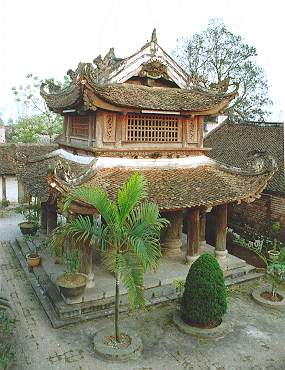
Xả Trừ Phật Đảnh: Vikirna (skt)—Trừ Chướng Phật Đảnh—Thôi Toái Phật
Đảnh—Trừ nghiệp Phật Đảnh—Trừ Cái Chướng Phật Đảnh—Lấy cái móc làm hình
Tam Muội Da, tượng trưng cho công đức phá nát tất cả phiền
não—Scattering and destroying all distressing delusion, with a hook as
symbol.
Ngũ Phật Kiết Ma Ấn: Năm
dấu ấn bằng tay của mỗi một trong năm vị
Phật trong Kim Cang Giới—The manual signs by which the characteristic
of each of the five Dhyani-Buddhas is shown in the diamond realm group:
Phật Tỳ Lô Giá Na hai tay nắm lại, dấu ấn của trí tuệ—Vairocana,
the closed hand of wisdom.
Phật A Súc Bệ, những ngón tay phải chạm đất, dấu ấn của trí tuệ
vững chắc—Aksobhya, right fingers touching the ground, firm wisdom.
Nam Phật, tay phải mở ra và nâng lên, dấu ấn của thệ
nguyện—Ratnassambhava, right hand open uplifted, vow-making sign.
Phật A Di Đà, dấu ấn Tam Ma Địa, bàn tay trái bọc lấy những ngón
tay phải, giảng pháp dứt nghi—Amitabha, samadhi sign, right fingers in
left palm, preaching and ending doubt.
Ly Bố Úy Như Lai hay Phật Thích Ca Mâu Ni, Nghiệp ấn và Niết bàn
vĩnh cửu—Amoghasiddhi or Sakyamuni, the karma sign, final nirvana.
Ngũ Phật Ngũ Đại: Ngũ Phật tương ứng với ngũ đại—The five Buddhas
correspond to five elements:
Phật Tỳ Lô Giá Na tương ứng với Hư Không: Vairocana Buddha
corresponds to Space (Ether).
Phật A Súc Bệ tương ứng với Đất: Aksobhya Buddha corresponds to
Earth.
Bảo Sanh Phật hay Nam Phật tương ứng với Lửa: Ratnasambhava Buddha
corresponds to Fire.
Phật A Di Đà tương ứng với Nước: Amitabha Buddha corresponds to
Water.
Phật Ly Bố Úy hay Bất không Phật tương ứng với Gió: Amoghasiddhi
Buddha corrsponds to Wind or Air.
Ngũ Phật Ngũ Quan: Ngũ Phật tương ứng với ngũ quan—The five Buddhas
correspond to five senses:
Phật Tỳ Lô Giá Na tương ứng với Thị giác: Vairocana Buddha
corresponds to Sight.
Phật A Súc Bệ tương ứng với Thính giác: Aksobhya Buddha corresponds
to Sound.
Phật bảo Sanh hay Nam Phật tương ứng với Khứu giác: Ratnasambhava
corresponds to Smell.
Phật A Di Đà tương ứng với Vị giác: Amitabha Buddha corresponds to
Taste.
Phật Ly Bố Úy hay Bất Không tương ứng với Xúc giác: Amoghasiddhi
Buddha corresponds to Touch.
Ngũ Phật Ngũ Sắc: Năm vị Phật tương ứng với Năm màu sắc—The five
Buddhas correspond to five colours:
Phật Tỳ Lô Giá Na tương ứng với sắc Trắng: Vairocana Buddha
corresponds to White.
Phật A Súc Bệ tương ứng với sắc Xanh: Aksobhya Buddha corresponds
to Blue.
Phật Bảo Sanh hay Nam Phật tương ứng với sắc Vàng: Ratnasambhava
Buddha corresponds to Yellow.
Phật A Di Đà tương ứng với sắc Đỏ: Amitabha Buddha corresponds to
Red.
Phật Ly Bố Úy hay Bất Không Phật tương ứng với sắc Xanh lá cây:
Amoghasiddhi Buddha coresponds to Green.
Ngũ Phật Ngũ Vị: Năm vị Phật tương ứng với năm vị thế—The five
Buddhas correspond to five positions:
Phật Tỳ Lô Giá Na ở Trung tâm: Vairocana Buddha in the Center.
Phật A Súc Bệ ở Đông Độ: Aksobhya Buddha in the East.
Phật Bảo Sanh hay Nam Phật ở Nam Độ: Ratnasambhava Buddha in the
South.
A Di Đà Phật ở Tây Phương: Amitabha Buddha in the West.
Ly Bố Úy hay Bất Không Phật ở phương Bắc: Amoghasiddhi Buddha in
the North.
Ngũ Phật Quan: See Ngũ Phật Bảo Quan.
Ngũ Phật Quán Đảnh,五佛灌頂, Lễ quán đảnh với
năm lọ nước thơm tượng trưng cho năm trí huệ của Phật—Baptism with five
vases of perfumed water, symbol of Budha-wisdom in its five forms—See
Ngũ Phật Đảnh Tôn
Ngũ Phật Sinh Ngũ Bồ Tát: See Ngũ Phật Sinh Ngũ Bồ Tát, Ngũ Kim
Cang, Ngũ Phẩn Nộ from (1) to (5) (a).
Ngũ Phật Sinh Ngũ Bồ Tát, Ngũ Kim Cang, Ngũ Phẩn Nộ: A bodhisattva
who represents the Buddha’s dharmakaya, or spiritual body; wisdom in
graciousness and a pierce or angry form against evil:
Phật Tỳ Lô Giá Na dưới ba hình thức: Vairocana (Đại Nhật Như Lai)
appears in the three forms:
Chuyển Pháp
Luân Bồ Tát,轉法輪菩薩,
Vajra-paramita Bodhisattva
Biến Chiếu Kim Cang: Universally Shining Vajrasattva.
Bất Động Minh
Vương,不動明王,
Arya-Acalanatha Raja
A Súc Bệ Phật dưới ba hình thức: Aksobhya appears in the three
forms:
Hư Không Tạng,虛空藏, Akashagarbha
Như Ý,如意, Complete Power
Quân Trà Lợi Minh Vương: Kundali-Raja.
Nam Phật (Bảo Sanh Phật) dưới ba hình thức: Ratnasambhava’s three
forms:
Phổ Hiền:Samantabhadra
Tát Đỏa,薩埵, Sattva-vajra
Giáng Tam thế Minh vương: Trailokyavijaya-raja.
A Di Đà:Amitabha Buddha
Quán Thế Âm:Avalokitesvara
Pháp Kim Cang: Dharmaraja.
Mã đầu Minh vương: Hayagriva—The horse-head Dharmapala.
Amoghasiddhi’s (Bất Không Phật) three forms:
Di Lặc: Meitreya
Nghiệp Kim Cang: Karmavajra.
Kim Cang Dạ Xoa: Vajrayaksa.
Ngũ Phật Sinh Ngũ Kim Cang: See Ngũ Phật Sinh Ngũ Bồ Tát, Ngũ Kim
Cang, Ngũ Phẩn Nộ from (1) to (5) (b).
Ngũ Phật Sinh Ngũ Phẩn Nộ: See Ngũ Phật Sinh Ngũ Bồ Tát, Ngũ Kim
Cang, Ngũ Phẩn Nộ.
Ngũ Phật Tánh (Tính): Năm bản tánh đặc biệt của Phật tánh—The five
characteristics of a Buddha’s nature:
Tự Tánh Phật: Tam nhân Phật Tánh—Natural attributed Buddha-nature:
Tự tính trú Phật tánh: The Buddha’s nature which is in all living
beings, even those in the three evil paths (gati).
Dẫn xuất Phật tánh: The Buddha’s nature developed by the right
discipline.
Trí đắc quả Phật tánh: The final or perfected Buddha-nature
resulting from the development of the original potentiality.
Tu Tập Phật tánh: Acquired Buddha-nature:
Quả Phật tánh: The fruition of perfect enlightenment.
Quả quả Phật tánh: The fruition of that fruition, or the revelation
of parinirvana.
Ngũ Phật Tử,五佛子, Năm loại Phật
tử—Five classes of Buddhists

Năm vị Phật tử đầu tiên của Phật—The Buddha’s first five disciples.
Tỳ Khưu: Tăng—Bhikkhu.
Tỳ Khưu Ni: Ni—Bhikkhuni.
Ưu Bà Tắc,優婆塞, Cận sự nam—Upasaka
Ưu Bà Di,優婆夷, Cận sự nữ—Upasika
Cận trụ: Người mới tu—Novice.
(C)
Dự Lưu,預流, Stream-enterer
Nhất Lai,一來, Once-returner
Bất Lai,不來, Non-returner
A-La-Hán: Arhat.
Bích Chi,辟支, Pratyeka-buddha
Ngũ Phúc Thế Gian: The five worldly blessings:
Phú (Giàu sang): Rich.
Quý (Danh vọng): Honour.
Thọ (Trường thọ)ï: Long-life.
Khương (Khang kiện): Healthy.
Ninh (An lành): Peace.
Ngũ Phương: The five directions:
Đông: East.
Tây: West.
Nam: South.
Bắc: North.
Trung Tâm,忠心, Center
Ngũ Quả,五果, Pancaphala (skt)—Năm
quả—The five fruits or effects
(A)
Dị Thục Quả,異熟果,Vipakaphala (skt)
Khi chạm phải một hành động xấu, người phạm phải chịu khổ đau; khi
làm được một hành động tốt, người ấy hưởng sung sướng. Sung sướng và
khổ đau trong tự chúng là không thuộc tính cách đạo đức, xét về nghiệp
của chúng thì chúng trung tính. Do đó mà quả nầy có tên “Dị Thục” hay
“chín muồi theo những cách khác nhau.”—When an evil deed is committed,
the doer suffers pain; when a good deed is done, he enjoys pleasure.
Pleasure and pain in themselves are unmoral and neutral as far as their
karmic character is concerned. Hence the name “differently ripening.”
Quả khổ đau hay an lạc của đời nầy là do nghiệp ác thiện của đời
trước—Fruit ripening divergently (pleasure and goodness are in
different categories; present organs accord in pain or pleasure with
their past good or evil deeds).
Đẳng Lưu Quả,等流果, Nishyanda (skt)
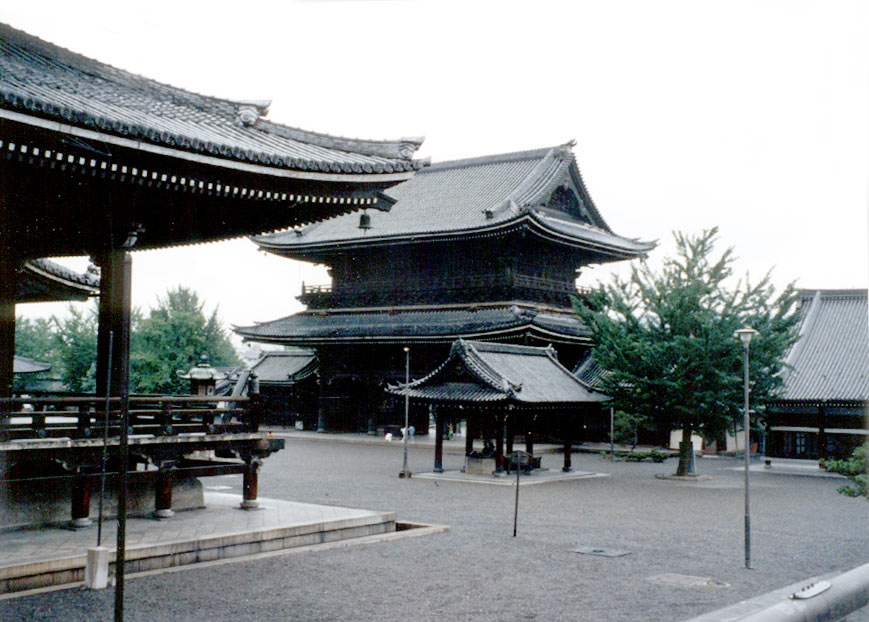
Khi làm một hành động xấu hay tốt, khiến cho người làm hành động ấy
dễ có xu hướng tiến đến những hành động xấu hay tốt. Vì nhân quả thuộc
cùng một bản chất, nên quả nầy được gọi là “chảy trong cùng một dòng”
hay “đẳng lưu.”—When an evil or a good deed is done, this tends to make
the doer more easily disposed towards evils or goods. As cause and
effect are of the same nature, this “phala” is called “flowing in the
same course.”
Do thiện tâm đời trước mà chuyển thành thiện tâm sau khi tái sanh;
do ác tâm đời trước mà ác tâm đời nầy tăng trưởng—Fruit of the same
order (goodness reborn from previous goodness)—See Đẳng Lưu Quả.
Độ Dụng Quả: Purushakara (skt).
Nghĩa đen có nghĩa là sự vận dụng của người. Nó là kết quả của nhân
tố trong công việc: Literally means man-working. It is the effect
produced by a human agent at work.
Rau quả hay ngũ cốc sinh sôi từ đất lên do bởi ý chí, trí tuệ, và
sự cần mẫn của người nông dân; vì mùa gặt là kết quả do bởi nhân tố con
người mang lại, nên “Độ Dụng Quả” được đặt tên cho kết quả
nầy—Vegetables or cereals grow abundantly from the earth owing to the
will, intelligence, and hard work of the farmer; as the harvest is the
fruit brought about by a human agency, the name purusha is given to
this form of effect.
Vị thế hiện tại và quả hành về sau, sự thưởng phạt đời nầy do công
đức đời trước mà ra: Present position and function fruit, the reward of
moral merit in previous life.
Tăng Thượng Quả,增上果, Adhipatiphala
(skt)
Hễ có sự vật nào hiện hữu được là do bởi sự hợp tác tích cực hay
tiêu cực của tất cả các sự vật khác, vì nếu sự hợp tác nầy thay đổi
theo một cách nào đó thì sự vật kia sẽ không còn hiện hữu nữa. Khi sự
đồng hiện hữu của các sự vật như thế được xem là kết quả của tính hỗ
tương phổ quát, thì nó được gọi là “tăng thượng duyên.”—That anything
at all exists is due to the cooperation positive or negative of all
other things; for if the latter interfere in any way, the former will
cease to exist. When thus the co-existence of things is regarded as the
result of universal mutuality, it is called “the helping.”
Quả siêu việt đời nầy là do khả năng siêu việt đời trước hay cái
quả do tăng thượng duyên mà sinh ra, như nhãn thức đối với nhãn căn là
tăng thượng quả—Dominant effect—Increased or superior effect (fruit) or
position arising previous earnest endeavour and superior capacity, e.g.
eye-sight as an advance on the eye-organ.
Ly Hệ Quả,離繫果, Visamyoga (skt)
Quả không bị ràng buộc bởi bất cứ hệ lụy nào, quả Niết bàn—Fruit of
freedom from all bonds, nirvana fruit.
Niết Bàn là kết quả của sự tu tập tâm linh, và vì nó khiến cho
người ta thoát khỏi sự trói buộc của sinh và tử nên nó được gọi là
“giải thoát khỏi sự trói buộc” hay “ly hệ quả.”—Nirvana is the fruit of
spiritual discipline, and as it enables one to be released from the
bondage of birth-and-death, it is called “freeing from bondage.”
(B)
Thức Nặc,識匿, Conception (viewed
psychologically)
Danh Sắc,名色, Formation mental and
physical
Lục Nhập (Lục xứ): The six organs of perception complete.
Xúc: The birth and contact with the world.
Thọ: Consciousness.
Ngũ Quan,五官, Năm giác quan—The
five senses
Thị giác (Mắt): Sight.
Thính giác (Tai): Hearing.
Khứu giác (Mũi): Small.
Vị giác (Lưỡi): Taste.
Xúc giác (Thân): Touch.
Ngũ Quan Đại Sứ: Năm đại sứ giả kiểm soát sanh, già, bệnh, khổ và
chết—The five controlling powers (magistrates) of birth, old-age,
sickness, suffering, death.
Ngũ Quan Vương,五官王, Vị vương thứ tư
trong thập điện minh vương—Wu-Kuan-Wang, the fourth of the ten rulers
of Hades
Ngũ Quán: Năm pháp quán trong Kinh Pháp Hoa—The five meditations in
Lotus Sutra:
Chân quán: Không quán hay quán về lý chân đế mà đoạn trừ kiến hoặc
và tư hoặc—Meditation on the truth (Không quán)—Meditation on the
reality of the void, or infinite, in order to be rid of illusion in
views and thoughts.
Thanh tịnh quán: Quán thanh tịnh để đoạn trừ những bất tịnh còn xót
lại—Meditations on purity, to be rid of any remains of impurity
connected with the temporal things.
Quảng đại trí huệ quán: Quán về trí huệ quảng đại và rộng
lớn—Meditations on the wider and greater wisdom.
Bi quán: Dùng ba phép quán kể trên mà quán về những điều kiện đáng
thương của chúng sanh để cứu độ họ—Meditation on pitifulness, or the
pitiable condition of the living, and by the above three meditations to
meditate on their salvation.
Từ quán: Dùng ba cách quán kể trên mà quán rộng ra với bi quán để
mang lại sự an lạc cho chúng sanh—Meditations on mercy and the
extension of the first three meditations to carrying of joy to all the
living.
Ngũ Sanh,五生, Five rebirths—Five
states or conditions of a bodhisattva’s rebirth—See Ngũ Sinh
Ngũ Sắc,五色, The five primary
colors
Trắng: White.
Xanh: Blue.
Vàng: Yellow.
Đỏ: Red.
Đen: Black.
** For more information, please see Ngũ Căn Sắc.
Ngũ Sanh,五生, Năm cách sinh của
chư Bồ Tát—Five rebirths or states or conditions of a bodhisattva’s
rebirth
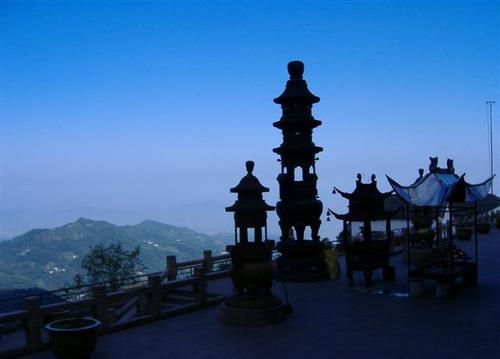
Tức Khổ Sanh,息苦生, Các ngài sanh ra
trong đời khổ hay tự hy sinh để cứu khổ—To be reborn in calamities or
to stay calamities by sacrificing himself
Tùy Loại Sinh: Tùy loài chúng sanh nào cần thì các ngài tái sanh
vào đó mà hóa độ—To be reborn in any class that may need him.
Thắng Sanh,勝生, Các ngài sinh vào
chỗ phú quý giàu sang, tướng mạo đẹp đẽ để hóa độ chúng sanh—To be
reborn in superior conditions, handsome, wealthy or noble
Tăng Thượng Sanh,增上生, Các ngài sinh ra
làm nhiều thứ bậc vua chúa để tiện bề hóa độ chúng dân—To be reborn in
various grades of kingship
Tối Hậu Sanh,最後生, Các ngài tái sanh
lần cuối cùng để độ chúng sanh trước khi thành Phật—Final rebirth
before Buddhahood
Ngũ Sở Y Thổ,五所依土, Năm cõi sở y—The
five Buddha-ksetra or dependencies, the realms or conditions of a
Buddha
Pháp Tánh Thổ,法性土, Cõi nương tựa của
pháp thân thanh tịnh của Đức Như Lai, lấy Chân Như làm thể, nhưng thân
và cõi đó không sai biệt—The Buddha’s dharmakaya-ksetra, or realm of
his spiritual nature, depend on and yet identical with Bhutatathata
Thực Báo Độ: Tự Thọ Dụng Độ—Cõi mà báo thân viên mãn của Đức Như
Lai nương tựa vào, lấy năm uẩn vô lậu làm thể—The Buddha’s sambhogakaya
realm with its five immortal skandhas, i.e. his glorified body for his
own enjoyment.
Sắc Tướng Độ: Cõi vi trần tướng hải của Đức Như Lai, lấy hậu đắc
trí tự hành thể—The land or condition of his self-expression as wisdom.
Tha Thụ Dụng Độ: Tha dụng thân của Đức Như Lai, lấy hậu đắc trí lợi
tha làm thể—The Buddha’s sambhogakaya realm for the joy of others.
Biến Hóa Độ: Cõi nương tựa của biến hóa thân, tùy theo tâm của
chúng sanh mà biến hiện thành đủ mọi cõi nước tịnh uế—The realm on
which the Buddha’s nirmanakaya depends, which results in his relation
to every kind of condition.
Ngũ Sơn,五山, Năm núi—Five
mountains and monasteries
Năm núi Ấn Độ—Five mountains in India:
Bề-Ba-La-Bạt-Thứ: Vaibhara-vana.
Tát Đa Bát Na Cầu Ha: Saptaparnaguha.
Nhân Đà La
Thế La Cầu Ha,因陀羅勢
羅求呵, Indrasailaguha
Tát Pha Thứ Hồn Trực Ca Bát Bà La: Sarpiskundika-Pragbhara
Kỳ Xà Quật: Grdhrakuta.
Năm núi Trung Hoa—Five mountains in China:
Kính Sơn,徑山, Ching Shan
Bắc Sơn,北山, Bei Shan
Nam Sơn,南山, Nan Shan
A Dục Vương Sơn,阿育王山, King Asoka Shan
Thái Bạch Sơn: T’ai Po Shan.
Ngũ Suy,五衰, Theo Kinh Đại Bát
Niết Bàn, Đức Phật dạy có năm thứ tướng suy thoái hay năm dấu hiệu rõ
ràng của sự chết hay tiến gần đến sự chết của chư Thiên khi các ngài đã
hưởng hết phước nơi cõi trời, sắp đi đầu thai—According to the
Parinirvana Sutra, the Buddha mentioned about five signs of decay which
refer to symptoms of imminent death or approaching death and rebirth in
the lower realms, experienced by celestials and deities at the end of
their transcendental lives
Quần áo bẩn thỉu hôi hám: Unpleasant odor from dirty robes.
Đổ mồ hôi nách: Sweating under one’s armpit.
Đầu cổ rối bù như hoa héo: One’s hair-flower on the head withers.
Thân thể hôi thối nhơ nhớp: One’s body smelling bad due to
uncontrolled discharges (body will emit an unpleasant odor).
Không yên ổn hay không còn ưa thích chỗ ở của mình nữa: Uneasiness
or anxiety—They no longer find their place pleasurable.
Ngũ Suy Tướng: Five marks of decay—See Ngũ Suy.
Ngũ Sư,五師, Năm loại pháp sư—The
five masters or teachers
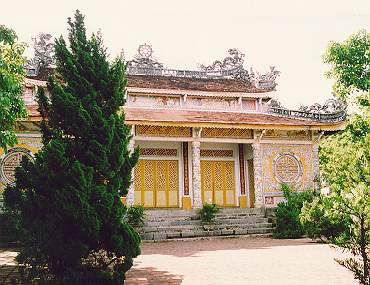
(A)
Kinh Sư,經師, Teachers of the
sutras
Luật Sư,律師, Teachers of the
Vinaya
Luận Sư,論師, Teachers of the
sastras
Pháp Sư,法師, Teachers of the
Abhidharma
Thiền Sư,禪師, Teachers of the Zen.
Or meditation
(B) Dị Thế Ngũ Sư—Teachers of different periods:
Ma-Ha-Ca-Diếp: Mahakasyapa.
A-Nan: Ananda.
Ma Điền Đề: Madhyantika.
Thương Na Hòa Tu,商那和修, Sanavasa
Ưu Bà Cúc Đa,優婆毱多, Upagupta
Dị Thế Ngũ Sư liên hệ tới Luật Tạng—Teachers of the same periods
connected with the Vunaya:
Ưu Bà Ly,優婆離, Upali
Đả Tả Câu: Dasaka.
Tu Na Câu: Sonaka.
Tất Dà Bà: Siggava.
Mục Kiền Liên
Tử Đế Tu,目犍連子帝須,
Moggaliputra Tissa
Ngũ Sư Tử,五師子, Năm sư tử phóng ra
từ năm ngón tay Phật—The five lions that sprang from the Buddha’s
finges
Ngũ Sứ Giả: See Ngũ Đại Sứ Giả.
Ngũ Sự Thành Tựu: Sampada (p)—Five kinds of gain—Theo Kinh Phúng
Tụng trong Trường Bộ Kinh, có năm sự thành tựu—According to the Sangiti
Sutta in the Long Discourses of the Buddha, there are five kinds of
gain:
Thân Thuộc Thành Tựu: Gain of relatives.
Tài Sản Thành Tựu: Gain of wealth.
Vô Bệnh Thành Tựu: Gain of health.
** Không có loài hữu tình nào, vì được thân thuộc, tài sản hay vô
bệnh thành tựu mà được sanh lên thiện thú hay Thiên giới—No beings
arise in a happy, heavenly state after death because of the gain of
relatives, wealth and health.
Giới Thành Tựu: Gain of morality.
Kiến Thành Tựu: Gain of right views.
** Loài hữu tình, vì giới và kiến thành tựu mà được sanh lên thiện
thú hay Thiên giới—Beings are reborn in a happy or heavenly state
because of gains in morality and right views.
** For more information, please see Ngũ Sự Tổn Thất.
Ngũ Sự Tổn Thất: Vyasanani (p)—Theo Kinh Phúng Tụng trong Trường Bộ
Kinh, có năm sự tổn thất—According to the sangiti Sutta in the Long
Discourses of the Buddha, there are five kinds of loss:
Thân thuộc tổn thất: Loss of relatives.
Tài sản tổn thất: Loss of wealth.
Tật bệnh tổn thất: Loss of health.
** Không có loại hữu tình nào, vì thân thuộc tổn thất, tài sản tổn
thất, tật bệnh tổn thất, mà sau khi hoại mạng bị sanh vào khổ giới, ác
thú, đọa xứ hay địa ngục—No beings fall into an evil state or a hell
state after death because of loss of relatives, wealth or health.
Giới tổn thất: Loss of morality.
Chánh kiến tổn thất: Loss of right view.
** Beings do fall into an evil state or a hell
state by loss of morality and right views.
Ngũ Sự Vọng Ngữ,五事妄語, Năm điều vọng
ngữ—The five kinds of false speech
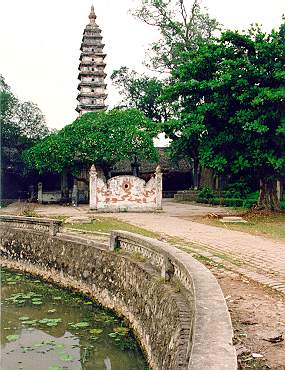
Nói lời phi lý: Nonsense or trangression speech.
Nói lời dối trá: Lying or false speech.
Nói lời phỉ báng: Slandering.
Nói lời khoe khoang lố bịch: False boasting.
Nói lời dối gạt: Deception.
Ngũ Tà Kiến: Five types of
false views.
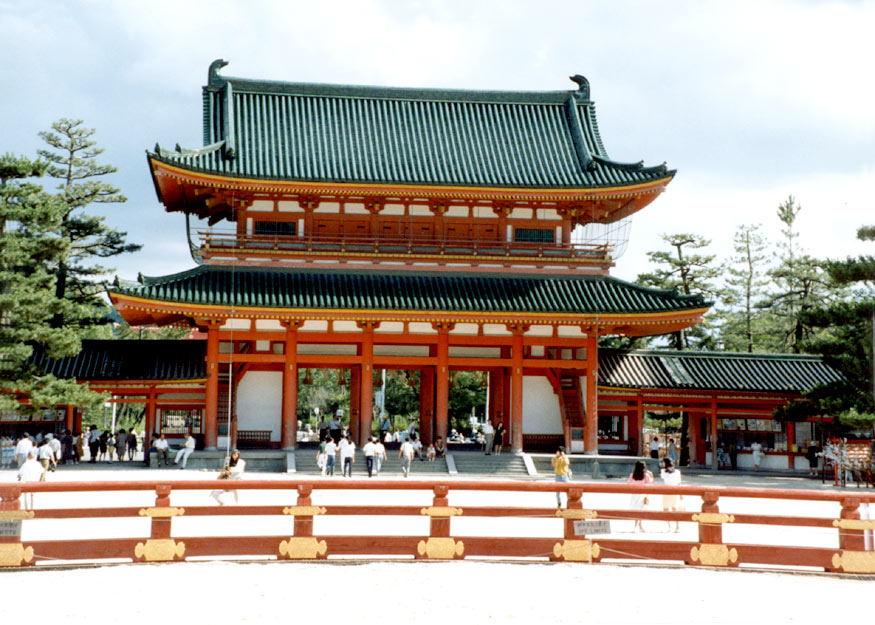
Thân Kiến,身見, Body view—See Thân
Kiến
Biên Kiến,邊見, One-sided view—See
Biên Kiến
Tà Kiến,邪見, Improper view—See Tà
Kiến
Kiến Thủ,見取, Obstinate view—See
Kiến Thủ Kiến
Giới Kiến Thủ: Precept Fixation view—See Giới Kiến Thủ.
Ngũ Tà Mệnh: See Ngũ Tà Sư.
Ngũ Tà Sư: Năm thứ tà mệnh của chư Tăng—Five improper ways of
gaining a livelihood for a monk—Five kinds of deviant livelihood:
Trá hiện dị tướng: Giả dối hiện ra dị tướng để gạt người—Changing
his appearance theatrically—Displaying an unusual appearance.
Tự thuyết công năng: Nói ra cái hay giỏi của mình hay tự khoe tài
giỏi để cầu lợi dưỡng—Advertise his own power or virtue—Using low voice
in order to appear awesome.
Chiêm tướng kiết hung: Xem bói tướng nói điều lành dữ của người để
cầu lợi dưỡng—Fortune-telling—Performing divination and fortune
telling.
Cao thinh hiện oai: Nói phách những lời mạnh dữ hoặc nói huênh
hoang để cầu lợi dưỡng—Hectoring and bullying.
Thuyết sở đắc lợi dĩ động nhân tâm: Nói ra cái mối lợi mình kiếm
được để làm động lòng người—Praising the generosity of another to
induce the hearer to bestow presents.
Ngũ Tác Nghiệp Căn,五作業根, See Ngũ Tác
Nghiệp Thân in Vietnamese-English Section.
Ngũ Tác Nghiệp Thân: Năm căn tạo nghiệp—The five working organs:
Khẩu: Ngôn ngữ—Mouth—Speech.
Thủ: Tay—Hands.
Cước: Chân—Feet.
Phái tính hay Sinh thực khí: Chỗ tiểu tiện—Sex organ.
Hậu môn: Chỗ đại tiện—Anus.
Ngũ Tam Bát Nhị,五三八二, Theo Kinh Lăng
Già, năm pháp, ba tánh, tám thức và hai vô ngã là những phương tiện đưa
hành giả đến cứu cán Phật quả—According to the Lankavatara Sutra, Five
Dharmas, Three Natures, Eight Consciousnesses, Two kinds of Non-ego are
all means to the end of Buddhahood
Ngũ Tán Loạn,五散亂, Năm thứ tán
loạn—The five senses of mental distraction
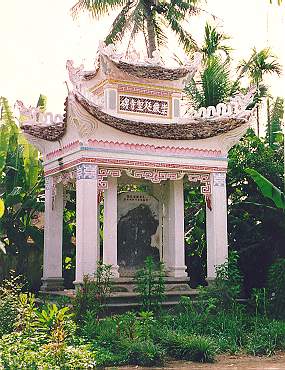
Tự nhiên tán loạn: Năm thức chẳng giữ tự tính, chạy theo ngoại
cảnh, niệm niệm biến thiên—The five senses themselves are not
functioning properly.
Ngoại tán loạn: Ý căn trì độn, theo đuổi ngoại trần nên không có
khả năng định tĩnh hay chú ý—External distraction or inability to
concentrate the attention.
Nội tán loạn: Tâm sinh cao thấp, niệm niệm chuyển dời bất
định—Internal distraction or mental confusion.
Thô tán loạn: Chấp vào ngã và ngã sở mà bị tán loạn—Distraction
caused by of me and mine, personality and possession.
Tư duy tán loạn: Tán loạn tư tưởng bởi Tiểu thừa—Confusion of
thought produced by Hinayana.
Ngũ Tạng,五臟,
Năm bộ phận bên trong cơ thể—The five inner organs (viscera):
Tâm (Tim): Heart.
Can (Gan): Liver.
Tỳ (Bao tử): Stomach.
Phế (Phổi): Lungs.
Thận (Thận): Kidneys.
Ngũ Tạng Đại Thừa (kinh điển)—The fivefold Mahayana Canon:
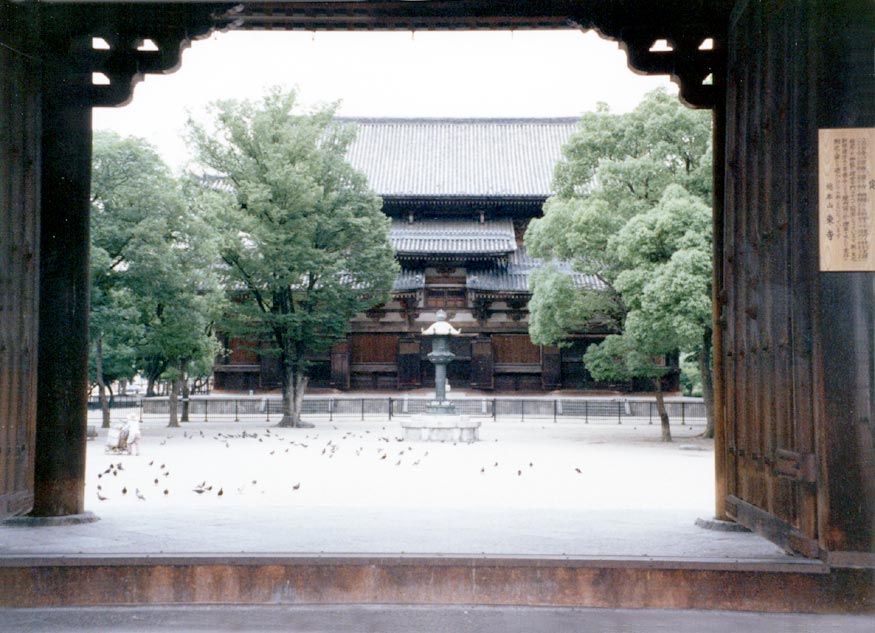
Kinh Tạng,經藏, The sutras
Luật Tạng,律藏, The vinaya
Luận Tạng,論藏, The Abhidharma
Tạp Tạng,雜藏, The miscellaneous
collection
Bồ Tát Tạng,菩薩藏, Bodhisattva
collection
or Chú Tạng: Spells.
Ngũ Tạng Mật Giáo (kinh điển)—The esoteric fivefold canon:
1-3) From one to three are similar as in (B).
4) Bát Nhã Ba La Mật: The Prajnaparamita.
Đà La Ni,陀羅尼,Chú, Dharani
Ngũ Tánh,五性, See Ngũ Tính
Ngũ Tâm,五心, Năm tâm khởi lên
theo tiến trình giác tri ngoại cảnh—The five condition of mind produced
by objective perception
Tốt Di tâm: Bất chợt nẩy sinh tâm—Immediate or instantaneous—The
first impression
Tầm cầu tâm: Attention or Inquiry.
Quyết định tâm: Conclusion or decision.
Nhiễm tịnh tâm: The effect, evil or good.
Đẳng lưu tâm: The production therefrom of the causation.
Ngũ Tâm Hoang Vu: Five mental blockages—See Năm Tâm Hoang Vu.
Ngũ Tân,五辛, Theo Kinh Thủ Lăng
Nghiêm, ngũ vị tân đều bị cấm. Nếu ăn ngũ tân sống sẽ gây nên nóng nãy
hay gây gỗ. Nếu ăn chín thì ngũ tân là những chất kích thích cho nhục
dục. Vã lại, hơi thở của người ăn ngũ tân sẽ làm cho các thiện thần
không chịu được và bỏ đi lúc người ấy tụng kinh. Chính vì thế mà Phật
giáo khuyên nên tránh ngũ tân vì chúng khuấy động sự yên tỉnh của
tâm—According to the Surangama Sutra, the five forbidden pungent roots.
If eaten raw they are said to cause irretability of temper or anger and
disputes. If eaten cooked, to act as an aphrodisiac, or they will
increase one’s sexual desire; moreover, the breath of the eater, if
reading the sutras, will drive away the good spirits. Thus Buddhism
advises practitioners to avoid them, as their consumption tends to
disturb the peacefulness of the mind
Đại toán (tỏi): Garlic.
Ba loại Cách thông (hành): Onion.
Nén: Another form of onion.
Kiệu: Another form of onion.
Từ thông (hẹ): Leeks.
Ngũ Tham Nhựt: Bốn ngày lễ bái: mồng 5, 10, 20 và 25 trong
tháng—Worship on the four days: the fifth, the tenth, the twentieth,
and the twenty-fifth.
Ngũ Tham
Thượng Đường,五參上堂,
See Ngũ Tham Nhựt
Ngũ Thánh: See Ngũ Thông Thần.
Ngũ Thạnh Ấm Khổ:
Khổ đau tinh thần và vật chất khởi lên do những hoạt động của Ngũ
Uẩn—The mental and physical sufferings arising from the full-orbed
activities of the skandhas.
Một trong Bát Khổ: Ngũ Ấm thạnh suy khổ—One of the eight
sufferings—See Ngũ Uẩn.
Ngũ Thân,五身,
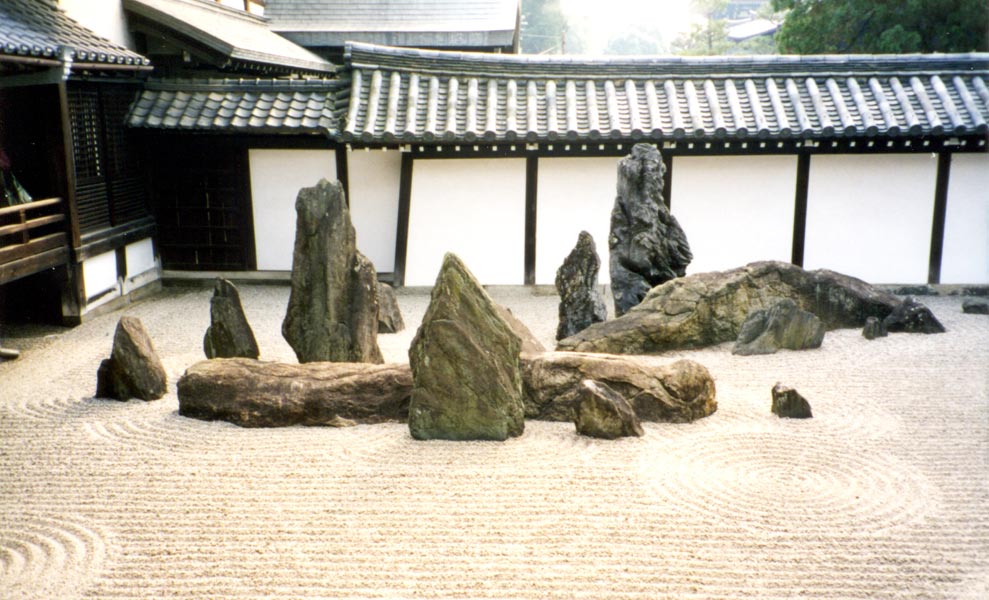
(A) Five kinds of Buddha’s Dharmakaya:
Như Như Pháp Thân: The spiritual body of wisdom.
Công đức pháp thân: The spiritual body of all virtuous achievement.
Tự thân: The body of incarnation in the world.
Biến hóa thân: The body of unlimited power of transformation.
Hư không thân: The body of unlimited space.
(B) The five closest relatives (kinships) in the family:
Phụ Thân,父親, Father
Mẹ: Mother.
Anh em: brothers.
Chị em: Sisters.
Chồng vợ: Husband and wife.
Ngũ Thân Bất Tịnh: Five types of impurity of the body:
Chủng tử bất tịnh: The impurity of its seeds—Chủng tử tạo nên thân
thể của chúng ta bất tịnh vì chúng được tạo nên bởi tinh cha huyết
mẹ—The seeds of our bodies are impure because they are created from our
father’s semen and mother’s blood (egg).
Cư trú bất tịnh: The impurity of its dwelling—Thai nhi nằm trong
bụng mẹ, là nơi không tịnh—The embryo dwells in the mother’s womb which
is not pure.
Bản chất bất tịnh: The impurity of its own nature—Những chất đất,
nước, lửa, gió tạo nên cơ thể chúng ta đều bất tịnh—Elements of earth,
water, fire, air of which our bodies are formed are unclean.
Ngoại tướng bất tịnh: The impurity of the outer marks—Chín lổ bên
ngoài của cơ thể đều bất tịnh (như ghèn ở mắt và cứt rái ở tai)—Nine
apertures of our outer bodies are always impure (i.e., eyes have eye
mucus, ears have ear wax, etc).
Căn bản bất tịnh: The ultimate impurity of the body—Sau khi chết,
cơ thể chúng ta sình lên, trở màu xanh với đầy dòi bọ rất ư là bất
tịnh—After death our bodies swell up, turn green, and breed worms, all
of which is impure.
Ngũ Thần Thông,五神通, Pancabhijna
(skt)—Năm thần thông hay ngũ thông hay ngũ trí chứng—The five
supernatural powers—The five mystical powers
Thiên Nhãn Thông,天眼通, Divyacaksus
(skt)—Thiên Nhãn trí chứng—Khả năng thấu rõ mọi sự mọi vật khắp trong
sắc giới—Deva-vision, instantaneous view of anything anywhere in the
form-realm
Thiên Nhĩ Thông,天耳通, Divyasrotra
(skt)—Thiên Nhĩ trí chứng—Khả năng nghe được âm thanh ở khắp mọi
nơi—Deva hearing—Ability to hear any sound anywhere
Tha Tâm Thông,他心通, Paracitta-jnana
(skt)—Tha tâm trí chứng—Khả năng biết được tâm của người khác—Ability
to know the thoughts of all other minds (knowledge of the minds of all
others)
Túc Mạng Thông: Purvanivasanusmrti-jnana (skt)—Túc mạng trí
chứng—Khả năng biết được đời trước của mình và của người—Knowledge of
all former existence or transmigrations of self and others.
Thần Túc Thông,神足通, Rddhi-Saksatkriya
(skt)—Thần Túc trí chứng—Khả năng xuất hiện mọi nơi như ý, không gì
ngăn ngại—Power to be anywhere or do anything at will
Ngũ Thập Ác,五十惡, Năm mươi thứ ác
(Sắc có 17, Thọ có 8, Tưởng có 8, Hành có 9, và Thức có 8)—The fifty
evils produced by the five skandhas (seventeen for form or rupa, eight
for feelings, eight for sensation, nine for volition, and eight for
consciousness)
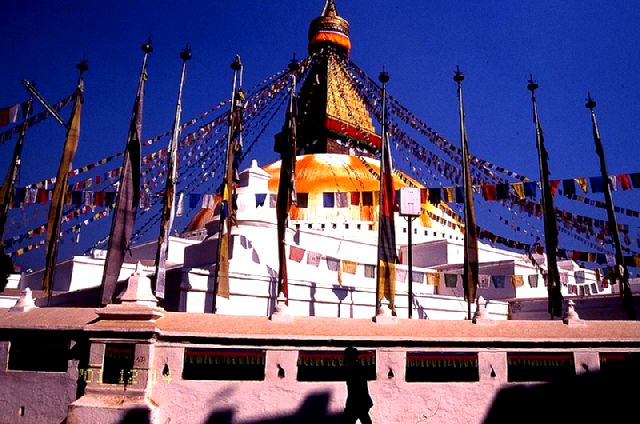
Ngũ Thập Ấm Ma: The Fifty Skandha-Demon States—Theo Kinh Lăng
Nghiêm, quyển thứ Chín, có năm mươi ấm ma—According to The Surangama
Sutra, book Nine, there are fifty skandha-demon states.
Thập Sắc Ấm Ma: Ten states within the form skandha—See Thập Sắc Ấm
Ma.
Thập Thọ Ấm Ma: Ten states within the feeling skandha—See Thập Thọ
Ấm Ma.
Thập Tưởng Ấm Ma: Ten states within the thinking skndha—See Thập
Tưởng Ấm Ma.
Thập Hành Ấm Ma: Ten states within the formation skandha—See Thập
Hành Ấm Ma.
Thập Thức Ấm Ma: Ten states within the consciousness skandha—See
Thập Thức Ấm Ma.
Ngũ Thập Bát Giới,五十八戒, Năm mươi tám
giới gồm mười giới trọng và bốn mươi tám giới khinh trong Kinh Phạm
Võng—Fifty-eight commmandments include the ten primary commandments and
the forty-eight secondary commandments in the Brahma Net Sutra
Mười giới trọng: Ten Primary Commandments—See Mười Giới Trọng trong
Kinh Phạm Võng.
Bốn Mươi Tám Giới Khinh: The forty-eight secondary
commmaandments—See Bốn Mươi Tám Giới Khinh.
Ngũ Thập Chu Niên: Fiftieth anniversary.
Ngũ Thập Chuyển: See Ngũ Thập Triển Chuyển.
Ngũ Thập Công Đức,五十功德, See Ngũ Thập
Triển Chuyển
Ngũ
Thập Lục Ức Thất Thiên Vạn Tuế,五十六億七千萬歳, Năm mươi sáu ức bảy ngàn vạn
năm, kể từ khi Đức Phật Thích Ca nhập diệt đến khi Phật Di Lặc xuất
thế—The period to elapse between Sakyamuni Buddha’s nirvana and the
advent of Maitreya Buddha (56,070,000,000 years).
Ngũ Thập Nhị Chúng,五十二衆, Năm mươi hai
loại chúng sanh, nhân và phi nhơn, theo Kinh Niết Bàn, đều hội tụ về
niết bàn của Phật—Fifty-two groups of living beings, human and not
human, who, according to the Nirvana Sutra, assembled at the nirvana of
the Buddha
Ngũ Thập Nhị Loại,五十二類, See Ngũ Thập Nhị
Chúng
Ngũ Thập Nhị Tâm Sở: Fifty-two mental factors—See Năm Mươi Hai Tâm
Sở.
Ngũ Thập Nhị Vị,五十二位, Năm mươi hai
giai đoạn trong tiến trình thành Phật—The fifty stages in the process
of becoming a Buddha; of these fifty-one are to Bodhisattvahood (Thập
tín: ten stages of faith; Thập trụ, Thập Hạnh, Thập hồi hướng, thập
địa, Đẳng giác và Diệu giác): the fifty-first stage is “the balanced
state of truth,” and the fifty second stage to Buddhahood is “the fine
state of truth.
Ngũ Thập Pháp,五十法, Năm mươi pháp hành
thiền trong Đại Phẩm Bát Nhã—Fifty modes of meditation mentioned in the
Maha-Prajna

(3) Tam Tam Muội: Three kinds of Samadhi—See Tam Tam Muội).
(4) Tứ Thiền—Four foundations of meditation—See Tứ Niệm Xứ.
(4) Tứ Vô Lượng Tâm: Four Immeasurable Minds—See Tứ Vô Lượng Tâm.
(4) Tứ Vô Sắc Định: Four balanced states which transcend the world
of matter—See Tứ Vô Sắc Định.
(8) Tám Bội Xả: Eight liberations—See Bát Giải Thoát Tam Muội.
(8) Bát Thắng Xứ: Eight victorious stages or degrees—See Bát Thắng
Xứ and Bát Giải Thoát.
(9) Cửu Thứ Đệ Định: Samadhi of the nine degrees—See Cửu Thứ Đệ
Định.
(10) Thập Nhứt Thiết Xứ: Ten kinds of universal dhyana.
Ngũ Thập Tam Phật,五十三佛, Năm mươi ba vị
Phật trong phẩm Nhập Pháp Giới của Kinh Hoa Nghiêm—Fifty-three past
Buddhas or fifty-three honoured ones (wise ones) of the Hua-Yen Sutra
Ngũ Thập Tam Thiện Tri Thức: Fifty-three good advisors.
Ngũ Thập Thiên Cúng: Năm mươi món cúng dường để diệt trừ ma quân để
được an cư lạc nghiệp—The fifty objects of worship for supressing
demons and pestilences, and producing peace, good harvests, etc.
Ngũ Thập Tiểu Kiếp,五十小劫, Năm mươi tiểu
kiếp được nói đến trong Kinh Pháp Hoa, siêu phàm đến độ chỉ chừng như
trong nửa ngày—The fifty minor kalpas which mentioned in the Lotus
Sutra, are supernaturally made to seem as but hallf a day
Ngũ Thập Triển
Chuyển,五十展轉,
Xoay vần đến người thứ năm mươi, dù người thứ 50 được nghe kinh Pháp
Hoa, còn được công đức tùy hỷ vô lượng vô biên, huống là người đầu tiên
ở trong chúng hội được nghe mà tùy hỷ—The fiftieth turn, the greatness
of the bliss of one who hears the Lotus sutra even at fiftieth hand;
how much greater that of him who hears at first hand
Ngũ Thập Tự Môn,五十字門, Mẫu tự phạn gồm
có năm mươi chữ cái—The Sanskrit alphabet given as of ffifty letters
Ngũ Thể Đầu Địa,五體投地, Trong cách lạy
tỏ lòng tôn kính, hành giả buông thỏng cả năm bộ phận trong cơ thể
xuống sát đất: đầu, đầu gối trái, đầu gối phải, cùi chỏ trái, cùi chỏ
phải—In a devotional prostration, the practitioner drops five parts of
the body to the ground: forehead, left knee, right knee, left elbow,
right elbow
Ngũ Thiên,五天, Five devas
Five devas in the Garbhadhatu who reside in north, south, east,
west and central.
The five kinds of devas:
Thượng giới thiên: Devas in the upper realms of form and non-form.
Hư không thiên: Devas in the sky (four of the six devas in the
desire realm).
Địa cư thiên: Devas on the earth (Other two of six devas on
Sumeru).
Du Hư không thiên: Wandering devas of the sky (sun, moon, stars,
etc).
Địa hạ thiên: Under-world devas (nagas, asuras, maras, etc).
Ngũ Thiên Sứ: See Ngũ Đại Sứ Giả.
Ngũ Thiên Sứ Giả: See Ngũ Đại Sứ Giả.
Ngũ Thiên
Thượng Mạn,五千上慢,
Năm ngàn Tăng thượng mạn. Khi Đức Phật sắp thuyết kinh Pháp Hoa thì có
năm ngàn Tỳ Kheo tỏ lòng kiêu mạn, nghĩ rằng ta đã được quả cần gì phải
nghe kinh Pháp Hoa, vì thế mà tự động rút lui—The five thousand
supremely arrogant monks who left the great aembly, refusing to hear
the Buddha preach the new doctrine of the Lotus Sutra—For more
information, please see The Lotus Sutra, Skill in Means Chapter.
Ngũ Thiên Trúc,五天竺, See Ngũ Độ (B)
Ngũ Thiên Tụ: Năm tội của người xuất gia—The five kinds of
wrong-doing:
Ba La Di Tội: Parajika (skt)—Tội nặng nhất nên bị trục xuất ra khỏi
giáo đoàn (Tỳ Kheo có bốn giới, Tỳ Kheo Ni có tám giới)—Sins demanding
expulsion from the order, four for monks and eight for nuns—See Tứ Đọa.
Tăng Tàn Tội: Sanghavasesa (skt)—Tăng Giá Bà Thi sa—Phạm tội nặng
đáng lý bị trục xuất khỏi Tăng Đoàn, nhưng vì tỳ kheo biết sám hối với
Tăng chúng, nên vẫn được ở lại giáo đoàn (Tỳ Kheo có 13 gới và Tỳ Kheo
Ni có 17 giớ)—Sins verging on expulsion, which demand confession before
and absolution by the assembly, 13 for monks and 17 for nuns.
Ba Dật Đề Tội: Prayascitta (skt)—Tội đáng đọa địa ngục (Tỳ Kheo có
120 giới và Tỳ Kheo Ni có 208 giới)—Sins deserving hell which may be
forgiven, 120 for monks and 208 for nuns.
Đề Xá Ni Tội: Pratidesaniya (skt)—Ba La Đề Xá Ni—Những tội nhẹ nên
chỉ cần sám hối với chư Tăng (Tỳ Kheo có 4 giới và Tỳ Kheo Ni có 8
giới)—Sins which must be confessed, four for monks and 8 for nuns.
Đột Cát La Tội: Duskrta (skt)—Ác Tác hay những sai phạm, lỗi lầm
hay tội nhẹ hơn nơi thân (gồm 109 giới cho cả Tỳ Kheo lẫn Tỳ Kheo
Ni)—Light sins, errors, or faults in body, 109 for both monks and
nuns—See Thất Diệt Tranh Pháp and Cụ Túc Giới Tỳ Kheo.
Ngũ Thiên Tử,五天子, Năm vị trời ở mé
đông bắc Kim Cương Bộ ngoài Mạn Đồ La của Thai Tạng Giới—The five devas
in the Garbhadhatu-mandala located in the northeast
Bắc Thiên: Devas in the North.
Nam Thiên,南天, Devas in the South
Đông Thiên: Devas in the East.
Tây Thiên,西天, Devas in the West
Trung Thiên,中天, Devas in the Centre
Ngũ Thiện,五善, Five good things—The
first five commandments—See Ngũ Giới
Ngũ Thiêu,五燒, The five burnings—Sự
trái phạm năm giới sẽ dẫn đến hình phạt trong kiếp nầy cũng như đọa địa
ngục trong kiếp lai sanh—The infraction of the first five commandments
leads to state punishment in this life and the hells in the next life
Ngũ Thọ,五受, Năm thọ—The five
vedanas or sensations
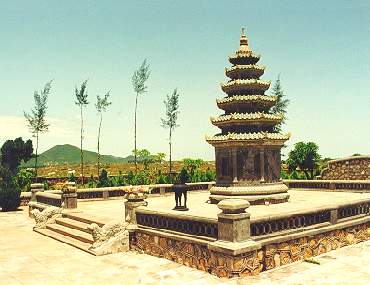
Thuộc về tinh thần: Limited to mental emotion.
Ưu Thọ,憂受, Sầu bi—Sorrow
Hỉ Thọ,喜受, Vui mừng do có sự
phân biệt—Joy
Thuộc về cảm giác: Limited to the senses:
Khổ Thọ,苦受, Đau khổ—Pain.
Lạc Thọ,樂受, Sung sướng không có
sự phân biệt—Pleasure
Thuộc về cả tinh thần lẫn cảm giác: Limited to both mental emotion
and the senses:
Xả Thọ,捨受, Trung tính, không
khổ không lạc—Indiffernce
Ngũ Thời Giáo,五時教, The five periods
of the Buddha’s teaching—
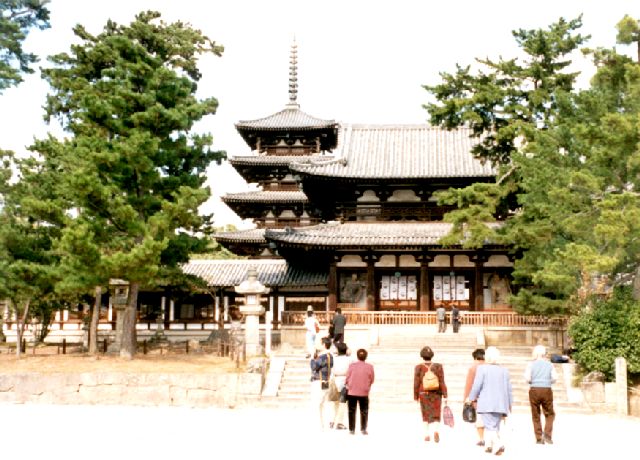
Nhiều thế kỷ sau thời Phật nhập diệt, có rất
nhiều cố gắng khác nhau để phân chia các thời giáo thuyết của Đức Phật,
thường là căn cứ trên nội dung các kinh điển từ lúc Đức Phật thành đạo
đến lúc Ngài nhập Niết Bàn, giáo thuyết của Ngài tùy cơ quyền biến để
lợi lạc chúng sanh, nhưng mục đích của giáo pháp vẫn không thay đổi—In
the centuries that followed the Buddha’s death, various attempts were
made to organize and formulate his teachings. Different systems
appeared, basing themselves on the recorded scriptures, each purporting
to express the Buddha’s intended meaning from the time of his
enlightenment until his nirvana. The reason of his teachings of
different sutras is for the benefits of many different living beings,
but the purpose of his doctrine was always the same
Tông Thiên Thai chia một đời thuyết pháp của Đức Phật ra làm năm
thời kỳ—A T’ien-T’ai classification of the Buddha’s teaching into five
periods:
Thời kỳ Hoa Nghiêm (Nhũ Vị): Ksira—Thời kỳ nầy được ví như sữa tươi
hay thời kỳ thuyết pháp đầu tiên của Phật, gọi là Hoa Nghiêm Thời cho
chư Thanh Văn và Duyên Giác—Thời kỳ nầy lại được chia làm ba giai đoạn
mỗi giai đoạn bảy ngày ngay sau khi Phật thành đạo khi Ngài Thuyết Kinh
Hoa Nghiêm. Tông Thiên Thai cho rằng Phật Thích Ca Mâu Ni thuyết Kinh
Hoa Nghiêm ngay sau khi ngài đạt được giác ngộ; tuy nhiên điều nầy là
một nghi vấn vì Kinh Hoa Nghiêm chỉ có trong Phật Giáo Đại Thừa mà
thôi—Fresh milk—Buddha’s first preaching. This period is called
Avatamsaka (Hoa Nghiêm) for sravakas and pratyeka-buddhas—This period
is divided into three divisions each of seven days, after his
enlightenment, when he preached the content of the Avatamsaka Sutra.
According to the T’ien-T’ai sect, the Avatamsaka Sutra was delivered by
Sakyamuni Buddha immediately after his enlightenment; however, this is
questionable because the Hua-Yen Sutra is a Mahayana creation.
A Hàm (Agamas): Lộc Uyển—Lạc vị (dadhi)—Sữa cô đặc được chế ra từ
sữa tươi—Thời kỳ 12 năm Đức Phật thuyết Kinh A Hàm trong vườn Lộc
Uyển—Coagulated milk for the Hinayana—The twelve years of the Buddha’s
preaching of Agamas in the Deer Park.
Phương đẳng (Vaipulyas): Sanh tô vị (navanita) for the Mahayana—Thờ
kỳ tám năm Phật thuyết kinh Phương Đẳng được ví như phó sản sữa đặc.
Đây là thời kỳ tám năm Đức Phật thuyết rộng tất cả các kinh cho cả Tiểu
lẫn Đại thừa—The Vaipulya period—The eight years of preaching
Mahayana-cum-Hinayana doctrines.
Bát Nhã (Prajna): Thục tô vị (ghola or butter) for the
Mahayana—Thời kỳ 22 năm Phật thuyết Kinh Bát Nhã hay Trí Tuệ được ví
như phó sản của sữa đặc đã chế thành bơ—Twenty two years of his
preaching the prajna or wisdom sutra.
Pháp Hoa (Lotus) and Niết Bàn (Nirvana sutra): Đề hồ vị
(sarpirmanda or clarified butter) for the Mahayana—Thời kỳ Pháp Hoa
Niết Bàn được ví với thời kỳ sữa đã được tinh chế thành phó mát. Đây là
thời kỳ tám năm Phật thuyết Kinh Pháp Hoa và một ngày một đêm Phật
thuyết Kinh Niết Bàn—The eight years of his preaching of Lotus sutra,
and in a day and a night, the Nirvana sutra.
** For more information, please see Thiên
Thai Ngũ Thời Bát Giáo.
Theo tông phái Niết Bàn mà bây giờ là một phần của Thiên
Thai—According to the Nirvana School which is now part of the
T’ien-T’ai:
Tam Thừa Biệt Giáo,三乘別教, Hữu Tướng—Giai
đoạn khi biệt giáo (như chúng ta có thể tìm thấy trong các kinh A Hàm)
bắt đầu và sự phân biệt Tam thừa, đại diện bởi Tứ Đế cho hàng Thanh
Văn, Mười Hai Nhân Duyên cho hàng Duyên Giác và Lục Độ cho hàng Bồ
Tát—The period when the differentiated teaching (as we can find in the
Agamas) began and the distinction of the three vehicles, as represented
by the four Noble Truths for Sravakas, the Twelve Nidanas for
Pratyeka-buddhas, and the Six Paramitas for Bodhisattvas
Tam Thừa Thông
Giáo,三乘通教,
Vô Tướng—Giáo lý thuyết chung cho cả ba thừa như được thấy trong Kinh
Niết Bàn—The teaching common to all three vehicles, as seen in the
Nirvana Sutra
Ức Dương Giáo: Ức Dương—Thuyết giảng Kinh Duy Ma, Tư Ích Phạm Thiên
Sở Vấn Kinh và các kinh khác để tán dương Bồ Tát và hạ thấp Thanh Văn.
Giáo thuyết nầy được Niết Bàn Tông Trung Hoa xiển dương—The teaching of
the Vimalakirti Sutra, and Tư ích Phạm Thiên Sở Vấn Kinh and other
sutras extolling the Bodhisattva teaching at the expense of that for
Sravakas. This teaching was held by the Nirvana sect of China.
Đồng Qui Giáo: Hội Tam Qui Nhất—Phật thuyết kinh Pháp Hoa khiến ba
thừa qui về Nhất Thừa—The common objective teaching calling three
vehicles, through the Lotus, to union in the one vehicle.
Thường Trụ Giáo: Viên Thường—Phật thuyết kinh Niết Bàn để chứng
minh Phật quả thường trụ—The teaching of eternal life; the revelation
through the Nirvana Sutra of the eternity of Buddhahood.
Theo Pháp Bảo Đại Sư vào đời nhà Đường—According to Great Monk
Fa-Pao of the T’ang dynasty:
Tiểu Thừa,小乘, Hinayan—See Hoa
Nghiêm Thời in (A)
Bát Nhã,鉢若, Đại Thừa—Prajna—See
Bát Nhã in (A)
Thâm Mật,深密, Tam Thừa—Three
Vehicles—See Tam Thừa Biệt Giáo và Tam Thừa Thông Giáo in (B)
Pháp Hoa,法華, Nhất Thừa—One
Vehicle—See Đồng Qui Giáo in (B)
Niết Bàn,涅盤, Phật Tính Giáo—The
Nirvana or Buddha-nature—See Pháp Hoa and Niết Bàn in (A) and Thường
Trụ Giáo in (B).
Ngũ Thông,五通, Năm loại thần
thông—Five kinds of supernatural powers
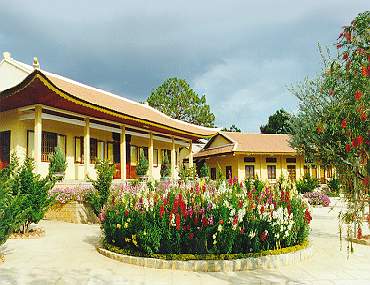
(A)
Đạo thông: Nhờ chứng ngộ lý thực tướng trung đạo mà được như chư Bồ
Tát thông lực vô ngại—Supernatural powers of Bodhisattvas through their
insight into truth.
Thần thông: Nhờ tu định mà được như chư A-La-Hán thông lực tự
tại—Supernatural powers of arhats through their mental concentration.
Y thông: Nhờ vào thuốc men phù chú mà được—Supernatural or magical
powers dependent on drugs, charms, incantations, etc.
Báo thông (Nghiệp thông): Nhờ quả báo mà được như chư Thiên và long
thần—Reward of karma powers of transformation possessed by devas,
nagas, etc.
Yêu thông: Do yêu quái lực mà được như tính của cáo hồ hay những
cây đại thụ lâu năm—Magical powers of goblins, satyrs, etc.
(B) See Ngũ Thần Thông.
Ngũ Thông Bồ Tát: Năm vị Bồ Tát ở Tu viện Kê Đầu Ma tại Ấn Độ,
những người có đầy đủ ngũ thông, đi đến Tây Phương Cực Lạc để thỉnh ảnh
tượng Phật Di Lặc, từ đó đem về truyền khắp Ấn Độ—The five Bodhisattvas
of Chi-Thou-Moa monastery in India, who, possessed of supernatural
powers, went to the Western Paradise and begged the image of Maitreya,
whence it is said to have been spread over India.
Ngũ Thông Thần,五通神, Những vị thần đã
chứng được ngũ thông—Spirits possessed of the five supernatural powers
Ngũ Thông Tiên,五通仙, Người bằng phương
pháp ngoại đạo chứng được ngũ thần thông—One who by non-Buddhistic
methods has attained to the five supernatural powers
Ngũ Thống,五痛, The five pains—See
Ngũ Thiêu
Ngũ Thú,五趣, Gatiyo (p)—Theo Kinh
Phúng Tụng trong Trường Bộ Kinh, có năm nẻo ác (ngũ thú)—According to
the Sangiti Sutta in the Long Discourses of the Buddha, there are five
gati (destinations, destinies)
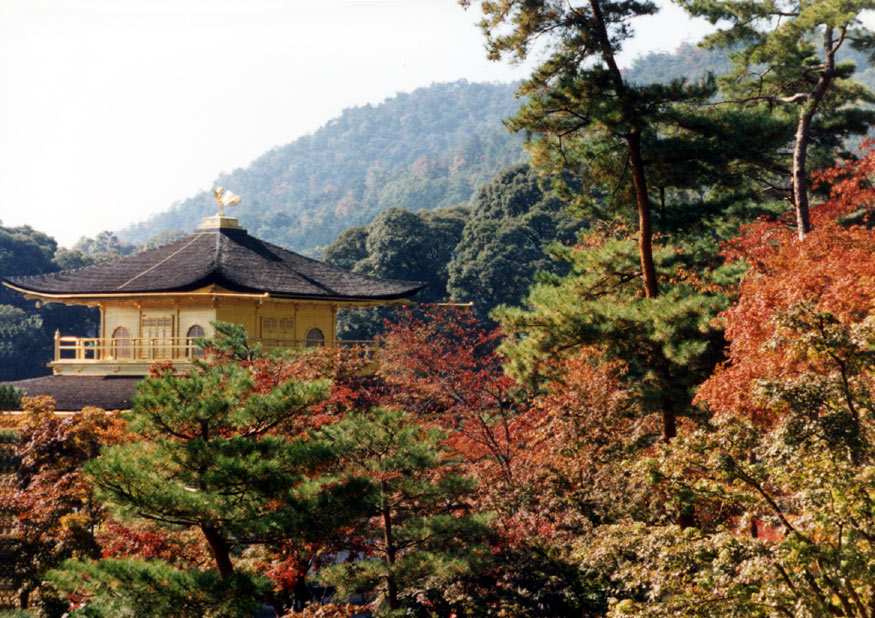
Video
Coi Am Coi Duong (Thich Nhat Tu)
Địa ngục: Nirayo (p)—Hells.
Ngạ quỷ: Peta (p)—Hungry ghosts—Starving demons—The realm of hungry
ghosts.
Súc sanh: Tiracchana-yoni (p)—Animals—Animal-rebirth.
Nhân: Human beings—Man—Humankind.
Thiên: Devas—Heaven—Deva world.
Ngũ Thú Sanh Tử
Luân,五趣生死輪,
Một loạt hình ảnh về sanh tử gán cho Nhứt Thiết Hữu Bộ Luật—A series of
pictures to show the course of life and death, ascribed in the
Sarvativada Vinaya 34 to the Buddha
Ngũ Thù Thắng Đức: Buddha receives the respect of the world because
of the five superior virtues:
Hành vi thù thắng: Superior conduct.
Kiến giải thù thắng: Superior point of view.
Trí huệ thù thắng: Superior or perfect wisdom.
Minh thuyết thù thắng: Superior preaching ability.
Khả năng thù thắng dẫn đạo chúng sanh y đạo tu hành: Superior
ability to lead people to the practice of His Teaching.
Ngũ Thủ Uẩn,五取蘊, Năm trói buộc của
năm uẩn hữu lậu khiến chúng sanh mãi luyến ái trong vòng luân hồi sanh
tử—The five tenacious bonds or skandhas, attaching to mortality—See Ngũ
Uẩn
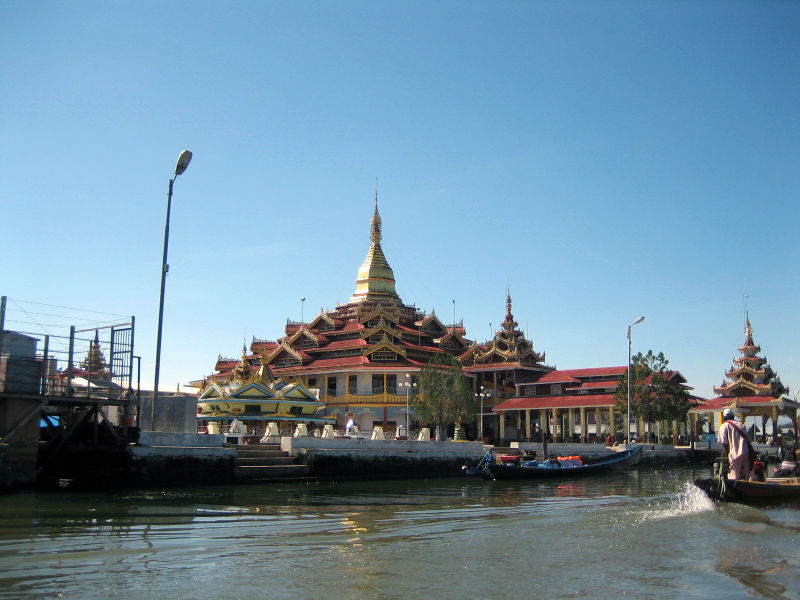
Video Chuyen Hoa
Troi Buoc (Thich Nhat Tu)
Ngũ Thuận Hạ Phần Kết: Năm mối kết trong cảnh dục giới—The five
ties in the lower realm, which hold the individual in the realms of
desire:
Tham dục: Desire.
Thù hận: Resentment.
Chấp ngã: Egoism.
Tà chấp: False tenets.
Nghi hoặc: Doubt.
** For more information, please see Ngũ Hạ
Phần Kết.
Ngũ Thuận Thượng Phần Kết: Năm mối kết với cảnh giới đi lên của sắc
và vô sắc—The five ties in the higher realm which hold an individual in
the realms of form and and formlessness:
Mong muốn đạt đến sắc giới: Desire for form.
Mong muốn đạt đến cảnh giới vô sắc: Desire for formlessness.
Thao thức bồn chồn: Restlessness.
Ngã mạn: Pride.
Si mê: Ignorance.
** For more information, please see Ngũ
Thượng Phần Kết.
Ngũ Thuyết,五說, See Ngũ Chủng Thuyết
Nhân
Ngũ Thừa,五乘, Năm cỗ xe có thể đưa
người tới quả vị Phật (giáo pháp của Phật từ cạn đến sâu chia ra năm
trình độ, hành giả chỉ cần y theo mỗi giáo pháp thực hành, đều có thể
đạt được thành quả tốt đẹp)—The five vehicles conveying to the
karma-reward which differs according to the vehicle. They are summed up
as
Theo Đại Thừa—According to the Mahayana:
Nhân thừa: Narayana (skt)—Tái sanh vào nhân gian hay cõi người nhờ
tu trì ngũ giới (hữu tình quan Phật Giáo lấy loài người làm trọng tâm.
Con người có thể làm lành mà cũng có thể làm ác, làm ác thì bị sa đọa
trong ba đường dữ như địa ngục, ngạ quỷ, súc sanh; làm lành thì được
sanh lên các đường lành như nhân và thiên, A La Hán, Bích Chi Phật, vân
vân)—Rebirth among men conveyed by observing the five commandments
(Panca-veramani)—See Ngũ Giới.
Thiên thừa: Devayana (skt)—Tái sanh vào cõi trời nhờ tu trì thập
thiện—Rebirth among the devas by observing the ten forms of good
actions or ten commandments (Dasa-kusala).
Thanh văn: Arava-kayanam (skt)—Tái sanh vào quả vị Thanh Văn nhờ tu
trì pháp Tứ Diệu Đế—Rebirth among the sravakas by observing the four
noble truths (Catvari-arya-satyani).
Duyên giác: Pratyeka-Buddhayanam (skt)—Tái sanh vào Duyên Giác nhờ
tu trì thập nhị nhân duyên mà chứng quả Bích Chi Phật—Rebirth among
pratyeka-Buddhas and Bodhisattvas by observing the twelve nidanas
(Dvadasanga-pratiyasamutpada).
Khai Sĩ,闓士, Bodhisattva-yanam
(skt)—Nhờ tu trì lục độ Ba La Mật mà đạt đến quả vị Bồ Tát và cuối cùng
đạt được quả vị Phật—Among the Buddhas and bodhisattvas by the six
paramitas (Sdaparamita)
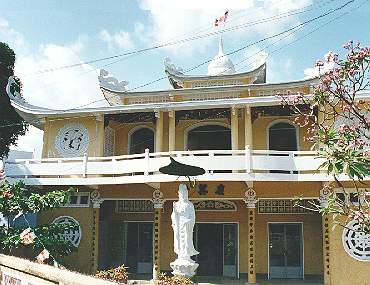
** For more information, See Tam Thừa in
Vietnamese-English Section.
Theo Tiểu Thừa—According to the Hinayana:
Phật: Buddha.
Thanh Văn,聲聞, Sravakas
Duyên Giác,緣覺, Pratyeka-buddhas
Chư Thiên cõi trời Phạm Thiên: The gods of the brahma-heavens.
Chúng sanh trong cõi dục giới: Those of desire realm.
Theo Mật giáo—According to the Esoteric cult:
Nhân, tương ứng với đất: Men, corresponding with earth.
Thiên, tương ứng với nước: Devas, corresponding with water.
Thanh Văn, tương ứng với lửa: Sravakas, corresponding with fire.
Duyên giác, tương ứng với gió: Pratyeka-buddhas, corresponding with
wind.
Bồ Tát, tương ứng với hư không: Bodhisattvas, corresponding with
the “void.”
Ngũ Thừa Tề Nhập,五乘齊入, Năm thừa đều
nhập—Nhờ nguyện lực của Đức Phật A Di Đà mà chúng sanh trong năm thừa
đều được nhập chân thực báo độ—All different classes will obtain an
entrance into the Pure Land by the vow of Amitabha
** For more information, please see
Ngũ Thừa.
Ngũ Thức,五識, Pancavijnana
(skt)—Năm thức hay tâm thức dựa vào mắt, tai, mũi, lưỡi và thân mà sinh
và duyên vào năm cảnh sắc, thinh, hương, vị, xúc—The five senses of
consciousness or five parijnanas, perceptions or cognitions; ordinarily
those arising from the five senses form, sound, smell, taste, touch
Theo Đại Thừa—According to the Mahyana, the five senses of
consciousness:
Nhãn thức: Visual sense.
Nhĩ thức: Auditory sense.
Tỷ thức: Olfactory sense.
Vị thức: Gastatory.
Xúc thức: Tactile sense.
Theo Khởi Tín Luận—The five parijnanas according to the Awakening
of Faith:
Nghiệp Thức,業識, Nương vào gốc rễ vô
minh bắt đầu động lên từ bản tâm mà khởi ra mê lầm thành ra tác động
hay thành nghiệp—Initial functioning of mind under the influence of the
original unenlightenment or state of ignorance
Chuyển Thức,轉識, Nghiệp thức chuyển
lần mà sanh ra năng kiến hay tự thấy mình mà khởi lên tác dụng—The act
of turning towards the apparent object for its observation
Hiện Thức,現識, Dựa vào tác dụng của
năng kiến mà khởi lên sở kiến—Observation of the object as it appears
Tri Thức,知識, Hướng vào các cảnh
giới hiện ra từ tâm sở mà sanh ra mọi thứ phân biệt sai lầm—The
deductions derived from its appearance
Tương Tục Thức: Do vô minh mà phân biệt sai lầm nên sanh ra vui
sướng với cái mình yêu thích, và khổ sở với cái mình chán ghét, niệm
khổ vui liên tục chẳng dứt, do đó mà luân hồi sanh tử tương tục—The
consequent feelings of like or dislike, pleasure or pain, from which
arise the delusions and incarnations.
Ngũ Thức Thân: Pancavijnanakaya (skt)—Hệ thống các thức—The system
of the Vijnanas—See Ngũ Thức.
Ngũ Thực,五食, Năm loại thức ăn
tinh thần nuôi dưỡng thiện căn—The five kinds of spiritual food by
which roots of goodness are nourished

Niệm thực: Correct thoughts.
Pháp hỷ thực: Delight in the Law.
Thiền duyệt thực: Pleasure in meditation.
Nguyện thực: Firm resolve, or vows of self-control.
Giải thoát thực: Deliverance from the karma of illusion.
Ngũ Thường: Năm đạo làm người—The five cardinal virtues:
Nhơn: Thương người thương vật—Benevolence.
Nghĩa: Ở phải với mọi người—Righteousness.
Lễ: Biết kẻ lớn người nhỏ—Civility—Propriety.
Trí: Biết phương kế mưu lược lương thiện—Good knowledge.
Tín: Biết giữ sự tin cậy—Loyalty (faith or sincerity).
Ngũ Thượng Phần Kết: Ngũ Thượng Phần Kiết Sử—Theo Kinh Phúng Tụng
trong Trường Bộ Kinh và Câu Xá Luận, có năm phần kết sinh khởi trong
các cảnh giới cao hơn của sắc giới và vô sắc giới hay ngũ thượng phần
kết vì chúng trói buộc hữu tình vào ngũ uẩn để sanh vào các cõi
cao—According to the Sangiti Sutta in the Long Discourses of the Buddha
and Kosa Sastra, there are five higher bonds of desire still exist in
the upper realms of form and formlessness, for they fetter beings to
aggregates, etc., produced in the higher forms of becoming:
Sắc ái kết: Tham sắc—Phiền não của sự tham trước ngũ dục ở cõi sắc
giới hay sự luyến ái cõi sắc—Rupa-raga (p)—Lust or desire for
form—Attachment to the world of forms—Greed for the fine-material—Love
in the realm of form—Craving for the world of form.
Vô sắc ái kết: Tham vô sắc—Phiền não của sự tham trước cảnh giới
thiền định của cõi vô sắc hay sự luyến ái cõi vô sắc—Arupa-raga
(p)—Attachment to the formless world—Lust or desire for
formlessness—Greed for the immaterial—Love in the realm of
formlessness—Craving for the formless world.
Trạo kết: Trạo cử—Phiền não vì tâm dao động mà bỏ mất thiền
định—Uddhacca (p)—Restlessness.
Mạn kết: Phiền não gây ra do bởi cậy mình hay mà lấn lướt người
khác—Mana (p)—Pride—Conceit.
Vô minh kết: Phiền não gây ra bởi ngu muội—Ignorance.
Ngũ Tì Kheo: See Ngũ Tỳ Kheo.
Ngũ Tiển: The five arrows which the Buddha compared with the five
desires—See Ngũ Dục.
Ngũ Tín Tâm: See Ngũ Chủng Tín Tâm.
Ngũ Tinh,五星, Năm hành tinh—The
five planets

Mộc tinh: Jupiter.

Hỏa tinh: Mars.

Thổ tinh: Saturn.

Vệ Nữ Tinh: Venus.

Thủy tinh: Mercury.

Ngũ Tính: The five natures.
Pháp Tính tông chia cơ loại của tất cả chúng sanh ra làm năm
tính—The five different natures as grouped by the Dharmalaksana Sect:
Thanh Văn Tánh,聲聞性, Sravakas for
Arhats—Những người có chủng tử vô lậu có thể sanh quả vô sanh A La Hán,
dứt đoạn luân hồi sanh tử, nhưng không thể đạt được Phật quả—Who are
able to attain non-return to mortality, but are unable to reach
Buddhahood
Duyên Giác Tính: Có chủng tử vô lậu sanh ra Bích Chi Phật, dứt đoạn
luân hồi sanh tử, nhưng chưa có thể đạt đến quả vị
Phật—Pratyeka-buddhas for Pratyeka-buddhahood—Who are able to attain to
non-return to mortality, but are unable to reach Buddhahood.
Bồ Tát Tính: Có chủng tử vô lậu, dứt đoạn sanh tử để nảy sanh quả
Phật—Bodhisattva for Buddhahood.
Bất Định Tánh,不定性, Có vài chủng tử vô
lậu, nhưng chưa dứt sanh tử luân hồi—Indefinite—Who have some
unconditioned seeds, but are not able to attain to non-return to
mortality
Vô Tính,無姓,
Những kẻ ngoại đạo không tín hành nhân quả nên không có tâm
Phật—Outsiders who have not the Buddha-mind.
Loài hữu tình có đủ chủng tử hữu lậu của trời và người, không có vô
lậu chủng tử của bậc tam thừa, cho nên mãi mãi xoay vần trong vòng lục
đạo—Men and devas with passions and devoid of natures for
enlightenment, hence destined to remain in the six paths of
transmigration.
Theo Kinh Viên Giác—According to Complete Enlightenment Sutra:
Phàm Phu Tánh,凡夫性, Dầu là nhữõng
người tốt nhưng vẫn chưa đoạn trừ được chủng tử hữu lậu—Ordinary good
people
Nhị Thừa Tính: Chỉ đoạn trừ được hoặc kiến và tư kiến tức là sự
chướng, chứ chưa đoạn trừ được lý chướng hay trần sa vô minh—Sravakas
and Pratyeka-buddhas.
Bồ Tát Tính: Đã từ từ đoạn trừ được cả hai sự và lý
chướng—Bodhisattvas.
Bất Định Tánh,不定性, Indefinite—See Bất
Định tính in (A)
Vô Tính,無姓, Heretics or
outsiders who have no Buddha-mind—See Vô Tính in (A)
Năm chủng tánh được tông Pháp Tướng thành lập—The five germ-natures
or roots of Bodhisattva development established by the Dharmalaksana
Sect:
Tập Chủng Tánh,習種性, Ngôi vị thập trụ,
tu tập không quán, phá bỏ các kiến hoặc—The germ-nature of study of the
void or immaterial which correscts all illusions of time and space. It
corresponds to the ten grounds
Tánh Chủng Tánh,性種性, Ngôi vị thập hành,
không trụ lại ở “không,” có khả năng phân biệt tất cả pháp tính và
chuyển hóa chúng sanh—The germ-nature of ability to discriminate all
the natures of phenomena and transform the living. It corresponds to
the ten necessary activities of a Bodhisattva
Đạo Chủng Tánh,道種性, Là ngôi vị thập
hồi hướng, tu tập diệu quán trung đạo để thông đạt tất cả Phật pháp—The
middle-way germ-nature, which attains insight into Buddha-laws. It
corresponds to theten kinds of dedications
Thánh Chủng Tánh,聖種性, Ngôi vị thập địa,
dựa vào diệu quán trung đạo để phá bỏ vô minh và chứng nhập Thánh
vị—The saint germ-nature which produces holiness by destroying
ignorance. The bodhisattva leave the ranks of freedom from desire in
the ten stages to become a saint
Đẳng Giác Chủng Tính: Chủng tính Bồ Đề tiến về Phật quả—The
bodhi-rank germ-nature which produces Buddhahood.
Ngũ Tình,五情, Năm cảm giác khởi
lên bởi ngũ căn—The feelings or passions, which are stirred by the five
senses—See Ngũ Căn
Ngũ Tịnh,五淨, Năm món thanh tịnh
của bò—The five “clean” products of the cow—The cow’s panca-gavya
Nước tiểu: Urine.
Phân: Dung.
Sửa: Milk.
Kem: Cream.
Phó mát: Cheese.
Ngũ Tịnh Cư Thiên,五淨居天,
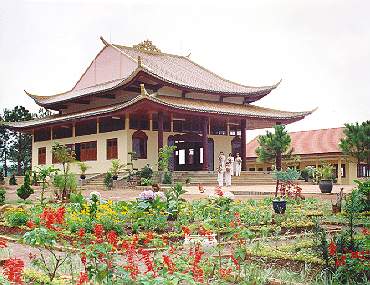
Theo Kinh Phúng Tụng trong Trường Bộ Kinh, có Ngũ Tịnh Cư hay ngũ
sắc giới đệ tứ thiền thiên, là chỗ vãng sanh của các bậc A-La-Hán (Bất
Hoàn)—According to the Sangiti Sutta in the Long Discourses of the
Buddha, there are five pure-dwelling heavens in the fourth dhyana
heaven, into which arhats are finally born:
Vô phiền thiên: Chốn không còn mọi sự phiền não—Avrhas—The heaven
free from all trouble.
Vô nhiệt thiên: Chốn không còn sự não nhiệt—Atapas—Heaven of no
heat or distress—Unworried.
Thiện hiện thiên: Chốn năng hiện thắng pháp—Sudrsas (skt)—Heaven of
beautiful presentation.
Thiện kiến thiên: Chốn có thể thấy được thắng pháp—Sudrsanas—Heaven
of beauty.
Sắc cứu cánh thiên: Cõi trời sắc giới cao nhất—Akanisthas—The
highest heaven of the form-realm—Peerless.
Theo Kinh Thủ Lăng Nghiêm, quyển Chín, Đức Phật đã nói với ngài A
Nan về Ngũ Tịnh Cư Thiên như sau: “Ông A Nan, trong Tứ Thiền lại có năm
Tịnh Cư Thiên hay Bất Hoàn Thiên, đã dứt hết chín phẩm tập khí cõi
dưới. Hết sự khổ vui, nơi xả tâm chúng đồng phận an lập chỗ ở.”—In the
Surangama Sutra, book Nine, the Buddha told Ananda about the Five Pure
Dwelling Heavens as follows: “Ananda! Beyond the four Dhyana Heavens,
are the five pure dwelling heavens or heavens of no return. For those
who have completely cut off the nine categories of habits in the lower
realms, neither suffering nor bliss exist, and there is no regression
to the lower levels. All whose minds have achieved this renunciation
dwell in these heavens together.
Vô Phiền Thiên—No Affliction Heaven: Những vị mà khổ và vui đã
diệt, tâm chẳng bận rộn, là những vị đang trụ trong cõi Vô Phiền
Thiên—Those who have put an end to suffering and bliss and who do not
get involved in the contention between such thoughts are among those in
the Heaven of No Affliction.
Vô Nhiệt Thiên—No Heat Heaven: Những vị tự tại phóng xả, chẳng có
năng sở, tâm chẳng đối đãi, hạng nầy gọi là Vô Nhiệt Thiên—Those who
isolate their practice, whether in movement or in restraint,
investigating the baselessness of that involvement, are among those in
the Heaven of No Heat.
Thiện Kiến Thiên—The Good View Heaven: Mười phương thế giới, diện
kiến trong lặng, chẳng còn tất cả cấu nhiễm của cảnh trần, hạng nầy gọi
là Thiện Kiến Thiên—Those whose vision is wonderfully perfect and
clear, view the realms of the ten directions as free of defiling
appearances and devoid of all dirt and filth. They are among those in
the Heaven of Good View.
Thiện Hiện Thiên—The Good Manifestation Heaven: Diệu kiến hiện
tiền, biến tạo vô ngại, hạng nầy gọi là Thiện Hiện Thiên—Those whose
subtle vision manifests as all their obstructions are refined away are
among those in the Heaven of Good Manifestation.
Sắc Cứu Cánh Thiên—The Ultimate Form Heaven: Sắc trần từ tướng đến
chỗ cứu cánh chẳng động, cùng tột tánh sắc chẳng có bờ bến, hạng nầy
gọi là Sắc Cứu Cánh Thiên—Those who reach the ultimately subtle level
come to the end of the nature of form and emptiness and enter into a
boundless realm. They are among those in the Heaven of Ultimate Form.
Ngũ Tịnh Nhục: The five kinds of clean flesh.
1-3) See Tam Tịnh Nhục.
4) Con thú tự chết: Creatures that have died a natural death.
Thịt thú còn thừa do thú khác giết xong ăn còn dư lại: Creatures
that have been killed by other creatures.
Ngũ Tộc Như Lai,五族如來, The five
Dhyani-Buddhas of the Vajradhatu
Ngũ Tông,五宗, Năm tông phái trong
Phật giáo—The five great schools in Buddhism—Năm tông phái Đại
Thừa—Five sects in the Mahayana
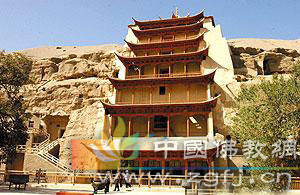
(A)
Thiền Tông,禪宗, Zen Sect
Pháp Tướng Tông,法相宗, Teaching Sect
Luật Tông,律宗, Vinaya Sect
Mật Tông,密宗, Secret Sect
Tịnh Độ Tông,浄土宗, Pure Land Sect
(B)
Thiên Thai Tông,天台宗, T’ien-T’ai
Hoa Nghiêm,華嚴, Hua-Yen
Pháp Tướng,法相, Teaching Sect
Tam Luận,三論, Madhyamika-Sastra
Sect—Three Sastra Sect
Luật Tông,律宗, Vinaya Sect.
Năm tông phái Thiền của Phật giáo ở Trung Hoa bắt nguồn từ Nguồn
Thiền “Trực chỉ nhân tâm, kiến tánh thành Phật” của Lục Tổ Huệ Năng.
Năm tông nầy gồm Vân Môn, Pháp Nhãn, Tào Động, Quy Ngưỡng, và Lâm
Tế—Five sects or schools of Chinese Zen Buddhism. The five traditions
arise from one origin which is “Directly Point to Mind to see one’s
True Nature and to realize the Buddhahood” taught by the Sixth Zen
Patriarch Hui-Neng. These five sects include Yun-Men, Fa-Ran,
T’ao-Tung, Kui-Yang, and Lin-Chi.
Ngũ Trần,五塵, Pancavisayarasa
(p)—Five indulgences of the senses—Năm trần hay năm cảnh sắc—The
objects of the five senses, which being dusty or earthly things can
taint the true nature—Five dusts
1) Sắc Trần: Form.
Thinh Trần: Sound.
Hương Trần,香塵, Smell
Vị Trần,味塵, Flavor
Xúc Trần,觸塵, Touch.
Ngũ Tri Căn,五知根, Năm tri căn—The
five indriyas or organs of perception—See Ngũ Căn
Ngũ Trí,五智, Five kinds of
wisdom—Theo trường phái Chân ngôn—According to the Shingon Sect
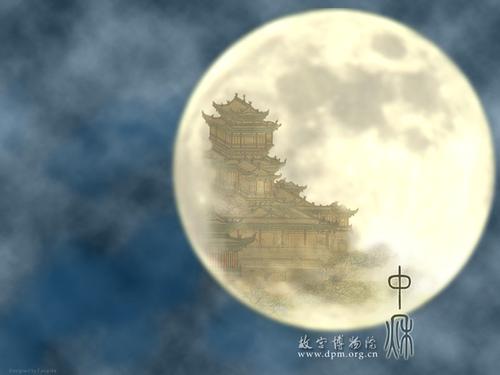
Pháp Giới Thể
Tánh Trí,法界體性智,
Dharmadhatu-prakrti-jnana (skt)—Trí chuyển từ Yêm-Ma-La thức mà
được—Pháp giới thể tánh tức là lục đại với Ngài Tỳ Lô Giá Na hay Đại
Nhật Như Lai trụ nơi Trung độ. Gọi là pháp giới thể tánh trí vì trí nầy
làm chủ đức phương tiện cứu cánh—The wisdom derived from the pure
consciousness (amala-vijnana)—The wisdom of the embodied nature of
dharmadhatu, defined as the six elements, and is associated with
Vairocana in the center
Đại Viên Cảnh Trí,大圓鏡智, Adarsana-jnana
(skt)—Là trí chuyển từ A-Lại-Da thức mà được, là trí hiển hiện vạn
tượng của pháp giới như tấm gương tròn lớn, tương ứng với thế giới và
liên hệ với A Súc Bệ Phật cũng như Đông Độ—The great ground mirror
wisdom, derived from alaya-vijnana (alaya consciousness), reflecting
all things; corresponds to the earth, and is associated with Aksobhya
and the east.
Bình Đẳng Tánh Trí,平等性智, Samata-jnana
(skt)—Trí chuyển từ Mạt Na thức mà được, là trí tạo thành tác dụng bình
đẳng của các pháp, tương ứng với lửa và Nam Phật ở Nam Độ—The wisdom
which derived from manovijnana or mano consciousness, wisdom in regard
to all things equally and universally, corresponds to fire and is
associated with Ratnasambhava and the south
Diệu Quán Sát Trí,妙觀察智,
Pratyaveksana-jnana (skt)—Trí chuyển từ ý thức mà được, trí phân biệt
các pháp hảo diệu phá nghi, tương ứng với nước và Phật A Di Đà ở Tây
phương. Theo Tịnh Độ và Chân Tông, Phật A Di Đà thù thắng hơn cả trong
số Ngũ Trí Như Lai; mặc dù quốc độ của Ngài ở Tây Phương chứ không ở
trung ương. Trong số Ngũ Trí Như Lai, Đức Phật A Di Đà ở phương Tây có
thể đồng nhất với Trung ương Đại Nhật Như Lai, là Đức Phật của Pháp
Giới Thể Tánh. Các bổn nguyện của Đức A Di Đà, sự chứng đắc Phật quả Vô
Lượng Quang và Vô Lượng Thọ, và sự thiết lập Cực Lạc quốc độ đã được mô
tả đầy đủ trong Kinh A Di Đà—The wisdom derived from wisdom of profound
insight (ý thức), or discrimination, for exposition and
doubt-destruction; corresponds to water, and is associated with
Amitabha and the west. According to the T’ien-T’ai and Shingon, Amita
is superior over the five Wisdom Buddhas (Dhyani-Buddhas), even though
he governs the Western Quarter, not the center. Of the five Wisdom
Buddhas, Amitabha of the West may be identical with the central
Mahavairocana, the Buddha of homo-cosmic identity. Amitabha’s original
vows, his attainment of Buddhahood of Infinite Light and Life, and his
establishment of the Land of Bliss are all fully described in the
Sukhavati text
Thành Sở Tác Trí,成所作智,
Krtyanusthana-jnana (skt)—Trí chuyển từ ngũ căn (nhãn, nhĩ, tỷ, thiệt
và thân), trí thành tựu diệu nghiệp tự lợi lợi tha, tương ứng với hư
không và Phật Di Lặc ở Bắc Độ—The wisdom derived from the five senses
(ngũ căn), the wisdom of perfecting the double work of self-welfare and
the welfare of others; corresponds to the air and is associated with
Amoghasiddhi (Di Lặc Maitreya) and the north
Ngũ Trí Bảo Quan,五智寶冠, See Ngũ Phật Bảo
Quan
Ngũ Trí Ngũ Phật: See Ngũ Phật.
Ngũ Trí Như Lai,五智如來, The five kinds
of wisdom of the Tathagata—See Ngũ Trí, and Ngũ Phật
Ngũ Triền Cái: Five
hindrances—Theo Kinh Phúng Tụng trong trường Bộ
Kinh, có năm triền cái, chúng làm chướng ngại và che dấu thực tại khỏi
tâm thức—According to the Sangiti Sutta in the Long Discourses of the
Buddha, there are five hindrances which, in the sense of obstructing
and hindering and concealing reality from consciousness:
Năm Triền Cái—Five hindrances:
Tham Dục Triền Cái: Kamacchanda (p)—
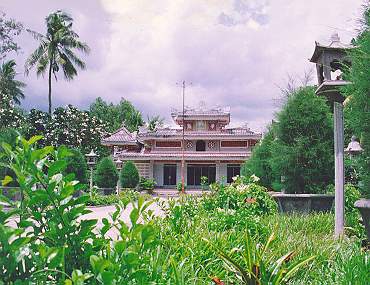
Video
Gia Tu Thuong va Ghet (Thich Nhat Tu)
Tham dục là sự ham muốn duyên
theo nhục dục ngũ trần. Những tư tưởng tham dục chắc chắn làm chậm trể
sự phát triển tinh thần. Nó làm tâm chao động và trở ngại công trình
lắng tâm an trụ. Sở dĩ có tham dục phát sanh là vì chúng ta không chịu
thu thúc lục căn. Vì không cẩn mật canh phòng sáu cửa nên những tư
tưởng tham ái có thể xâm nhập vào làm ô nhiễm tâm thức. Do vậy người tu
theo Phật cần phải cẩn trọng thu nhiếp lục căn, không dễ duôi hờ hửng
để cho chướng ngại tham ái ngăn chặn làm bít mất con đường giải thoát
của mình—Lust—The hindrance of sensuality (sensual desire). Sensual
desire is lust for sense objects. Sensual thoughts definitely retarded
mental development. They disturb the mind and hinder concentration.
Sensuality is due to non-restraint of the six senses, which when
unguarded give rises to thoughts of lust so that the mind-flux is
defiled. Hence the need for any Buddhist is to be on his guard against
this hindrance which closes the door to deliverance.
Sân hận Triền Cái: Vyapada (p)—Cũng như tham dục, sự chú tâm sai
lầm, kém khôn ngoan, không sáng suốt, dẫn đến sân hận. Nếu không kiểm
soát kịp thời, những tư tưởng bất thiện nầy sẽ thấm nhuần tâm và che
lấp mất trí tuệ. Nó có thể làm méo mó toàn thể tâm thức và các tâm sở,
cũng như gây trở ngại cho ánh sáng chân lý, đóng mất cửa giải thoát.
Tham dục và sân hận đặt nền tảng trên vô minh, chẳng những làm chậm trể
sự phát triển của tâm trí, mà còn đốt cháy cả rừng công đức mà ta đã
tích tập từ bao đời kiếp—The hindrance of ill-will. As in the case of
sense-desire, it is unwise and unsystematic attention that brings about
ill-will. When not under control, ill-will propagates itself, saps the
mind and clouds the vision. It distorts the entire mind and thus
hinders awakening to ignorance, not only hamper mental growth, but also
destroy the whole forest of merits which we had accumulated in so many
lives.
Hôn Trầm Thụy Miên triền Cái: Thina-middha (p)—Hôn trầm thụy miên
hay hôn trầm dã dượi, một trạng thái tâm uể oải, không buồn hoạt động.
Đây không phải là trạng thái uể oải vật chất của cơ thể (vì cho dù là
bậc A La Hán, đôi khi vẫn cảm thấy thân thể mệt mỏi). Trạng thái nầy
làm cho hành giả tu thiền mất lòng nhiệt thành, kém quyết tâm, rồi tinh
thần trở nên ương yếu và lười biếng. Sự hôn trầm làm cho tâm thần càng
thêm dã dượi và cuối cùng đưa đến trạng thái tâm chai đá hửng
hờ—Stiffness and torpor—The hindrance of sloth and torpor. This is a
morbid state of mind and mental properties. It is not the state of
sluggishness of the body (for even the arhats, who are free from this
ill, also experience bodily fatihue). This sloth and torpor lessens the
yogi’s enthusiasm and earnestness for meditation so that the meditator
becomes mentally sick and lazy. Laxity leads to greater slackness until
finally there arises a state of callous indifference.
Trạo Cử Hối Quá Triền Cái: Uddhacca-kukkucca (p)—Còn gọi là phóng
dật lo âu, một chướng ngại làm chậm trể bước tiến tinh thần. Khi tâm
phóng dật thì như bầy ong vỡ ổ, cứ vo vo bay quanh quẩn không ngừng,
khó lòng an trụ được. Tình trạng chao động nầy là một trở ngại trên
đường đi đến định tĩnh. Khi hành giả mãi lo âu suy nghĩ hết chuyện nầy
đến chuyện khác, hết việc nọ đến việc kia, những việc làm xong, cũng
như những việc chưa xong, luôn lo âu về những may rủi của đời sống, thì
chắc chắn người ấy sẽ chẳng bao giờ có an lạc—Agitation and worry—The
hindrance of worry and flurry, also called restlessness and remorse.
This is another disadvantage that makes progress more difficult. When
the mind becomes restless like flustered bees in a shaken hive, it
cannot concentrate. This mental agitation prevents calmness and blocks
the upward path. Worry is just as harmful. When a man worries over one
thing and another, over things done or left undone, and over
misfortunes, he can never have peace of mind. All this bother and
worry, this fidgeting and unsteadiness of mind, prevent concentration.
Nghi Triền Cái: Vicikiccha (p)—Còn gọi là hoài nghi, không tin
tưởng về sự chứng đắc thiền định, không quyết định được điều mình đang
làm. Ngày nào mình còn tâm trạng hoài nghi, ngày đó tinh thần còn bị
lung lạc như người ngồi trên hàng rào, không thể nào trau dồi tâm trí
được—The hindrance of sceptical doubt or uncertainty. The hindrance of
doubt is the inability to decide anything definitely. It includes doubt
with regard to the possibility of attaining the jhana, and uncertain on
what we are doing. Unless we shed our doubts, we will continue to
suffer from it. As long as we continue to take skeptical view of
things, sitting on the fence, this will most detrimental to mental
development.
Làm thế nào để chế ngự năm triền cái nầy?—How can we overcome these
five hindrances?
Phật tử nên luôn tu tập chánh tinh tấn để chế ngự năm triền cái
nầy: A Buddhist must always practice the right efforts to overcome
these five hindrances:
Ngăn ngừa những tư tưởng bất thiện chưa phát sanh, không cho nó
phát sanh: To prevent the arsing of evil unwholesome thoughts that have
not yet arisen in the mind.
Loại trừ những tư tưởng bất thiện đã phát sanh: To discard such
evil thoughts already arisen.
Khai triển những tư tưởng thiện chưa phát sanh: To produce
wholesome thoughts not yet arisen.
Củng cố và bảo trì những tư tưởng thiện đã phát sanh: To promote
and maintain the good thoughts already present.
Theo Tỳ Kheo Piyadassi Mahathera trong Phật Giáo Nhìn Toàn Diện, để
điều phục năm triền cái, hành giả cũng cần phải trau dồi và phát triển
năm yếu tố tâm lý gọi là chi thiền—According to Bhikkhu Piyadassi
Mahathera in The Spectrum of Buddhism, to overcome these five
hindrances, one has to develop five psychic factors known as five
factors of jhana:
Tầm: Vitakka (p)—Tầm được dùng để chế ngự hôn trầm dã dượi—Applied
thought is used to subdue sloth and torpor.
Sát: Vicara (p)—Sát được dùng để chế ngự hoài nghi—Sustained
thought is used to subdue doubt.
Phỉ: Piti (p)—Phỉ hay hỷ lạc được dùng để chế ngự sân hận—Joy is
used to subdue ill-will.
Lạc: Sukha (p)—An lạc được dùng để chế ngự phóng dật và lo
âu—Happiness is used to subdue restlessness and worry.
Sở Trụ,所住, Ekaggata (p)—Trụ
được dùng để chế ngự tham dục—One pointedness or unification of the
mind which is used to subdue sense desire
** For more information, please see Ngũ
Chướng Ngại and Five Kinds of
Hindrances.
Ngũ Trú Địa: See Ngũ Hoặc.
Ngũ Trụ Địa,五住地, Năm trụ địa trong
sanh tử luân hồi hay năm phiền não căn bản—Tất cả những ảo tưởng đưa
đến tà kiến và dục vọng của chúng sanh sanh tử—The five fundamental
conditions of the passions and delusions—The five states or conditions
found in mortality; wherein are the delusions of misleading views and
desires. These five states condition all error, and are the ground in
which spring the roots of the countless passions and delusions of all
mortal beings
Chi Mạt Vô Minh—“Branch or twig ignorance.”
Kiến nhứt thiết trụ địa: Kiến hoặc ở tam giới khi thấy sự vật theo
vẻ dáng chứ không như thật—Delusions arising from seeing things as they
seem, not as they really are—Wrong views which are common to the
trailokya.
Dục ái trụ địa: Những dục vọng hay luyến ái trong dục giới—The
desires in the desire realm—Clinging or attachment in the desire-realm.
Sắc ái trụ địa: Dục vọng và luyến ái trong cõi sắc giới—The desires
in the form realm—Clinging or attachment in the form-realm.
Hữu ái trụ địa: Những dục vọng luyến ái trong cõi vô sắc giới vẫn
còn phải chịu luân hồi sanh tử—The desires (clinging or attachment) in
the formless realm which is still mortal.
(B) Căn Bản Vô Minh—Original ignorance:
Vô minh trụ địa: Tất cả những si ám hay mê muội trong tam giới là
gốc nhân của mọi phiền não—The state of ignorance—The state of
unenlightenment or ignorance in the trailokya which is the root-cause
of all distressful delusion—The ground in which spring the roots of the
countless passions and delusions of all mortal beings.
Ngũ Trụ Hoặc: See Ngũ Trụ Địa.
Ngũ Trùng Huyền Nghĩa: Năm tầng nghĩa huyền vi khi giải thích một
bộ kinh—Five layers of mystic meaning when one explicates the text of a
sutra.
Thích nghĩa rõ cái tên đề của bộ kinh: To explain the title of the
sutra.
Biện luận thể chất của bộ kinh: To discern the essence of the
sutra.
Nói về tôn chỉ của bộ kinh: To explain the guiding principle of the
sutra.
Nói về lực dụng của bộ kinh: To explain the sutra’s powerful
function.
Nói về giáo tướng của bộ kinh: To explain forms of the Buddhist
teaching in the sutra.
Ngũ Trược,五濁, Five turbidities,
Five corruptions—Năm
thứ ô trược, hay năm thứ dơ ở cõi Ta Bà.
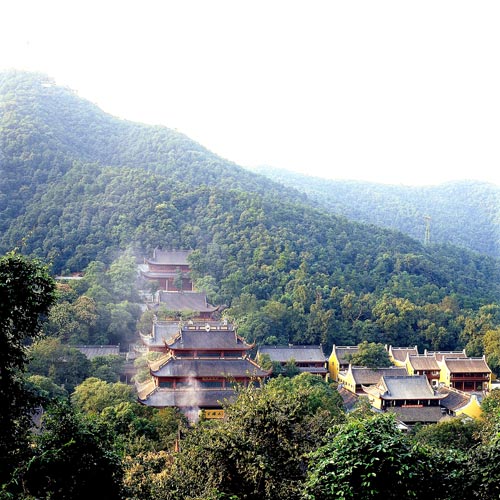
Kiếp Trược,劫濁, The Kalpa turbidity
Kiến Trược,見濁, The view turbidity
or the turbidity of view
Phiền Não Trược,煩惱濁, The affliction
turbidity, turbidity of affliction
Ý nghĩa của Phiền Não Trược—The meanings of the affliction
turbidity:
Siêu việt Phiền Não trược—Transcendency of the turbidity of
afflictions
Chúng Sanh Trược: The living beings turbidity, or turbidity of
sentient beings.
Ý nghĩa của Chúng sanh Trược—The meanings of the living turbidity:
Siêu việt chúng sanh trược—The transcendency of the turbidity of
living beings
Mạng Trược,命濁, The life turbidity,
or turbidity of life (physical body)
Siêu việt Mạng trược—The transcendency of the life turbidity
Ngũ Tuần,五旬,
Năm mươi tuổi—Fifty years of age.
Pancabhijna (skt)—The five supernatural or magical powers—See Ngũ
Thần Thông.
Ngũ Tước: The five degrees (classes) of nobility (in European
countries):
Công: Duke.
Hầu: Marquis.
Bá: Count.
Tử: Viscount.
Nam: Baron.
Ngũ Tướng Thành Thân: Năm giai đoạn hiện thành chánh đẳng chánh
giác của Đức Tỳ Lô Giá Na—The five stages in Vairocana Buddhahood:
Thông đạt bản tâm Bồ Đề: Entry into the Bodhi-mind.
Tâm tu chánh giác: Maintenance of that Bodhi-mind.
Thành Kim Cang tâm: Attainment of the diamond mind.
Chứng Kim Cang thân: Realization of the diamond embodiment.
Viên mãn Phật quả: Perfect attainment of Buddhahood.
** For more information, please see Ngũ
Chuyển.
Ngũ Tướng Thành Thân Quán: Quán tưởng về năm giai đoạn thành Chánh
Đẳng Chánh Giác của Phật Tỳ Lô Giá Na—A contemplation of the five
stages in Vairocana Buddhahood.
** For more information, please see Ngũ
Tướng Thành Thân.
Ngũ Tỳ Kheo: Năm vị Tỳ Kheo đầu tiên được Phật độ—The first five of
Buddha’s converts:
A Nhã Kiều Trần
Như,阿若憍陳如,
Ajnata-Kaundinya
Nghạch Bề: Asvajit.
Bạt Đề,跋提, Bhadrika
Thập Lực Ca Diếp,十力迦葉, Dasabala-Kasyapa
Ma-Nam-Câu-Lợi: Mahanama-Kulika.
Ngũ Uẩn,五蘊, Panca-skandha
(skt)—Panca-khandha (p)
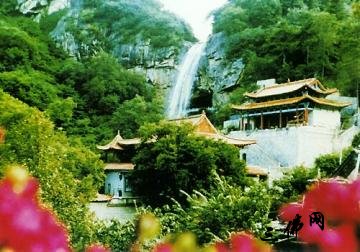
Theo Kinh Phúng Tụng trong Trường Bộ Kinh, có năm nhóm cấu thành
một con người (ngũ uẩn). Ngũ uẩn là năm thứ làm thành con người. Ngũ
uẩn là căn đế của mọi si mê làm cho chúng sanh xa rời Phật Tánh hằng
hữu của mình. Ngũ uẩn được coi như là những ma quân chống lại với Phật
tính nơi mỗi con người. Sắc cùng bốn yếu tố tinh thần cùng nhau kết hợp
thành đời sống. Bản chất thực sự của năm uẩn nầy được giải thích trong
giáo lý của nhà Phật như sau: “Sắc tương đồng với một đống bọt biển,
thọ như bọt nước, tưởng mô tả như ảo ảnh, hành như cây chuối và thức
như một ảo tưởng—According to the Sangiti Sutta in the Long Discourses
of the Buddha, there are five aggregates—Five Skandhas—The aggregates
which make up a human being. The five skandhas are the roots of all
ignorance. They keep sentient beings from realizing their
always-existing Buddha-Nature. The five aggregates are considered as
maras or demons fighting against the Buddha-nature of men. In
accordance with the Dharma, life is comprised of five aggregates (form,
feeling, perception, mental formation, consciousness). Matter plus the
four mental factors classified below as feeling, perception, mental
formation and consciousness combined together from life. The real
nature of these five aggregates is explained in the Teaching of the
Buddha as follows: “Matter is equated to a heap of foam, feeling is
like a bubble, perception is described as a mirage, mental formations
are like a banana tree and consciousness is just an illusion:
Mọi thứ vật chất—To be physical or form:
Sắc uẩn: Rupa (p)—Tính vật thể gồm bốn yếu tố, rắn, lỏng, nhiệt và
di động; các giác quan và đối tượng của chúng—Form—Aggregate of matter
(four elements of our own body and other material objects such as
solidity, fluidity, heat and motion comprise matter)—Material or
physical factors—The aggregate of form includes the five physical sense
organs and the corresponding physical objects of the sense organs (the
eyes and visible objects, the ears and sound, the nose and smell, the
tongue and taste, the skin and tangible objects).
Liên hệ tới tâm vương—To be associated with mental functioning:
Thọ uẩn: Vedana (skt&p)—Feeling or sensation—Tính tri giác gồm
tất cả các loại cảm giác sung sướng, khó chịu hay dửng dưng—Aggregate
of feeling or sensation of three kinds pleasant, unpleasant and
indifferent. When an object is experienced, that experience takes on
one of these emotional tones, either of pleasure, of displeasure or of
indifference.
Tưởng uẩn: Samjna (skt)—Sanna (p)—Thought, cognition or
perception—Ý thức chia các tri giác ra làm sáu loại (sắc, thinh, hương,
vị, xúc, và những ấn tượng tinh thần)—Thinking—Aggregate of
perception—Activity of recognition or identification or attaching of a
name to an object of experience. Perceptions include form, sound,
smell, taste, bodily impression or touch, and mental objects.
Hành uẩn: Samskara (skt)—Sankhara (p)—Formation, impression, or
mental formation—Khái niệm hay hành động bao gồm phần lớn những hoạt
động tâm thần, ý chí, phán xét, quyết tâm, vân vân—Aggregate of mental
formation—A conditioned response to the object of experience including
volition, attention, discrimination, resolve, etc.
Liên hệ đến tâm sở—Be associated with the faculty or nature of the
mind (manas):
Thức uẩn: Vijnana (skt)—Vinnana (p)—Consciousness—Nhận thức bao gồm
sáu loại ý thức nảy sinh từ sự tiếp xúc của giác quan tương ứng với một
đối tượng tri giác—Aggregate of consciousness includes the six types of
consciousness (seeing, hearing, smelling, tasting, touching and mental
consciousness)—Awareness or sensitivity to an object, i.e. the
consciousness associates with the physical factors when the eye and a
visible object come into contact, an awareness of a visible object
occurs in our mind. Consciousness or a turning of a mere awareness into
personal experience is a combined function of feeling, perception and
mental formation.
Ngũ Uẩn Ma,五蘊魔, The five maras
associated with the five skandhas—See Ngũ Uẩn.
Ngũ Uẩn Thủ: The five aggregates of grasping—Theo Kinh Phúng Tụng
trong Trường Bộ Kinh, có năm uẩn thủ—According to the Sangiti Sutta in
the Long Discourses of the Buddha, there are five aggregates of
grasping:
Sắc Thủ Uẩn: Chấp thủ sắc—Aggregate of grasping of body (form)—The
form agregate subject to clinging.
Thọ Thủ Uẩn: Chấp thủ thọ—Aggregate of grasping of feelings—The
feeling aggregate subject to clinging.
Tưởng Thủ Uẩn: Chấp thủ tưởng—Aggregate of grasping of
perceptions—The perception aggregate subject to clinging.
Hành Thủ Uẩn: Chấp thủ hành—Aggregate of grasping of mental
formations—The volition aggregate subject to clinging.
Thức Thủ Uẩn: Chấp thủ thức—Aggregate of grasping of
consciousness—The consciousness aggregate subject to clinging.
Ngũ Úy,五畏, Năm nỗi lo hay sợ
hãi—Bồ Tát mới tu học còn trong Hoan Hỷ Địa có năm mối lo sợ—Five fears
of beginners in the Bodhisattva way—A Bodhisattva at the stage of Joy
has conquered all fears including the following five fears
Bất Hoạt Úy,不活畏, Sợ không sống đủ
để tiến tu—Sợ mình chẳng thể sống nổi nên chẳng thể bố thí hết những
thứ mình có—Fear of not having enough to live on to continue to
cultivate—Giving away all lest they should have no means
Ác Danh Úy,惡名畏, Sợ tiếng xấu hay
sợ mình phải mang tiếng xấu—Fear of bad reputation—Fear of sacrificing
their reputation
Tử Úy,死畏, Sợ chết hoặc tuy đã
phát tâm nhưng lại sợ chết nên chẳng thể xả bỏ thân mệnh để làm việc
thiện—Fear of death or sacrificing themselves through dread of dying
Ác Đạo Úy,惡道畏, Sợ mình sa vào ác
đạo—Fear of falling into the Evil Realms
Đại Chúng Uy Đức
Úy,大衆威德畏,
Sợ sự đe dọa của đa số hay của những người có quyền uy, nên không dám
dõng mãnh thuyết pháp như sư tử hống—Fear of intimidation of
groups—Fear of addressing an assembly, especially of men of position
Ngũ Vân: The five masses of clouds—See Ngũ Chướng.
Ngũ Vị,五位,
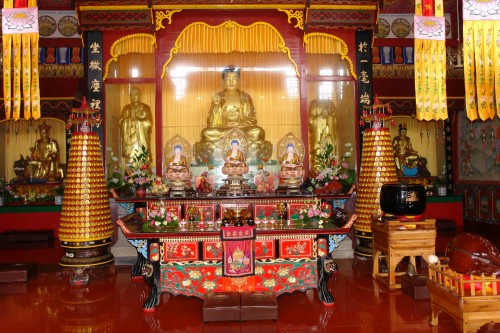
(A) Năm vị—The five tastes:
Cam (Ngọt): Sweet.
Hàm (Mặn): Salt.
Toan (Chua): Sour.
Tân (Cay) : Pungent—Peppery-hot.
Khổ (Đắng): Bitter.
(B) Năm món ăn chế từ sữa bò mà ra, người ta nói rằng những món nầy
có thể trị được nhiều bệnh—The five flavours or stages of making ghee,
which is said to be a cure for all ailments:
Nhủ Vị: Vị của sữa tươi—Ksira (skt)—Fresh milk.
Lạc Vị,酪味, Vị của ván sữa chẳng
hạn như kem—Dadhi (skt)—Coagulated milk such as cream
Sinh Tô Vị: Vị của sữa đông đặc—Navanita (skt)—Curdled milk.
Thục Tô Vị: Vị của sữa đã được biến chế như bơ—Ghola (skt)—Buter.
Thể Hồ,醍醐, Vị của sữa đã được
tinh chế như phó mát—Sarpirmanda (skt)—Clarified butter, ghee
(C) Sự minh họa của tông Thiên Thai về ngũ thời thuyết pháp của
Phật cũng tương tự như năm thời kỳ chế biến từ sữa ra tinh phó
mát—T’ien-T’ai illustration of the five periods, or five stages, of the
Buddha’s teaching is similar to the five flavours or stages of making
ghee or clarified butter.
Nhủ Vị: Sữa tươi mới vắt ra ví như thời kỳ đầu tiên khi Phật thuyết
Kinh Hoa Nghiêm cho hàng nhị thừa Thanh Văn Duyên Giác—Fresh milk is
compared to that of the Avatansaka Sutra for Sravakas and
Pratyeka-buddhas.
Lạc Vị,酪味, Sữa cô đặc chế ra từ
sữa tươi ví như thời kỳ Phật thuyết Kinh A Hàm cho hàng Tiểu
Thừa—Coagulated milk as cream is compared to that of Agama Sutra for
Hinayana in general
Sinh Tô Vị: Phó sản sữa đặc được ví với thời kỳ Phật thuyết Kinh
Phương Đẳng cho hàng Đại Thừa—Curdled milk is compared to that the
Vaipulyas for the Mahayana.
Thục Tô Vị: Phó sản bơ được ví với thời kỳ Phật thuyết Kinh Bát Nhã
cho hàng Đại Thừa—Butter is compared to that of the Prajna Sutra for
the Mahayana.
Đề Hồ Vị: Sữa được tinh chế thành phó mát được ví với thời kỳ Phật
thuyết Kinh Niết bàn cho hàng Đại Thừa—Clarified buter is compared to
that of the Nirvana Sutra for the Mahayana.
*For more information, please Ngũ Thời Giáo.
Ngũ Vị Bách Pháp: Pháp Tướng tông tuy là duy thức, lại dùng khuôn
mẫu của phương pháp phân tích dùng trong các tông phái thuộc Thực tại
và Hư vô luận, và phân thế giới hiện hữu làm năm loại, gồm 100 pháp—The
Dharmalaksana, though idealistic, takes the model of the analytical
method used in the Realistic and Nihilistic Schools, and classifies the
world of becoming into five categories which are subdivided into one
hundred dharmas—See Bách Pháp Pháp Tướng Tông.
Ngũ Vị Chúc,五味粥, Cháo ngũ vị—Cháo
ngũ vị (ngũ cốc trộn lại) được dọn ngày mồng tám tháng chạp để kỷ niệm
ngày Phật thành đạo—The porridge of five flavours made on the eighth
day of the twelfth moon, the anniversary of the Buddha’s enlightenment
Ngũ Vị Quân Thần: Năm vị quân thần—Five positions of prince and
minister.
Ngũ Vị Tam Muội,五位三昧, The five kinds
of samadhi—See Ngũõ Chủng Tam Muội
Ngũ Vị Tân: See Ngũ Tân in Vietnamese-English Section.
Ngũ Vị Thiền,五味禪, Năm loại
thiền—Five kinds of concentration
Ngoại Đạo Thiền: Heretic meditation—Meditation of heretics.
Phàm Phu Thiền,凡夫禪, Meditation of
ordinary people
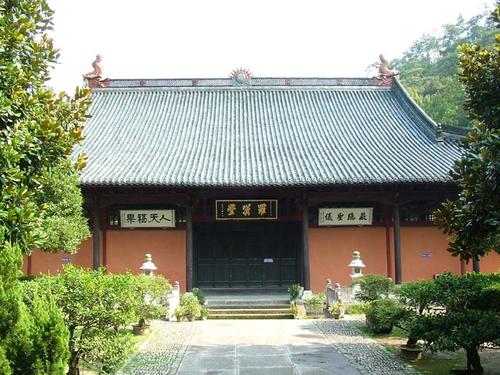
Tiểu Thừa Thiền: Hinayana meditation—Meditation of the Hinayana.
Đại Thừa Thiền: Meditation of the Mahayana.
Thiền Tối Thượng Thừa: Như Lai Thanh Tịnh Thiền—Nhứt Hành Tam Muội
Thiền—Chân Như Tam Muội Thiền—Meditation of the Supreme
Vehicle—Meditation of believers in the fundamental Buddha-nature of all
things.
Ngũ Vọng Tưởng: Five kinds of false thinking—Trong Kinh Thủ Lăng
Nghiêm, quyển Mười, ông A Nan sau khi nghe Phật dạy về ngũ ấm, đứng dậy
lễ Phật, giữa đại chúng lại bạch Phật, “Như Phật dạy trong tướng ngũ
ấm, năm thứ hư vọng làm gốc tưởng tâm. Chúng tôi chưa được Như Lai
giảng giải kỹ càng. Có thể nào một lượt trừ hết năm ấm đó? Hay là thứ
lớp trừ hết? Năm lớp đó đến đâu là giới hạn? Mong Đức Như Lai phát lòng
đại từ, vì đại chúng nầy, dạy cho tâm mục trong suốt, để làm con mắt
tương lai cho tất cả chúng sanh trong đời mạt pháp.” Đức Phật đã dạy
ngài A Nan về năm thứ vọng tưởng như sau: “Ông A Nan! Tinh chân diệu
minh, bản chất viên tịnh chẳng phải sinh ra và sinh tử các trần cấu,
cho đến hư không thảy đều nhân vọng tưởng sinh khởi. Ấy gốc nơi bản
giác diệu minh tinh chân, hư vọng phát sinh các thế giới. Như ông Diễn
Nhã Đa nhìn hình mình trong gương, phát cuồng cho là mình không có đầu.
Vọng vẫn không nhân. Trong vọng tưởng lập tính nhân duyên. Mê nhân
duyên, nói là tự nhiên. Tính hư không thật là huyễn sinh. Nhân duyên và
tự nhiên đều là vọng tâm của chúng sanh so đo chấp trước. Ông A Nan!
Ông biết hư vọng khởi ra, nói là vọng nhân duyên. Nếu hư vọng vẫn không
có, thì nói cái vọng nhân duyên vẫn là không phải có. Huống chi chẳng
biết mà cho là tự nhiên. Vậy nên Như Lai cùng ông phát minh bản nhân
của ngũ ấm, đồng là vọng tưởng.”—In the Surangama Sutra, book Ten,
having heard the Buddha’s instruction on the five skandhas, Ananda
arose from his seat. He bowed and respectfully asked the Buddha: “The
Buddha has told us that in the manifestation of the five skandhas,
there are five kinds of falseness that come from our own thinking
minds. We have never before been blessed with such subtle and wonderful
instructions as the Tathagata has now given. Further, are these five
skandhas destroyed all at the same time, or are they extinguished in
sequence? What are the boundaries of these five layers? We only hope
the Tathagata, out of great compassion, will explain this in order to
purify the eyes and illuminate the minds of those in the great
assembly, and in order to serve as eyes for living beings of the
future.” The Buddha told Ananda, “the essential, true, wonderful
brightness and perfect purity of basic enlightenment does not admit
birth and death, nor any mundane defilements, nor even empty space
itself. All these are brought forth because of false thinking. The
source of basic enlightenment, which is wonderfully bright, true, and
pure, falsely gives rise to the material world, just as Yajnadatta
became confused about his head when he saw his own reflection in the
mirror. The falseness basically has no cause, but in your false
thinking, you set up causes and conditions. But those who are confused
about the principle of causes and conditions call it spontaneity. Even
empty space is an illusory creation; how much more so are causes and
conditions and spontaneity, which are mere speculations made by the
false minds of living beings.Ananda! If you perceive the arising of
falseness, you can speak of the causes and conditions of that
falseness. But if the falseness has no source, you will have to say
that the causes and conditions of that falseness basically have no
source. How much the more is this the case for those who fail to
understand this and advocate spontaneity.Therefore, the Tathagata has
explained to you that the fundamental cause of all five skandhas is
false thinking.”
Sắc Ấm Vọng Tưởng—The false thinking of the form skandha:
Thân thể của ông, trước hết nhân cái tưởng của cha mẹ sinh ra. Cái
tâm của ông không phải tưởng thì không thể đến trong tưởng ấy mà truyền
mệnh: Your body’s initial cause was a thought on the part of your
parents. But if you had not entertained any thought in your own mind,
you would not have been born. Life is perpetuated by means of thought:
Như tôi đã nói trước; tâm tưởng vị chua, nước miếng chảy ra, tâm
tưởng trèo cao thấy rợn. Bờ cao chẳng có, vật chua chưa đến, thân thể
của ông quyết định không đồng loại với hư vọng được, tại sao nước dãi
lại nhân nói chua mà ra?: As I have said before, when you call to mind
the taste of vinegar, your mouth waters. When you think of walking
along a precipice, the soles of your feet tingle. Since the precipice
doesn’t exist and there isn’t any vinegar, hoe could your mouth water
at the mere mention of vinegar, if it were not the case that your body
oridinated from falseness:
Bởi thế nên biết; ông hiện có sắc thân, đó là kiên cố vọng tưởng
thứ nhất: Therefore, you should know that your present physical body is
brought about by the first kind of false thinking, which is
characterized by solidity.
Thụ ấm vọng tưởng—The false thinking of the feeling skandha: Như đã
nói trên, trèo cao, tưởng tâm có thể khiến ông thấy rợn, bởi nhân lĩnh
thụ ra, có thể động đến thân thể. Nay rõ ràng, thuận thì được lợi ích,
nghịch thì chịu tổn hại, hai thứ dong ruổi nhau. Đó là hư minh, vọng
tưởng thứ hai—As described earlier, merely thinking about a high place
can cause your body to tingle and ache. Due to that cause, feeling
arise and affect your body, so that at present you pursue pleasant
feelings and are repelled by unpleasant feelings. These two kinds of
feelings that compel you are brought about by the second kind of false
thinking, which is characterized by illusory clarity.
Tưởng Ấm Vọng Tưởng—The false thinking of the thinking skandha: Bởi
cái suy nghĩ nó sai sử sắc thân của ông. Thân chẳng phải đồng loại với
niệm, thân ông nhân đâu bị theo các niệm sai sử? Đó là do mỗi thứ đều
dùng hình dạng, tâm sinh ra thì thân dùng lấy, thân và tâm tương ứng.
Thức là tưởng tâm, ngủ là chiêm bao, thì tưởng niệm của ông nó lay động
cái vọng tình. Đó là dung thông, vọng tưởng thứ ba—Once your thoughts
arise, they can control your body. Since your body is not the same as
your thoughts, why is it that your body follows your thoughts and
engages in every sort of grasping at objects. A thought arises, and the
body grasps at things in response to the thought. When you are awake,
your mind thinks. When you are asleep, you dream. Thus, your thinking
is stirred to perceive false situations. This is the third kind of
false thinking, which is characterized by interconnectedness.
Hành Ấm Vọng Tưởng—The false thinking of the formation skandha.
Lý biến hóa không ngừng, trong mỗi niệm âm thầm dời đổi, móng tay
dài, tóc mọc, khí hao mòn, hình dạng nhăn nhó, ngày đêm thay nhau,
không hề hiểu biết: The metabolic processes never stop; they progress
through subtle changes: your nails and hair grow, your energy wanes;
and your skin becomes wrinkled. These processes continue day and night,
and yet you never wake up to them.
Ông A Nan! Việc đó nếu không phải là ông thì thế nào thân thể thay
đổi? Còn nếu là ông, sao ông không biết? Các hành của ông niệm niệm
không nghỉ: If these things aren’t part of you, Ananda, then why does
your body keep changing? And if they are really part of you, then why
aren’t you aware of them? Your formations skandha continues in thought
after thought without cease. It is the fourth kind of false thinking
which is subtle and hidden.
Thức Ấm Vọng Tưởng—The false thinking of the consciousness skandha:
Cái tinh minh trạm tịch, không lay động của ông, gọi là hằng
thường. Đối với thân không vượt ra ngoài cái kiến văn giác tri. Nếu
thực là tinh chân thì không dung để tập khí hư vọng. Nhân sau các ông
đã từng có từ nhiều năm trước, thấy một vật lạ, trải qua nhiều năm, nhớ
và quên đều không còn. Về sau bỗng dưng lại thấy cái vật lạ trước, ghi
nhớ rõ ràng, chẳng hề sót mất. Trong cái tinh trạm liễu chẳng lay động,
mỗi niệm bị huấn luyện, đâu có tính lường được: If you are pure,
bright, clear, and unmoving state is permanent, then there should be no
seeing, hearing, awareness, or knowing in your body. If it is genuinely
pure and true, it should not contain habits or falseness. How does it
happen, then, that having seen some unusual things in the past, you
eventually forget it over time, until neither memory nor forgetfulness
of it remain; but then later, upon suddenly seeing that unusual thing
again, you remember it clearly from before without forgetting a single
detail? How can you keep track of the permeation that goes on in
thought after thought in this pure, clear, and unmoving consciousness?
Ông A Nan! Nên biết rằng cái tinh trạn ấy chẳng phải chân, như dòng
nước chảy mạnh, xem qua như yên lặng. Chảy mau và chảy chẳng thấy, chứ
không phải không chảy. Nếu chẳng phải tưởng căn nguyên, thì đâu lại
chịu hư vọng tập khí: Ananda, you should know that this state of
clarity is not real. It is like rapidly flowing water that appears to
be still on the surface. Due to its speed you cannot perceive the flow,
but that does not mean it is not flowing. If this were not the source
of thinking, then how could one be subject to false habits?
Chẳng phải ông dùng được lẫn lộn cả sáu căn, thì vọng tưởng đó
không bao giờ dứt được: If you do not open and unite your six sense
faculties so that they function interchangeably, this false thinking
will never cease.
Cho nên hiện tại, trong kiến văn giác tri của ông, quán tập nhỏ
nhiệm, thì trong cái trạm liểu, mường tượng hư vô. Đó là điên đảo thứ
năm, vi tế tinh tưởng: That’s why your seeing, hearing, awareness, and
knowing are presently strung together by subtle habits, so that within
the profound clarity, existence and non-existence are both unreal. This
is the fifth kind of upside-down, minutely subtle thinking.
Ngũ Vô Gián: Địa ngục với năm thứ vô gián: The
uninterrupted hells
(Avici hell). It is ceaseless in five respects:
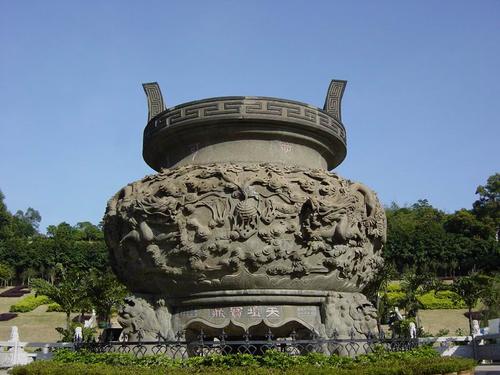
Nghiệp Quả Vô Gián: Thụ quả vô gián—Tạo nghiệp và thụ quả là một
sợi dây xích không gián đoạn—Karma and its efects are an endless chain
with no escape.
Thụ Khổ Vô Gián: Tội nhân trong địa ngục nầy bị cực hình liên tục
không gián đoạn—Its sufferings are ceaseless.
Thời Vô Gián: Thời gian thọ khổ không hạn kỳ—It is timeless.
Mệnh Vô Gián: Thọ mệnh trong địa ngục không gián đoạn, dù có muốn
chết để qua kiếp khác cũng không được—Its fate or life is endless.
Hình Vô Gián: Địa ngục nầy luôn đầy tội nhân không ngừng nghỉ—It is
ceaselessly full.
Ngũ Vô Gián Nghiệp: The five karma or sins that lead to the avici
hell—See Ngũ Nghịch in Vietnamese-English Section.
Ngũ Vô Gián Nghiệp Cảm: Theo Kinh Địa Tạng Bồ Tát Bổn Nguyện, có
năm điều nghiệp cảm kêu là Vô Gián. Năm điều đó là—According to the
Earth-Store Bodhisattva Sutra, there are five uninterrupted due to five
retributions for karma. What are they?:
Tội nhân trong đó chịu khổ ngày lẫn đêm, cho trải qua số kiếp không
lúc nào ngừng nghỉ, nên gọi là Vô Gián—Punishment is undergone day and
night throughout kalpas, and there is no time of respite. Therefore, it
is called Uninterrupted Hell.
Một tội nhân đầy chật cả ngục, nhiều tội nhân mỗi mỗi thân cũng đều
đầy chật khắp cả ngục, nên gọi là Vô Gián—One person fills it, yet many
people also fill it. Therefore, it is called Uninterrupted.
Những khí cụ để hành hình tội nhân như chỉa ba, gậy, diều hâu, rắn,
sói, chó, cối giả, cối xay, cưa, đục, dao mác, chảo dầu sôi, lước sắt,
dây sắt, lừa sắt, ngựa sắt, da sống niền đầu, nước sắt nóng rưới thân,
đói thời ăn hoàn sắt nóng, khát thời uống nước sắt sôi. Từ năm trọn
kiếp, đến vô số kiếp những sự khổ sở nối nhau luôn không ngừng nghỉ một
giây, nên gọi là Vô Gián—The implements of punishment are forks, clubs,
eagles, serpents, wolves, and dogs, which pound, grind, saw, drill,
chisel, cut and chop; boiling liquids, iron nets, iron robes, iron
asses, and iron hoses that flay one alive, bind one’s head in rawhide,
and pour hot iron over one’s body, meals of iron pelletss and drinks of
iron fluids. Throughout many nayutas of kalpas such suffering continues
without interruption. Therefore, it is called Uninterrupted.
Không luận là trai hay gái, Mường, Mán, mọi rợ, già trẻ, sang hèn,
hoặc là rồng, là trời, hoặc là thần, là quỷ; hễ gây tội ác theo đó mà
cảm lấy, tất cả đều đồng chịu khổ, nên gọi là Vô Gián—Whether a man, a
woman, a savage, or someone old or young, honorable or lowly, a dragon
or a spirit, a god or ghost, everyone must undergo retribution for the
offenses he or she has committed. Therefore, it is called
Uninterrupted.
Nếu người nào bị đọa vào địa ngục đó, thời từ khi mới vào cho đến
trăm ngàn kiếp mỗi một ngày đêm muôn lần chết, muôn lần sống lại, muốn
cầu tạm ngừng chừng khoảng một niệm cũng không được, trừ khi tội nghiệp
tiêu hết mới được thọ sanh. Do vì lẽ liên miên mãi nên gọi là Vô
Gián—If one falls into this hell, from the time of entry one undergoes
ten thousand deaths and as many rebirths each day and night throughout
a hundred thousand kalpas. One may seek relief for the space of a
thought, but even such a brief pause does not happen. Only when one’s
karma is exhausted can one attain rebirth. Because of this continuity,
it is called Uninterrupted.
Ngũ Vô Gián Tội: The five sins that lead to avici hell—See Ngũ
Nghịch.
Ngũ Vô Lượng,五無量, Năm thứ vô
lượng—The five infinites or immeasurables
Phật Bảo Sanh với Vô lượng thân: Ratnasambhava Buddha with
Immeasurable bodies.
Phật A Súc Bệ với Vô lượng Tâm: Aksobhya Buddha with Immeasurable
Minds.
Phật A Di Đà hay Vô Lượng Thọ Phật với Vô Lượng Trí Huệ: Amitabha
Buddha or Infinite-Life Buddha with Immeasurable Wisdom.
Phật Tỳ Lô Giá Na với Vô Lượng Hư Không: Vairocana Buddha with
Immeasurable Space.
Phật Bất Không hay Ly Bố Úy Phật với Vô Lượng chúng sanh:
Amoghasiddhi Buddha with all the living.
Năm Xan Tham,五無量,Macchariyani
(p)—Five kinds of begrudging
Năm Xan,五無,Macchariyani (p)—Five
kinds of begrudging
Ngũ Xan Tham: Macchariyani (p)—Five kinds of begrudging—Theo Kinh
Phúng Tụng trong Trường Bộ Kinh, có năm loại xan tham—According to the
Sangiti Sutta in the Long Discourses of the Buddha, there are five
kinds of begrudging:
Xan tham đối với trú xứ: Begrudging as to dwelling-place.
Xan tham đối với gia đình: Begrudging as to family.
Xan tham đối với các vật thâu hoạch: Begrudging as to gains.
Xan tham đối với sắc: Begruding as to beauty.
Xan tham đối với Pháp: Begrudging as to Dhamma.
Ngũ Xiển Đề: Năm ác Tăng, khi chết sa vào địa ngục, và tái sanh làm
ngũ xiển đề hay đồng nam đồng nữ—The five sandhilas—Five bad monks who
died, went to the hells, and were reborn as sandhilas or imperfect
males.
Ngũ Xuất Ly Giới: Nissaraniya-dhatuyo (p)—Theo Kinh Phúng Tụng
trong trường Bộ Kinh, có năm xuất ly giới—According to the Sangiti
Sutta in the Long Discourses of the Buddha, there are five elements
making for deliverance:
Giải Thoát Đối Với Dục Vọng—The deliverance from SENSE-DESIRES: Ở
đây vị Tỳ Kheo có tác ý đối với dục vọng, tâm không hướng nhập dục
vọng, không tín lạc, không an trú, không bị chi phối bởi dục vọng. Khi
vị nầy có tác ý đối với ly dục, tâm hướng nhập ly dục, tín lạc, an trú
và bị chi phối bởi ly dục, tâm của vị ấy khéo ly, khéo tu, khéo khởi,
khéo giải thoát, khéo ly hệ đối với các dục lạc. Và các lậu hoặc, các
tổn hại, các nhiệt não khởi lên do duyên các dục lạc, vị ấy đối với
chúng được giải thoát, không còn cảm thọ cảm giác ấy—Here when a monk
considers sense-desires, his mind does not leap forward and take
satisfaction in them, fix on them or make free with them, but when he
considers renunciation it does leap forward, take satisfaction in it,
fix on it, and make free with it. And he gets this thought well-set,
well-developed, well-raised up, well freed and disconnected from
sense-desires. And thus he is freed from the corruptions (asava), the
vexations and fevers that arise from sense-desires, and he does not
feel that sensual feeling.
Giải Thoát Đối Với Sân Hận—The deliverance from ILL-WILL: (same as
in 1. Replace “sense-desires” with “ill-will”).
Giải Thoát Đối Với Hại Tâm—The deliverance from CRUELTY (same as in
1. Replace “sense-desires” with “cruelty”).
Giải Thoát Đối Với SẮC—The deliverance from FORMS (rupa) (same as
in 1. Replace “sense-desires” with “forms”).
Giải Thoát Đối Với TỰ THÂN—The deliverance from PERSONALITY (same
as in 1. Replace “sense-desires” with “personality”).
Ngũ Xứ Chân Ngôn,五處眞言, See Ngũ Chủng
Quán Đảnh
Ngũ Xứ Cúng Dường,五處供養, Năm chỗ để cúng
dường—The five to be constantly served
Phụ Thân,父親, Father
Mẹ: Mother.
Thầy dạy: Teacher.
Thầy Dạy Đạo: Religious Master.
Bệnh Nhân,病人, The sick.
Ngũ Xứ Gia Trì,五處加持, Lễ quán đảnh
bằng cách tiếp xúc với năm chỗ trên thân thể—Ceremonial touching of the
five places on the body
Chân Mày: Brow.
Hữu Kiên,右肩, Right Shoulder
Tả Kiên,左肩, Left Shoulder
Tim: Heart.
Cổ Họng: Throat.
Ngũ Y: Năm y của Tỳ Kheo Ni gồm ba y của Tỳ Kheo thêm hai y Trì Chi
(che khắp châu thân) và Phú Kiên (che vai)—The five garments worn by a
nun are the three worn by a monk with two others.
Ngụ Tiễn,寓錢, Giống như tiền, thí
dụ như tiền giấy—Resemblance money, i.e. paper money
Ngụ Tông,寓宗, Chi nhánh của một
tông phái—A branch set; one school appertaining to another
Ngung Trung:
Mặt trời giữa giờ tỵ gọi là “Ngung Trung” (giữa 9 và 11 giờ sáng
hay là 10 giờ sáng)—The middle of the period from 9 to 11 AM, or 10 AM.
Tông Thiên Thai gọi thời giáo thứ tư trung Ngũ Thời Giáo của Đức
Phật là Ngung Trung: T’ien-T’ai called this the fourth period of
Buddha’s five teaching periods.
Nguy Thành,危城, Thân chúng sanh được
ví với “Nguy Thành.”—Perilous citadel or the body
Ngụy Kinh,僞經, False or forged
sutras
Nguyên Cát Thụ,元吉樹,
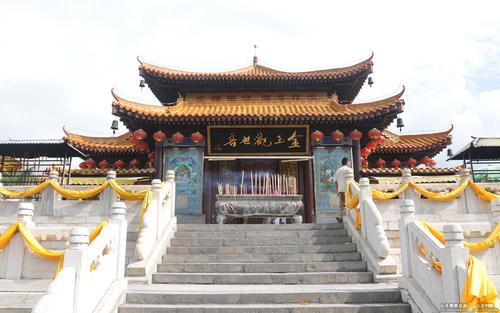
Cây của niềm hạnh phúc nguyên thủy: The tree of the origin of
felicity.
Tên khác của cây Bồ đề: Another name for Bodhi tree or ficus
religiosa.
Nguyên Chiếu,元照, Nguyên Chiếu tên là
Trạm Nhiên, là một danh Tăng và tổ thứ bảy của tông Thiên Thai, ngài
thị tịch năm 1116—A famous monk named Chan-Jan, the seventh head of the
T’ien-T’ai School. He died in 1116—See Liên Tông Thập Tam Tổ
Nguyên Chủ: Original (rightful) owner.
Nguyên Diệu,元妙, Giác thể của Niết
Bàn—The original or fundamental marvel or mystery
Nguyên Diệu Cao Phong: See Cao Phong Nguyên Diệu.
Nguyên Để,源底, Nguồn gốc hay sự bắt
đầu—The very beginning, source or basis
Nguyên Hiểu,元曉, Nhà sư và tác giả
của nhiều bộ luận—Yuan-Hsiao, the author-monk
Nhân Nguyên,因源, Hetupratyaya (skt)
Hetupratyaya nghĩa là nguyên nhân hay nguyên nhân tính hay tính
nhân duyên. Hetu và Pratyaya thực ra đồng nghĩa với nhau. Tuy nhiên,
hetu được xem là một nhân tố thâm sâu và hiệu quả hơn
Pratyaya—Hetupratyaya means causation or causality. Hetu and pratyaya
are really synonymous; however, hetu is regarded as a more intimate and
efficient agency of causation than a Pratyaya.
Nhân căn bản tạo ra nghiệp quả và sự tái sanh. Hễ gây nhân ắt gặt
quả—The causes—The original or fundamental cause which produces
phenomena, such as karma or reincarnation. Every cause has its fruit or
consequences.
Nguyên Nhân Chủ Yếu: Main cause or factor.
Nguyên Nhân Cơ Bản: Under-lying causes
Nguyên Nhân Khách Quan: Objective cause or factor.
Nguyên Nhân Luân Lý: Moral causation
Nguyên Nhân Luận,原人論, Tên đầy đủ là Hoa
Nghiêm Nhân Luận, sách xét về bản tánh căn bản của con người, do ngài
Khê Phong Tông Mật, tổ thứ năm của tông Hoa Nghiêm biên soạn—A treatise
on the original or fundamental nature of man, by Tsung-Mi, the
fifthpatriarch of the Hua-Yen school, explaining its doctrine, in one
book.
Nguyên Nhân Phụ: Subsequent causes
Nguyên Nhân Tính: See Nguyên Nhân.
Nguyên Niên: The first year of the regime (reign).
Nguyên Phẩm Vô
Minh,元品無明,
Còn gọi là căn bản vô minh hay vô thủy vô minh—Primal ignorance—The
original state of avidya, unenlightenment, or ignorance—Original
innocence.
Nguyên Quán: Native village—Native place—Place of origin.
Nguyên Tạng,元藏, Kinh Tạng được khắc
in vào thời nhà Nguyên theo lệnh của Nguyên Thế Tổ, bắt đầu năm 1277 và
hoàn thành năm 1290. Tổng cộng có 1422 bộ với 6017 quyển. Trong đó có
528 bộ Đại Thừa kinh, 242 bộ Tiểu Thừa kinh; 25 bộ Luật Đại Thừa, 54 bộ
Luật Tiểu Thừa; 97 bộ Luận Đại Thừa, 36 bộ Luận Tiểu Thừa; 108 quyển
Hiền Thánh Ký Lục, và 332 quyển Tục Nhập Tạng. Đại để bộ Nguyên Tạng và
Tống Tạng cũng giống nhau—The Yuan Tripitaka, compiled by order of
Shih-Tsu (Kublai), founder of the Yuan dynasty, and printed from
blocks; begun in 1277, the work was finished in 1290. It included 1,422
master work with 6,017 books. It contained 528 Mahayana and 242
Hinayana sutras; 25 Mahayana and 54 Hinayana vinaya; 97 Mahayana and 36
Hinayana sastras; 108 biographies; and 332 supplementary or general
works. In general, it was similar to the Sung edition.
Nguyên Tạng Mục
Lục,元藏目錄,
Đại Phổ Ninh Tự Đại Tạng Kinh Mục Lục—Thư mục của toàn bộ Nguyên
Tạng—The catalogue of the Yuan Tripitaka—See Nguyên Tạng
Nguyên Tắc: Precepts—Rule.
Nguyên Tắc Bất Di Bất Dịch: Hard and fast rule.
Nguyên Tâm,元心, Tâm nguyên thủy
không phân biệt đối đãi—The original or primal mind behind all
things—See Sâm La Vạn Tượng Chi Tâm
Nguyên Thần Tinh,元辰星, Ngôi sao kiểm soát
sự thành đạt danh dự và trừ khử bệnh tật phiền não—A star that controls
the attainment of honours, and the riddance of sickness and distresses
Nguyên Thiều Siêu Bạch: See Nguyên Thiều.
Nguyên Thủy,元始, Prabhu
(skt)—Beginning—Orginal—Primitive—In the beginning
Nguyên Tiêu: Đêm rằm tháng giêng âm lịch—Night of fifteen day of
January (lunar month).
Sở Nguyện,所願, Pranihita or
Pranidhana (skt)
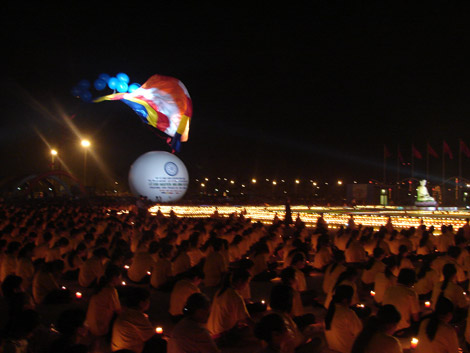
Nghĩa của Nguyện—The meanings of Resolve:
Ao ước: To wish—To desire.
Cam kết: Commitment.
Cầu Nguyện: To pray.
Lời hứa: A will.
Thệ nguyện: To vow—Resolve—Nguyện là phát khởi từ trong tâm tưởng
một lời thề, hay lời hứa kiên cố, vững bền, nhất quyết theo đuổi ý
định, mục đích, hoặc công việc tốt lành nào đó cho đến lúc đạt thành,
không vì bất cứ lý do gì mà thối chuyển lui sụt. Phật tử chơn thuần nên
nguyện tu y như Phật để được thành Phật, rồi sau đó nguyện đem pháp mầu
của chư Phật độ khắp chúng sanh, khiến cho nhất thiết chúng sanh đều bỏ
mê về giác, phản vọng quy chơn. Theo Tịnh Độ tông, nguyện tức là khởi
tâm tha thiết mong cầu thoát khỏi Ta Bà khổ lụy để được sanh về cõi Cực
Lạc yên vui—Vow is something that comes from the heart and soul, a deep
rooted promise, swearing to be unrelenting in seeking to attain a goal.
This is having a certain mind-set or something one wishes to achieve
and never give up until the objective is realized. Thus, there there
should be absolutely no reason whatsoever that should cause one to
regress or give up that vow or promise. Sincere Buddhists should vow to
follow the teachings to sultivate to become Buddhas, then to use the
magnificent Dharma of enlightenment of the Buddhas and vow to give them
to all sentient beings to abandon their ignorance to cross over to
enlightenment, to abandon delusion to follow truths. According to the
Pureland Buddhism, Vow is to wish sincerely, praying to find liberation
from the sufferings of this saha World, to gain rebirth to the peaceful
Ultimate Bliss World.
Phân loại Nguyện—Categories of Resolve.
Biệt Nguyện,別願, Specific vows—See
Biệt Nguyện in Vietnamese-English Section
Tổng Nguyện,總願, Universal vows—See
Tổng Nguyện in Vietnamese-English Section
Nguyện Ba La Mật,願波羅蜜, Ba La Mật thứ
tám trong Thập Ba La Mật của Bồ Tát, thượng cầu Bồ Đề, hạ hóa chúng
sanh—The vow paramita, the eighth of the ten paramitas, a bodhisattva’s
vow to attain bodhi, and save all beings to the other shore
** For more information, please see Thập Ba
La Mật.
Nguyện Chí Cầu Mãn Túc: Tìm cách làm tròn lời nguyện—Seeking the
fulfilment or resolves or aims.
Nguyện Chủ,願主, Lời bổn nguyện trong
tiền kiếp khuyến khích con người xây chùa hay chép kinh, vân vân, đưa
dẫn con người ấy thành Phật hay vãng sanh Tịnh Độ—The original vow or
resolve in a previous existence which incites a man to build a pagoda,
copy a sutra, etc., leading him to become Buddha or reach the Pure Land
Nguyện Thổ,願土,
Quốc độ thành tựu do lời nguyện, hay Tịnh Độ của Đức Phật A Di
Đà—The land of the vow, the Pure Land of Amitabha.
Lời nguyện của Đức Phật A Di Đà, độ thoát tất cả chúng sanh tín
tâm: Salvation through trust in the vow, e.g. of Amitabha.
Nguyện Hải,願海, Lời thề nguyền của
vị Bồ Tát sâu rộng như biển cả—The Bodhisattva vow is deep and wide
likened to the ocean
Nguyện Hành: Thề nguyền và tu hành, hai điều hỗ trợ lẫn nhau trong
việc tu hành (không thể thiếu một)—To vow and perform the discipline
the vow involves.
Nguyện Luân,願輪,
Thệ nguyện của Bồ Tát bền vững, phá tan hết thảy chướng duyên
nghịch cảnh, giống như luân bảo của Luân Vương: The vow-wheel of a
Bodhisattva, which overcomes all opposition.
Thân của Bồ Tát luân chuyển vì thệ nguyện của chính mình: The
revolving of the bodhisattva’s life around his vow.
Nguyện Lực,願力, Pranidhanabala
(skt)—Lực của lời thề nguyền—The power of the vow—Nguyện lực kiên quyết
của một vị Bồ Tát là cứu độ nhất thiết chúng sanh—The inflexible
resolve of a Bodhisattva is to save all sentient beings
Nguyện Phật,願佛, Một trong mười loại
thân Phật, tức là hóa thân Phật trong tám tướng thành đạo—A Buddha of
the vow, who passes through the eight forms of an incarnate Buddha, one
of the ten bodies of a Thus-Come-One
** For more information, please see Tám Thời
Kỳ Trong cuộc Đời Đức Phật, and Thập
Thân Phật in Vietnamese-English Section.
Nguyện Tác,願作, Nguyện trở thành,
chẳng hạn như nguyện trở thành Phật—Resolve to be or become, e.g.
resolve to become Buddha
Nguyện Tâm,願心, Tâm nguyện của Phật
là cứu độ chúng sanh—The heart of resolve of Buddha to all beings
Nguyện Thân,願身, Nguyện Phật—Một
trong mười thân Phật, nguyện sanh về cung trời Đâu Suất để cứu độ chúng
sanh—The resolve of a Buddha to be born in the Tusita heaven for the
work of saving all beings, one of the ten bodies of a Thus Come One
** For more information, please see Nguyện
Phật, and Thập Thân Phật.
Nguyện Thuyền,願船, Bổn nguyện của Đức
Phật A Di Đà cứu độ chúng sanh vãng sanh Tịnh Độ được sánh với chiếc
thuyền đưa họ đáo bỉ ngạn—The Amitabha’s vow likened to a boat which
ferries all beings to his Pure Land
Nguyện Thực,願食, Một trong năm thức
ăn tinh thần nuôi dưỡng thiện căn, người tu theo Phật luôn lấy nguyện
lực để giữ gìn thân giống như việc ăn uống trong đời thường—Vow-food;
to nourish the life by the vow, and thus have strength to fulfil its
duties, one of the five kinds of spiritual food which good roots of
goodness are nourished
Nguyện Trí,願智, Trí huệ phát ra do
kết quả của lời nguyện—Wisdom resulting from the vow

Nguyện Vãng Sanh Tịnh Độ:
Vow to be reborn in the Pure Land:
Con nguyện lâm chung không chướng ngại
I vow that at the moment of death, there will be no obstacles
A Di Đà đến rước từ xa
Amitabha Budha will welcome from afar
Quán Âm rưới nước cam lồ lên dầu
Bodhisattva Avalokitesvara will shower sweet dew on my head
Đại Thế Chí kim đài trao đỡ gót
Bodhisattva Mahastham-prapta will bring a lotus blossom for my
feet.
Trong một sát na lìa ngũ trược
In a split second, I will leave the turbid world
Khoảng tay co duỗi đến liên trì
Reaching the Pure Land in the time it takes to extend my arms.
Khi hoa sen nở, thấy Từ Tôn
When the lotus blossom opens, I will see Amitabha, the
compassionate
Nghe tiếng pháp sâu lòng sáng tỏ
Hearing the profound dharma, I will be enlightened
Và liền ngộ vô sanh pháp nhẫn
And reach tolerance of non-birth
Không rời an dưỡng tại Ta Bà
I will then return to the Saha World, without leaving the Pure Land
Khéo đem phương tiện lợi quần sanh
Through all kinds of expedients, I will help sentient beings
Hay lấy trần lao làm Phật sự
Always taking earthly toil as Buddha work
Con nguyện như thế Phật chứng tri
This is my vow, please accept it
Kết cuộc về sau được thành tựu
Anh help me fulfill it in the future.
Nguyệt (Satellite): Candra—Soma—Kỳ Đạt La—Kỳ Đà La—Chiến Đạt La—Tô
Ma—Moon.
Mặt Trăng: The moon.
Sáng Dạ Thần: Người tạo ra ban đêm: Nisakara (skt)—Maker of the
night.
Tinh Tú Vương: Naksatranatha (skt)—Vua của hết thảy tinh tú—Lord of
constellations.
Hỷ Hoài Chi Đầu Sư: The crest of Siva.
Liên Hoa Vương: Kumuda-pati (skt)—Chúa tể Liên Hoa—Lotus lord.
Bạch Mã Vương: Svetavajin (skt)—Vị chúa tể của các loài bạch
mã—Drawn by white horses or lord of white horses.
Đại Bạch Quang
Thần,大白光神,
Sitamsu (skt)—Vị Thần phóng ra những tia sáng trắng—The spirit with
white rays
Lãnh Quang Thần: Sitamarici (skt)—Vị Thần với những tia sáng mát
dịu—The spirit with cool rays.
Lộc Hình Thần: Mrganka (skt)—Thần có tướng hay hình thức của loài
nai—The spirit with marks or form like a deer.
Dã Thố Hình Thần: Sasi (skt)—Vị Thần có tướng mạo hay hình thức của
một con thỏ—The spirit with marks or form like a hare.
Nguyệt Ái Châu,月愛珠, Candrakanta
(skt)—Ngọc châu Nguyệt Ái, được dùng để ban nước hay mưa—The moon-love
pearl or moonstone, which bestowes abundance of water or rain
Nguyệt Ái Tam Muội,月愛三昧, Phật nhập Nguyệt
Ái Tam Muội (như ánh trăng mát dịu) nhằm trừ nhiệt não thương ghét của
chúng sanh—A Buddha’s “moon-love-samadhi,” in which he rids men of the
distresses of love and hate
Nguyệt Bà Thủ Na,月婆首那, Upasunya
(skt)—Cao Không, tên của một vị Tăng Ấn Độ, con của vua Ưu Thiền Ni—An
Indian monk, son of king Udyana
Nguyệt Cái,月蓋, Theo Kinh Duy Ma
Cật, có một vị trưởng giả trong thành Tỳ Xá Ly (đã từng vào phương
trượng của ngài Duy Ma nghe giảng về Bất Nhị pháp môn). Nguyệt Cái đã
thỉnh cầu sự trợ giúp của Tây Phương Tam Tôn (A Di Đà, Đại Thế Chí và
Quán Âm) để diệt trừ chứng dịch hạch của chúng sanh—According to the
Vimalakirti Sutra, there was an elder of Vaisali, who at the Buddha’s
bidding sought the aid of Amitabha, Mahasthamaprapta and Kuan-Yin,
especially the last, to rid his people of a pestilence
Nguyệt Chi Quốc,月支國, The Yueh-Chih or
Indo-Seythians—Nguyệt Thị Quốc—Tên nước ở phía tây Ấn Độ—Name of a
country, west of India—See Đô Hóa La
Nguyệt Chứng Tam Muội: Candra-dipa-samadhi.
Nguyệt Chủng,月種, Candravamsa
(skt)—Dòng dõi mặt trăng, một dòng họ thuộc giai cấp Sát Đế Lợi ở Ấn
Độ—Descendants of the moon, the lunar race of kings or the second great
line of Kshatriya or royal dynasties in India—For more information,
please see Nhật Chủng
Nguyệt Cung,月宮, Cung điện của Nguyệt
Thiên Tử, làm bằng bạc và lưu ly trên một diện tích bốn mươi chín lập
phương do tuần—The moon palace of the male regent of the moon
(Candradeva or Somadeva), made of silver and crystal; it is described
as forty-nine yojanas square
Nguyệt Diện: Round face and beautiful as the moon.
Nguyệt Diện Phật,月面佛, Theo Kinh Hoa
Nghiêm thì Nguyệt Diện Phật chỉ thọ mệnh có một ngày một đêm, đối lại
với Nhật Diện Phật thọ mệnh 1.800 năm—According to the Flower Adornment
Sutra, the “Moon-Face” Buddha, whose life is only a day and a night, in
contrast with the “Sun-Face” Buddha whose life is 1.800 years
Nguyệt Diệu,月曜, Nguyệt Diệu là một
nhóm bên ngoài Thai Tạng Giới trong Kim Cang Viện—Moon-shining or
Moon-effulgence; a group shown outside the Garbhadhatu group in the
Diamond Court
Nguyệt Đàn,月壇, An external altarin
temple in the open, under the moon.
Nguyệt Đăng Minh Phật: Candra-Surya-pradipa—Kandrakadipa—Danh hiệu
của 20.000 vị Phật liên tục thuyết giảng Kinh Pháp Hoa—The title of
20.000 Buddhas who succeeded each other preaching the Lotus Sutra.
Nguyệt Đăng Tam
Muội,月燈三昧,
candra-dipa-samadhi (skt)—Tam muội mà Phật đã thuyết cho Nguyệt Quang
Đồng Tử nghe về pháp môn Nhất thiết chư pháp thể tánh bình đẳng vô lý
luận tam muội, kinh Nguyệt Đăng Tam Muội vẫn còn với hai bản dịch—The
samadhi said to have been given to the “Nguyệt Quang Đồng Tử” by the
Buddha, the sutra of which is in two translations
Nguyệt
Đăng Tam Muội Kinh,月
燈三昧經, Candra-dipa-samadhi Sutra—See Nguyệt Đăng Tam Muội
Nguyệt Hoa: Moon and flower—Love affair.
Nguyệt Kị,月忌, Ngày kỵ trong tháng
khi có người chết—The return of the day in each month when a person
died
Nguyệt Lão: Old timers believed that there existed a so-called God
of marriage (the old man in the moon who predetermined marriages).
Nguyệt Liễn,月輦, Cỗ xe của Nguyệt
Thiên Tử—The chariot of the male regent of the moon
Nguyệt Luân,月輪, Mặt trăng—The moon’s
disc—The moon

Nguyệt Luân Quán: See Nguyệt Luân Quán Tam Muội.
Nguyệt Luân Quán Tam Muội: Thai Tạng giới dùng nhục đoàn tâm mà
quán thánh sen tám cánh, còn Kim Cang giới, quán mặt trăng tròn sáng
như Bồ Đề tâm (hay quán nhục đoàn tâm thành nguyệt luân) tương ứng với
16 đêm, tượng trưng cho 16 loại Bồ Tát tâm trong hoa sen của tâm nhục
đoàn—The moon contemplation or samadhi. The samadhi in regard to its
sixteen nights of waxing to the full and the application of this
contemplation to the development of bodhi within, especially of the
sixteen kinds of Bodhisattva mind of the lotus and of the human heart.
Nguyệt My,月眉, New moon eyebrows,
arched like the Buddha’s
Nguyệt Minh Bồ Tát,月明菩薩, See Nguyệt Quang
Đồng Tử
Nguyệt Minh Đồng Nam: See Nguyệt Quang Đồng Tử.
Nguyệt Minh Đồng Tử: See Nguyệt Quang Đồng Tử.
Nguyệt Phân:
Moon and division.
Hai con sông Chiến (Chi) Đạt La và Bà Già nối lại với nhau: The two
rivers Candra and Bhaga joined.
Nguyệt Quang,月光, Candraprabha (skt)
Chiến Đạt La Bát Thích Bà—Thanh Lương Kim Cang—Một trong ba vị tôn
quý trong Kim Cang giới, và trong Viện Văn Thù của Thai Tạng
giới—Moonlight, one of the three honoured ones in the Vajradhatu, and
in the Manjusri Court of the Garbhadhatu.
Nguyệt Quang Bồ
Tát,月光菩薩,
Là một trong hai vị Bồ Tát theo phò trì Phật Dược Sư—Moonlight
Bodhisattva, one of the two bodhisattvas assistants of the Master of
Healing (Dược Sư)—For more information, please see Nhật Quang Bồ Tát.
Nguyệt Quang
Đồng Tử,月光童子,
Còn gọi là Nguyệt Quang Nhi, có cha tên là Đức Hộ là trưởng giả trong
thành Vương Xá của xứ Ma Kiệt Đà; người cha chẳng tin Phật, mà còn nghe
lời lục sư ngoại đạo làm hầm lửa định hại Phật; nhưng khi Đức Phật vừa
đến nơi thì hầm lửa tự biến thành ao nước mát làm cho ông ta hối hận mà
quy-y theo Phật; đứa con là Nguyệt Quang Đồng Tử được Phật thọ ký sau
nầy sẽ trở thành vua của nước Trung Quốc để giúp cho Tam Bảo được hưng
thịnh—The son of an elder of the capital of Magadha, who listening to
heretics and against his son’s pleadings, endeavoured to destroy the
Buddha in a pitfall of fire; but on the Buddha’s approach, the fire
turned to a pool and the father was converted; the son was then
predicted by the Buddha to be king of China in a future incarnation,
when all China and the Mongolian and other tribes would be converted.
Nguyệt Quang Nhi,月光兒, See Nguyệt Quang
Đồng Tử
Nguyệt Quang Thái Tưû: Theo Đại Trí Độ Luận, Đức Phật Thích Ca
trong đời quá khứ đã từng là con của một vị quốc vương tên là Nguyệt
Quang Thái Tử, đã từng đập xương lấy tủy trị bệnh cho người hủi, rồi
lấy máu mình cho người ấy uống mà khỏi bệnh—According to the Sastra on
the Maha-Prajna Sutra, Moonlight prince, name of Sakyamuni in a
previous incarnation as a prince, when he split one of his bones to
anoint a leper with its marrow and gave him his blood to drink.
Nguyệt Quang Vương: Trong tiền kiếp, Phật Thích ca từng là một vị
Thái Tử có tên là Nguyệt Quang Thái Tử, người đã bố thí đầu cho người
Bà La Môn—Moonlight king—Name of Sakyamuni in his previous incarnation
as a prince, when he gave his head to a brahman.
<> ** For more information, please see Nguyệt Quang Thái Tử.
Nguyệt Tận: End of the month.
Nguyệt Thiên,月天, Candradeva
(skt)—Somadeva (skt)—Chiến Đạt La—Tô Ma Đề Bà—The ruler of the moon
<> ** For more information, please see Nguyệt.
Nguyệt Thiên Tử,月天子, Theo Vi Diệu Pháp,
vị Thiên Tử ở nguyệt cung tên là Bảo Cát Tường, là sự hóa hiện của Đức
Đại Thế Chí Bồ Tát. Trên Mạn Đồ La của Kim Cang giới, vị nầy được coi
là hàng Chủng của Thai Tạng giới—According to the Abhidharma, there is
the male regent of the moon, named Bảo Cát Tường, one of the
metamorphoses of the Bodhisattva Mahasthamaprapta. In the Vajradhatu,
he is considered as one of the descents of the Sakya tribes in the
Garbhadhatu groups.
Nguyệt Thố: The hare in the moon.
Nguyệt Thử,月鼠, Nguyệt thử là một
trong hai loài chuột trên cung Hằng, loài gậm nhắm sợi dây sinh tử của
đêm và ngày—The moon rat—One of the two rats, black and white, that
gnaw the cord of life, night and day.
Nguyệt Thực: Lunar eclipse.
Nguyệt Thượng Nữ: Danh hiệu của con gái của Ngài Duy Ma Cật—A title
of the daughter of Vimalakirti.
Nguyệt Thượng
Nữ Kinh,月上女經,
Candrottara-darika-vyakarana-sutra (skt)—The sutra of the maid in the
moon
Nguyệt Tinh,月精, Ngọc bảo châu trong
tay thứ bốn mươi của Đức Thiên Thủ Quán Âm, mà người bị cảm sốt thường
hay cúng vái—The pearl or jewel in the fortieth hand of the “thousand
hand” Kuan-Yin, towards which worship is paid in case of fevers
Nguyệt Tinh Ma Ni,月精摩尼, See Nguyệt Tinh

Nguyệt Tinh Thủ: The hand of the “Thousand-Hand” Kuan-Yin—See
Nguyệt Tinh.
Nguyệt Trụ,月冑, Candravarma
(skt)—Chiến Đạt La Phạt Ma—A learned monk of the Nagavadana monastery
Nguyệt Vương,月王, Sasanka
(skt)—Moon-king, a ruler of Karnasuvarna, who tried to destroy the
bodhidruma, Buddha’s tree; dethroned by Siladitya
Nguyệt Yểm Tôn,月黶尊, Tên của một trong
ba vị Minh Vương, như Hắc Diện Minh Vương, và Nguyệt Điểm Minh Vương.
Vị minh vương nầy có khả năng hàng phục tất cả những kẻ chống đối trong
quá khứ, hiện tại và vị lai, mặt đen, ba mắt, bốn răng lởm chởm và
giọng cười hung tợn—One of the names of Ming Wang, such as “moon
black,” or “moon spots.” The maharaja who subdues all resisters, past,
present, and future, represented with black face, three eyes, four
protruding teeth, and fierce laugh.
Nguýt: To look askance (back) at someone.
Ngư: Matsya (skt)—Cá—Fish.
Ngư Cổ,魚鼓, See Ngư Phạn
Ngư Mẫu,魚母, Sự chăm sóc của cá
mẹ cho đàn con đông đảo, cũng giống như Đức Phật A Di Đà dẫn dắt chúng
sanh đi về cõi Tịnh Độ của Ngài vậy—The care of a mother-fish for its
multitudinous young, e.g. Amitabha’s care of all in leading them to his
Pure Land
Ngư Phạn: Ngư phạn hay con cá gỗ trong các tự viện (do Trần Tư
Vương trên núi Tào Thực chế ra), đánh vào để báo giờ cơm hay bắt đầu
khóa lễ—The wooden fish in monasteries, beaten to announce meals, and
to beat time at the services.
Ngư Sơn: See Ngư Phạn.
Ngư Thố: Giống như cá hay thỏ, một khi đã bắt được rồi thì phải
quên lưới đi, cũng như vậy nghĩa của kinh có giá trị hơn là chữ trong
kinh—Like a fish or a hare, when caught the net may be ignored, i.e.
the meaning or spirit of a sutra more valuable than the letter. .
Ngư Tử,魚子, Gieo nhân nhiều
nhưng quả chín thì ít, cũng như Đức Phật nghĩ về chúng sanh giống như
cá mẹ nghĩ về đàn con—Spawn, vast in multitude compared with those that
developed
Ngừ Ngừ: To snarl (dog).
Ngữ:
Loại: Sort—Kind—Type (of people).
Ngôn ngữ: Language—Words—Speech.
Ngữ Bình Đẳng: Vaksamata (skt)—Sự bình đẳng của hết thảy chư Như
Lai về năng lực điều động các âm thanh ngôn ngữ—The sameness of all the
Tathagatas as regards to their power of commanding sounds and
languages.
Ngữ Nghĩa,語義, Rutartha (skt)—Chữ
và nghĩa—Word-meaning; word and meaning
Ngữ Nghiệp,語業, Vaci-sankhara
(p)—Một trong tam nghiệp, sự tạo nghiệp bởi lời nói (chia làm hai loại,
lời ác độc là ác ngữ nghiệp, lời chân thực là chân ngữ nghiệp)—One of
the three kinds of karma, the karma produced by speech
Ngữ Ngôn,語言, Abhidhana
(skt)—Language—Words—Talk—Speech—Naming
Ngữ Ngôn Văn Tự: Desanapatha (skt)—Giáo lý, sự tụng đọc và chuyện
kể, vân vân. Trong Kinh Lăng Già, Đức Phật nhấn mạnh vào sự đạt tự nội
cái chân lý mà hết thảy các Đức Như Lai trong quá khứ, hiện tại và vị
lai thể chứng, chứ không phải là ngữ ngôn văn tự. Cảnh giới của Như Lai
tạng vốn là A Lại Da Thức thì thuộc về chư Bồ Tát Ma Ha Tát theo đuổi
chân lý chứ không thuộc các triết gia chấp vào văn tự, học hành và suy
diễn suông—Teaching, recitation, and stories, etc. In the Lankavatara
Sutra, the Buddha emphasized the inner attainment of the truth, not the
teaching realized by all the Tathagatas of the past, present, and
future. The realm of the Tathagatagarbha which is the Alayavijnana
belongs to those Bodhisattva-Mahasattvas who follow the course of truth
and not to those philosophers who cling to the letter, learning, and
mere discourse.
Ngược Bệnh Pháp,瘧病法, Phương pháp chữa
những bệnh nóng sốt bằng mật chú—Treatment of feverish ailments by
tantric measures.
Ngược Chiều: In the contrary (opposite) direction or way.
Ngược Dòng: Up-stream—Against the stream.
Ngược Đãi: To maltreat—To ill-treat—To persecute—Persecution (n).
Ngược Đời: Unusual.
Ngược Gia Trì,瘧加持, See Ngược Bệnh
Pháp
Ngược Quỷ,瘧鬼, Apasmara (skt)—Loài
quỷ gây ra bệnh sốt rét—A demon which causes fever
Người Chế Ngự: Conqueror—Chư Phật là bậc chế ngự hay chiến thắng vì
các Ngài chế ngự dục vọng và đè bẹp sự lo sợ, các ngài cũng chế ngự
được ma quân—Buddhas are conquerors or victors because they have
conquered their own passions and they have defeated the forces of fear,
confusion, greed, hatred. They have conquered the armies of maras, the
Buddhist tempter and spirit of evil.
Người Chứng: Witness.
Người Có Bắc Nam, Phật Tánh Không Nam Bắc: Although there are
people from the North and people from the South, there is ultimately no
North or South in the Buddha Nature—Khi Lục Tổ Huệ Năng đến Huỳnh Mai
lễ bái Ngũ Tổ. Tổ hỏi rằng: “Ngươi từ phương nào đến, muốn cầu vật gì?”
Huệ Năng đáp: “Đệ tử là dân Tân Châu thuộc Lãnh Nam, từ xa đến lễ Thầy,
chỉ cầu làm Phật, chớ không cầu gì khác.” Tổ bảo rằng: “Ông là người
Lãnh Nam, là một giống người mọi rợ, làm sao kham làm Phật?” Huệ Năng
liền đáp: “Người tuy có Bắc Nam, nhưng Phật tánh không có Nam Bắc, thân
quê mùa nầy cùng với Hòa Thượng chẳng đồng, nhưng Phật tánh đâu có sai
khác.”—When the Six Patriarch Hui Neng arrived at Huang Mei and made
obeisance to the Fifth Patriarch, who asked him: “Where are you from
and what do you seek?” Hui Neng replied: “Your disciple is a commoner
from Hsin Chou, Ling Nan and comes from afar to bow to the Master,
seeking only to be a Buddha, and nothing else.” The Fifth Patriarch
said: “You are from Ling Nan and are therefore a barbarian, so how can
you become a Buddha?” Hui Neng said: “Although there are people from
the north and people from the South, there is ultimately no North or
South in the Buddha Nature. The body of this barbarian and that of the
High Master are not the same, but what distinction is there in the
Buddha Nature?”
Người Có Lòng Nhân Đức: Charitable.
Người Đánh Xe Ngựa: Charioteer
Người Đất Trời Đồng Nhất Thể: Human being, Earth, and Heaven have
the same root—All things are one corpus with me.
Người Điên: Madman.
Người Đời: Common people.
Người Đứng Đắn: Gentleman.
Người Hạ Căn Hạ Trí: Those of low capacity and wisdom.
Dị Nhân,異人, Unknown
person—Stranger
Người Mê Ngủ: Heavy sleeper—Day-dreamer.
Bần Giả,貧者, Poor people
Ngu Phu,愚夫, A fool
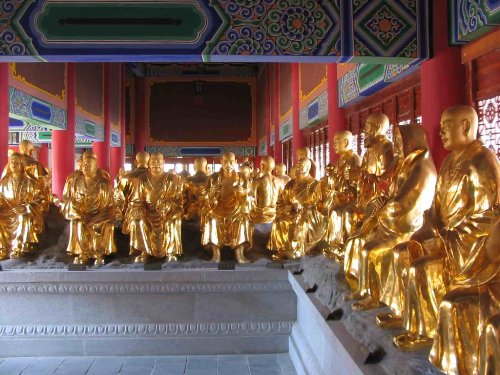
Hữu Trí Nhân,有智人, A wise man—Theo
định nghĩa nhà Phật, người trí là người luôn an trú trong giới luật,
luôn phát triển tâm thức và trí huệ, luôn nhiệt tâm và thận trọng. Con
người ấy luôn vượt thoát mọi phiền trược—According to the definition in
Buddhism, a wise man means a person who is always dwelling in virtues,
developing consciousness and understanding, ardent and sagacious. He
always succeeds in disentangling this tangle
Người Tu Lâu Năm: Seasoned practictioner.
Người Tu Theo Phật: Dharma practitioner.
Người Vô Lương Tâm: Unscrupulous people.
Người Xưa: People of the past.
Ngưỡng:
Nhìn lên—To look up respectfully.
Nằm ngữa nhìn lên: Lying with the face upward.
Ngưỡng Cửa: Threshold.
Ngưỡng Khẫu Thực: A monk earns his living (livelihood) by looking
up as an astrologer or a fortune-teller (one of the four heterodox
means of living).
Ngưỡng Mộ: To respect—To look up—To admire.
Ngưỡng Sơn,仰山, Nhìn lên núi: To
look up to the hills
Ngưỡng Sơn Huệ Tịch Thiền Sư: Zen Master Yang-Shan-Hui-Ji 807-883
or 814-891.
Ngưu Bì,牛皮,
Da trâu—Ox hide.
Đắp da trâu mà phơi dưới ánh nắng mặt trời sẽ càng ngày càng bị
cứng (giống như buộc râu rồng mà lặn xuống nước thì ngày càng bị siết
đau). Ví như phúc hữõu lậu của trời người luôn làm hại đến Tuệ mệnh của
pháp thân—Mortal happiness injures the wisdom-life of gods and men,
just as ox hide shrinks and crushes a man who is wrapped in it and
placed under the hot sun.
Ngưu Cẩu Ngoại Đạo,牛狗外道, Go-Vratika
(skt)—Kukkura-Vratika (skt)—Ngoại đạo sống khổ hạnh như trâu chó, một
trong sáu thứ khổ hạnh của ngoại đạo—Heretics who live as oxen or dogs,
one of the six heretic ascetic practices—For more information, please
see Lục Khổ Hạnh
Ngưu Dương Nhãn,牛羊眼, See Ngưu Dương Tâm
Nhãn
Ngưu Dương Tâm Nhãn: Chỉ là khả năng nhìn thấy hay tầm nhìn của các
loài trâu dê mà thôi—Only the eyes (vision or insight) of an oxen and
sheep.
Ngưu Đầu,牛頭, Đầu trâu—The ox-head
Ngưu Đầu Chiên Đàn,牛頭栴檀, Gosirsa-candana
(skt)
Ngưu Đàn Chiên Đàn,牛檀栴檀, Ngưu Đàn
Hương—Ox-head sandalwood
Xích Chiên Đàn: Loại gỗ chiên đàn từ núi Ngưu Đầu, nếu chà sát vào
thân có thể trừ lửa, thường được dùng để ngăn lửa. Tượng đầu tiên của
Đức Thích Ca Mâu Ni được làm bằng loại gỗ nầy—Red sandal-wood; said to
come from the ox-head mountains, and if rubbed on the body to make one
impervious to fire, generally protective against fire, curative of
wounds and generally medicinal. The first image of Sakyamuni was made
of this wood.
Ngưu Đầu Đại Vương,牛頭大王,
Vị hộ pháp tại tịnh xá Kỳ Thọ Cấp Cô Độc Viên—The guardian deity of
the Jetavana monastery (Kỳ đà).
Tiền kiếp tái sanh của Phật Dược Sư: An incarnation of the
Bhaisajyaraja Buddha.
Ngưu Đầu Sơn,牛頭山, Gosrnga (skt)—Núi
Ngưu Đầu, còn gọi là Ngưu Giác Sơn, ở phía nam cách thành Hòa Điền
(Khotan) khoảng 3 dậm. Nơi mà bây giờ vẫn gọi như vậy—A mountain 13 li
from Khotan. One of the same name exists in Kiangning in Kiangsu, which
gave its name to a school of Niu-T’ou Shan-Fa or Niu-T’ou Sung; its
fundamental teaching was the unreality of all things, that all is dream
or illusion
Ngưu Đầu Sơn Pháp: Ngưu Đầu Thiền—Ngưu Đầu Tông—Niu-T’ou
Shan-Fa—See Ngưu Đầu Thiền, and Pháp Dung.
Ngưu Đầu Thiền: Ý của Ngưu Đầu Tông là xem các pháp không thực, như
mộng huyễn—Meditation on the unreality of all things (all is dream or
illusion).
Ngưu Giác,牛角,
Sừng trâu: Ox-horns.
Đồng nghĩa cho những gì bằng phẳng—A synonym for things that are
even, or on a level.
Ngưu Giác Nhứt Xúc: Sừng trâu vừa chạm áo cà sa thì trâu liền được
vãng sanh nơi cõi trời (chúng sanh dù chỉ tiếp xúc với đạo Phật dù cạn
cợt vẫn được ảnh hưởng tốt của đạo Phật mà tới được thiện đạo)—The ox
that by merely touching a monk’s robe with its horn was transformed
into a deva.
Ngưu Giác Sa La Lâm: Một tên khác của rừng Ta La Song Thọ, nơi cây
song đôi giống như sừng trâu, mọc gần thành Câu Thi Na, nơi mà dưới gốc
những cây nầy Đức Phật đã thuyết Kinh Niết Bàn. Người ta nói rằng Ngài
đã nhập Niết Bàn dưới những tàng cây nầy—Another name for Sala Tree
Grove—Ox-horn sala grove, said to be a couple of sala or teak tres
shaped like ox-horns, which grew near Kusinagara, under which the
Buddha preached the Nirvana Sutra. He is reported to have entered
Nirvana in a grove of eight sala trees standing in pairs.
Ngưu Giác Sơn,牛角山, See Ngưu Đầu Sơn
Ngưu Giới,牛戒, Theo Đại Trí Độ Luận
thì Giới Trâu là sống như loài trâu, cúi đầu gặm cỏ, như sự tin tưởng
của một số giáo phái ngoại đạo, rằng kiếp sau trâu sẽ đầu thai làm
trời—According to the Sastra on the Prajna Sutra, to live as a cow,
eating grass with bent head, as certain Indian heretics are said to
have done, in the belief that a cow’s next reincarnation would be in
the heaven
Ngưu Hóa Châu,牛貨洲, Godaniya (skt)—Tây
Ngưu hóa châu, một trong bốn châu chánh, nơi có nhiều trâu bò, nên dùng
trâu bò để trao đổi hàng hóa—Godaniya—The western of the four
continents into which every world is divided, where oxen are the
principal product and medium of exchange.
Ngưu Hoàng Gia Trì,牛黃加持, Ngưu Vương Gia
trì—Một loại bùa dùng cho đàn bà hiếm muộn. Nếu người nữ không con, lấy
ngưu hoàng mà viết vào vỏ cây hoa mà đeo, thì ít lâu sau sẽ có con
(theo Kinh Thất Câu Đề Phật Mẫu Sở Thuyết Chuẩn Đề Đà La Ni)
—Cow-bezoar aid, a charm used for childless women to obtain children.
The four words should be written with ‘cow-bezoar’ on birch-bark and
carried on the person.
Ngưu Lư Nhị Nhủ: Hai loại sữa, sữa bò và sữa lừa, màu sắc giống
nhau, nhưng chất lượng khác nhau; sữa bò thì thành phó mát, còn sữa lừa
thì thành phân. Ví như Phật pháp và pháp của ngoại đạo vậy—The milk of
cow and ass, the one turns to ‘curd,’ the other to ‘dung.’ They are
alike in appearance, but fundamentally different, as is the case with
the Buddha’s teaching and that of outsiders.
Ngưu Mao Trần,牛毛塵, Go-Rajas (skt)—Số
lượng bụi ở trên đầu lông trâu gấp bảy lần số lượng bụi ở trên đầu lông
trừu hay dê (Dương Mao Trần)—The amount of dust that can rest on the
top of a cow’s hair (seven times of that on a sheep’s)
Ngưu Phẩn,牛糞, Phân trâu bò—Gomaya
(skt)—Phong tục Ấn Độ cho rằng phân trâu là thanh tịnh nhứt. Mật giáo
dùng phân trâu để trét bàn thờ—Cow-dung, considered in India as clean
and cleansing; used by the esoterics for cleansing the altar.
Ngưu Phẩn Chủng,牛糞種, Vị thủy tổ của
dòng họ Thích Ca sanh ra trong bãi phân trâu trong vườn mía—The first
Gotama ancestors of Sakyamuni, who is reputed to have sprung from
cow-dung in the Sugar-cane garden, probably a mere tradition that the
family sprung from herdsmen.
Ngưu Tích,牛跡, Gavampati (skt)
Dấu trâu: Ox-tracks.
Phật pháp: The teaching of the Buddha or of the royal bull.
Ngưu Tích Bỉ Khâu,牛跡比丘, Kiều Phạm Ba
Đề—Ngưu Vương tôn giả, một đệ tử của Phật Thích Ca—The bhiksu
Gavampati, said to have been a disciple of Sakyamuni
Ngưu Vương,牛王, Từ ngữ ám chỉ Đức
Phật—The king of bulls, a term applied to the Buddha
Ngưu Vương Gia Trì: See Ngưu Hoàng Gia Trì.
Ngưu Vương Tôn Giả,牛王尊者, See Ngưu Vương
Ngưu Xa,牛車, Xe trâu, một trong
những cỗ xe cứu độ—Bullock cart—One of the vehicles of salvation
** For more information, please see Tam Xa and Hỏa Trạch.